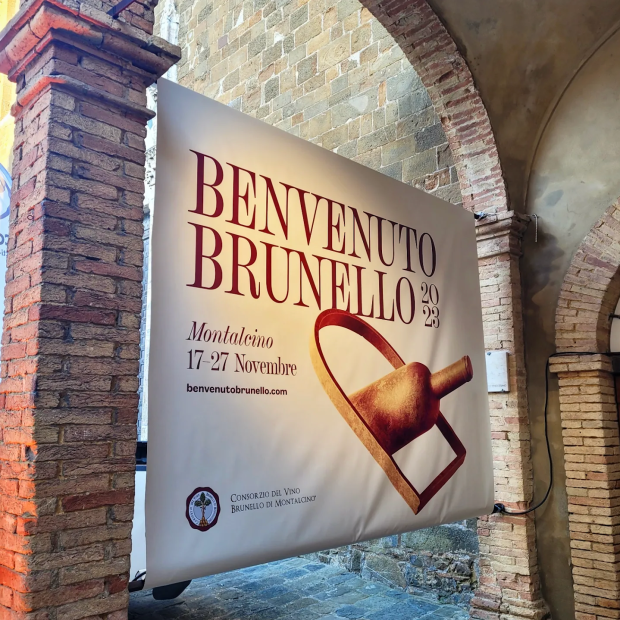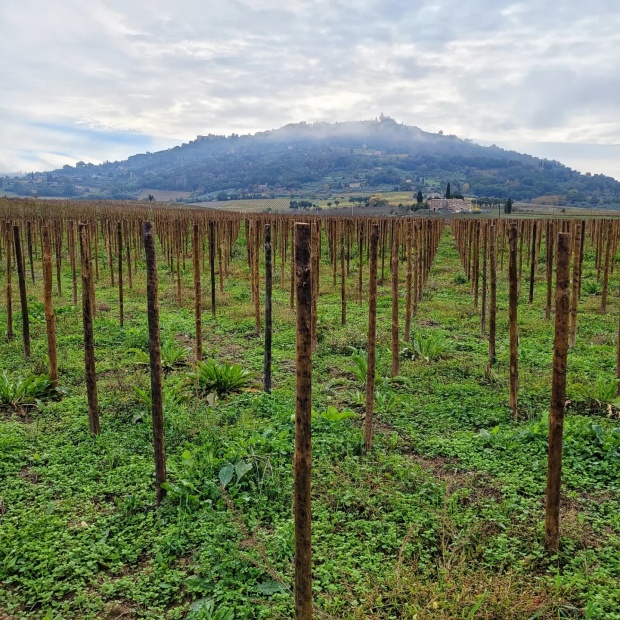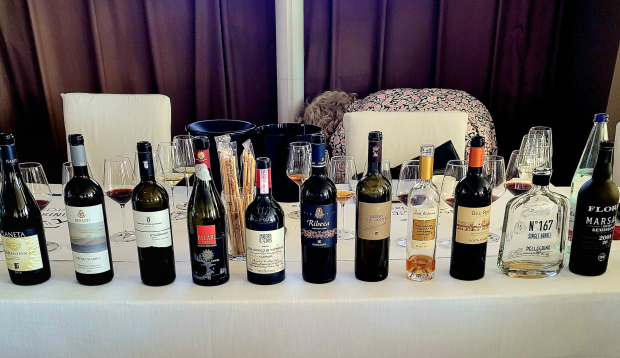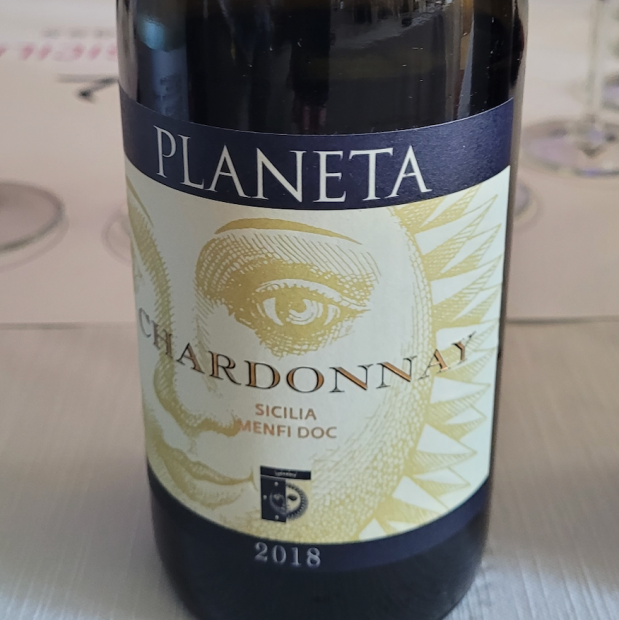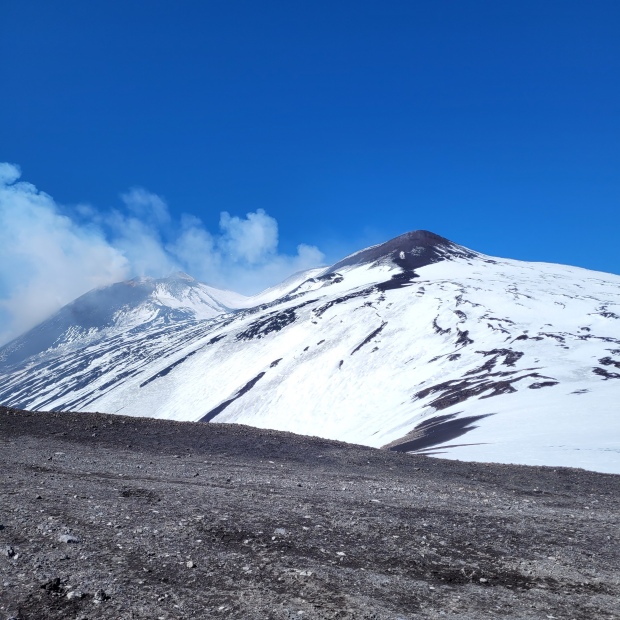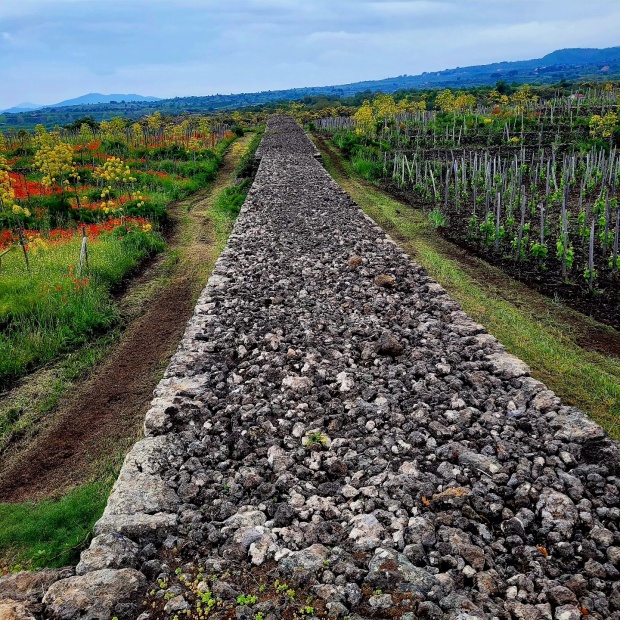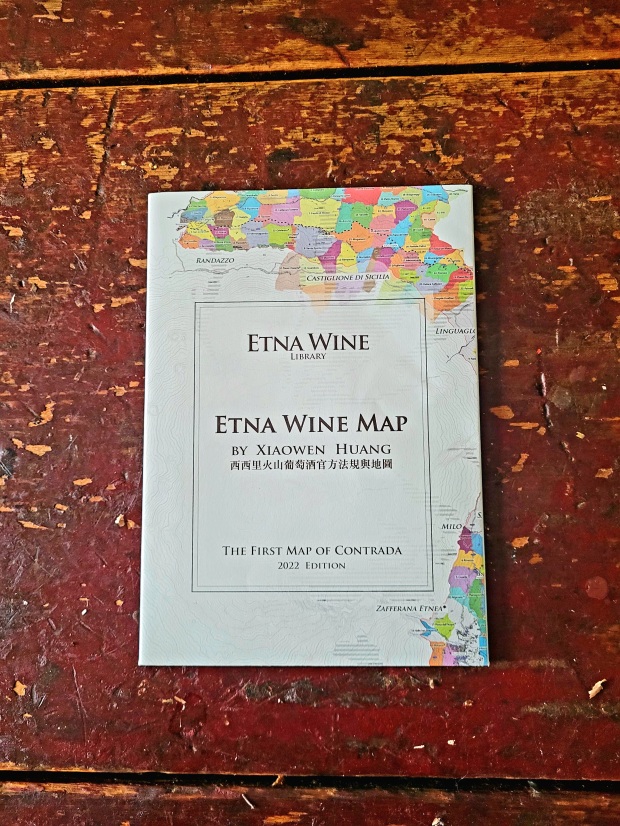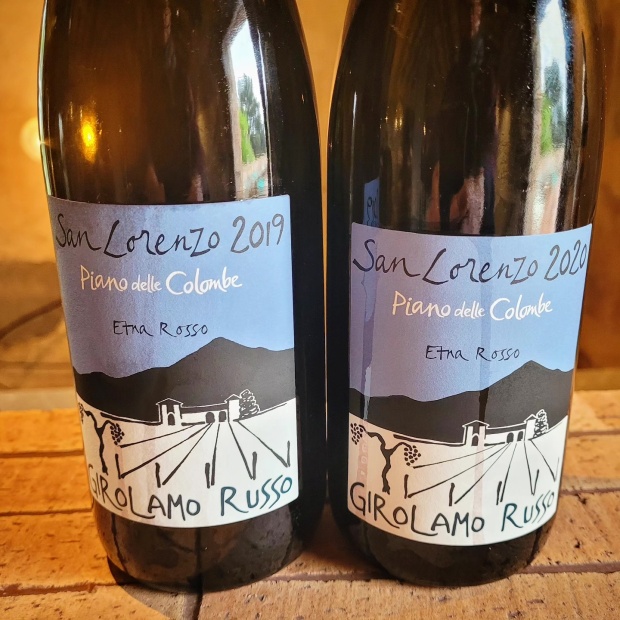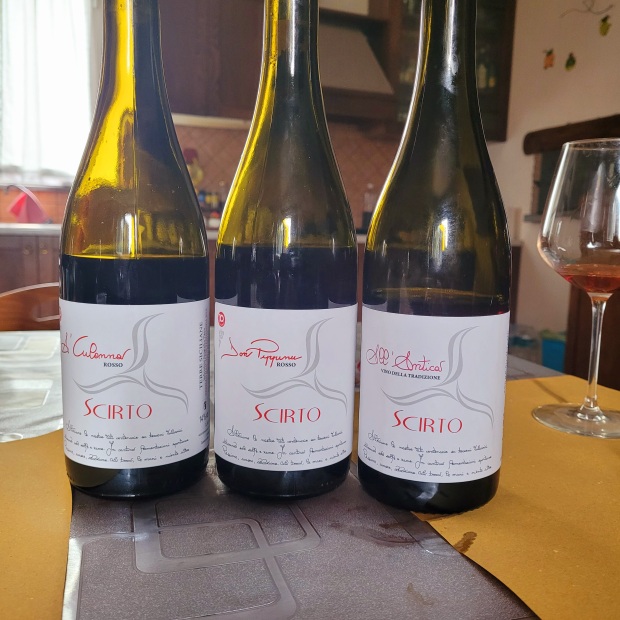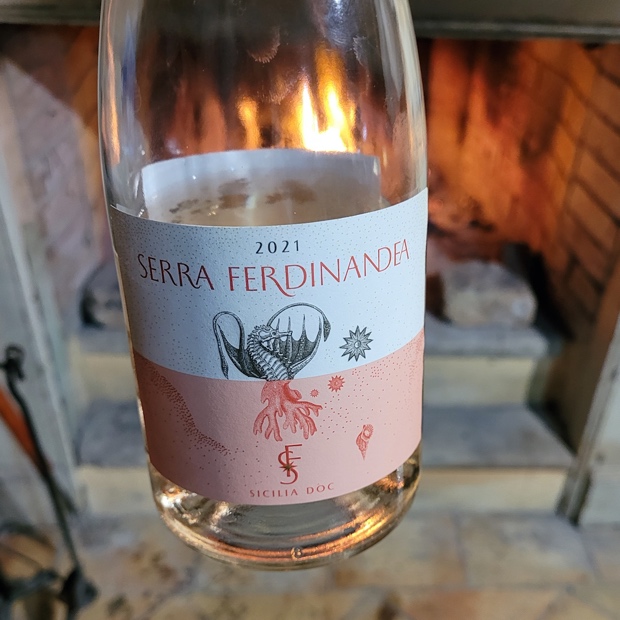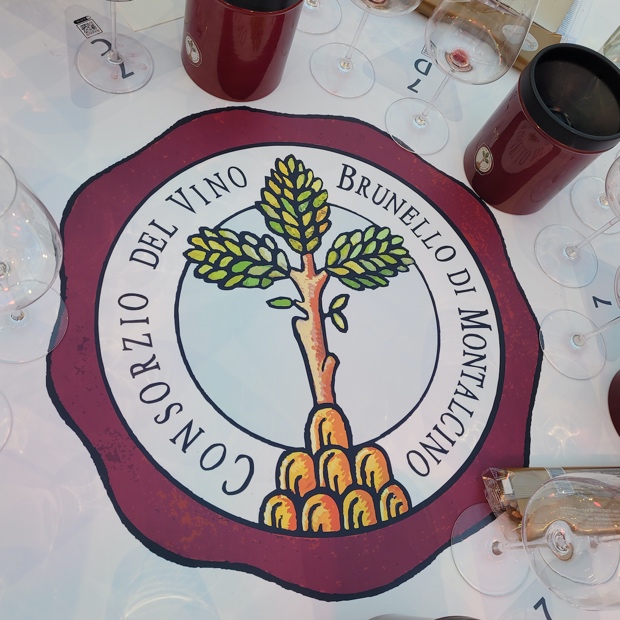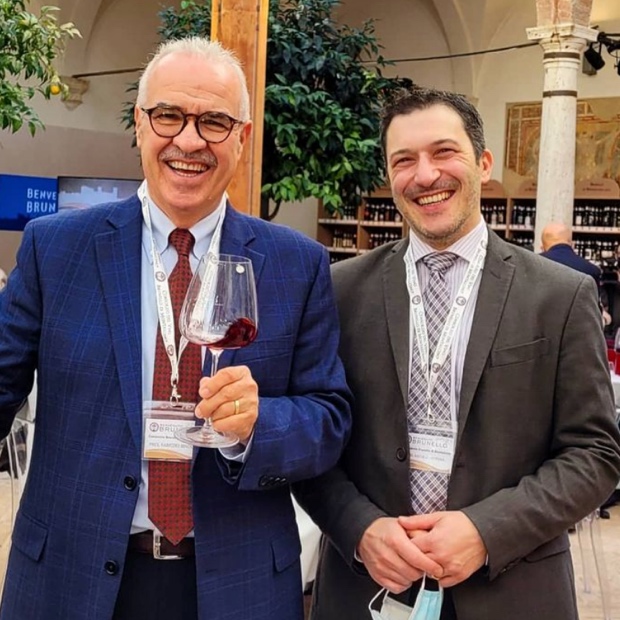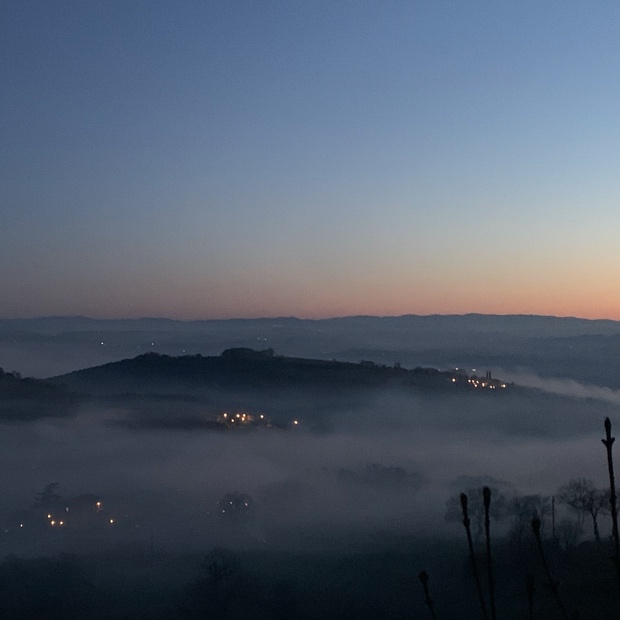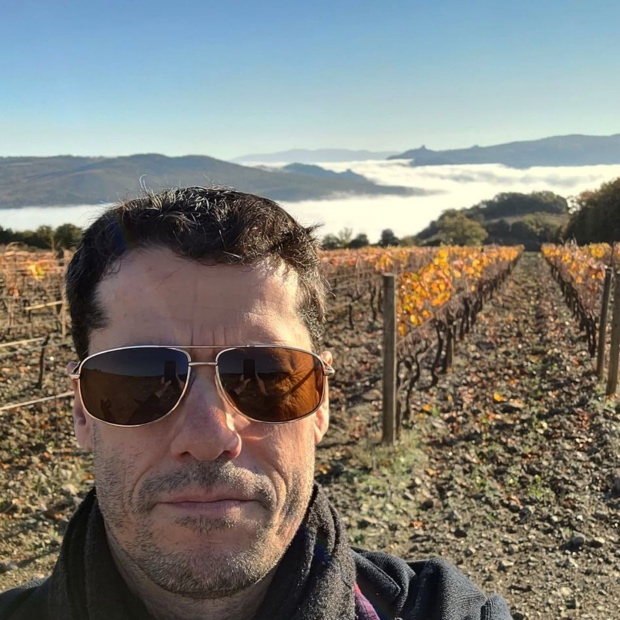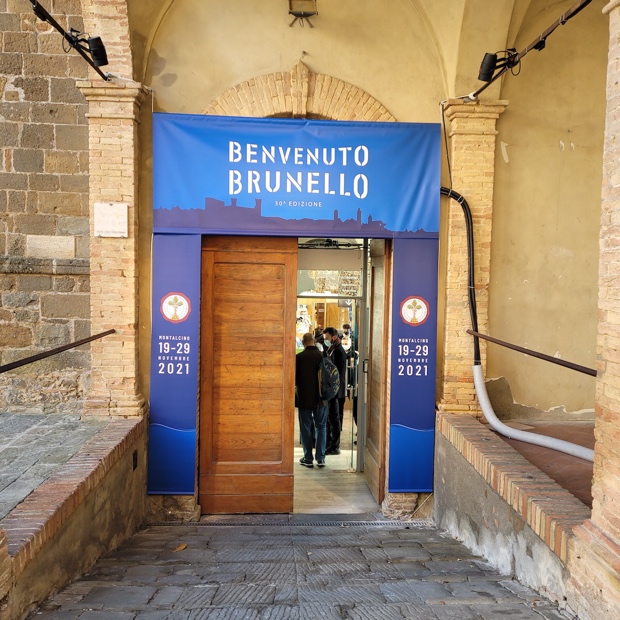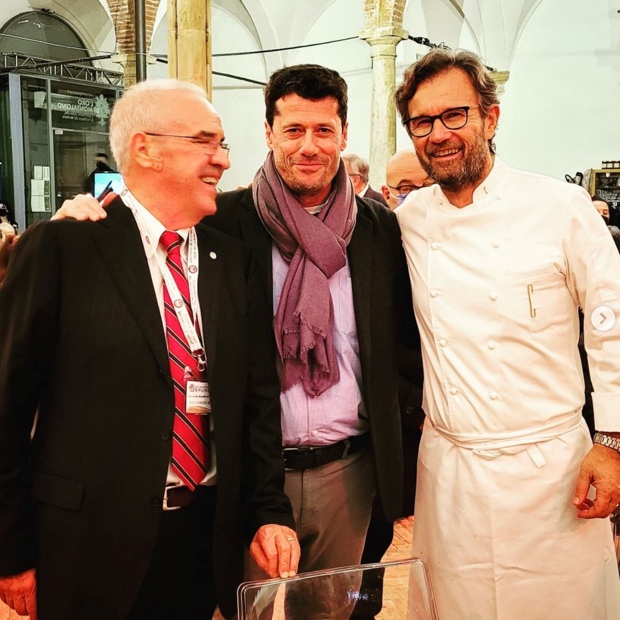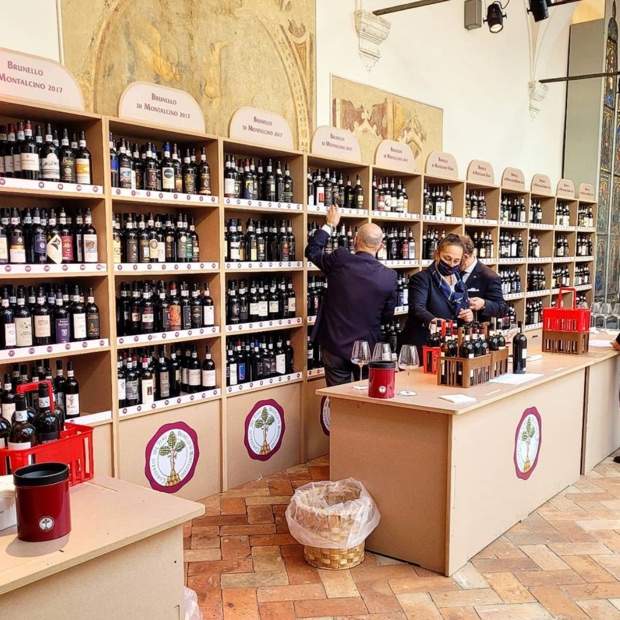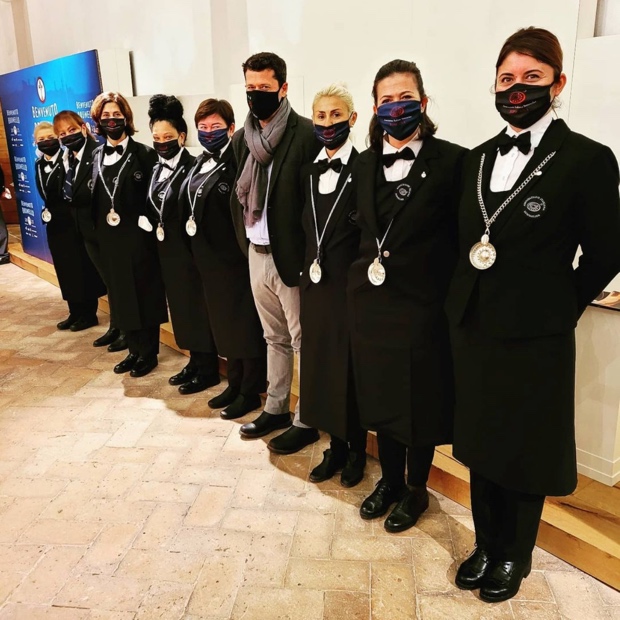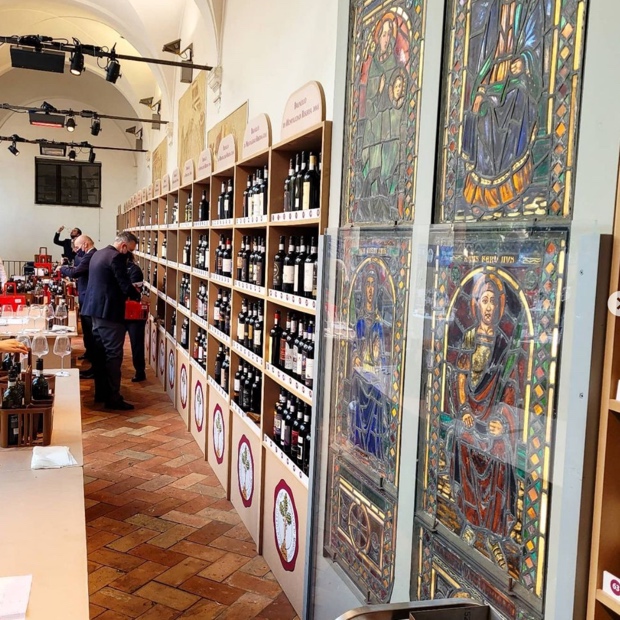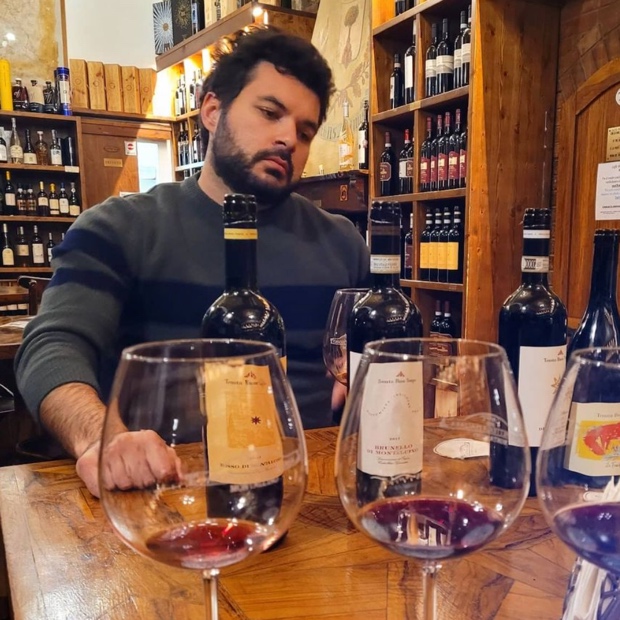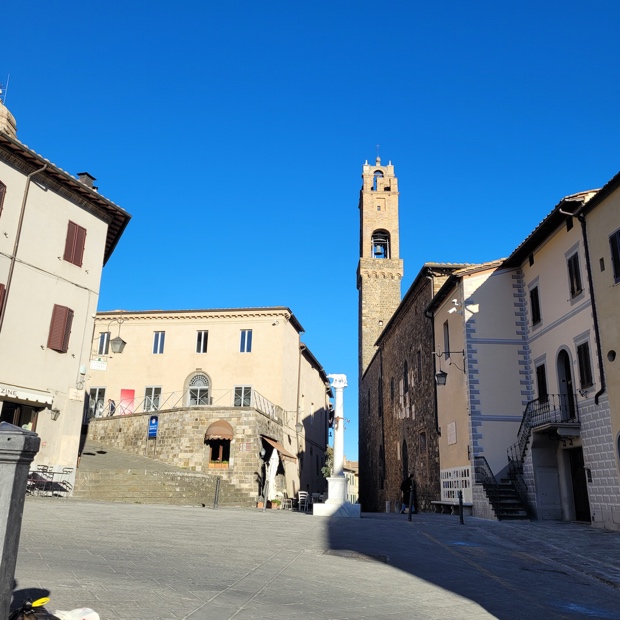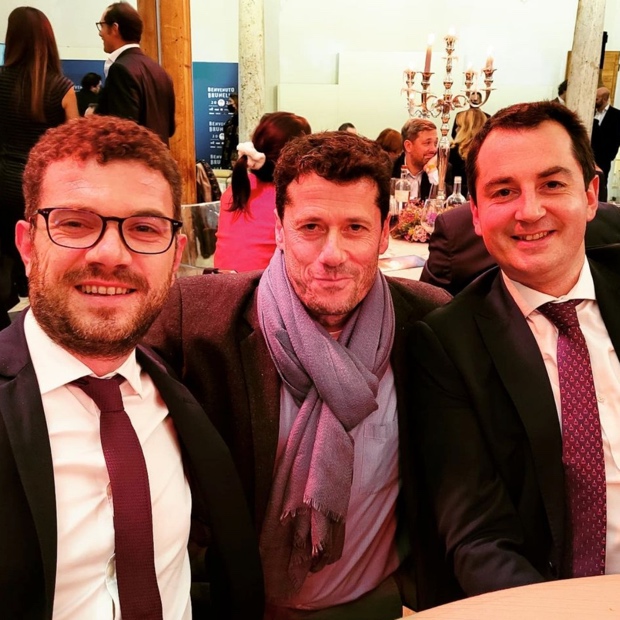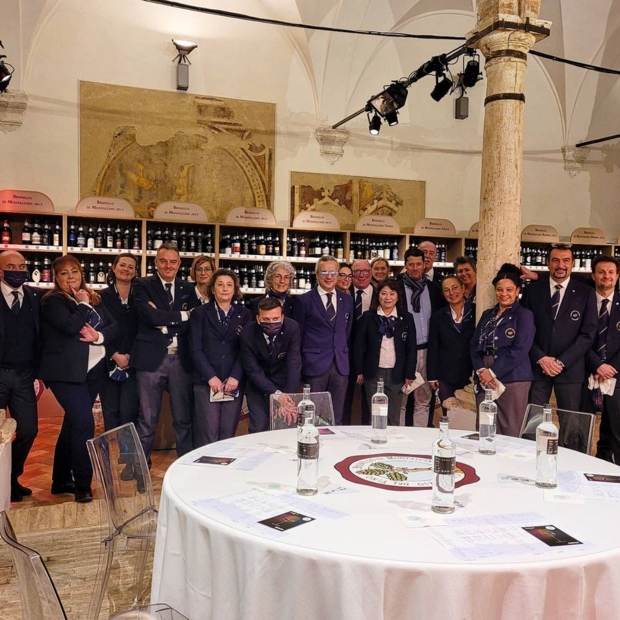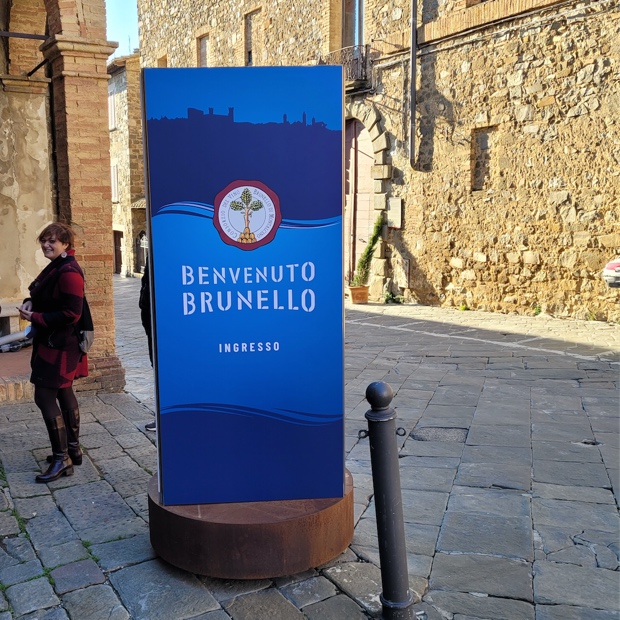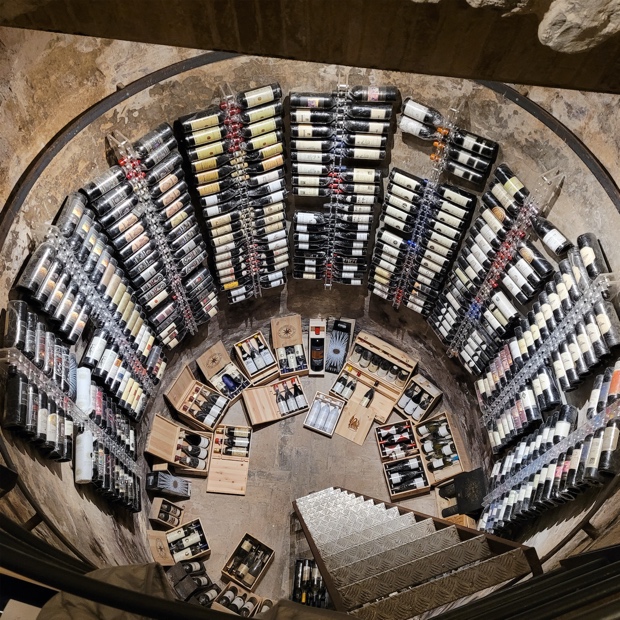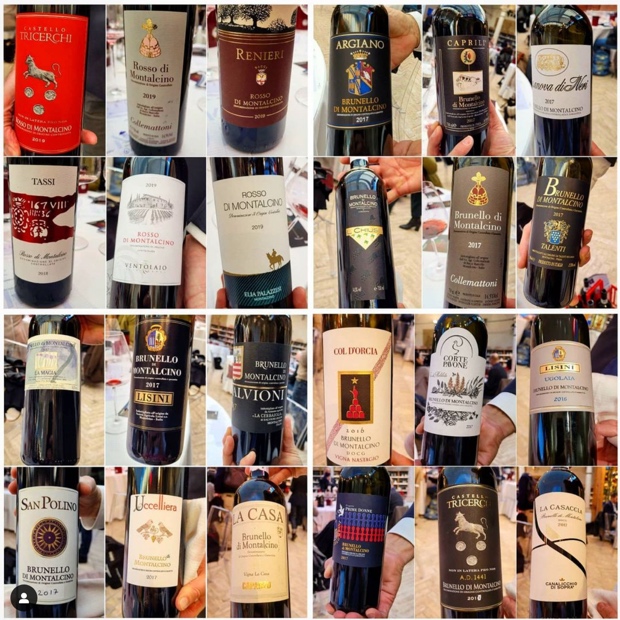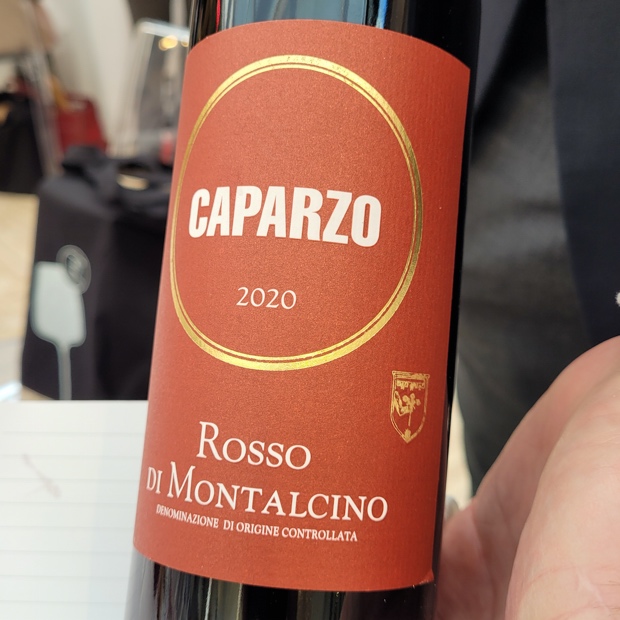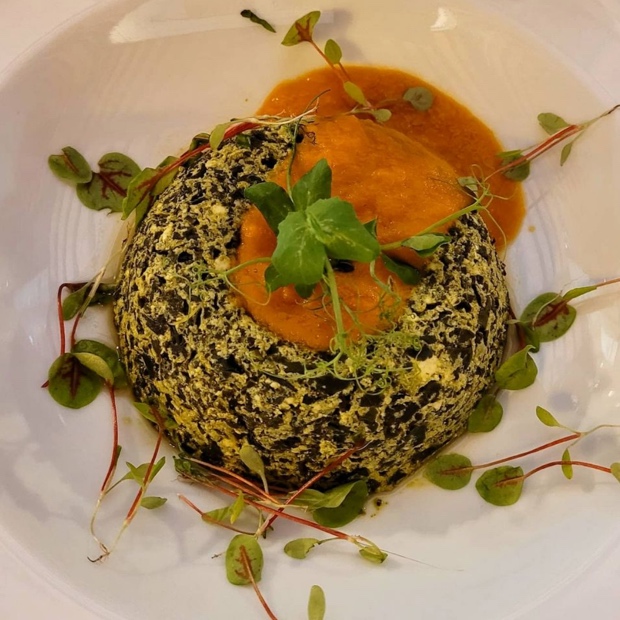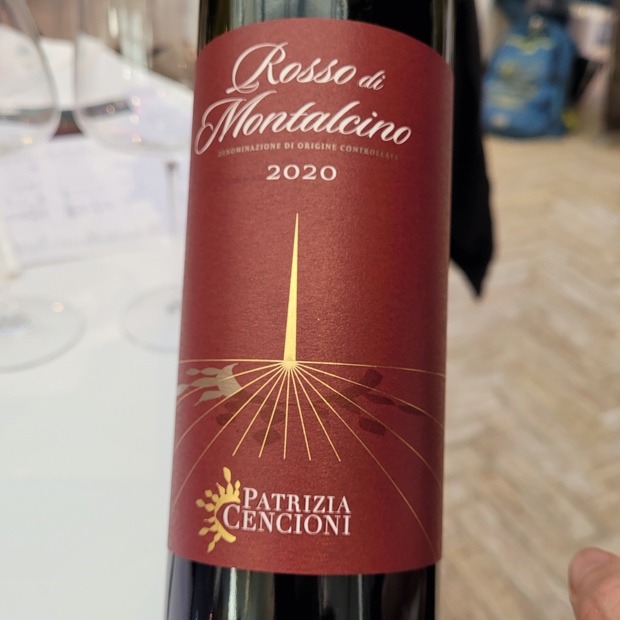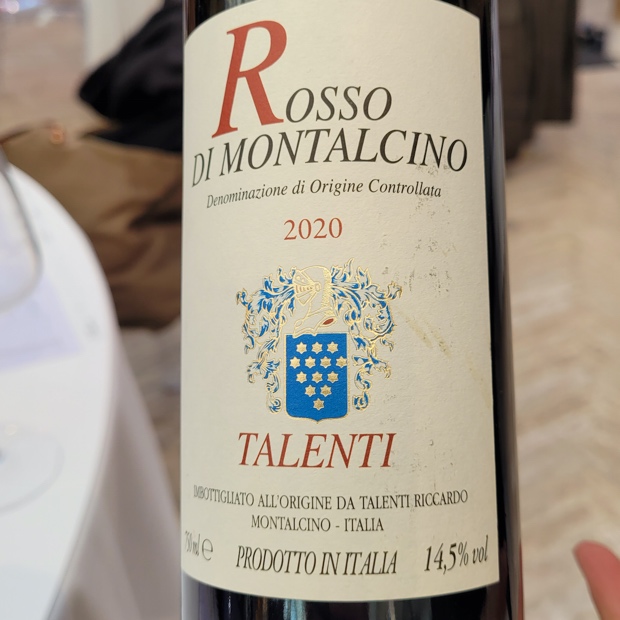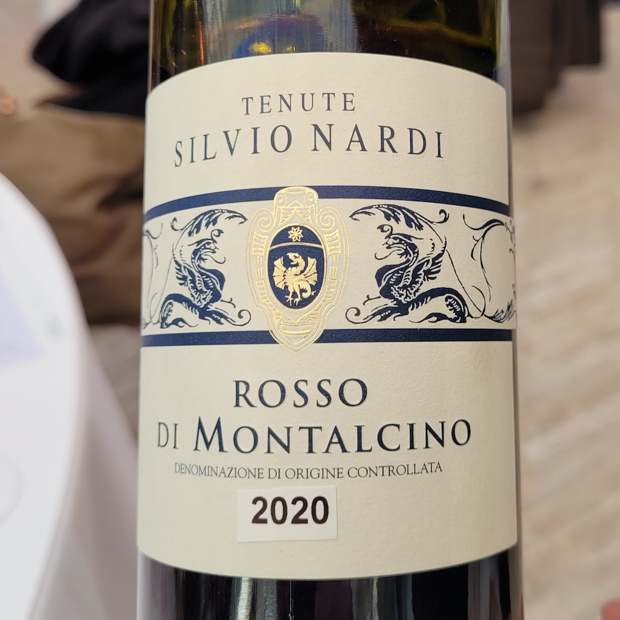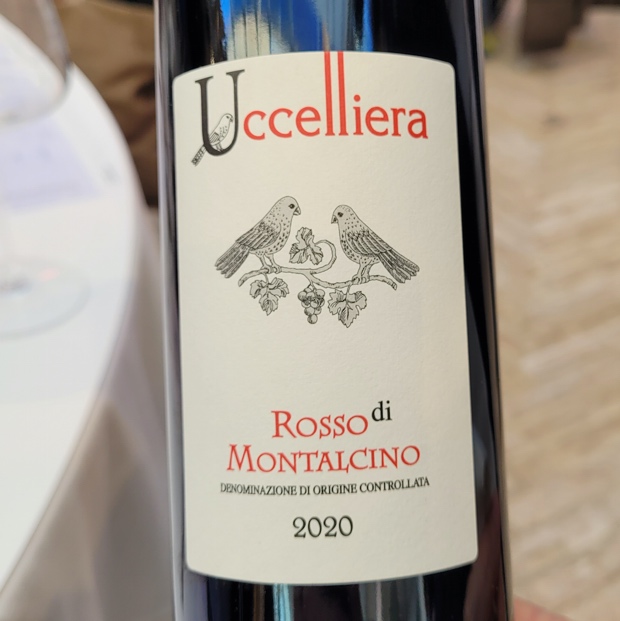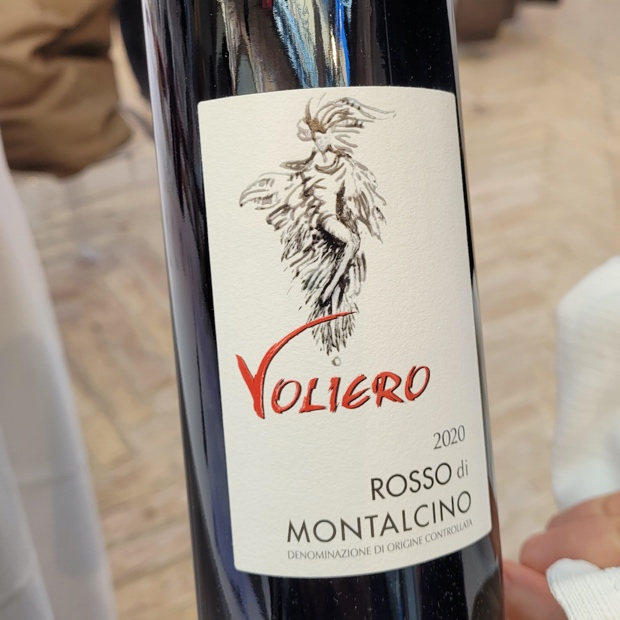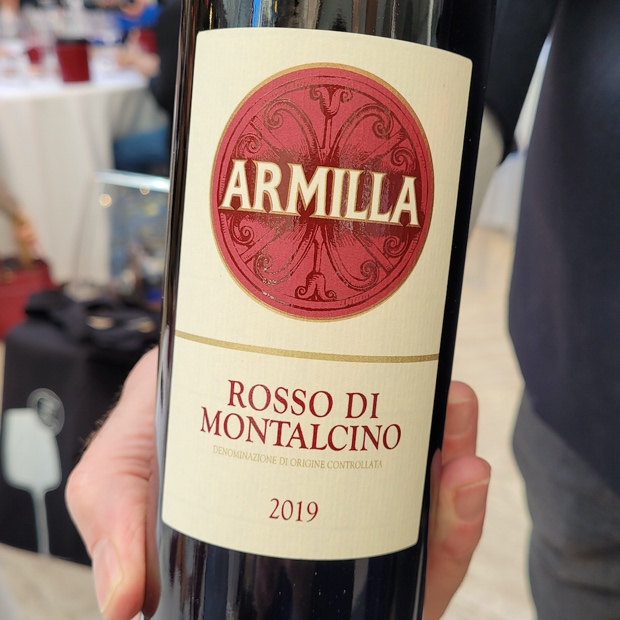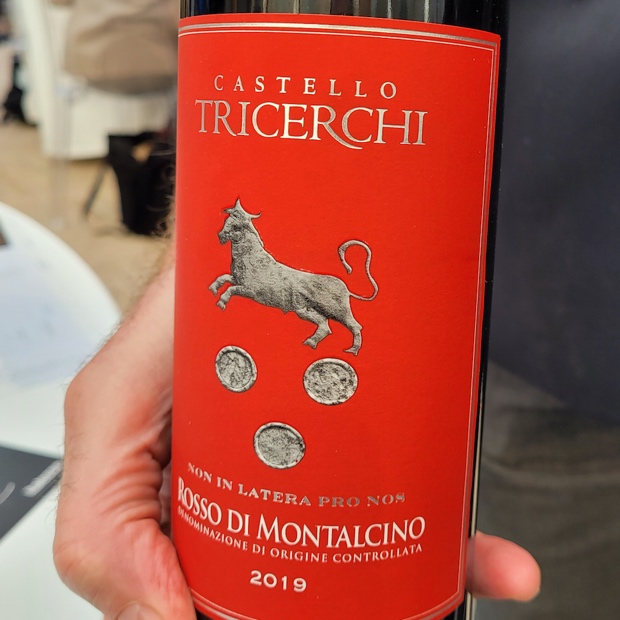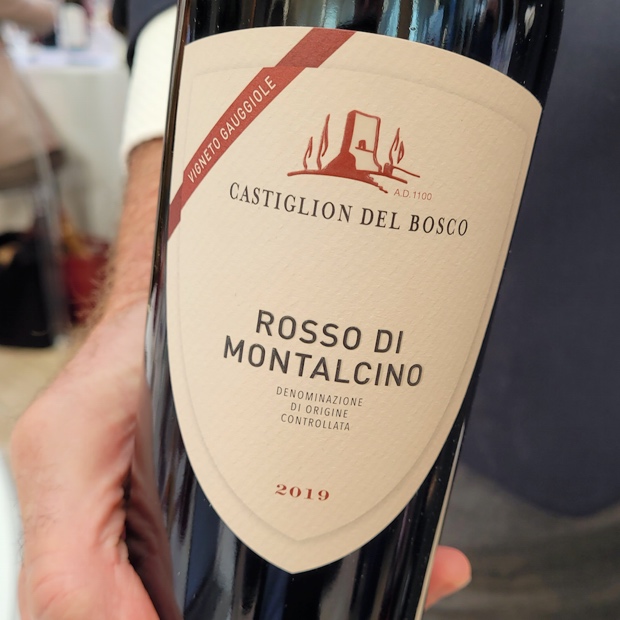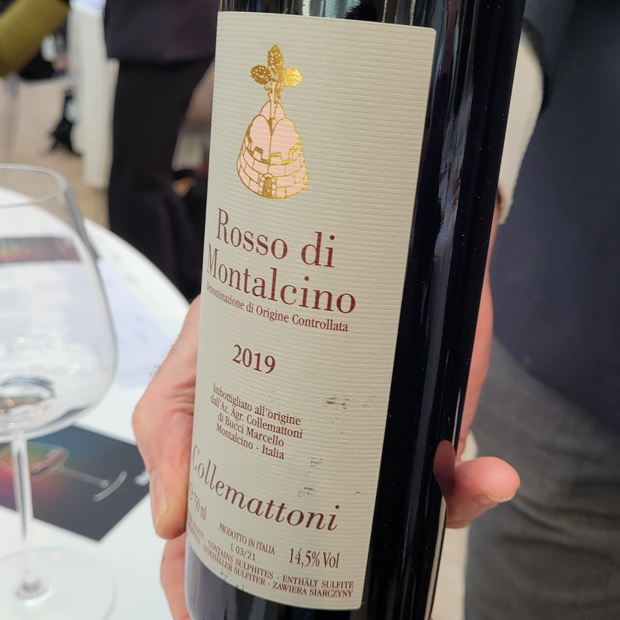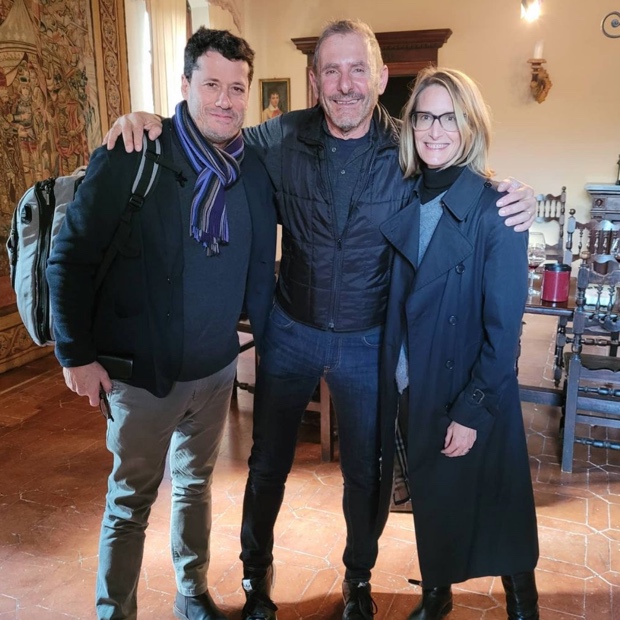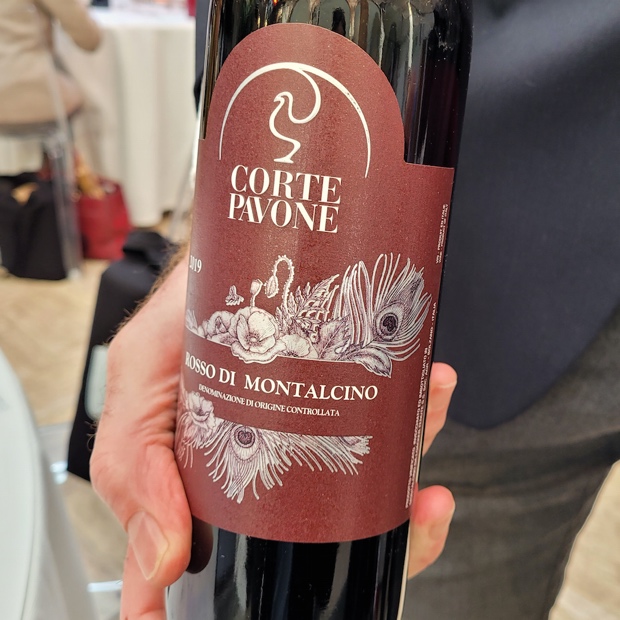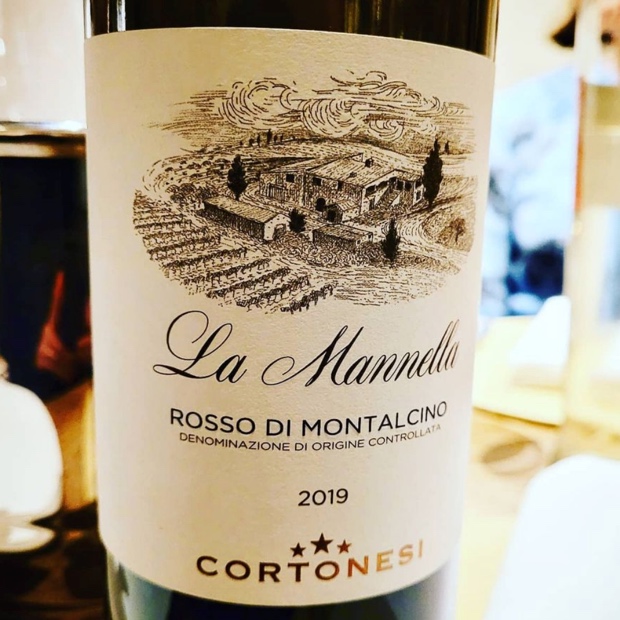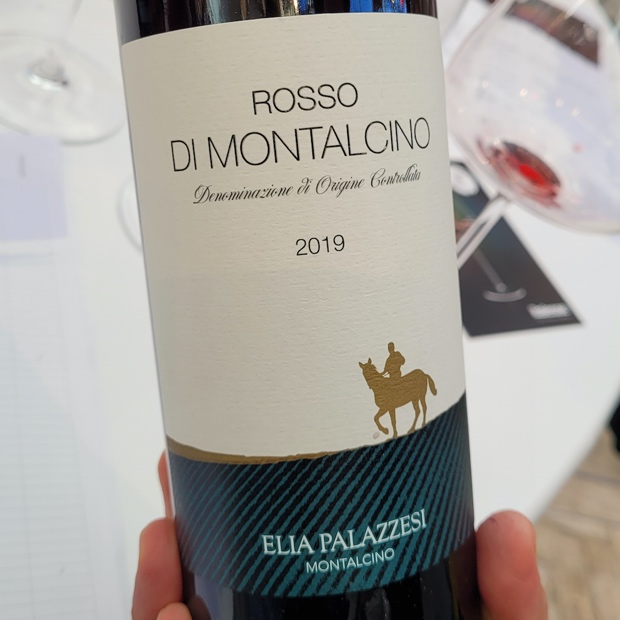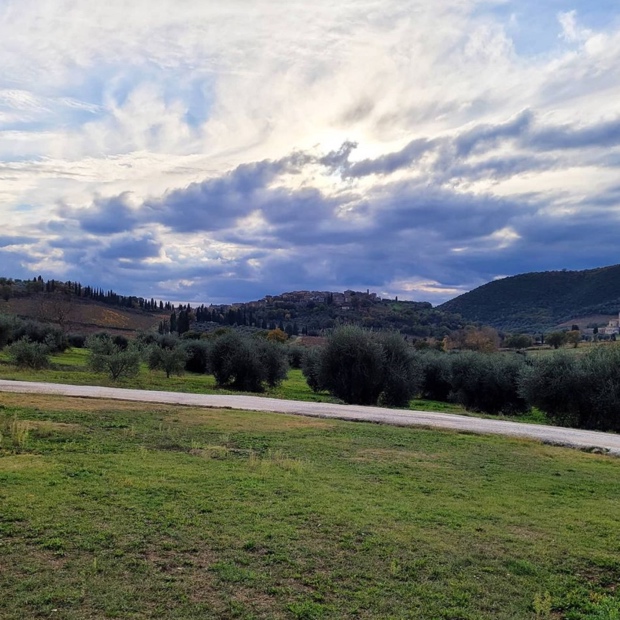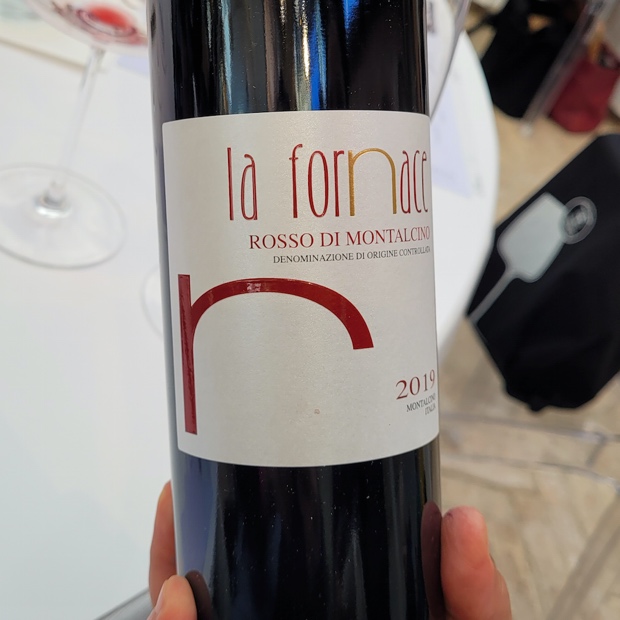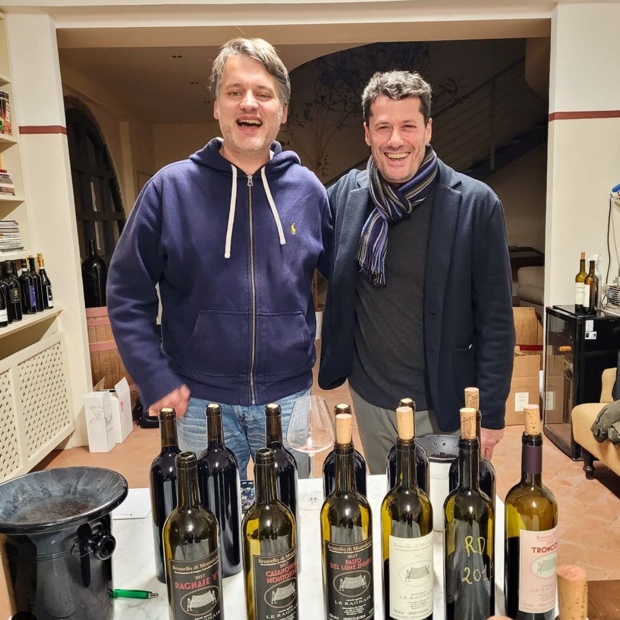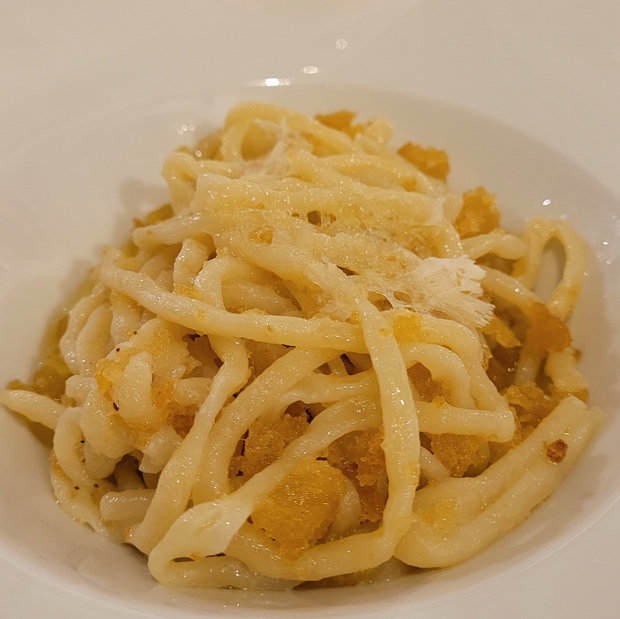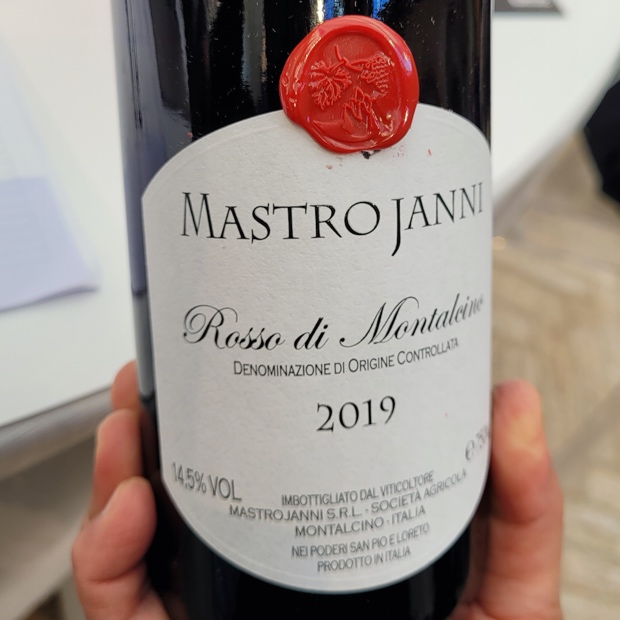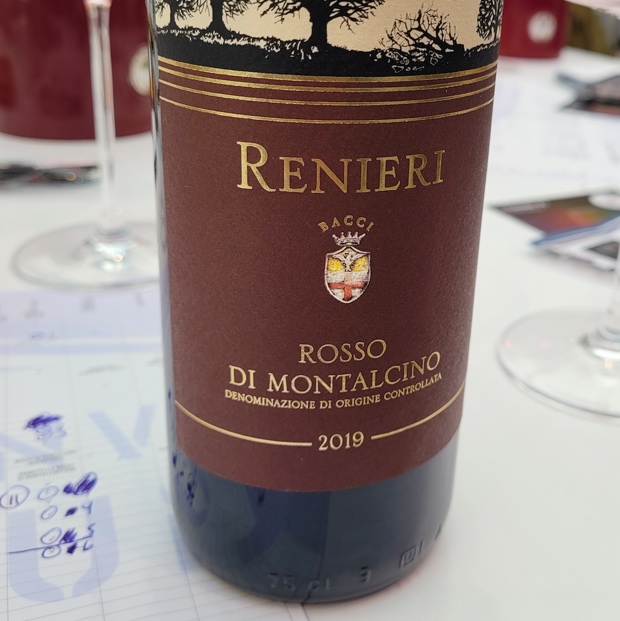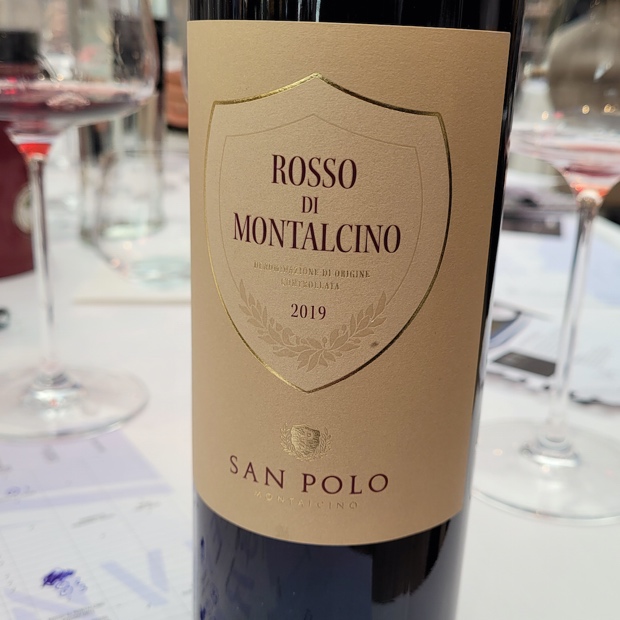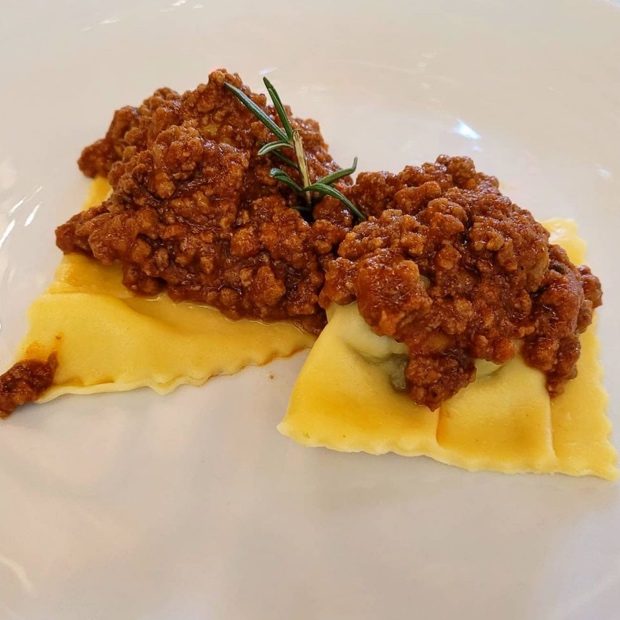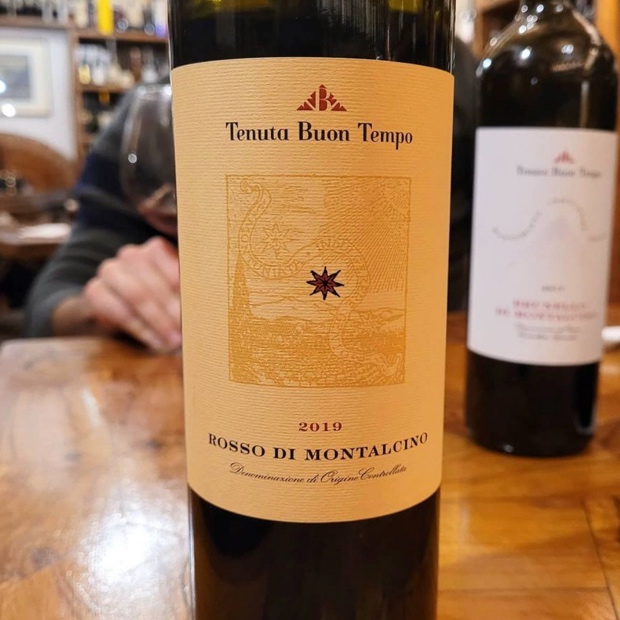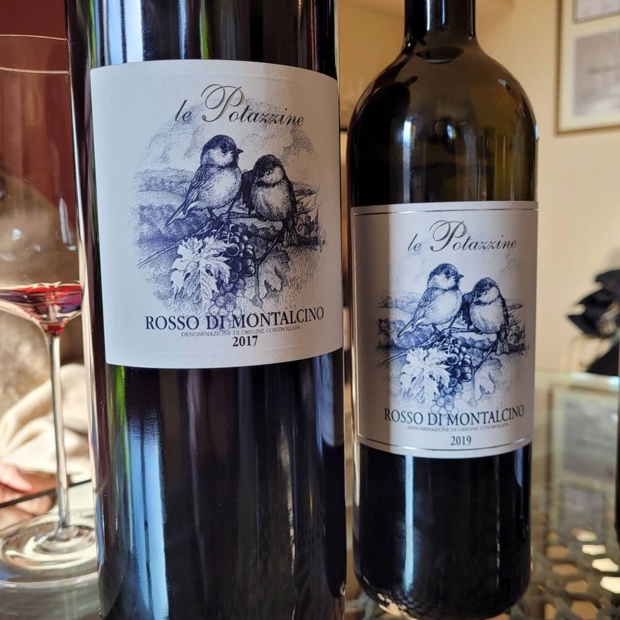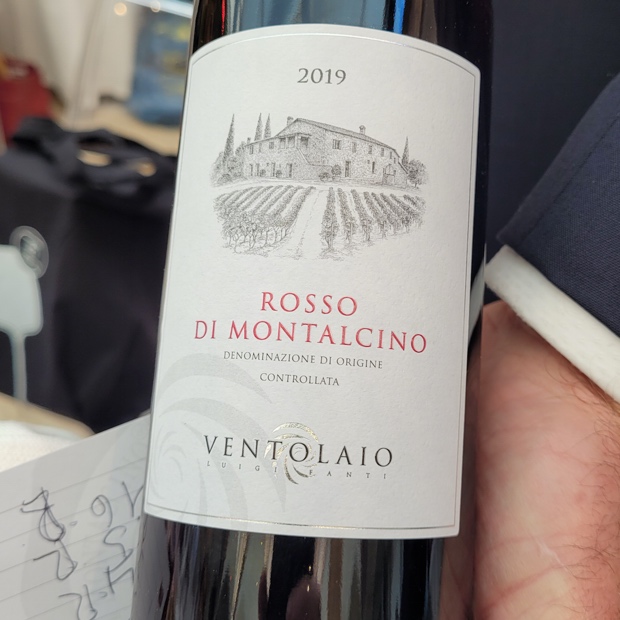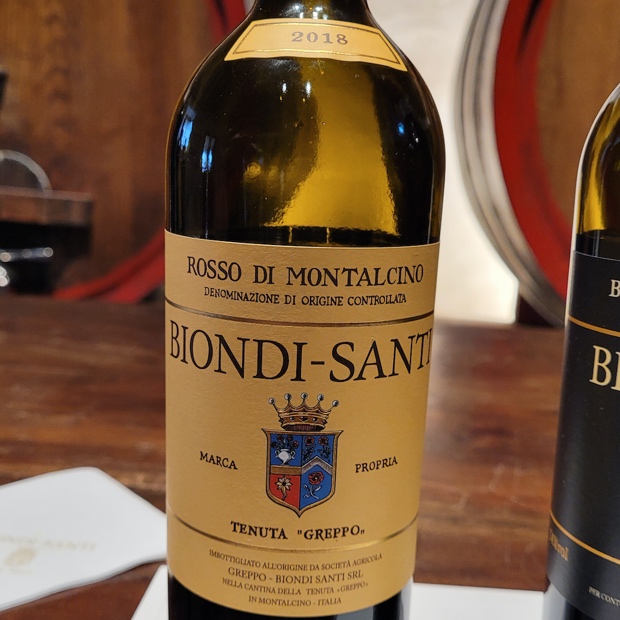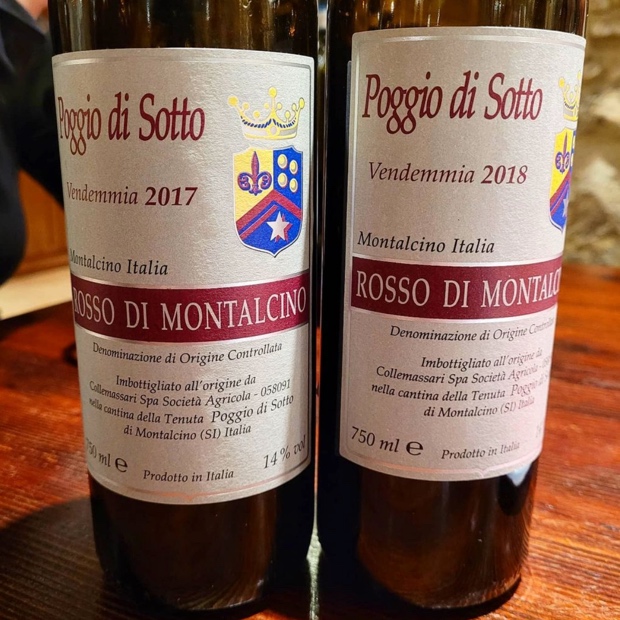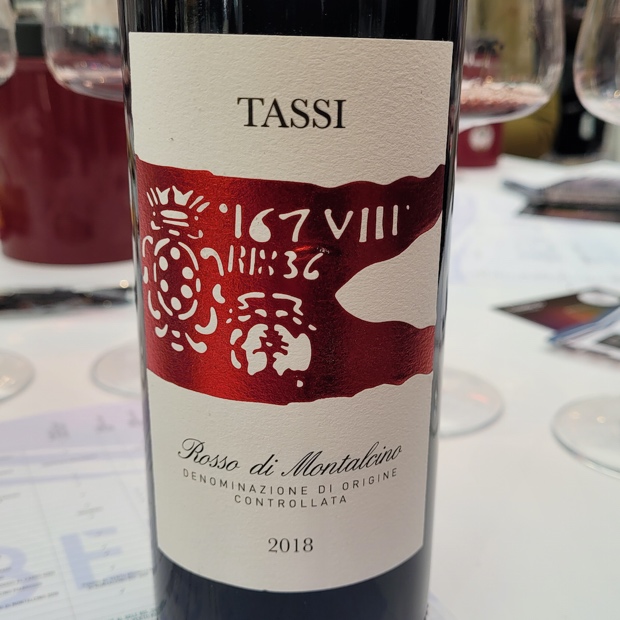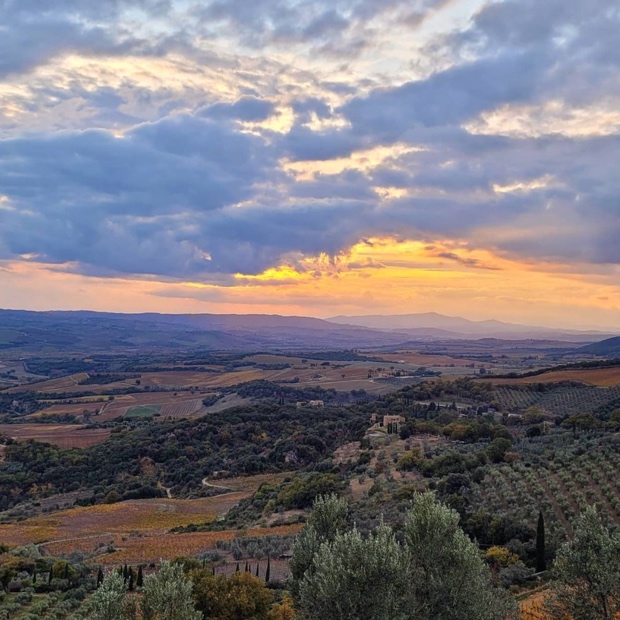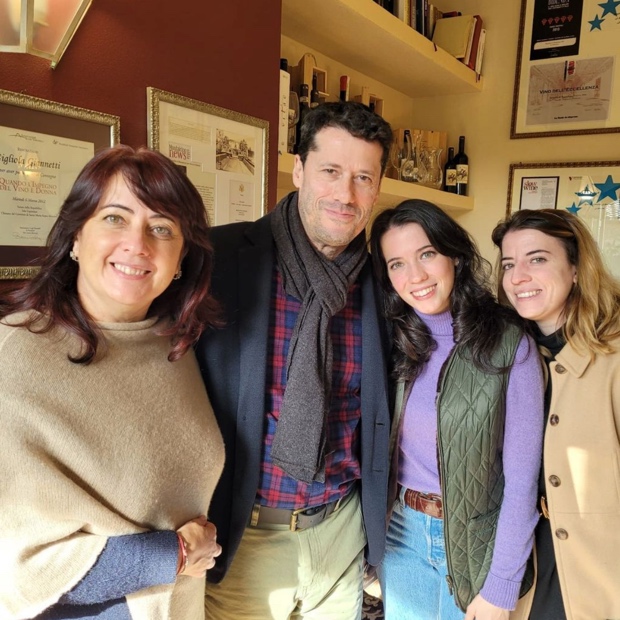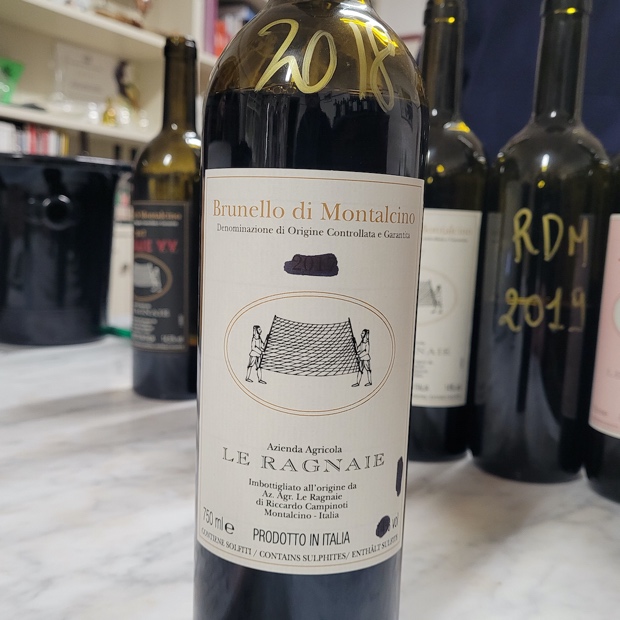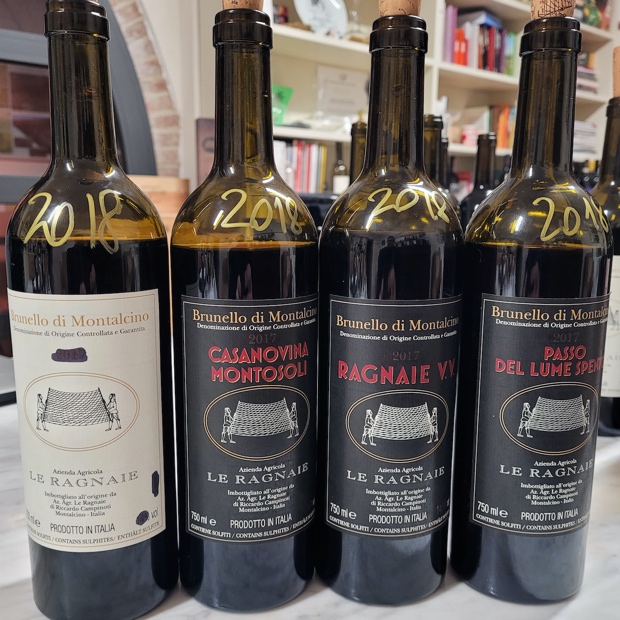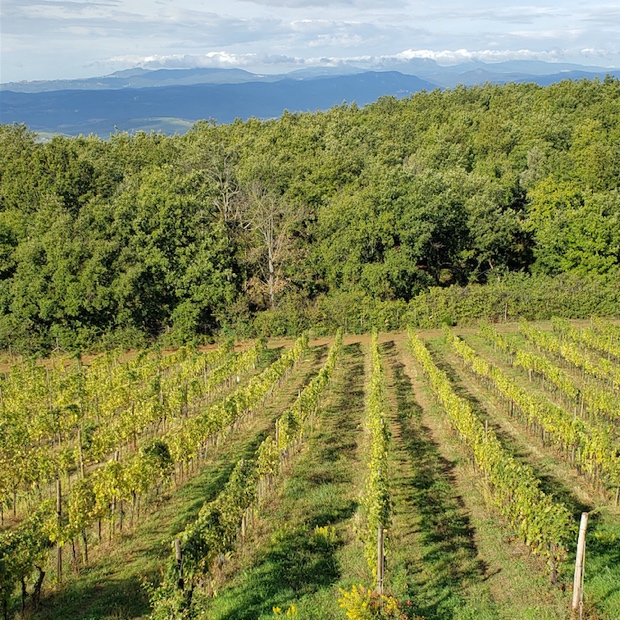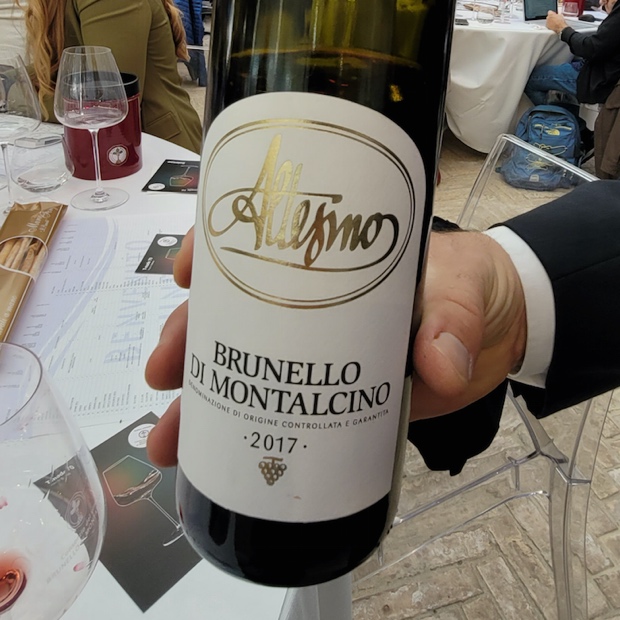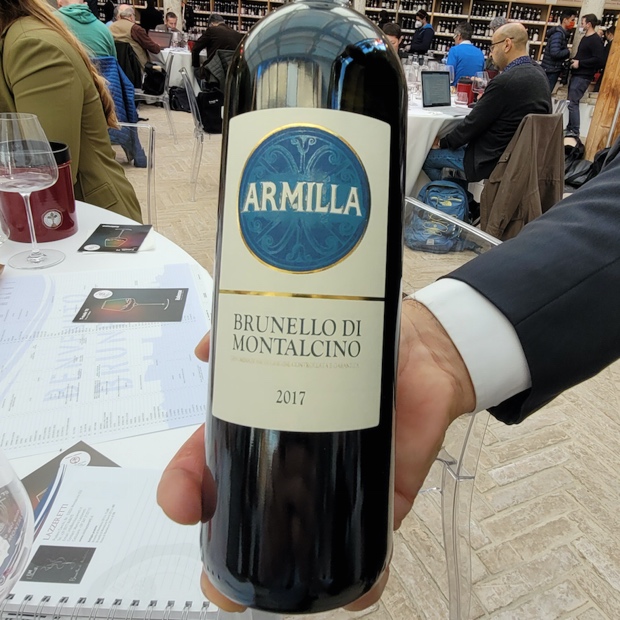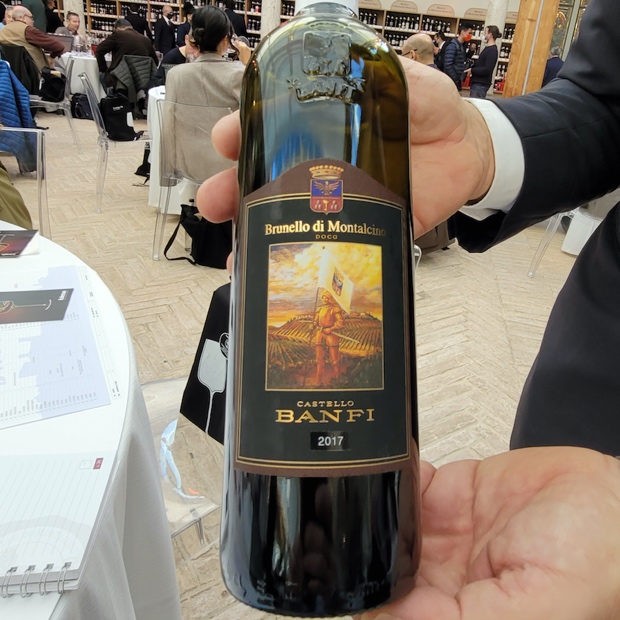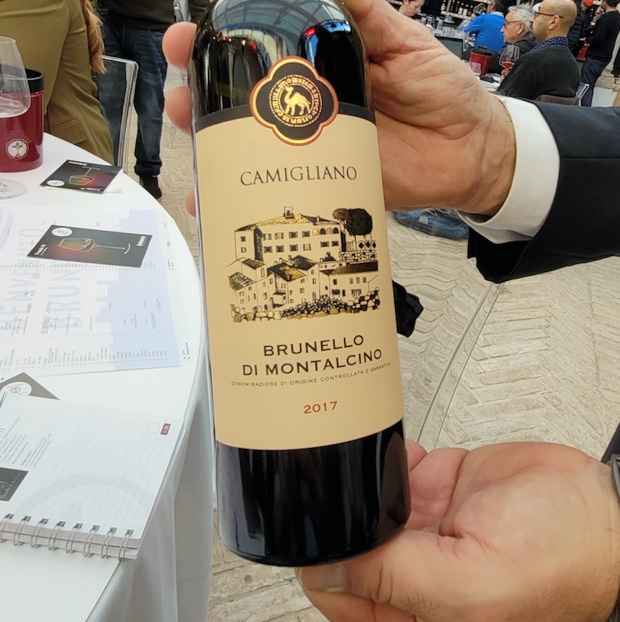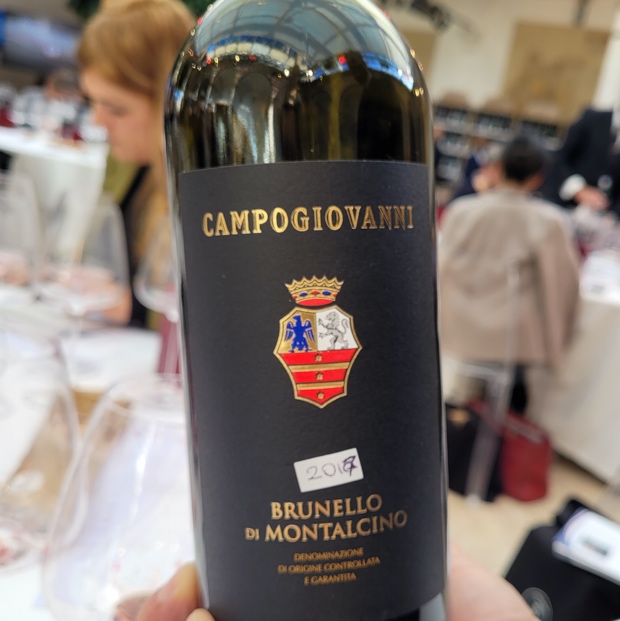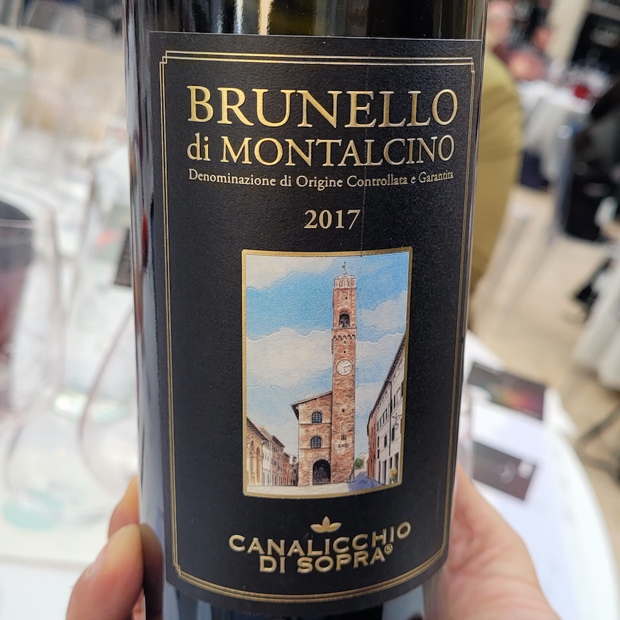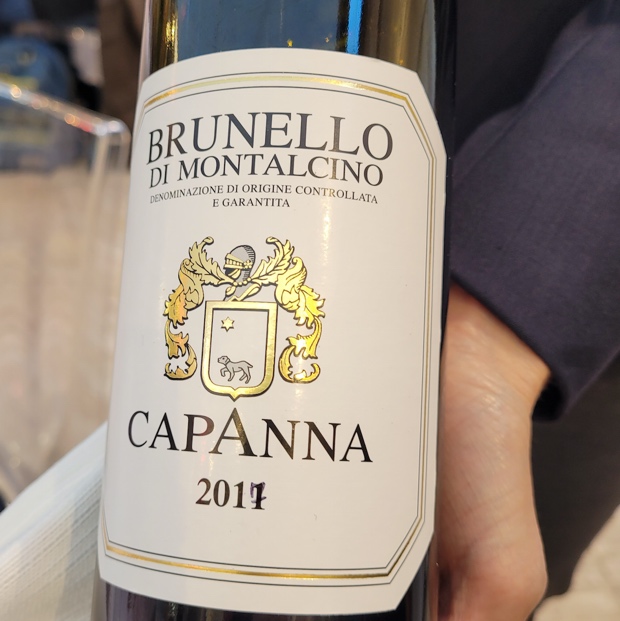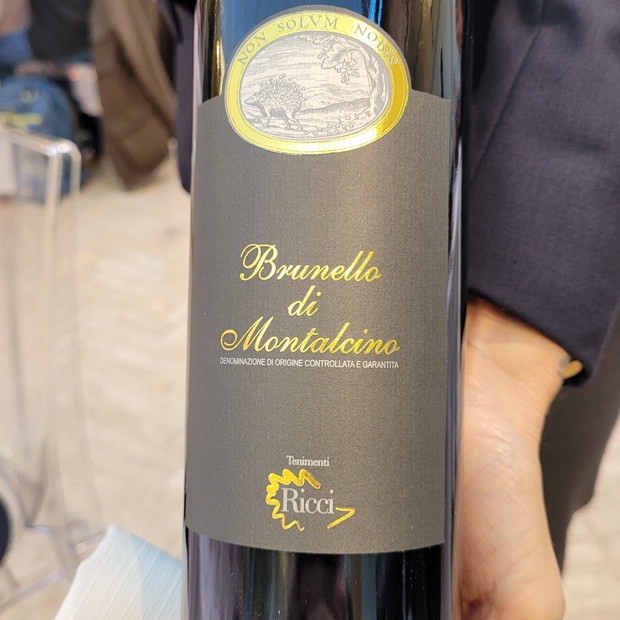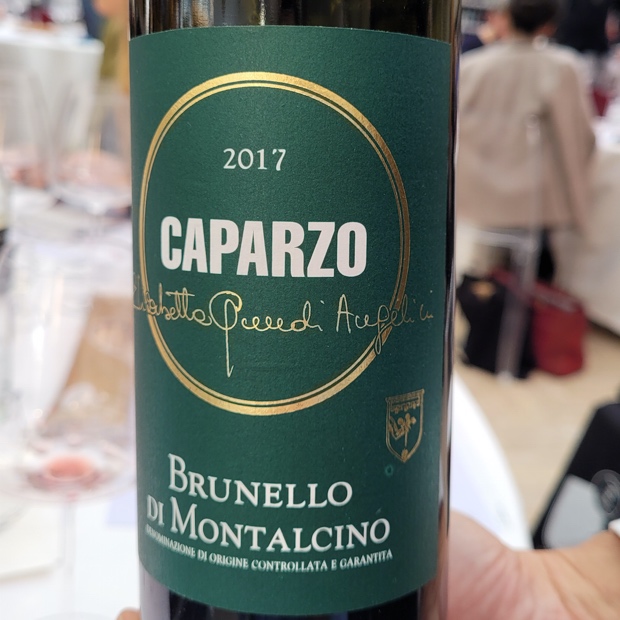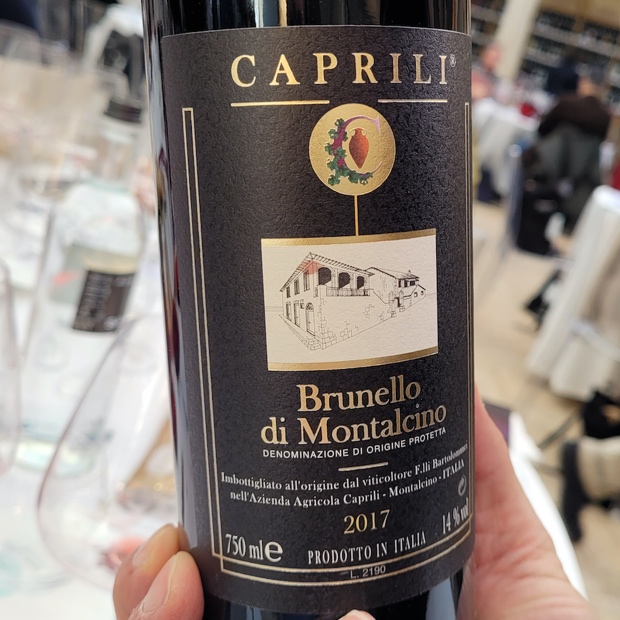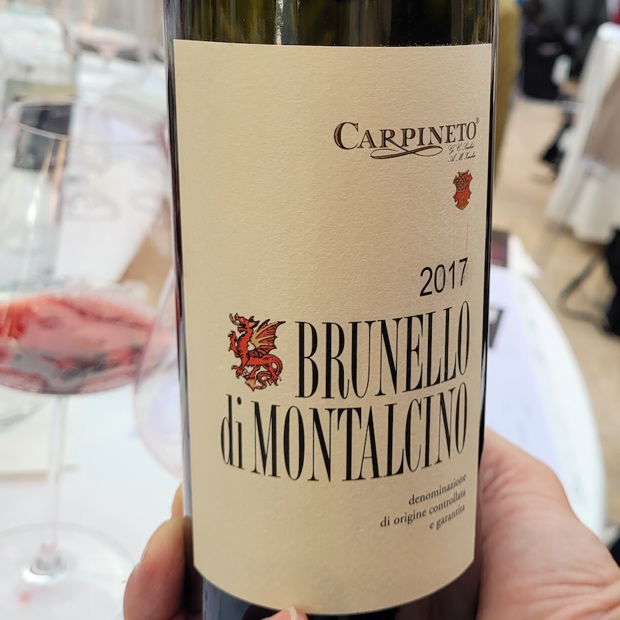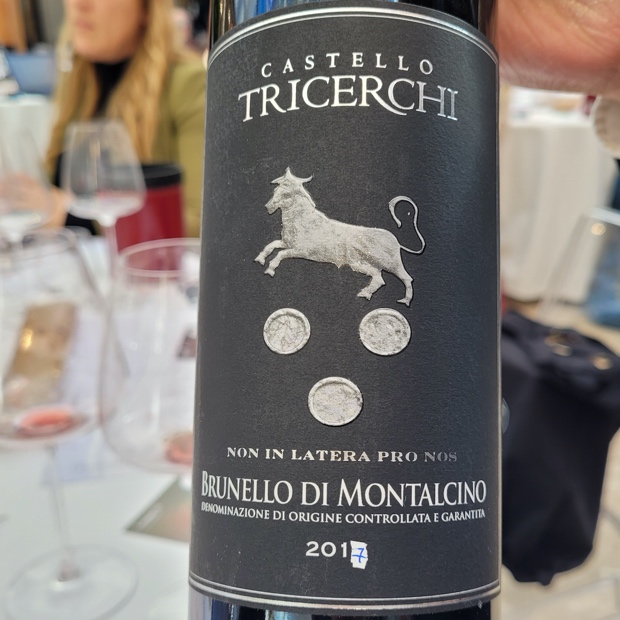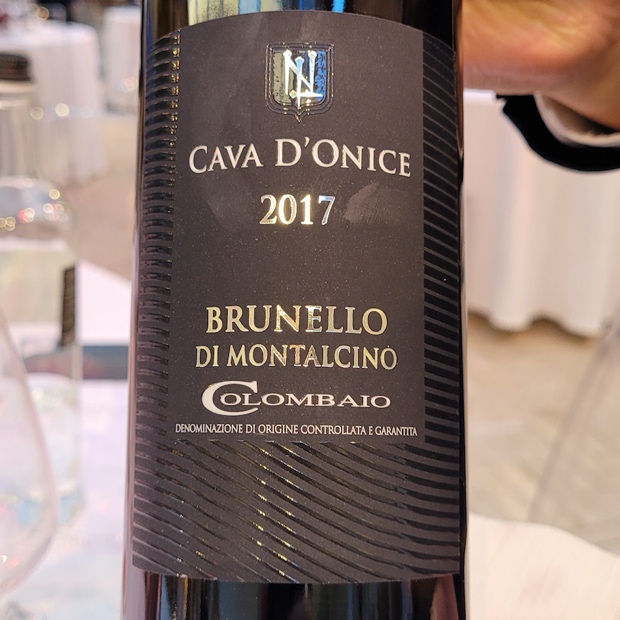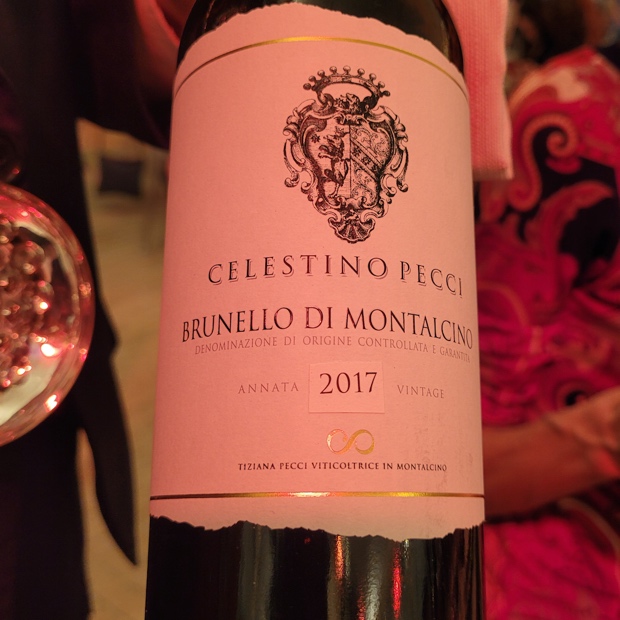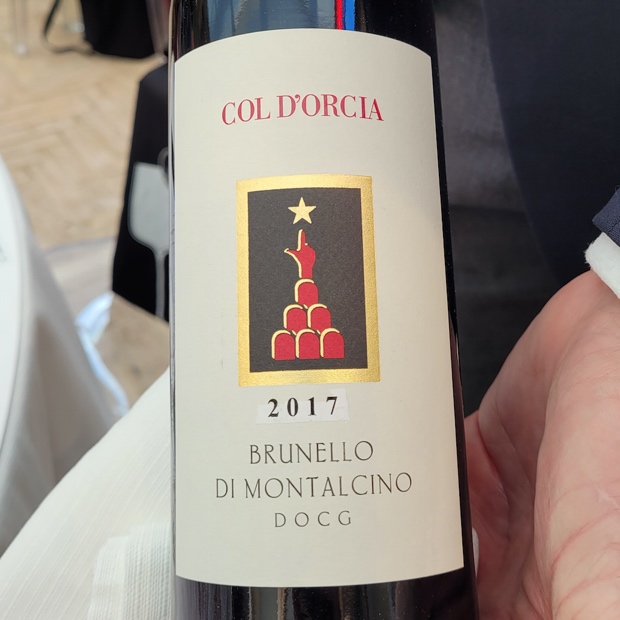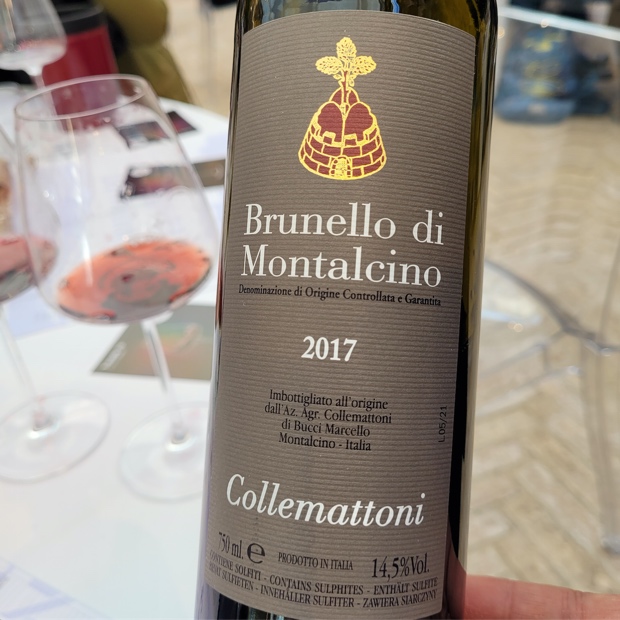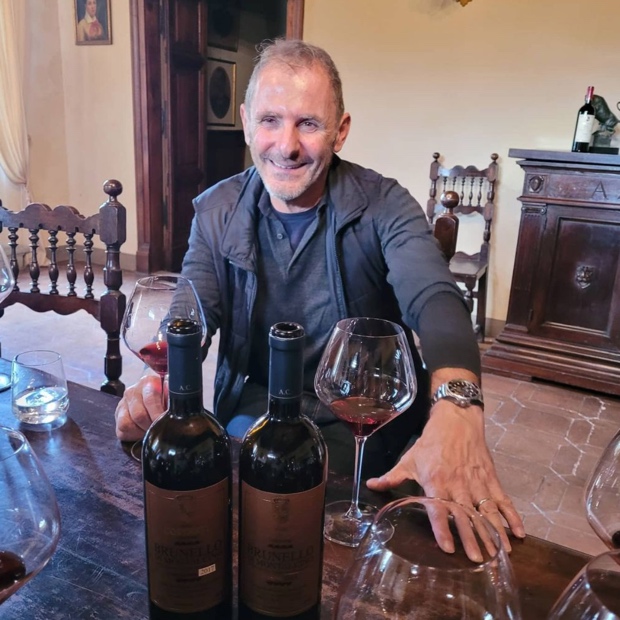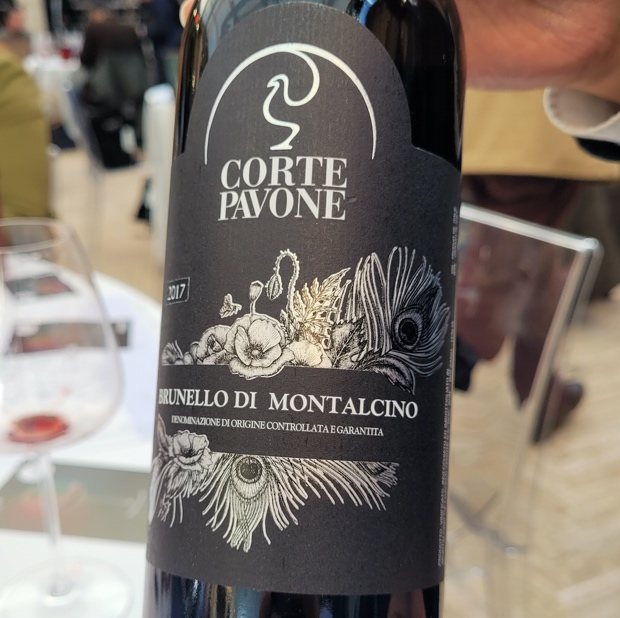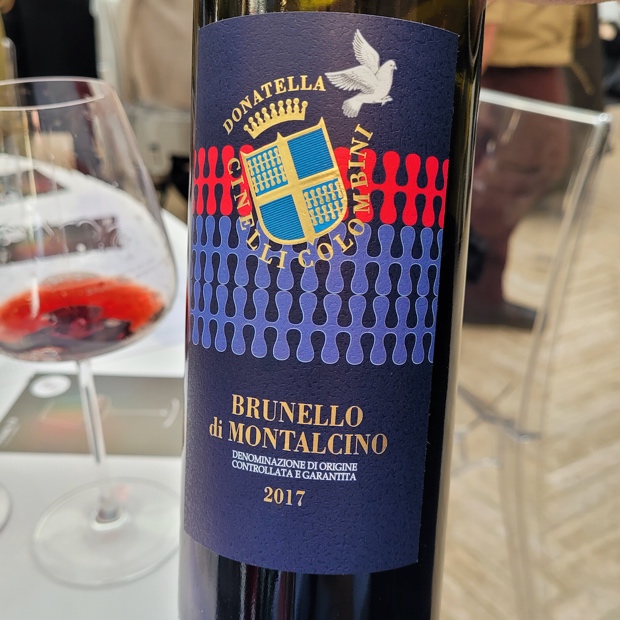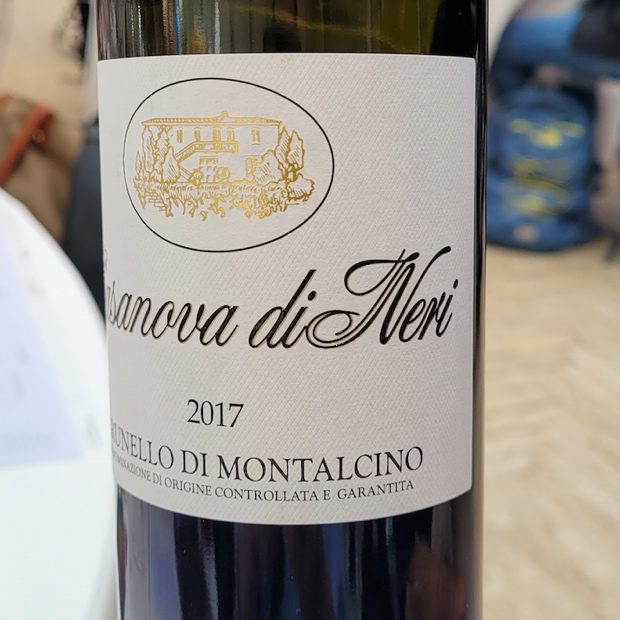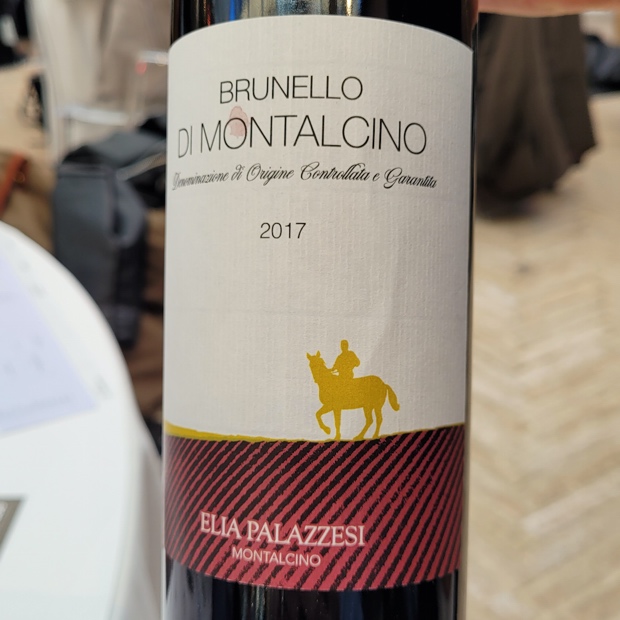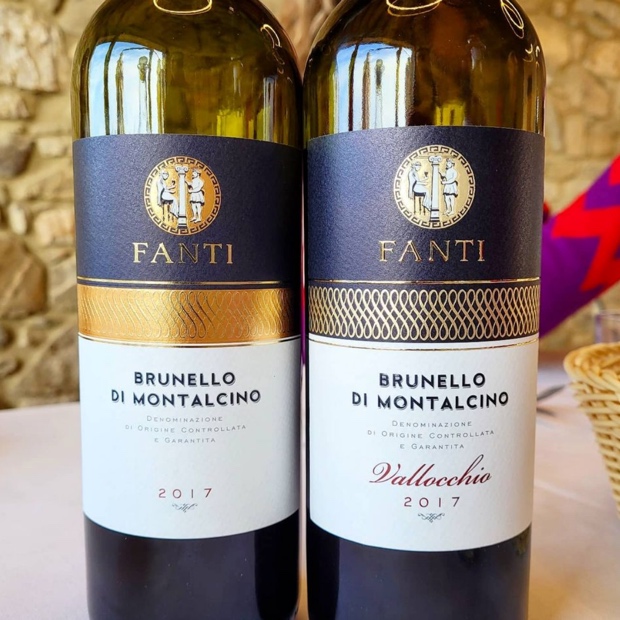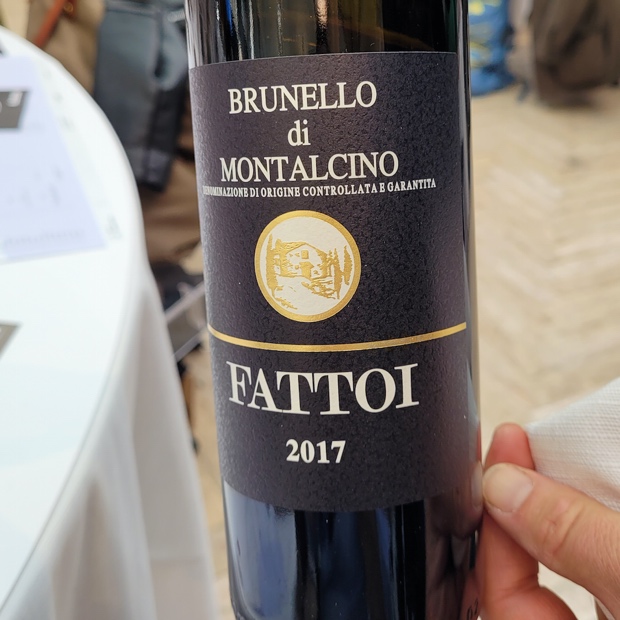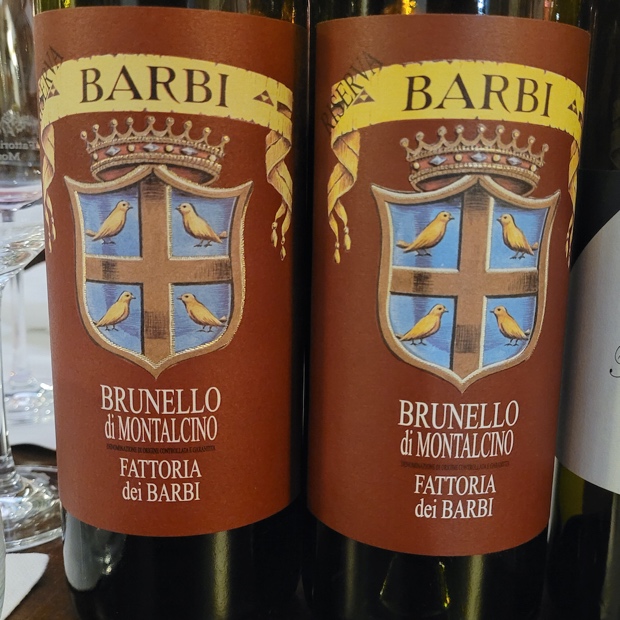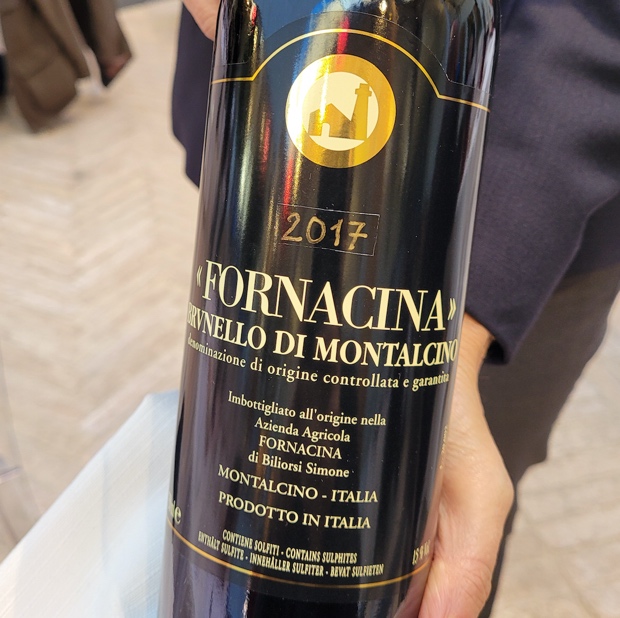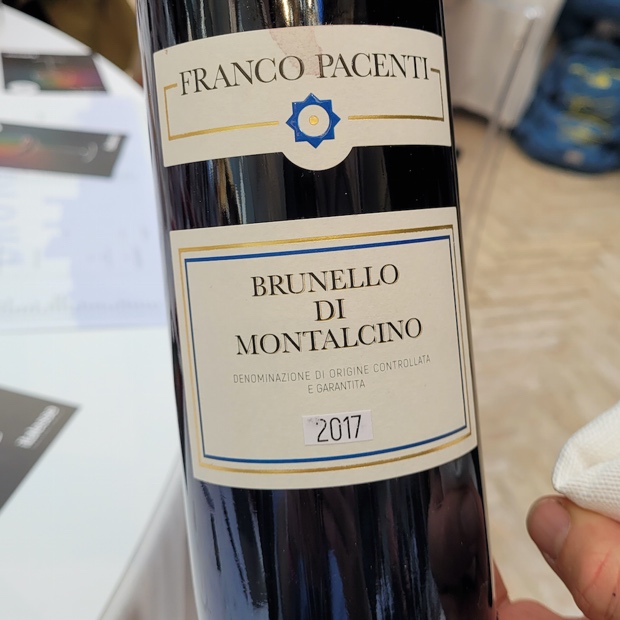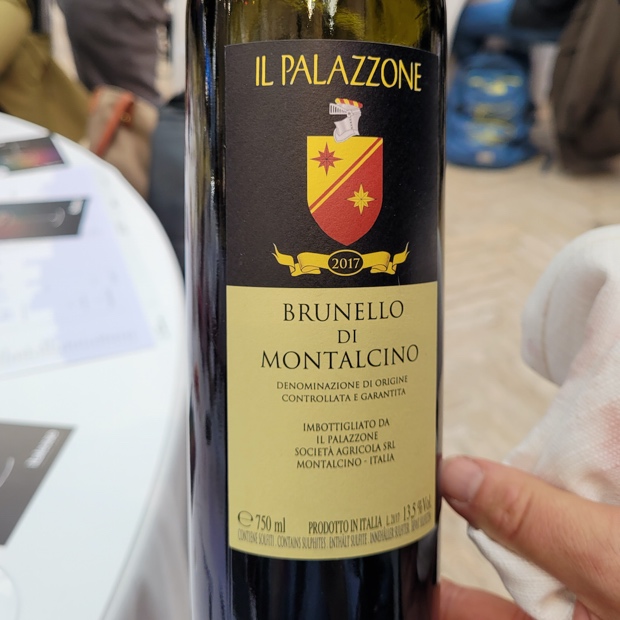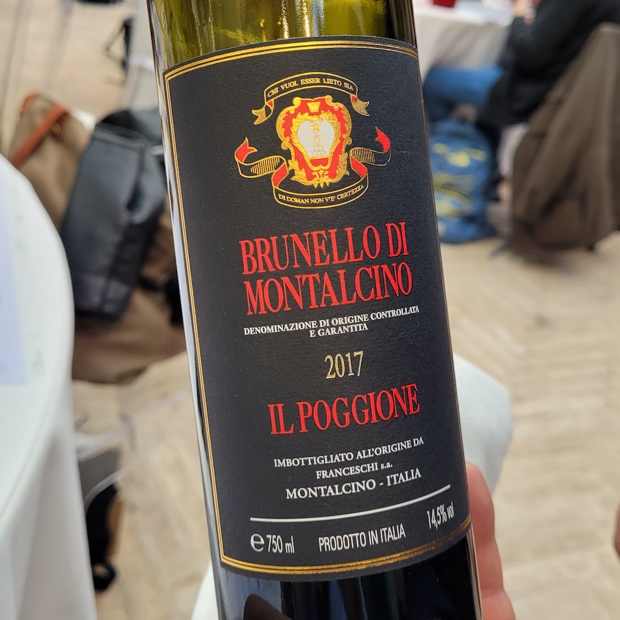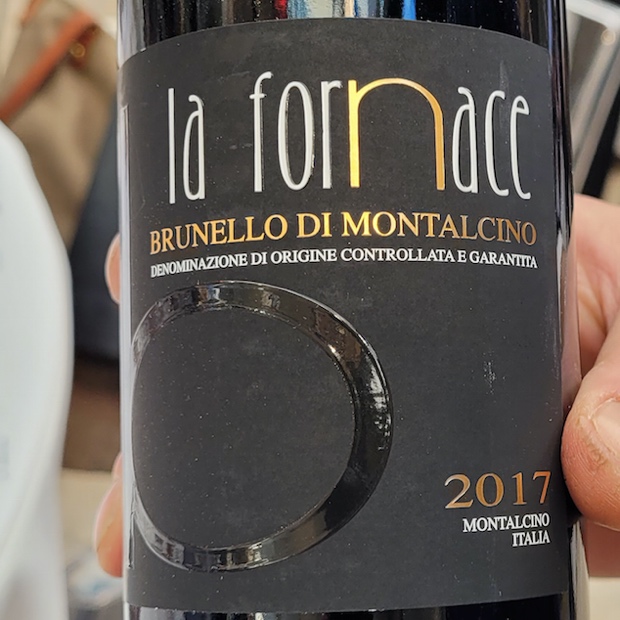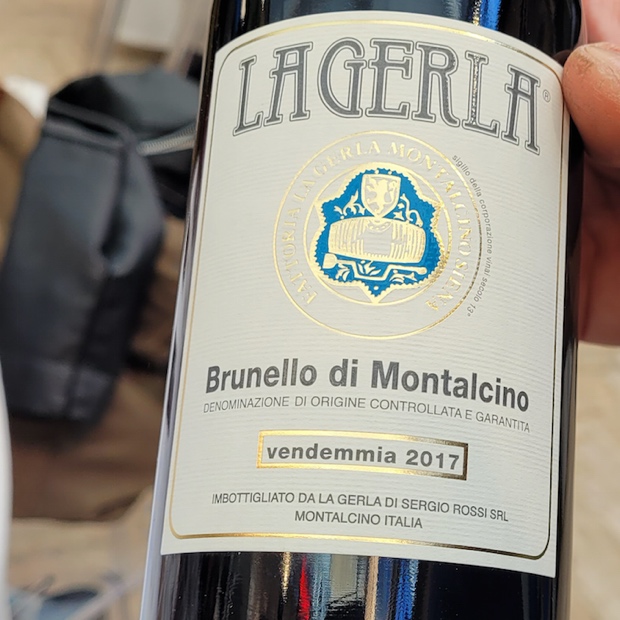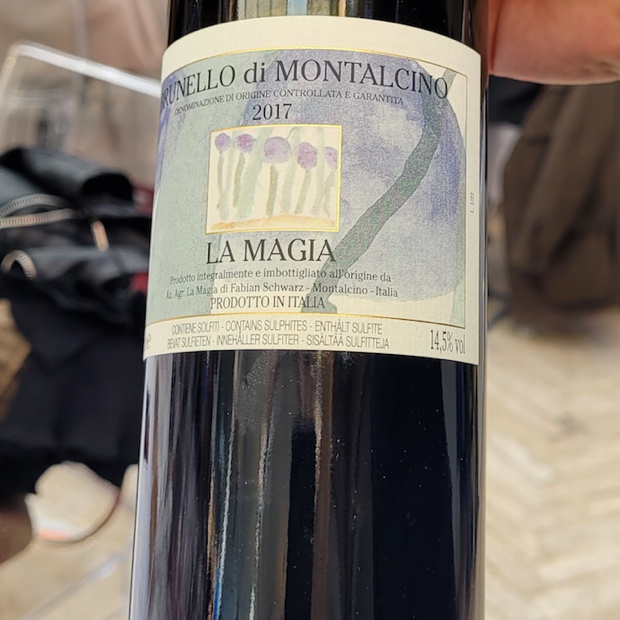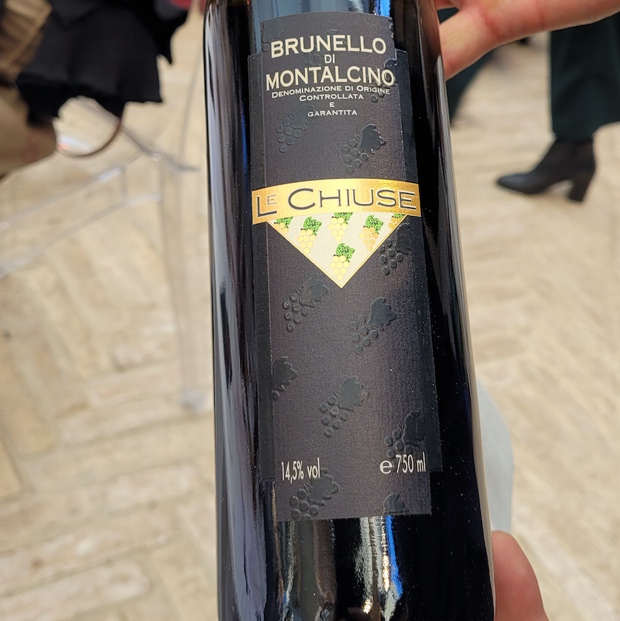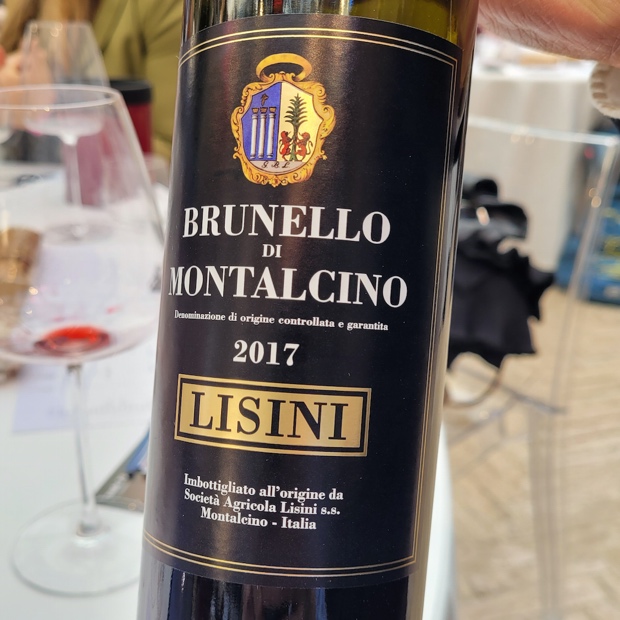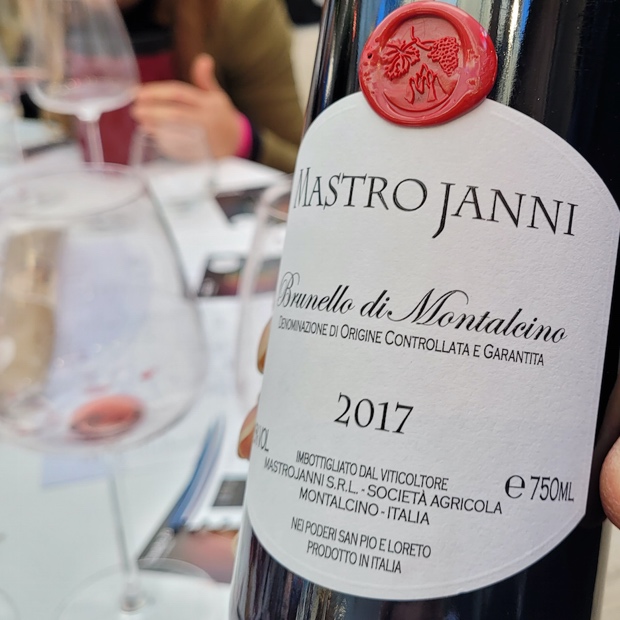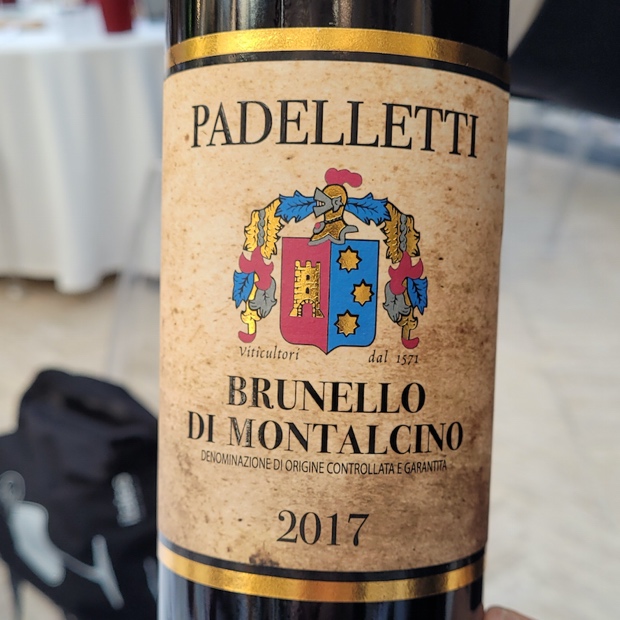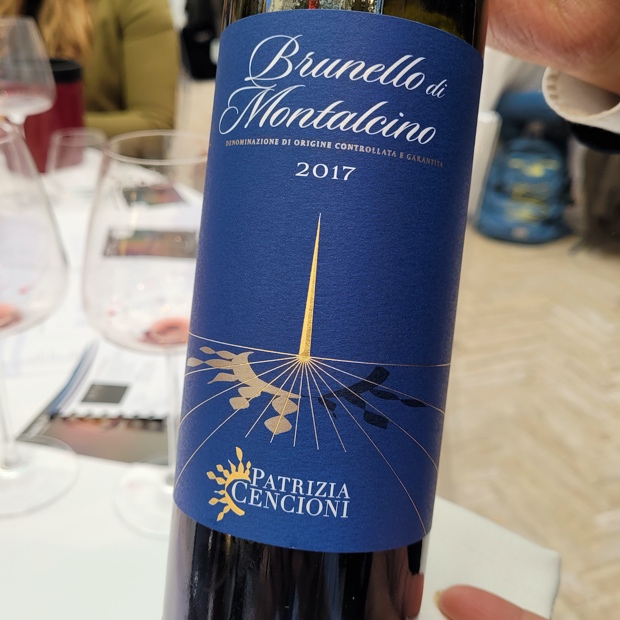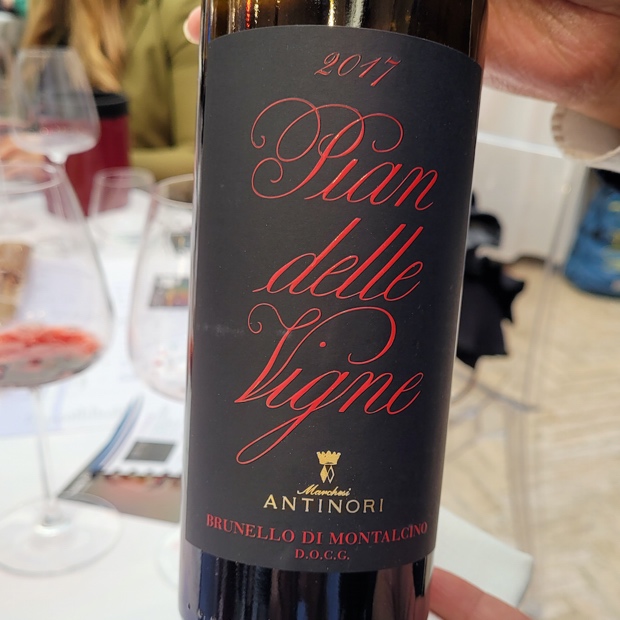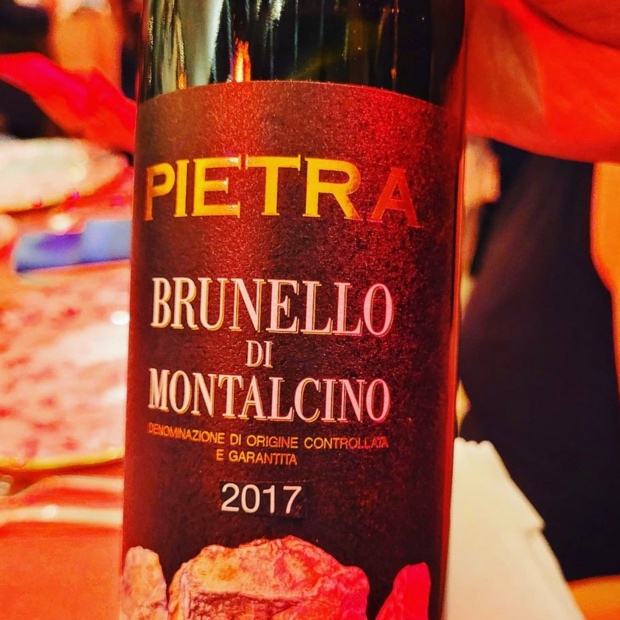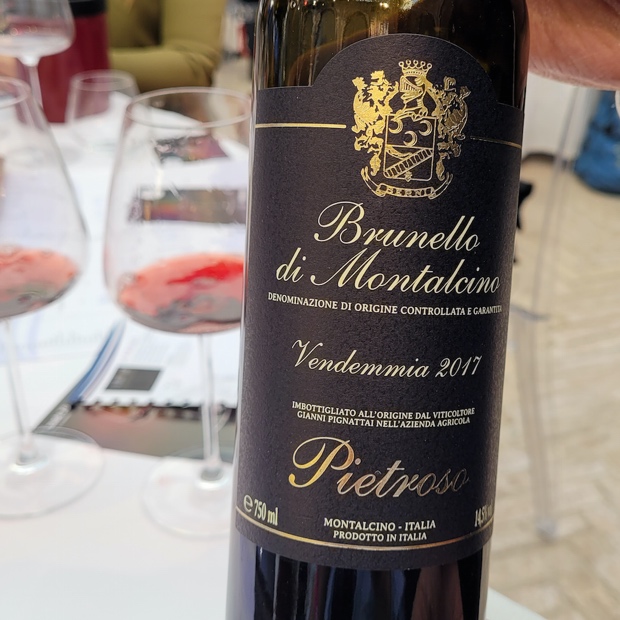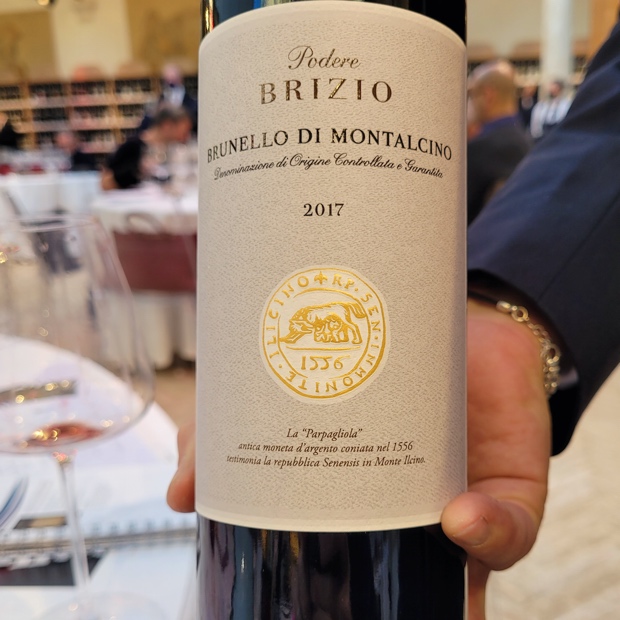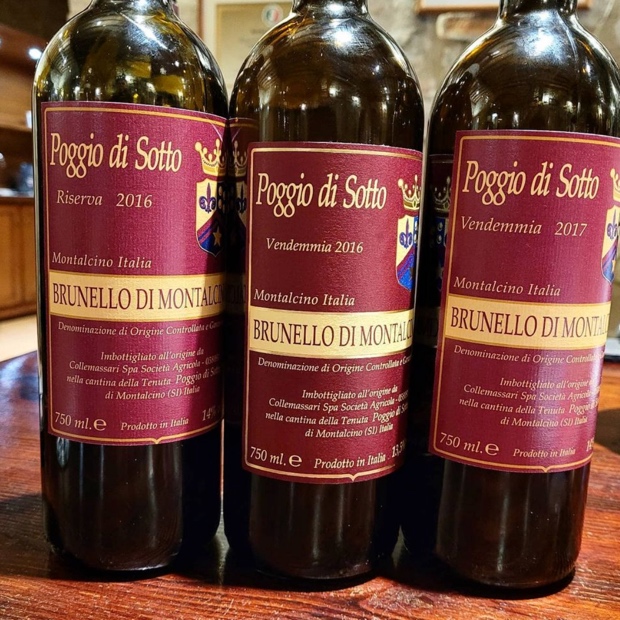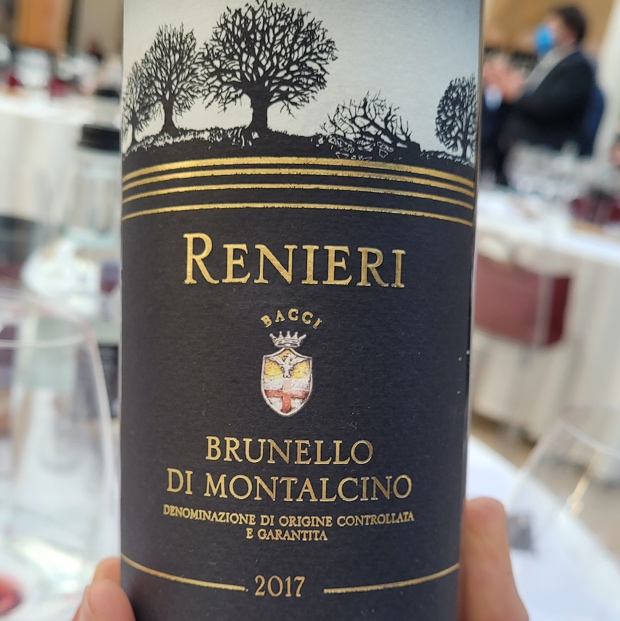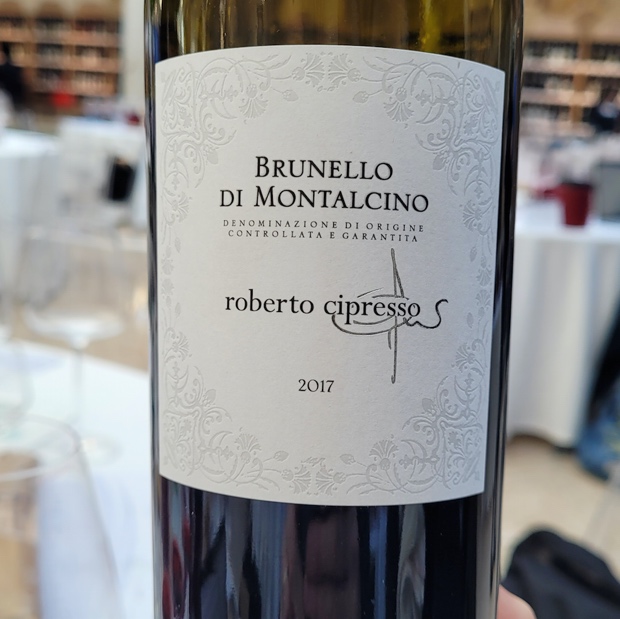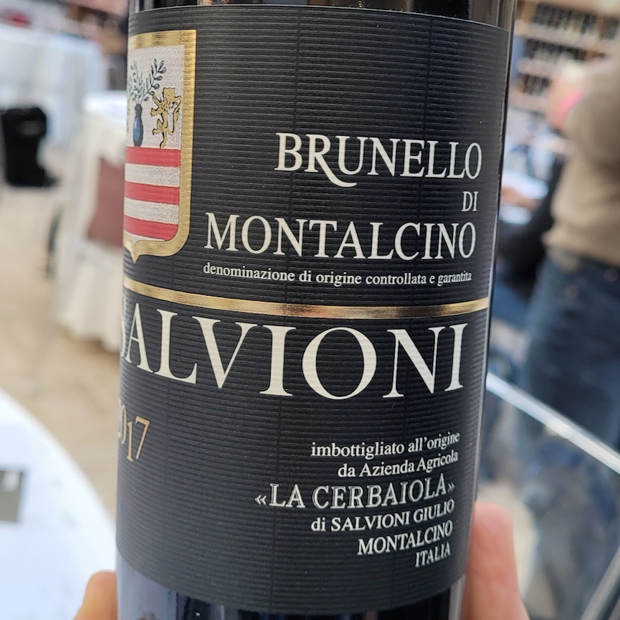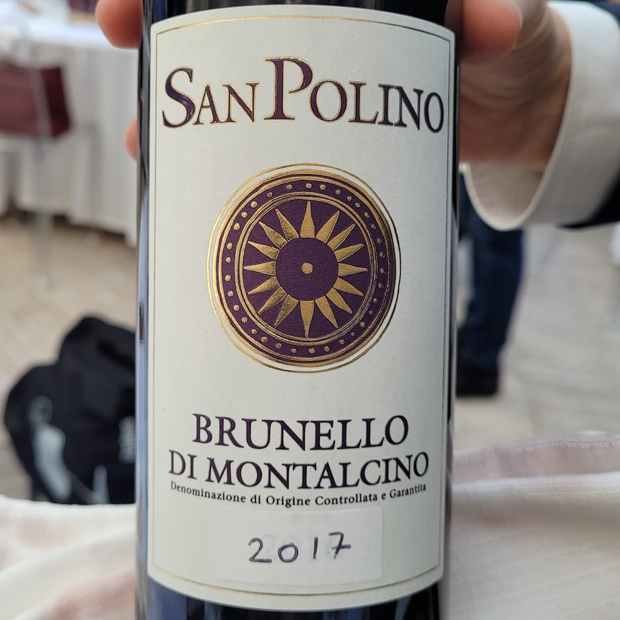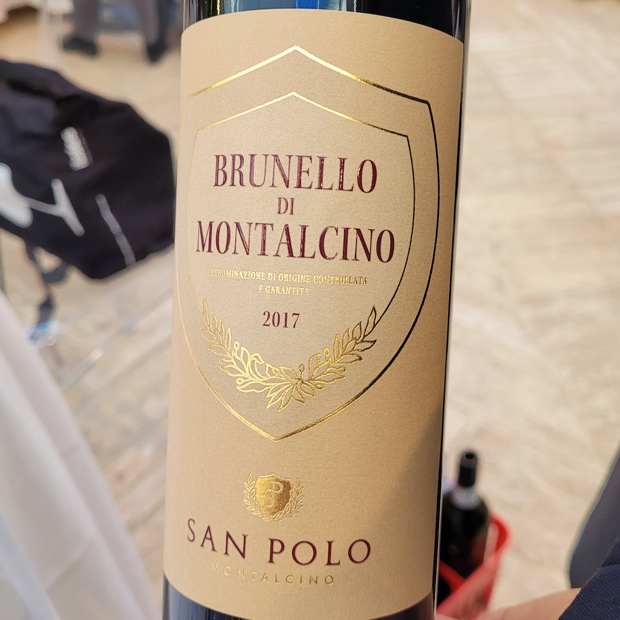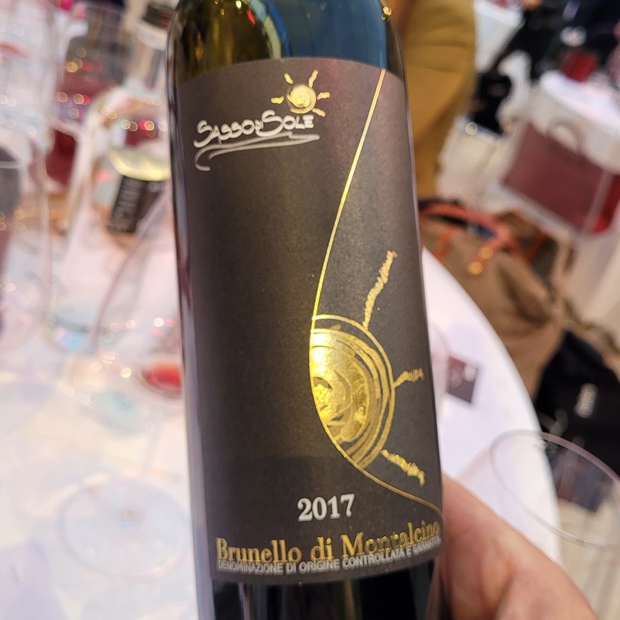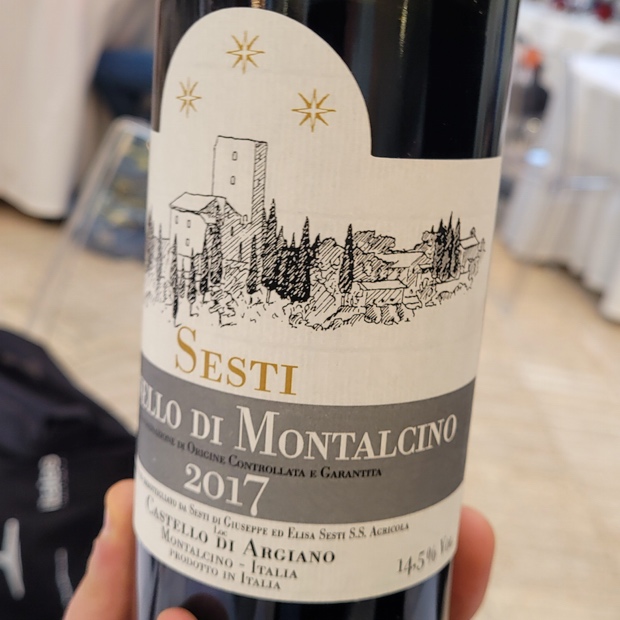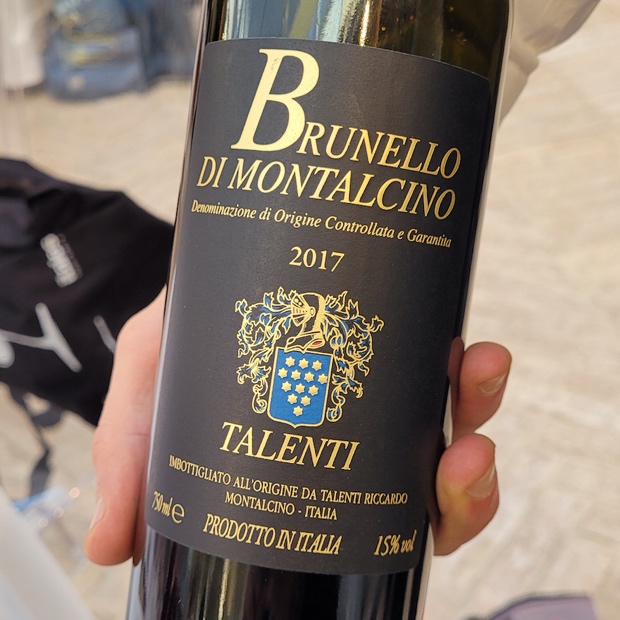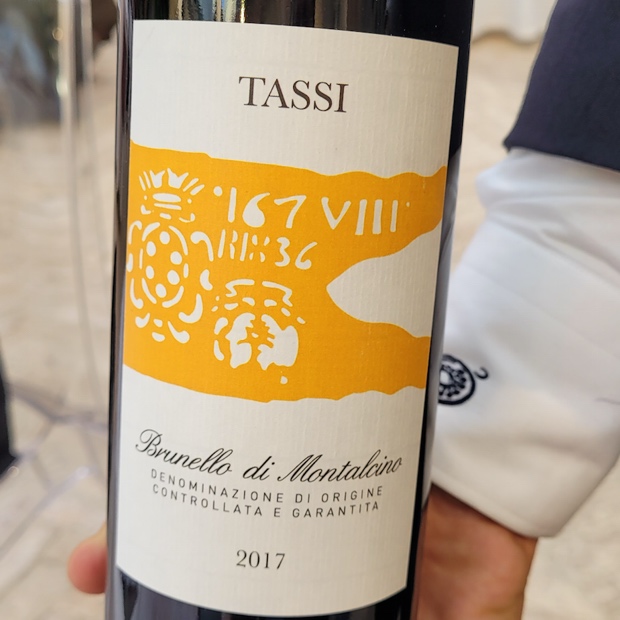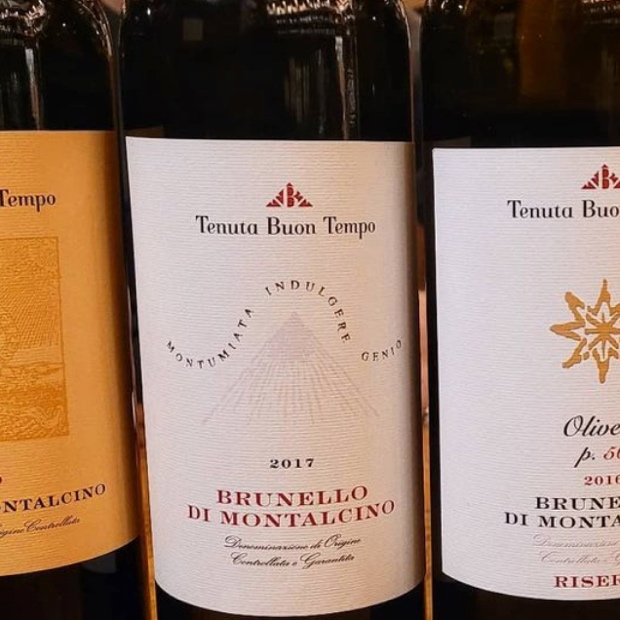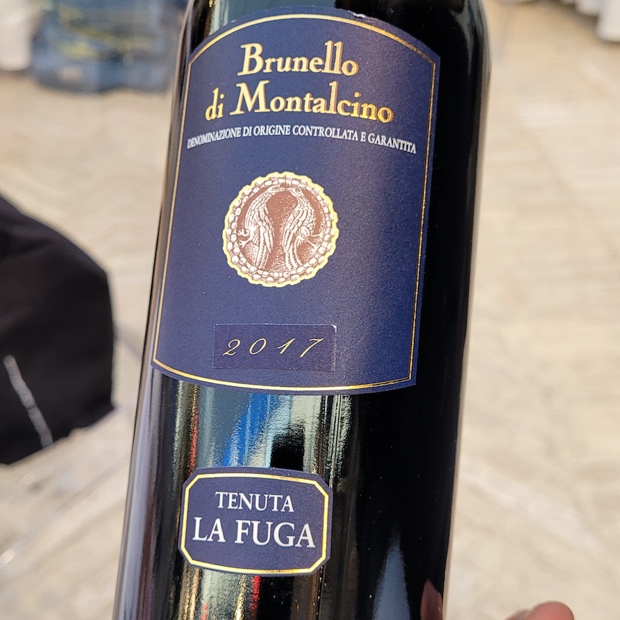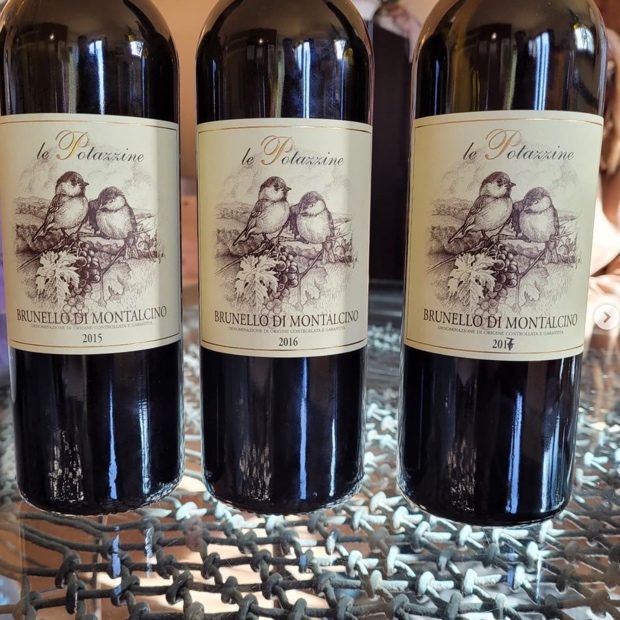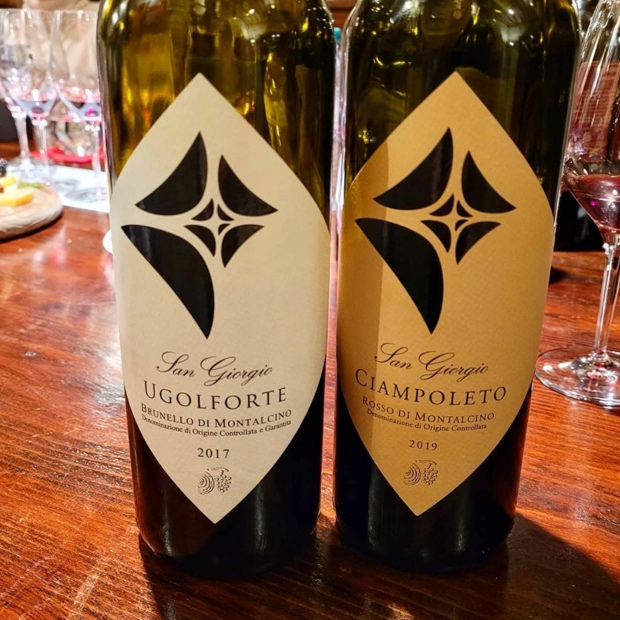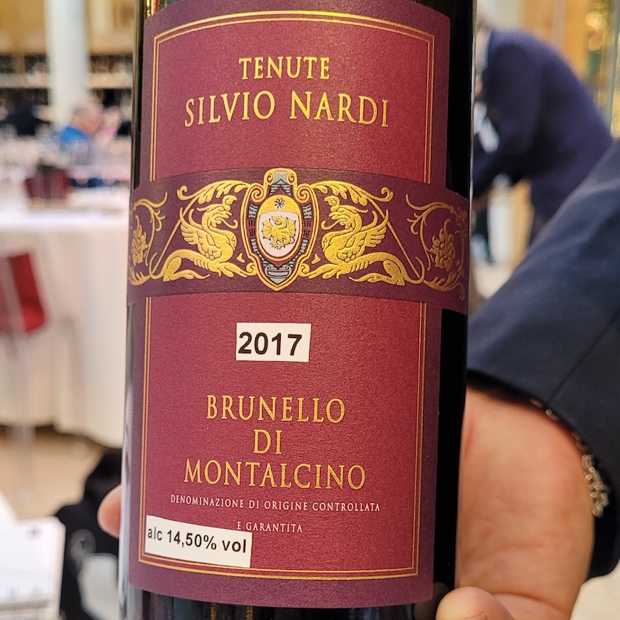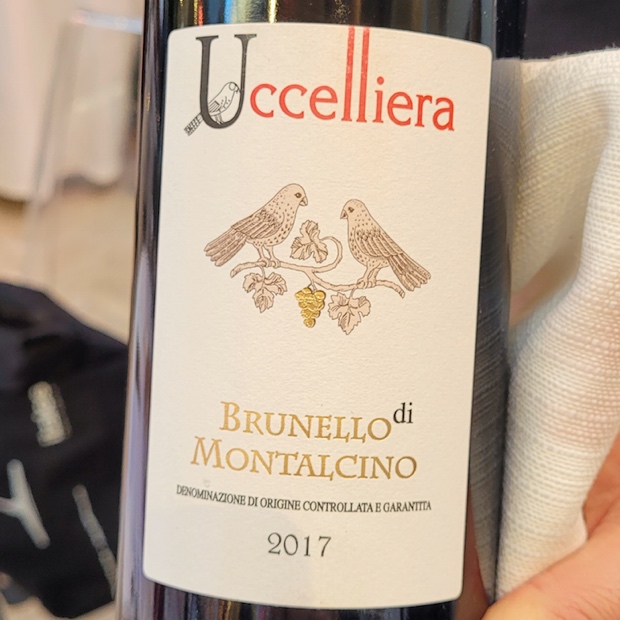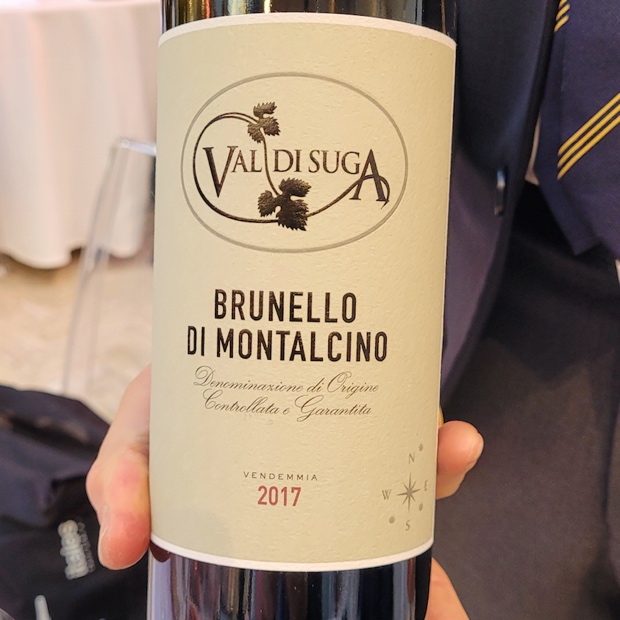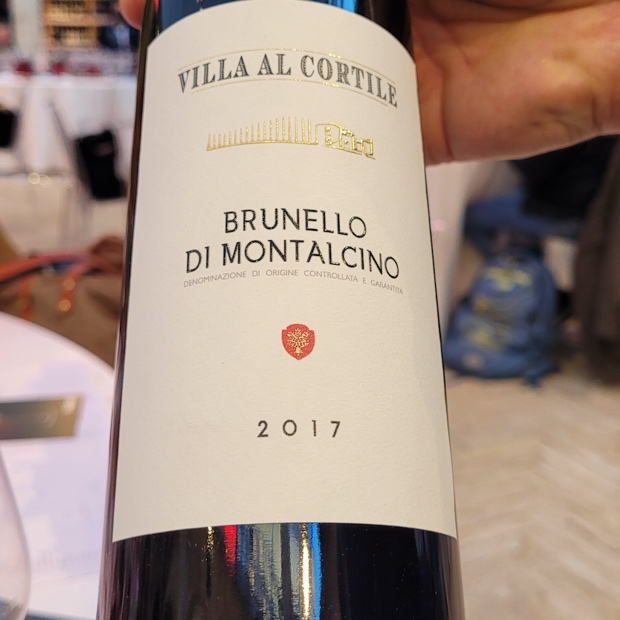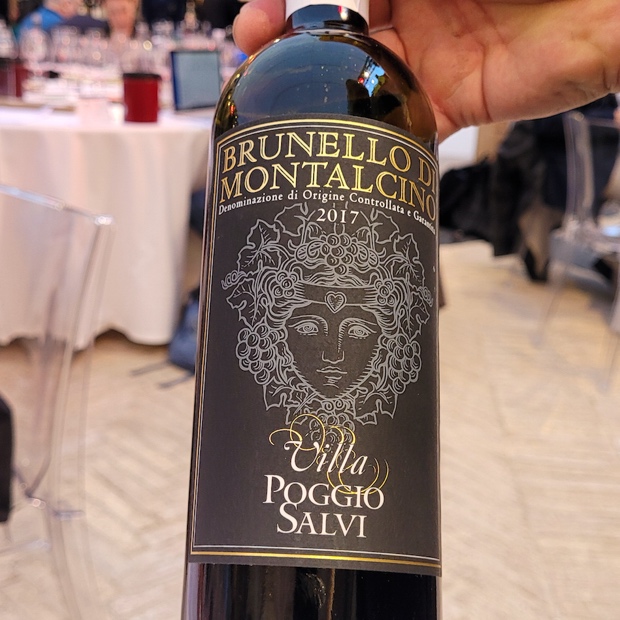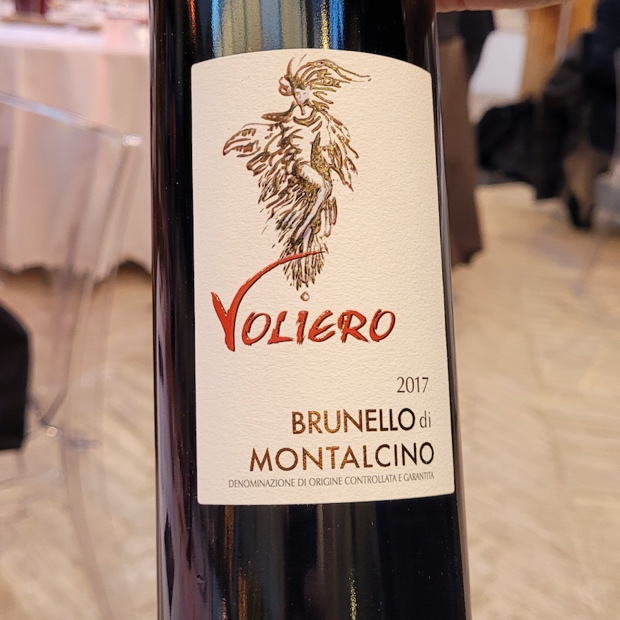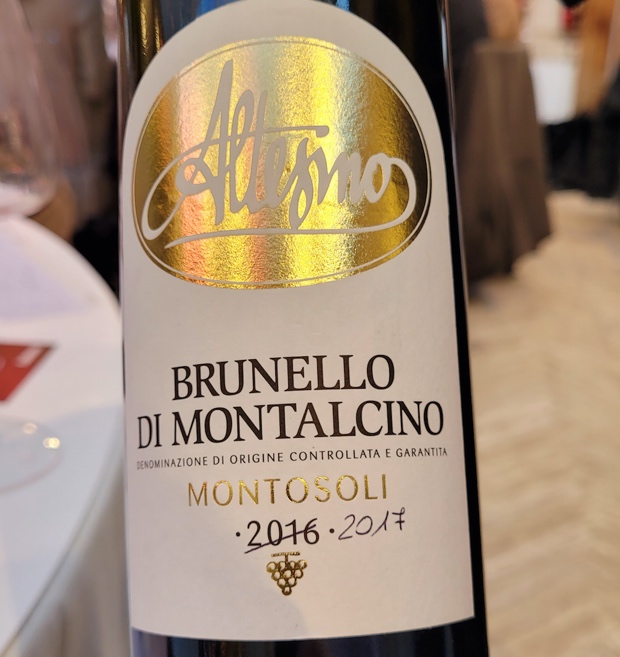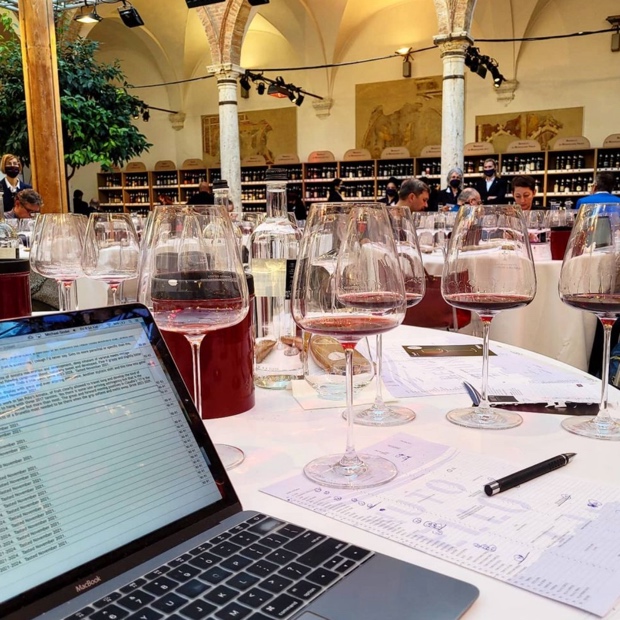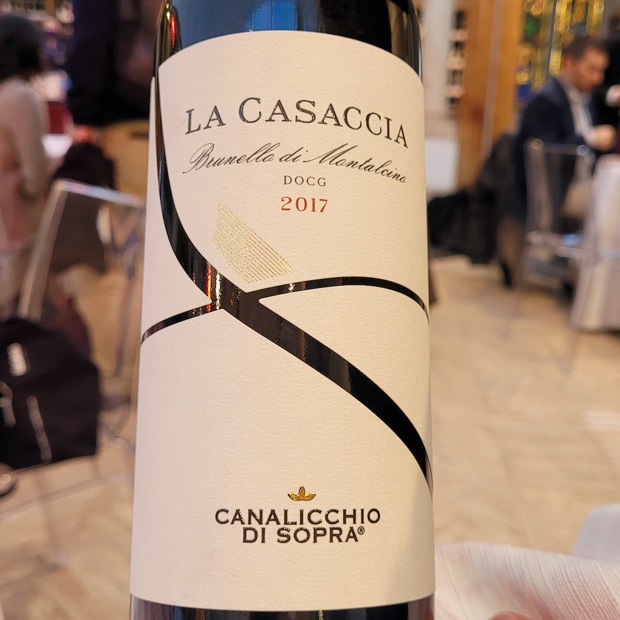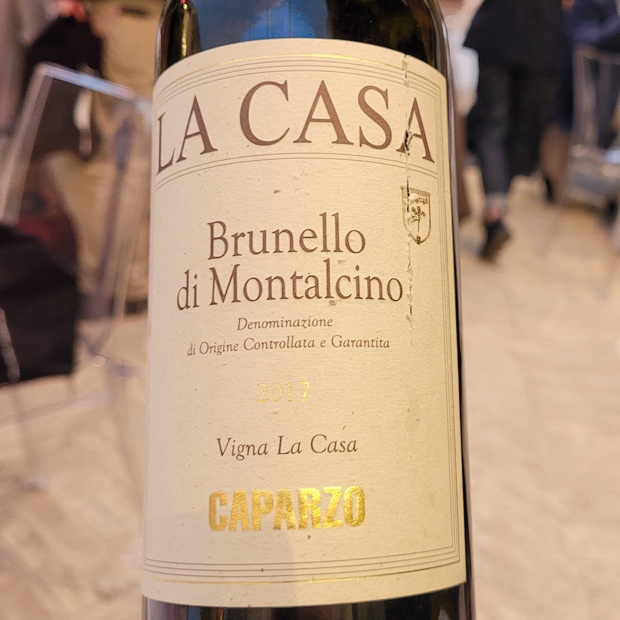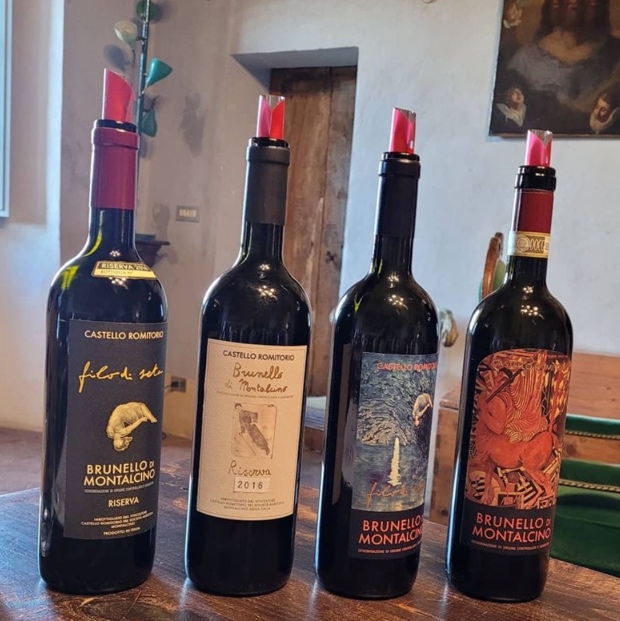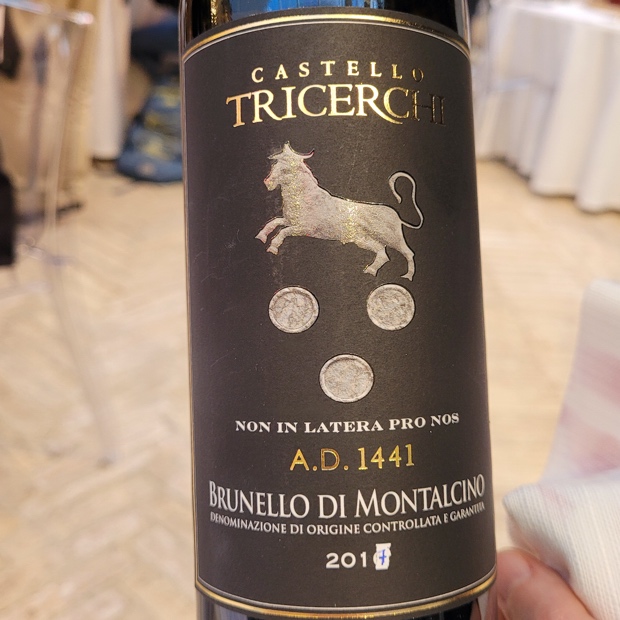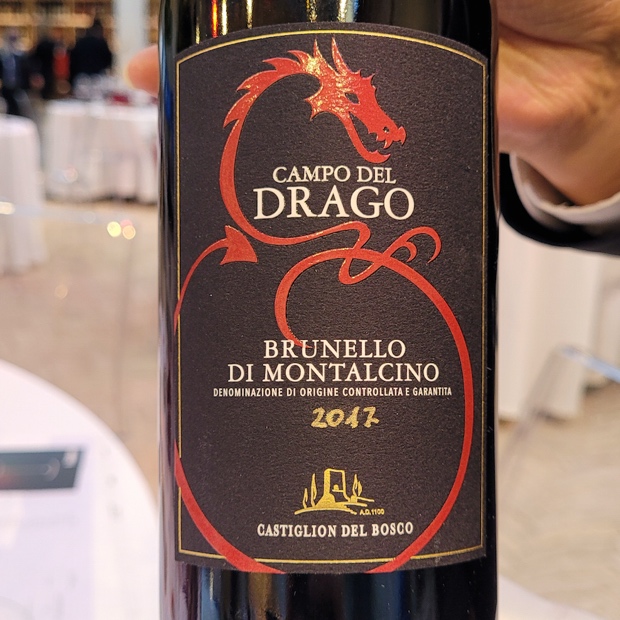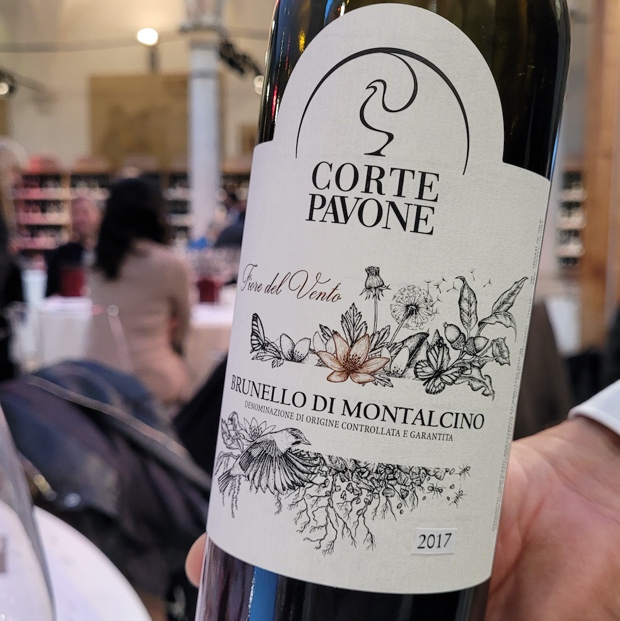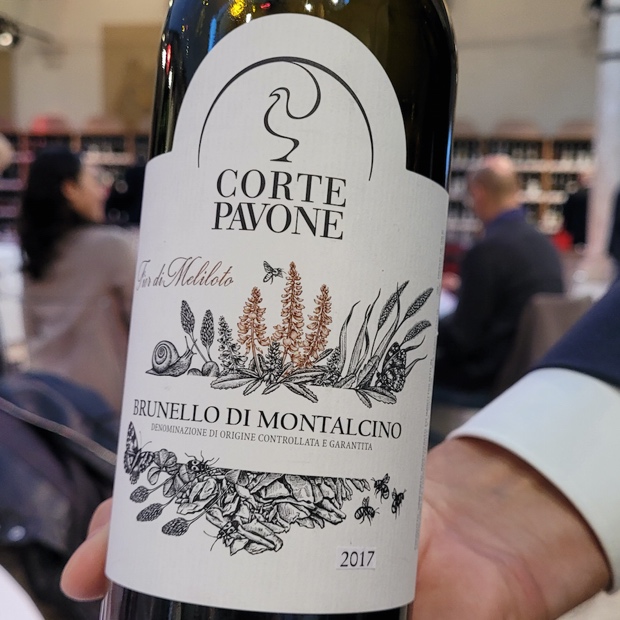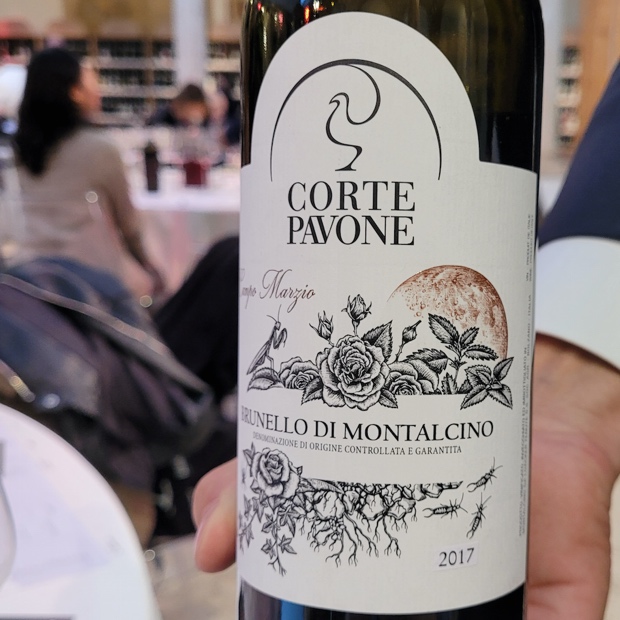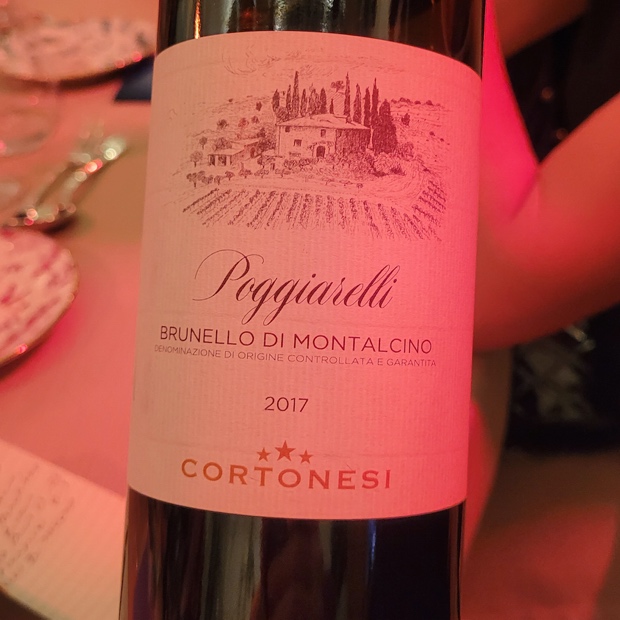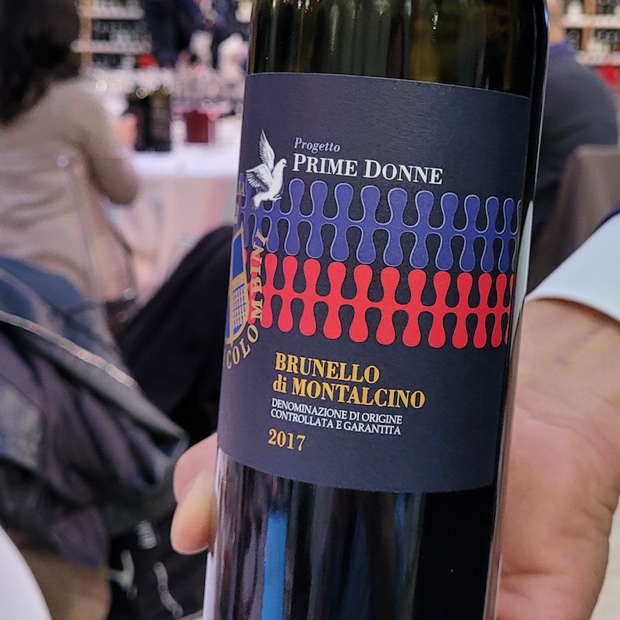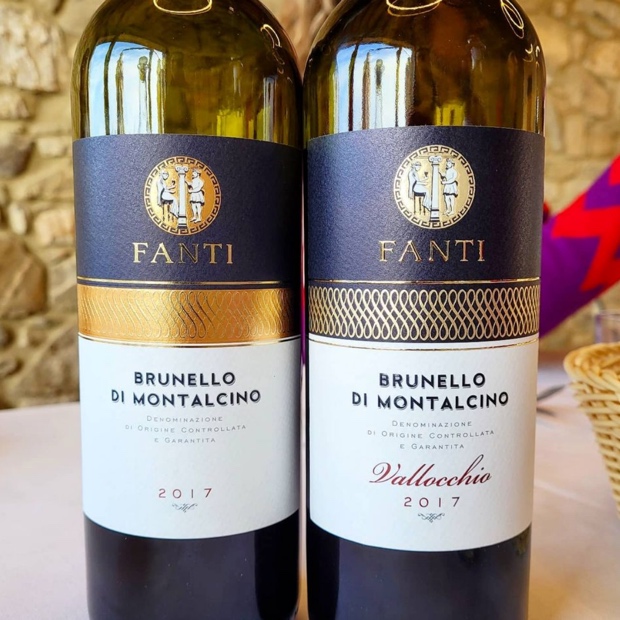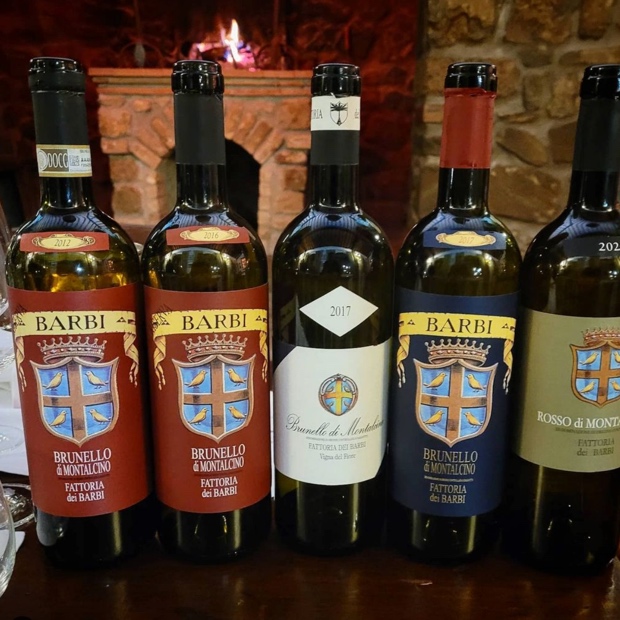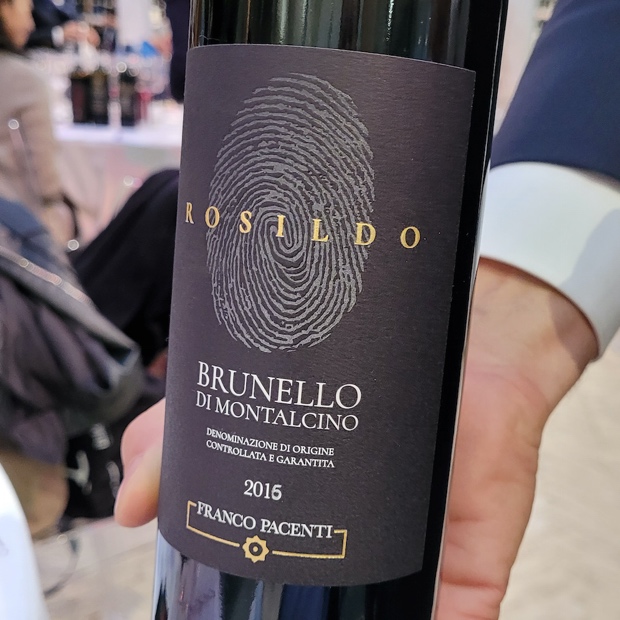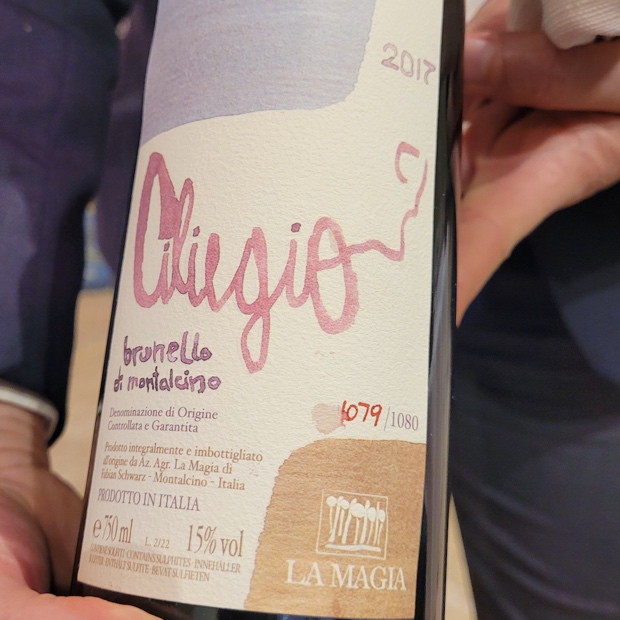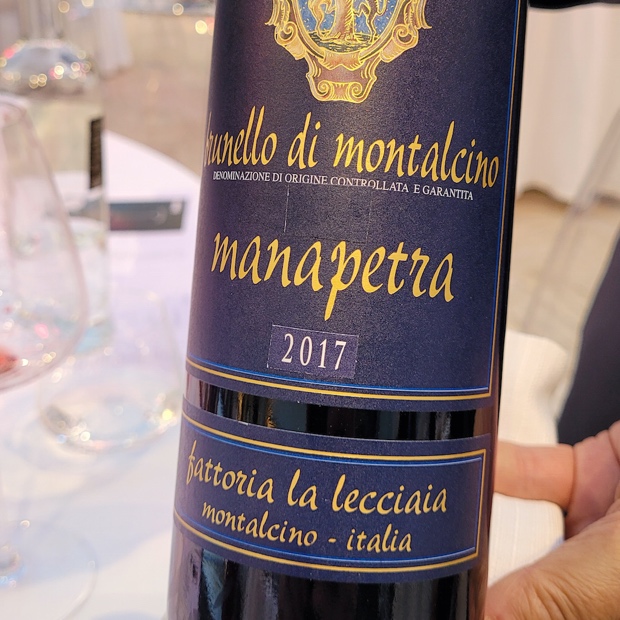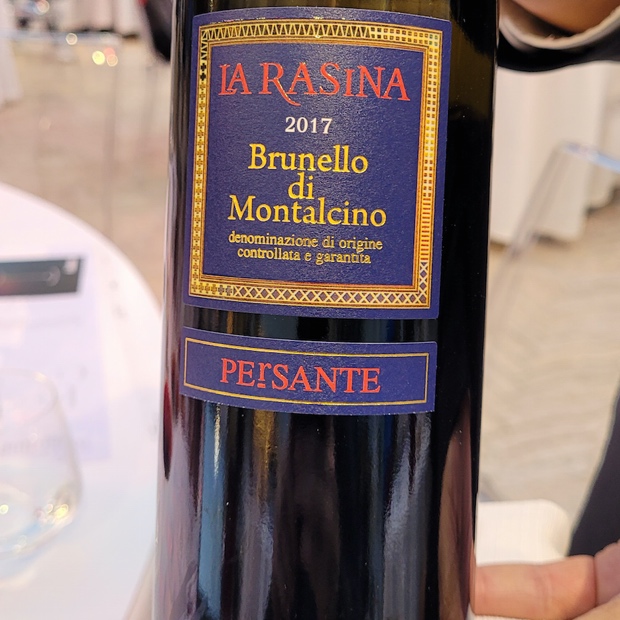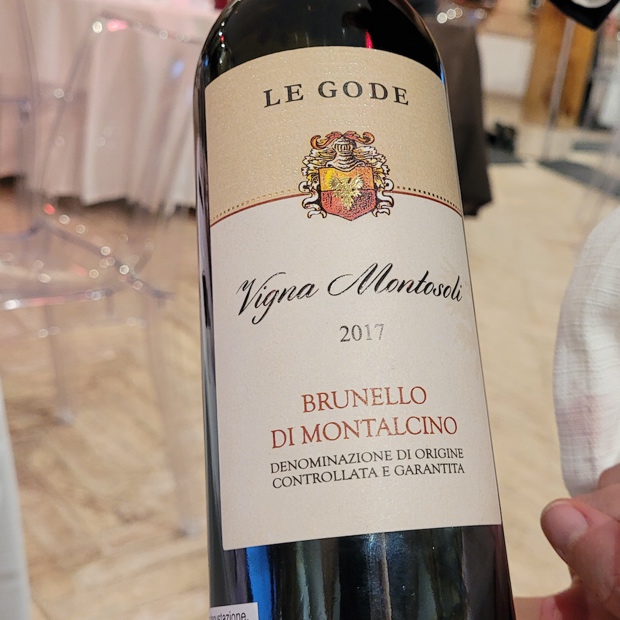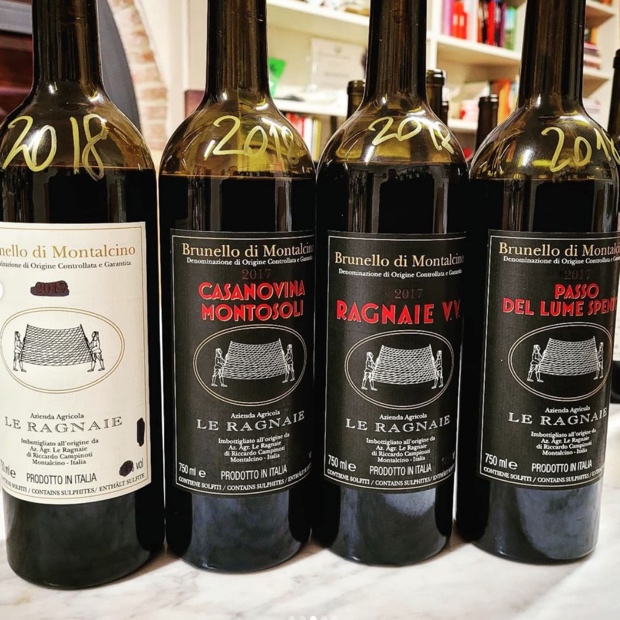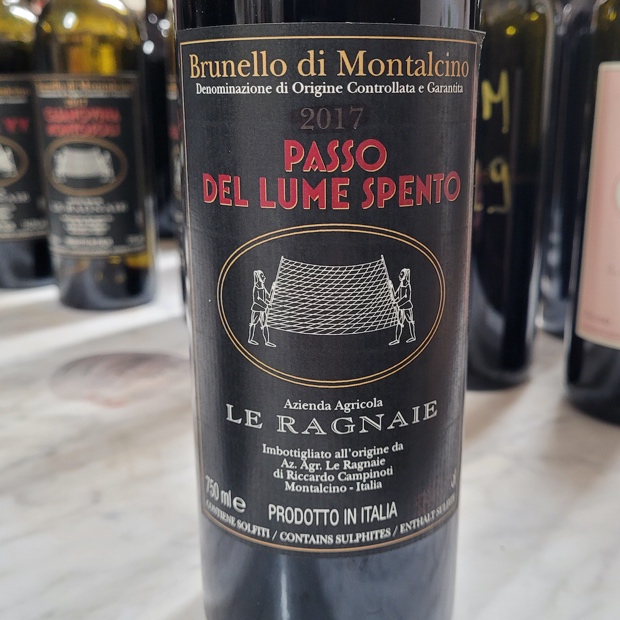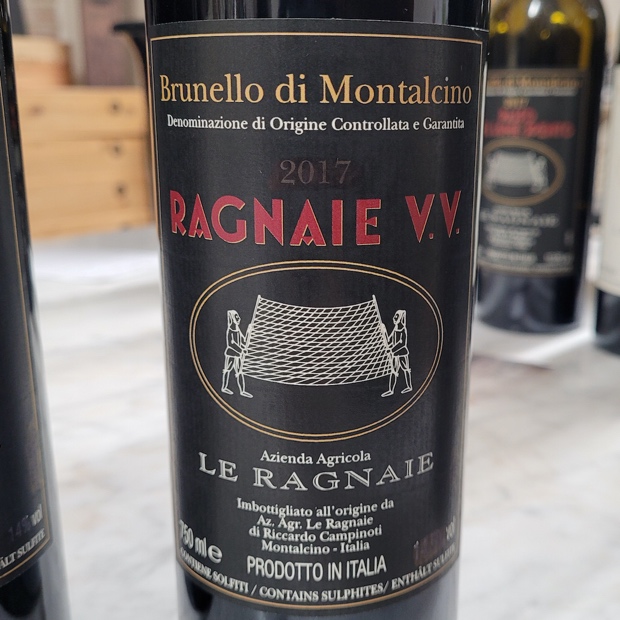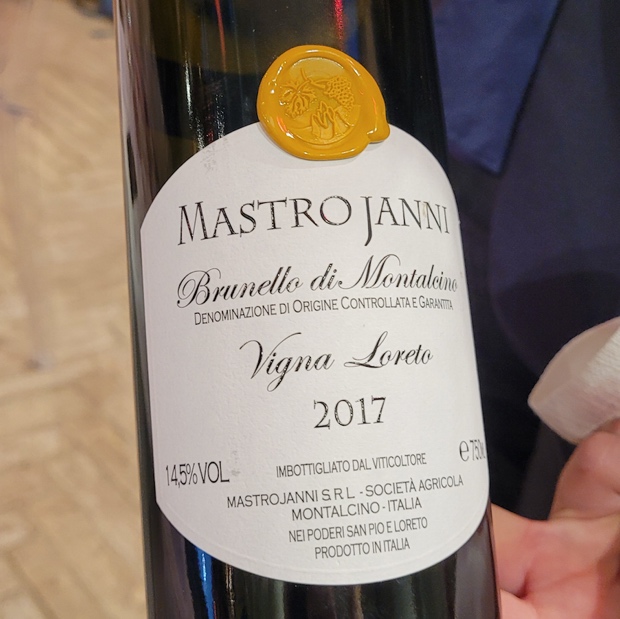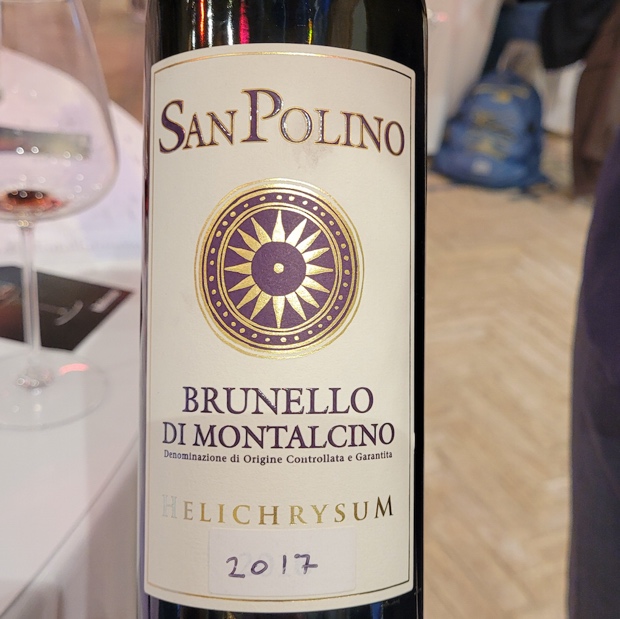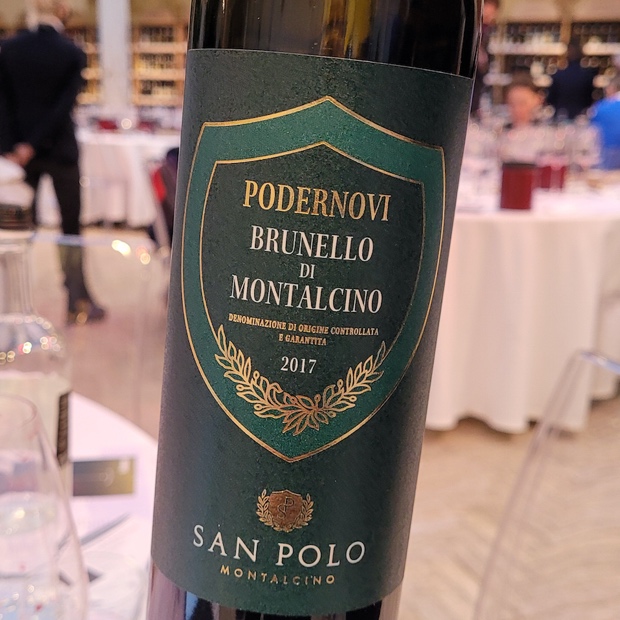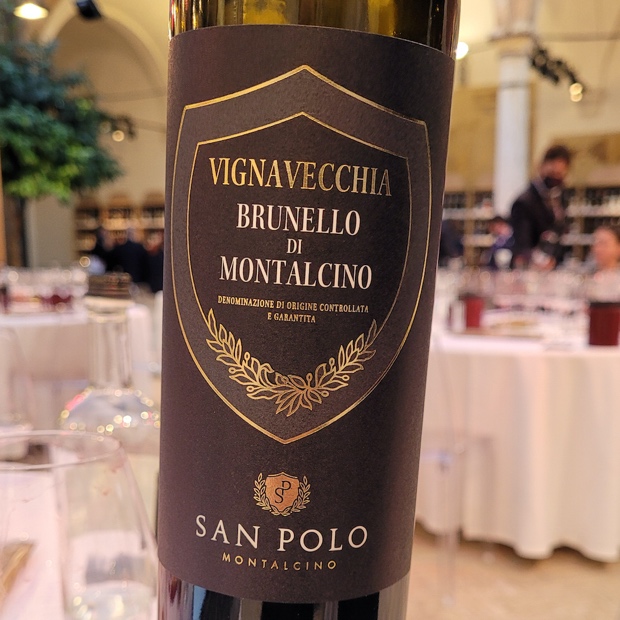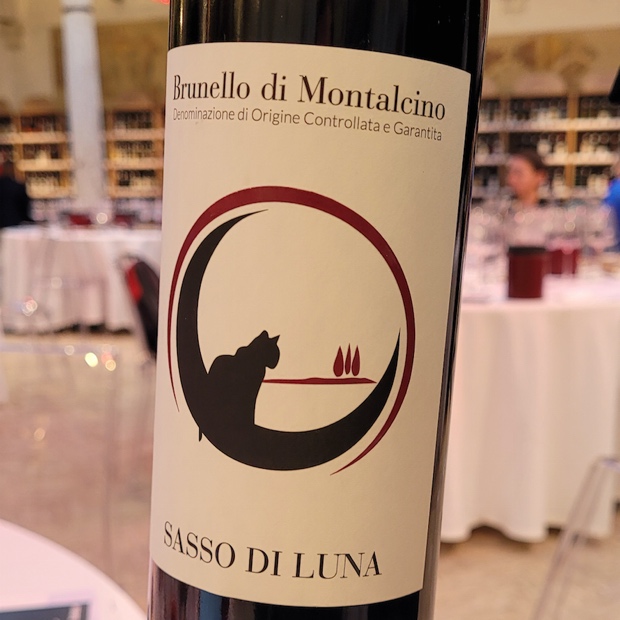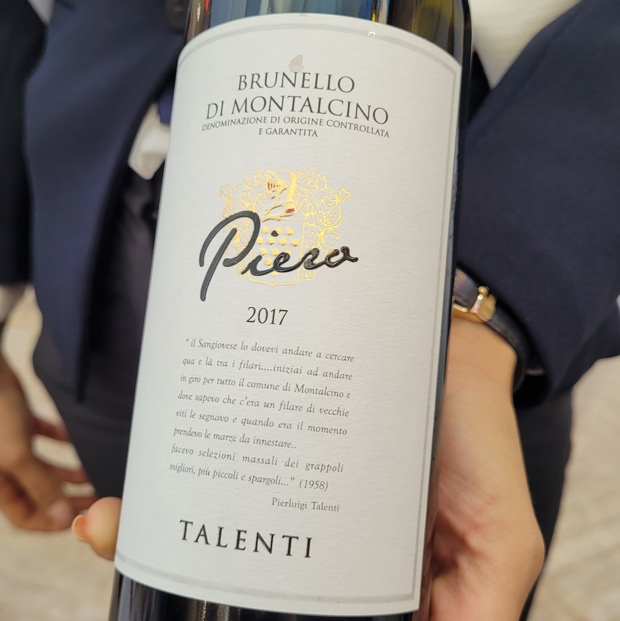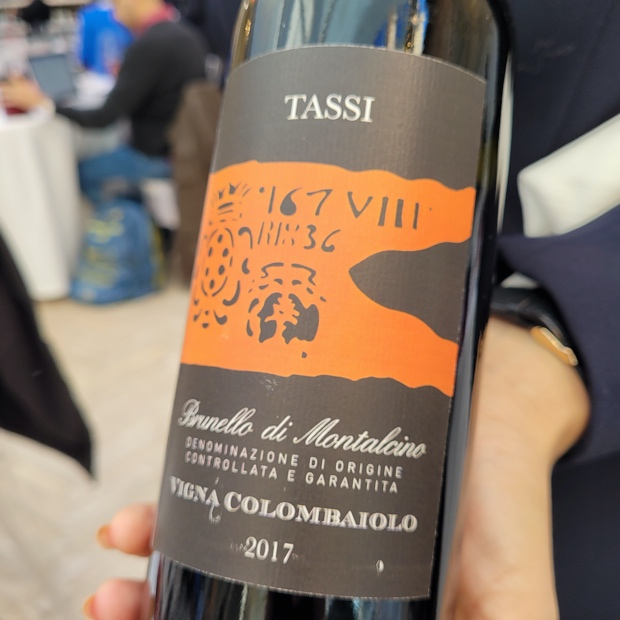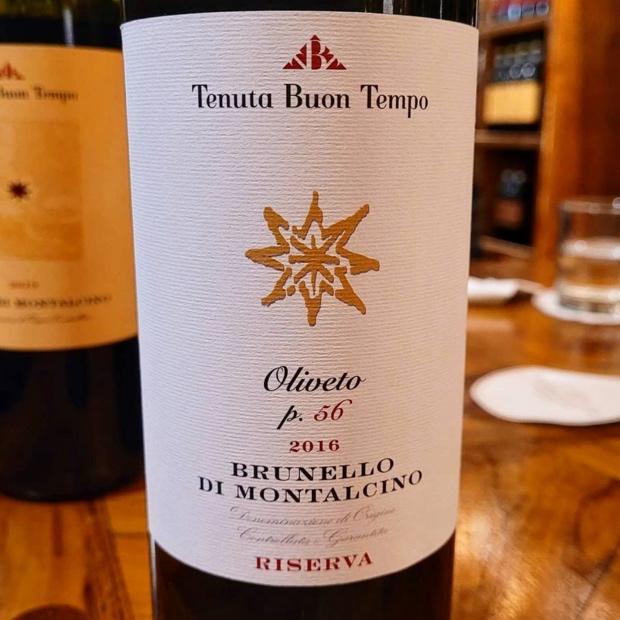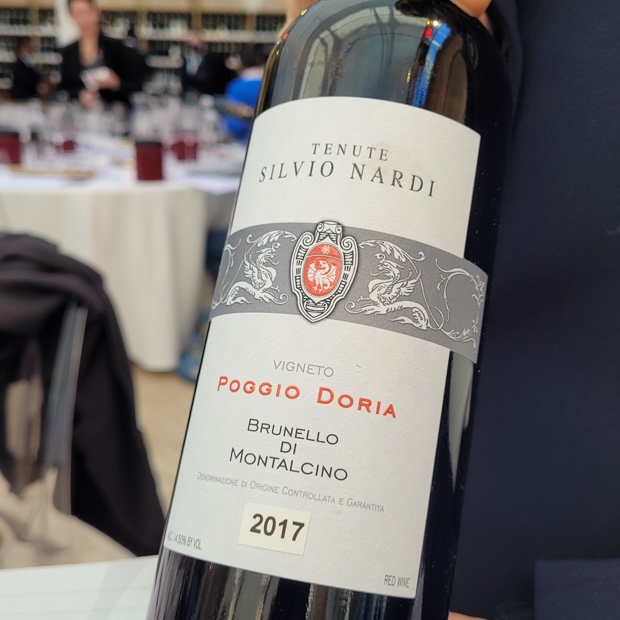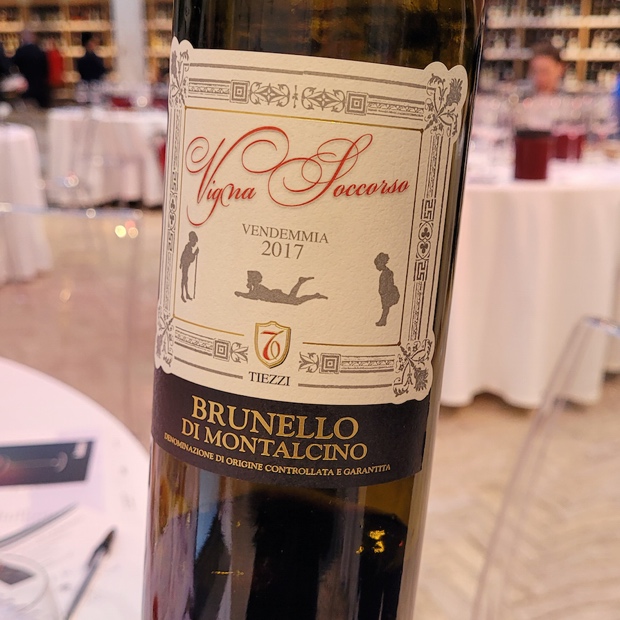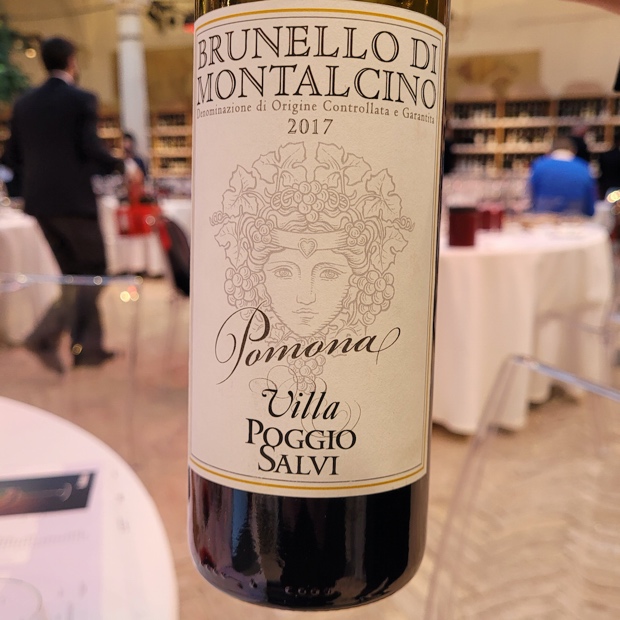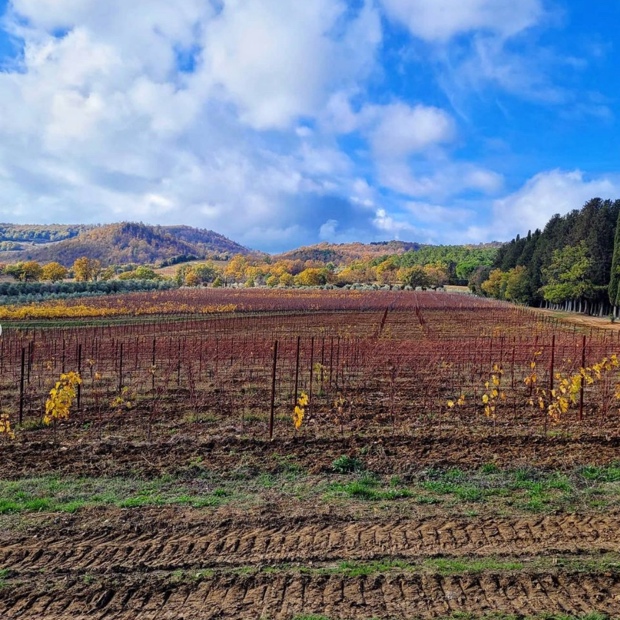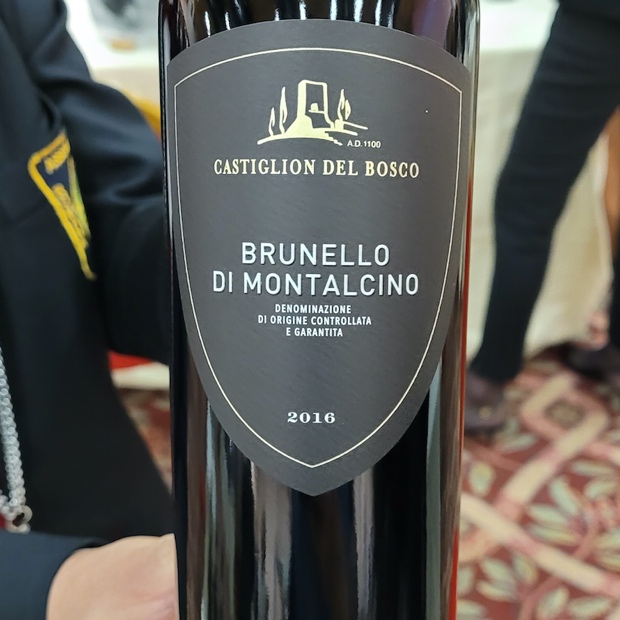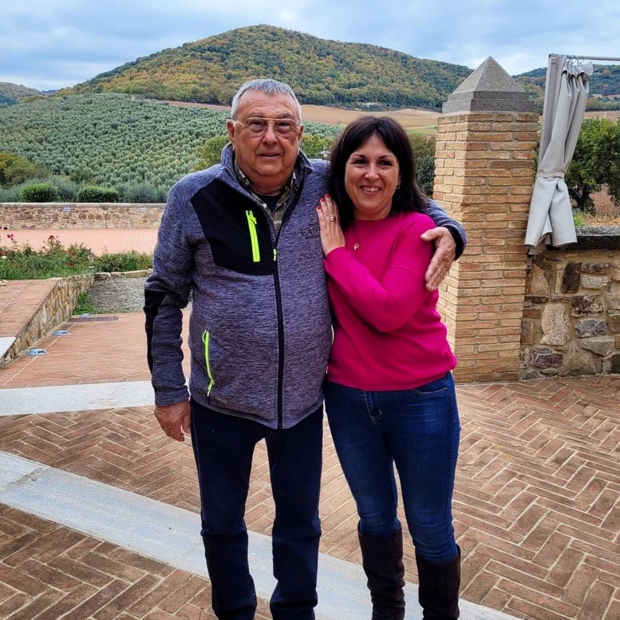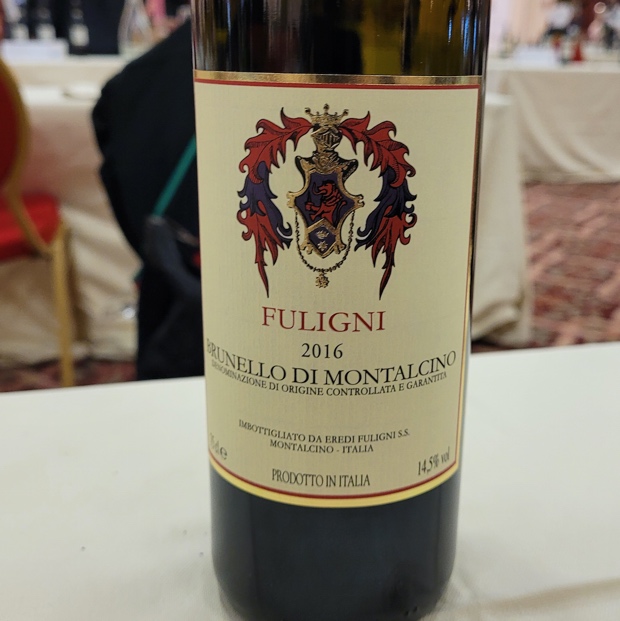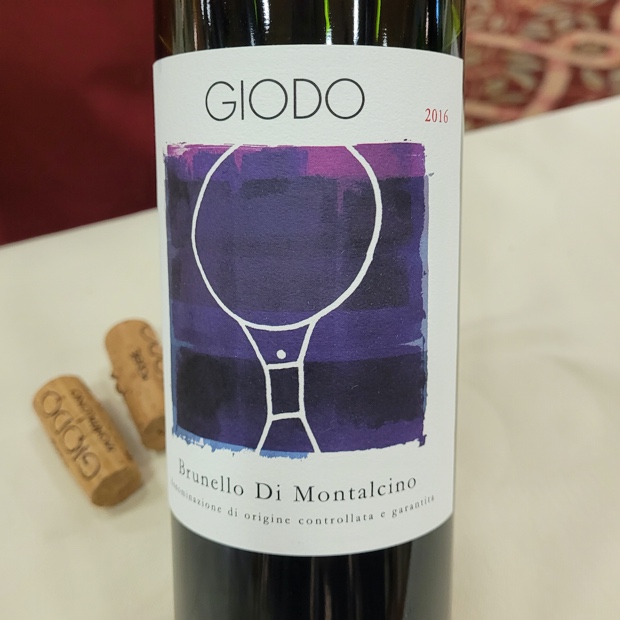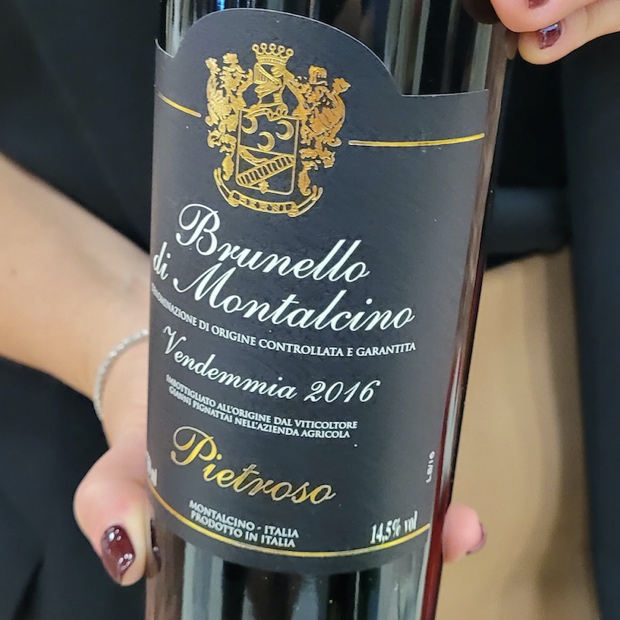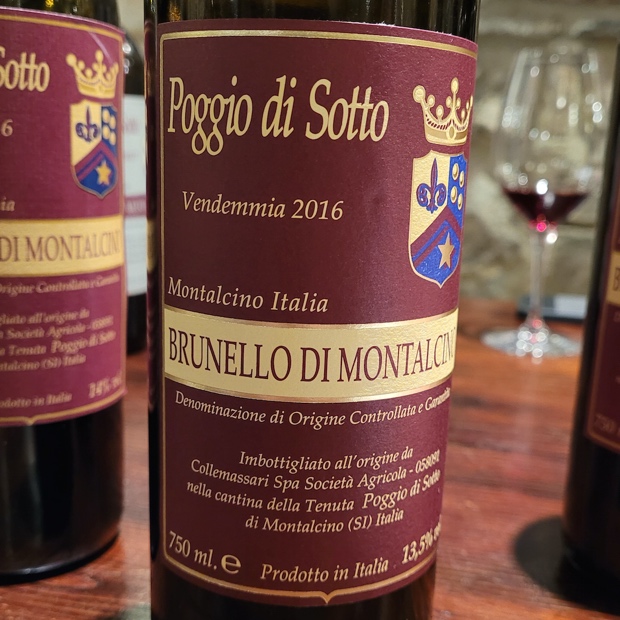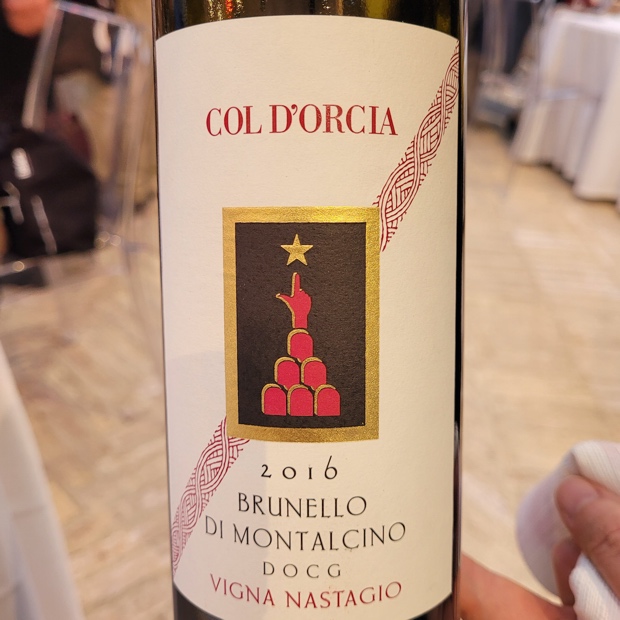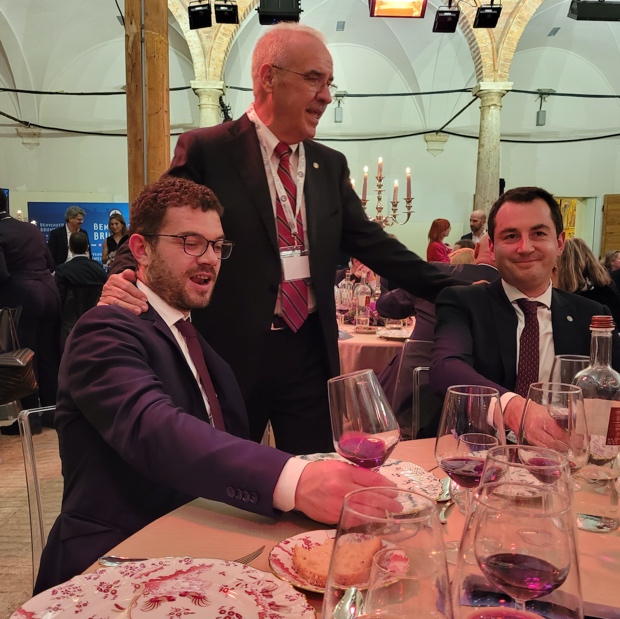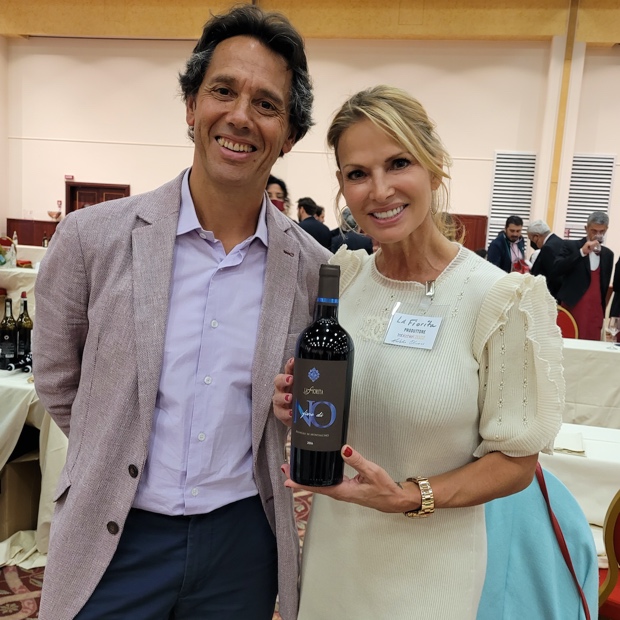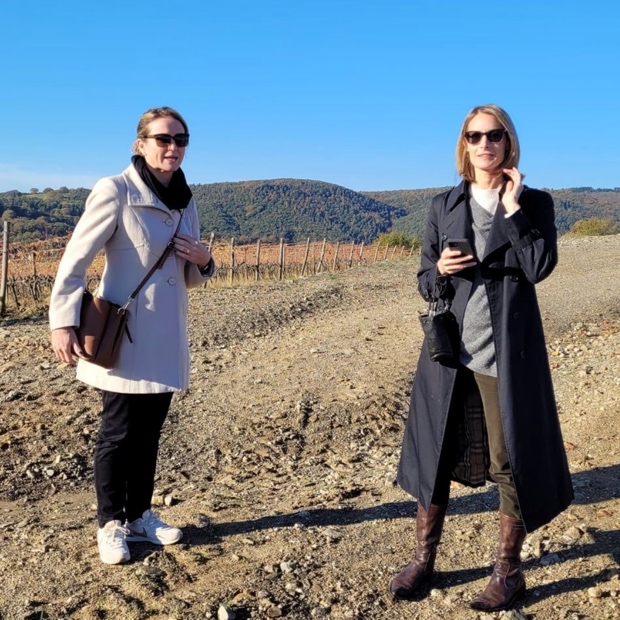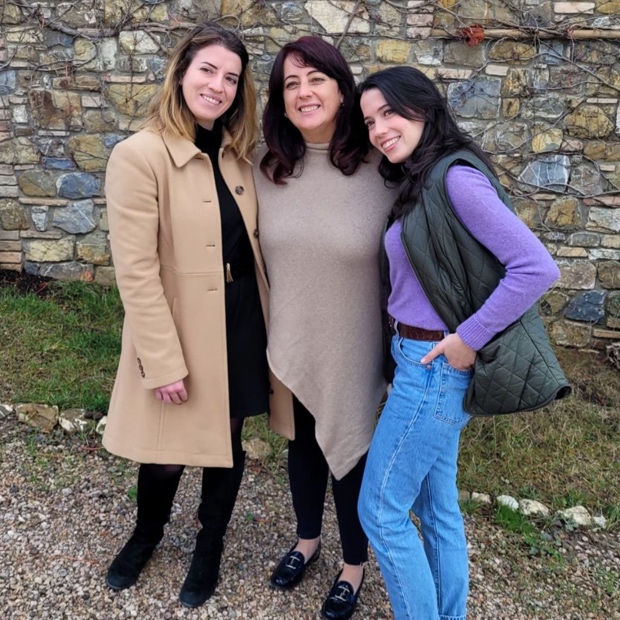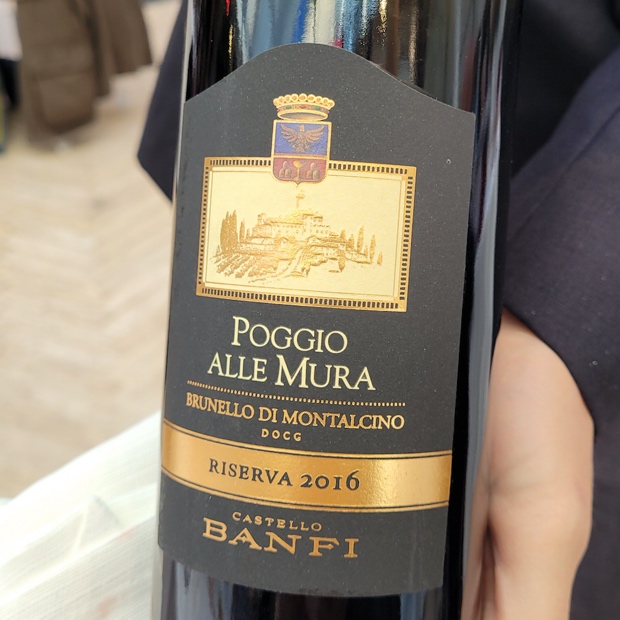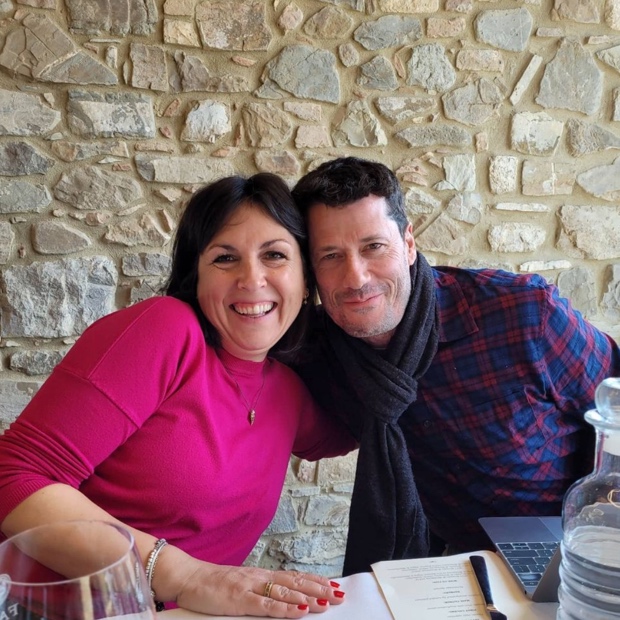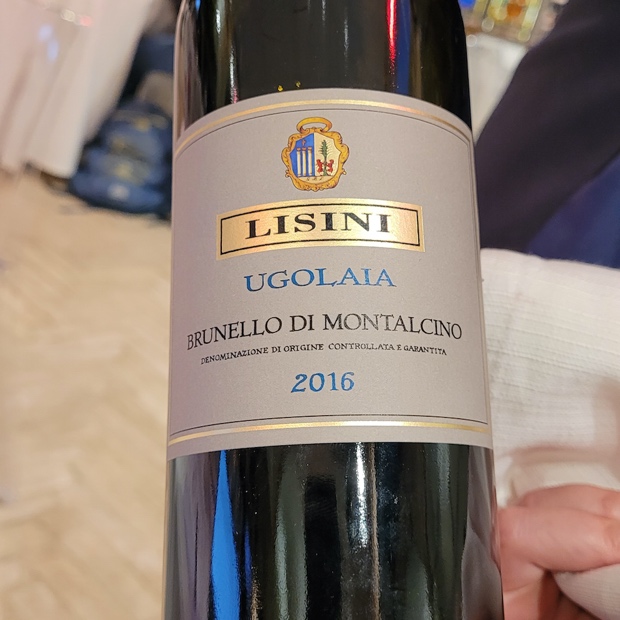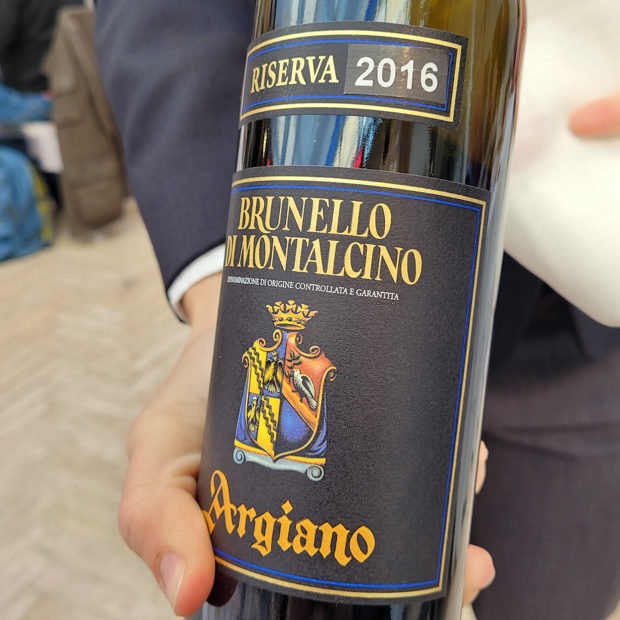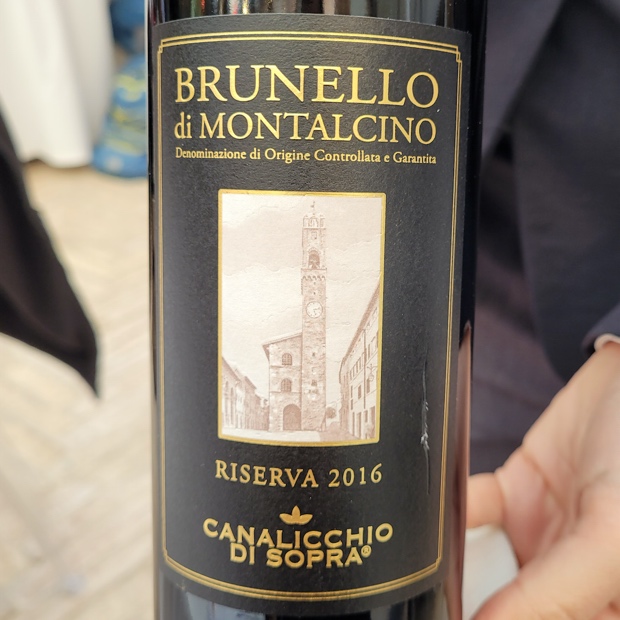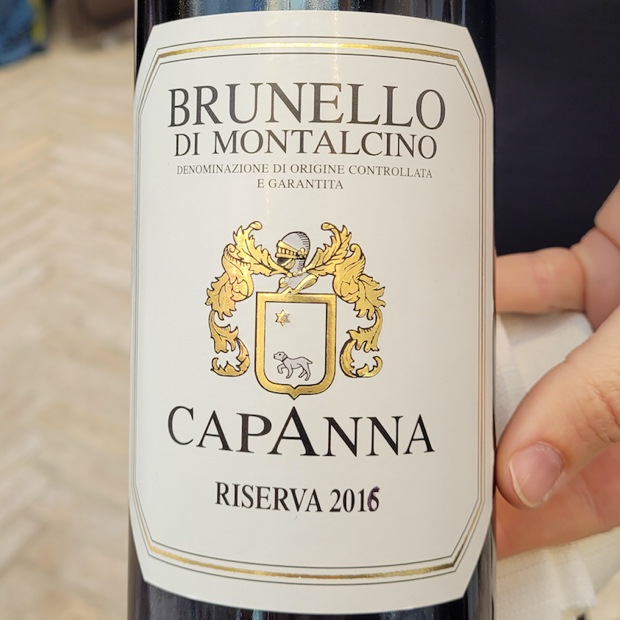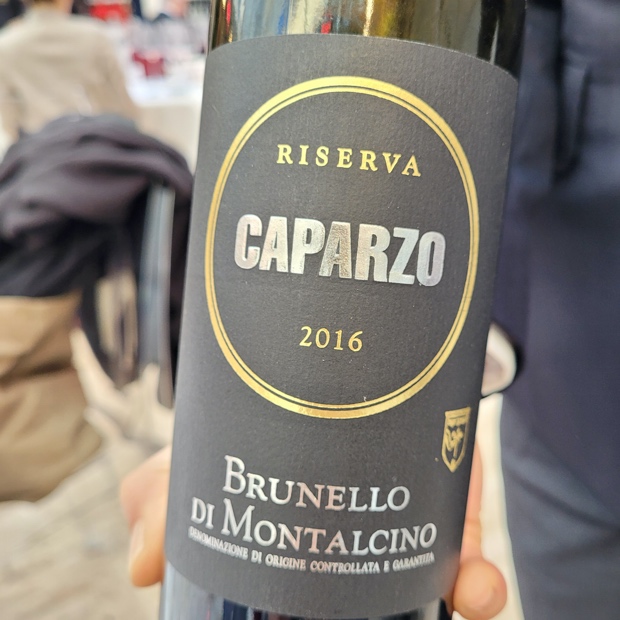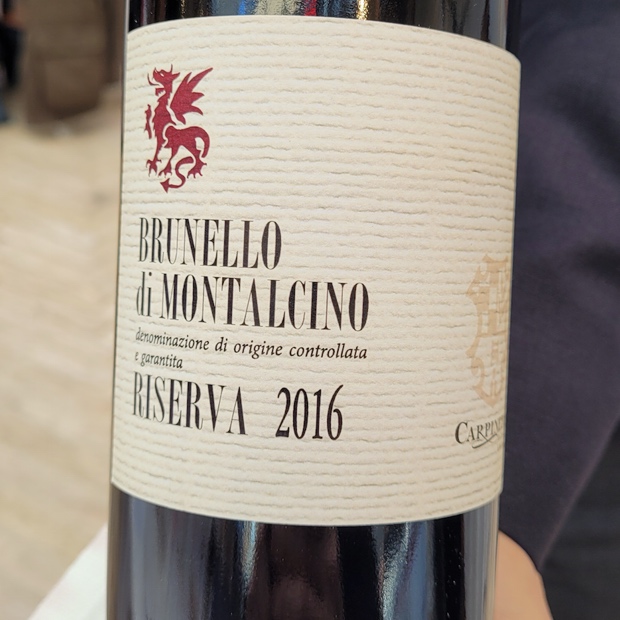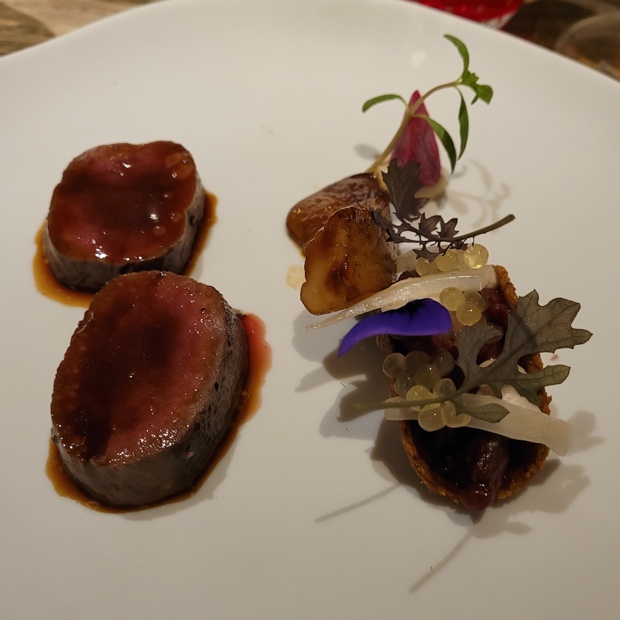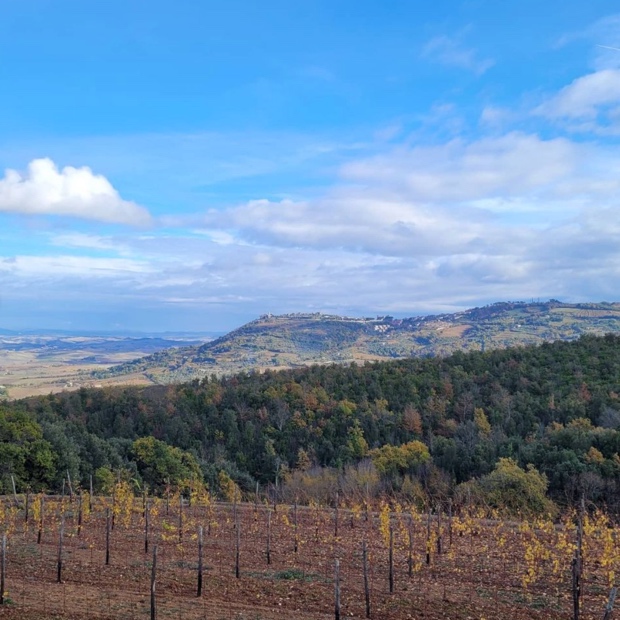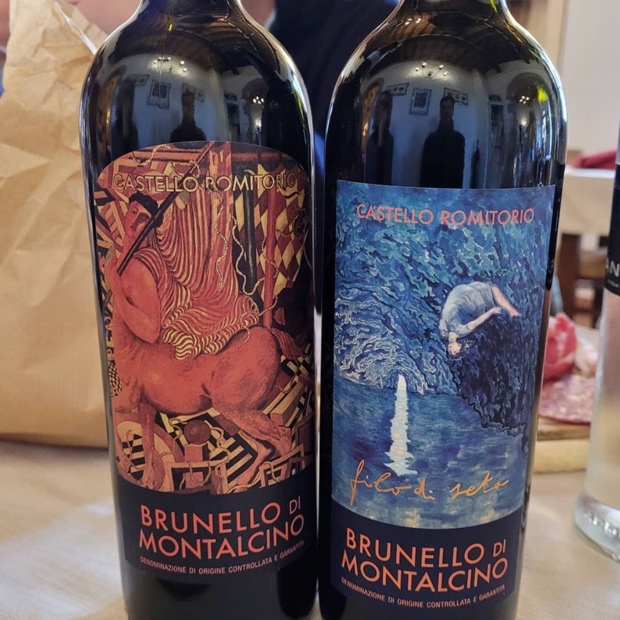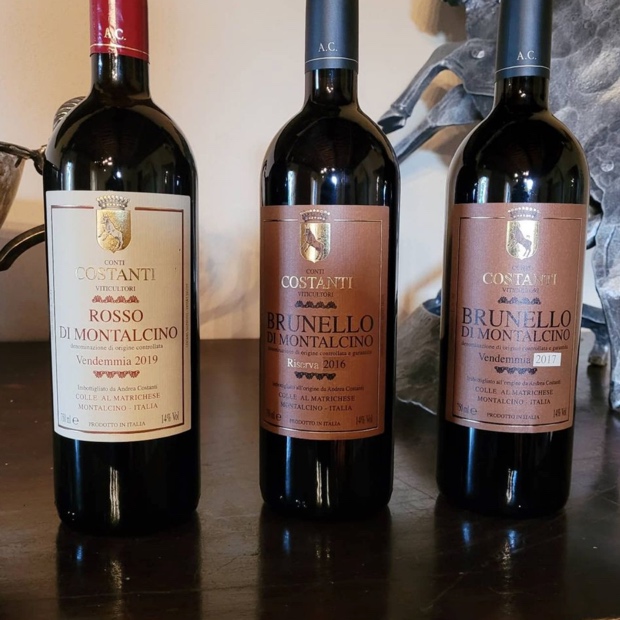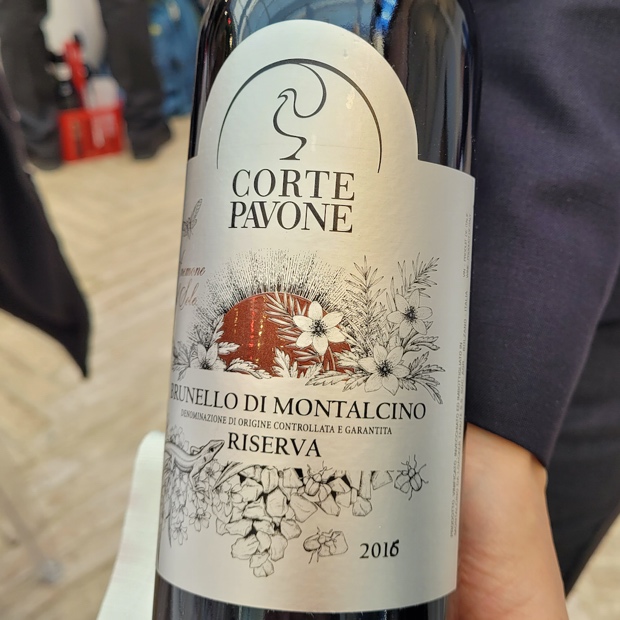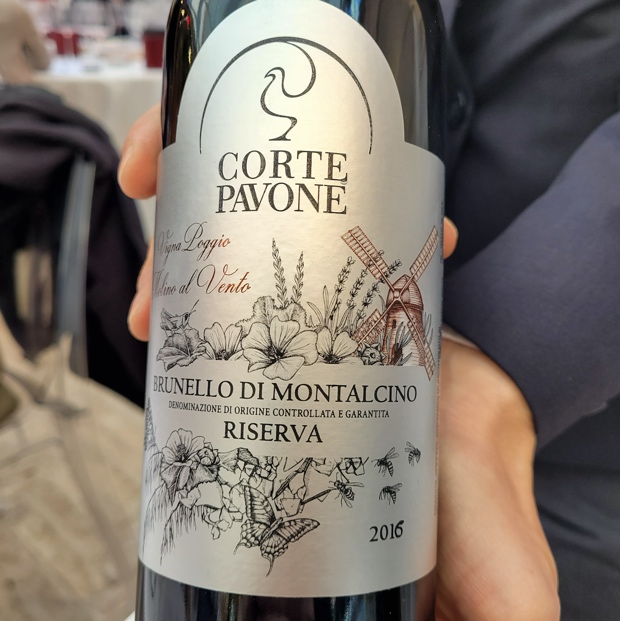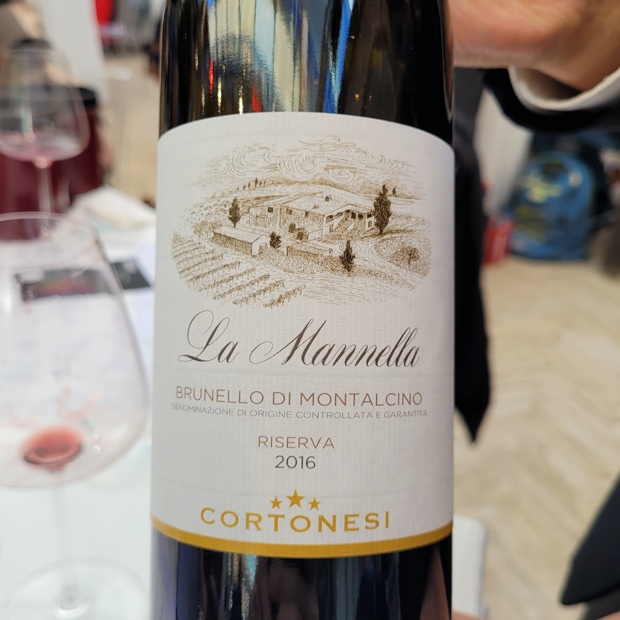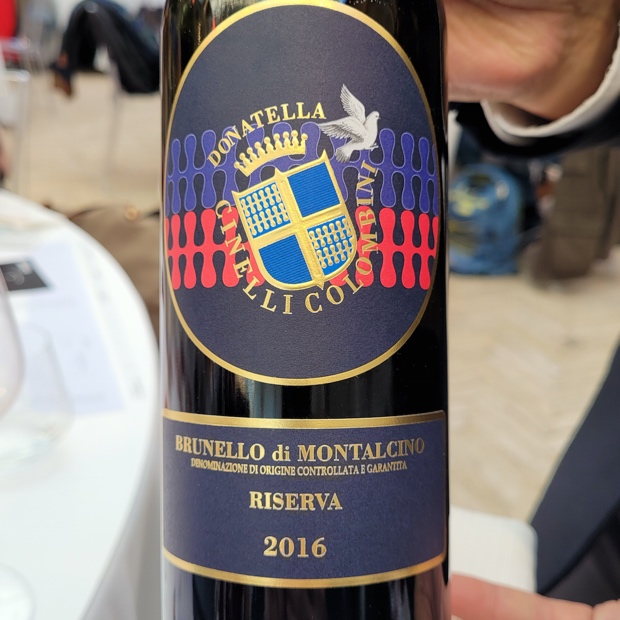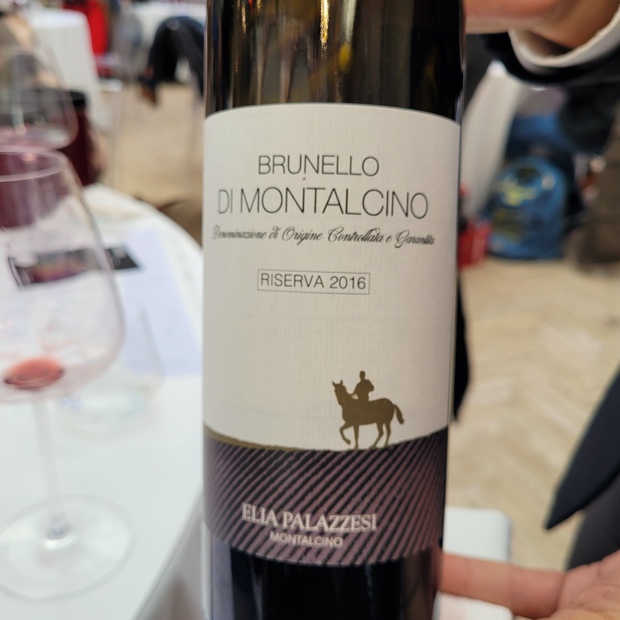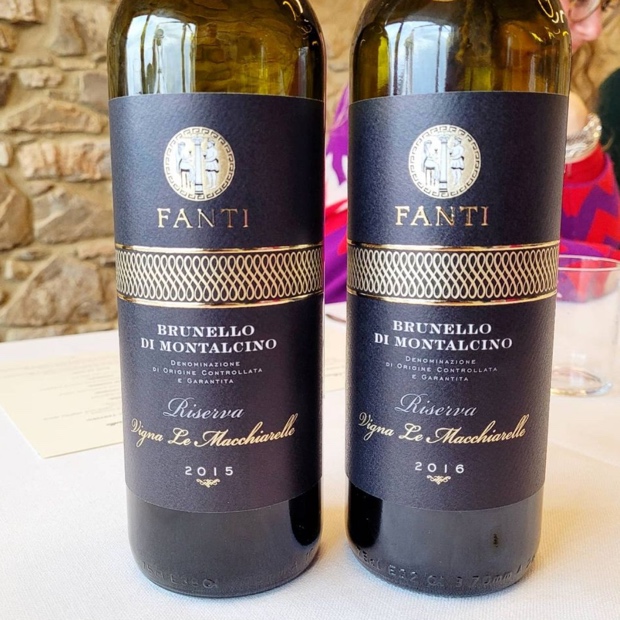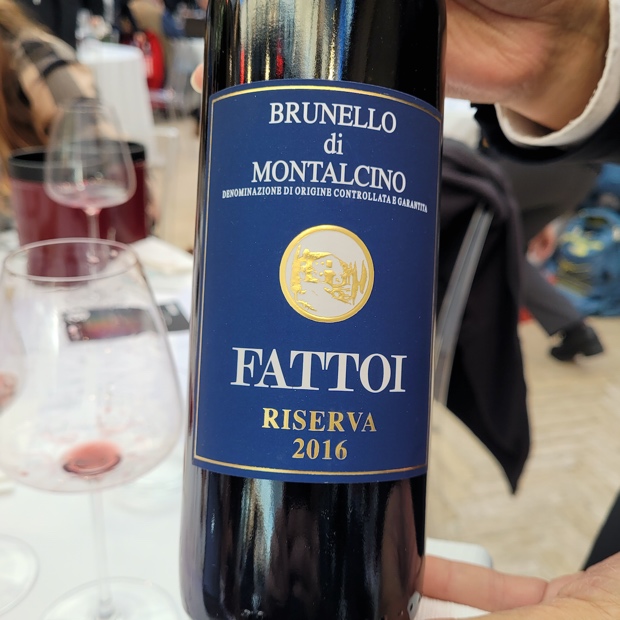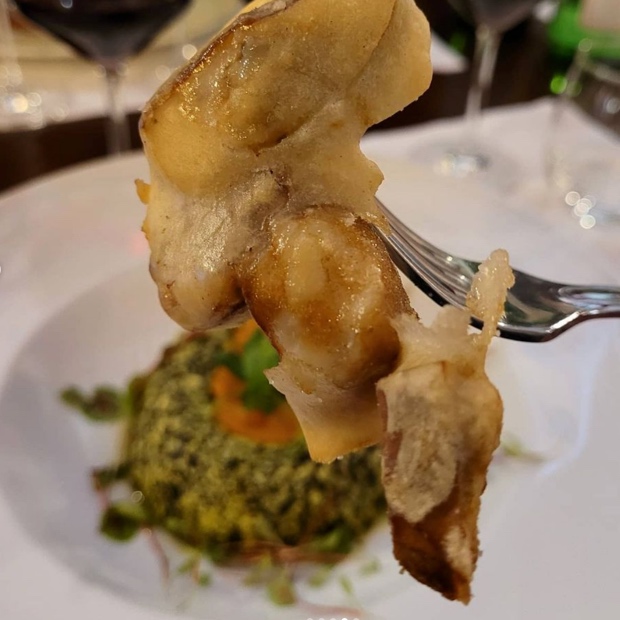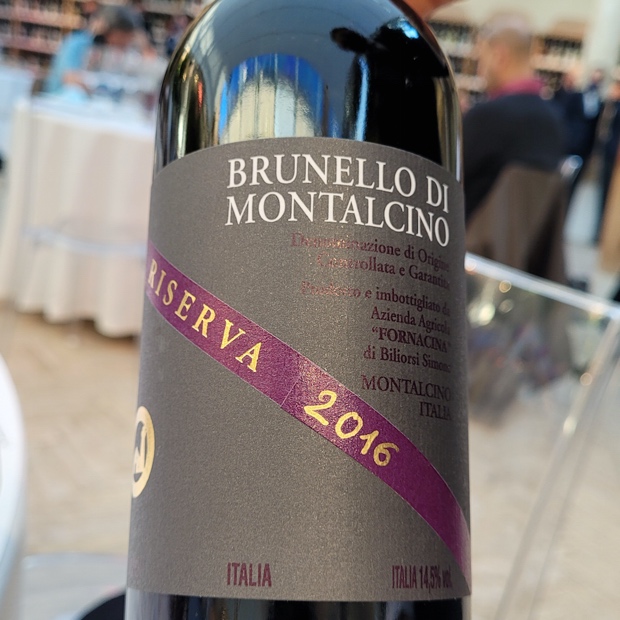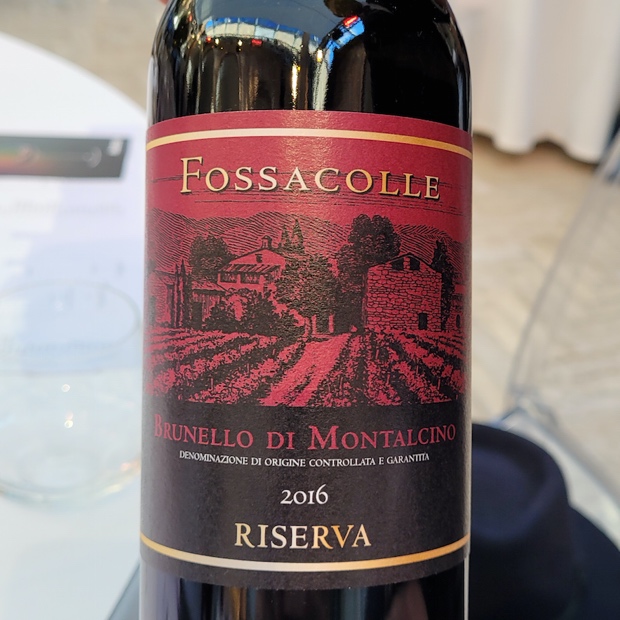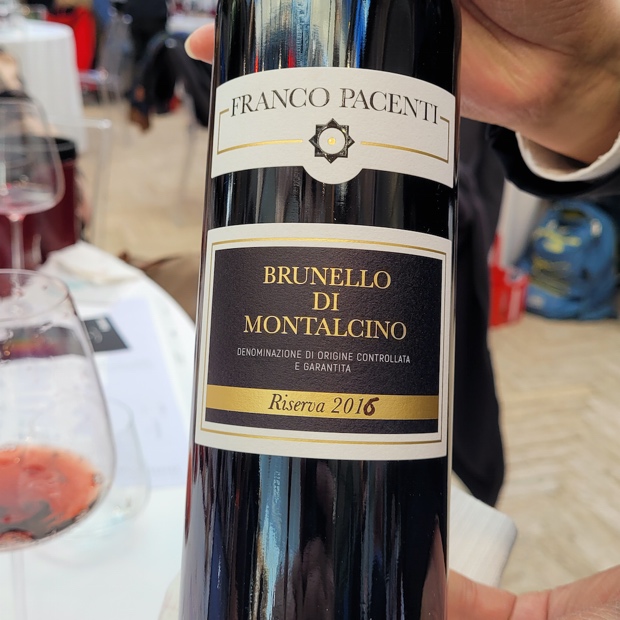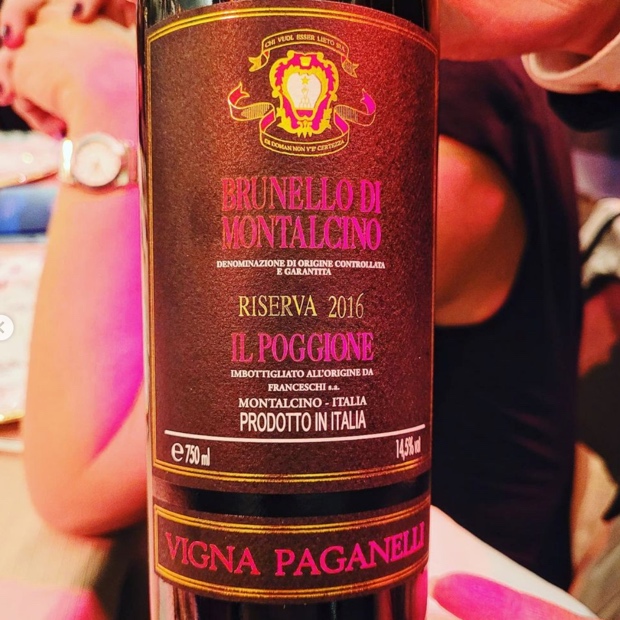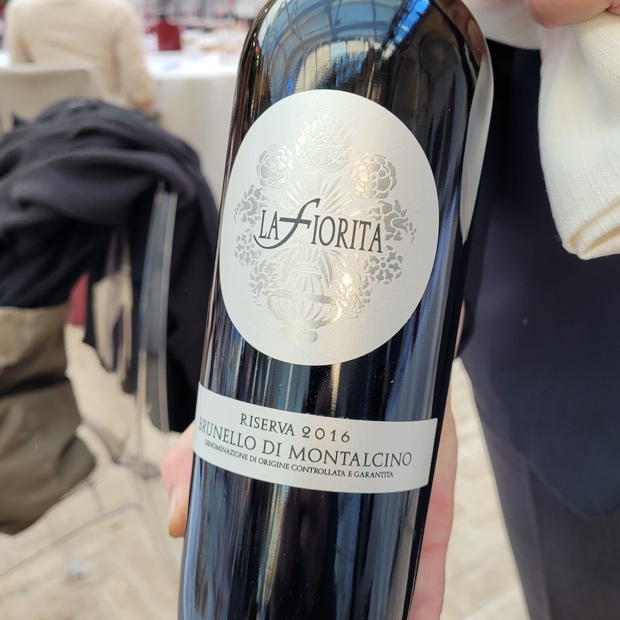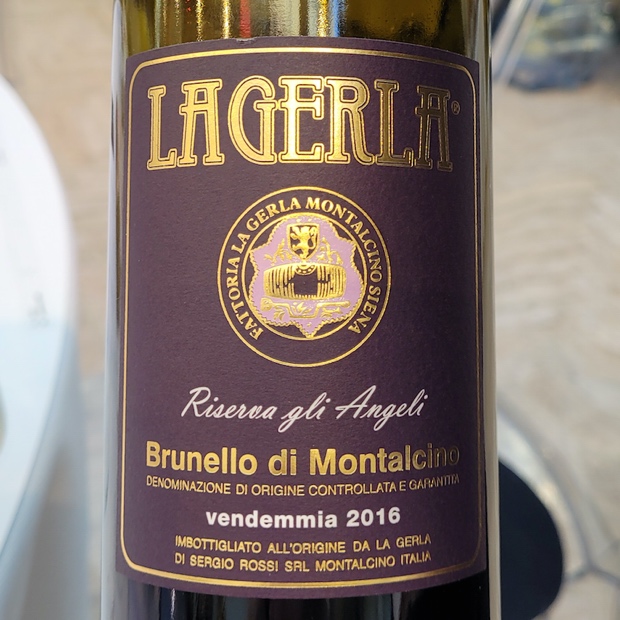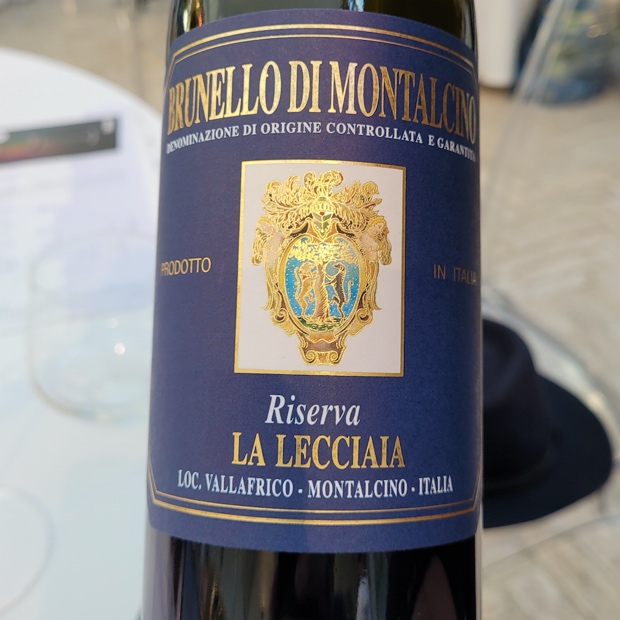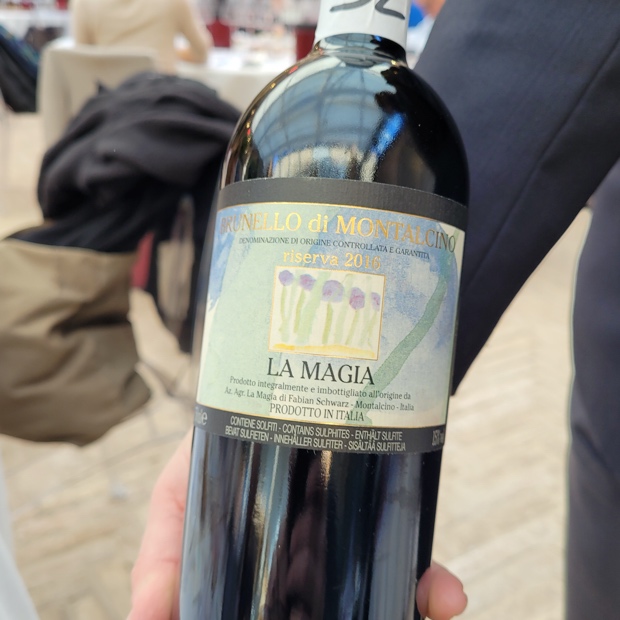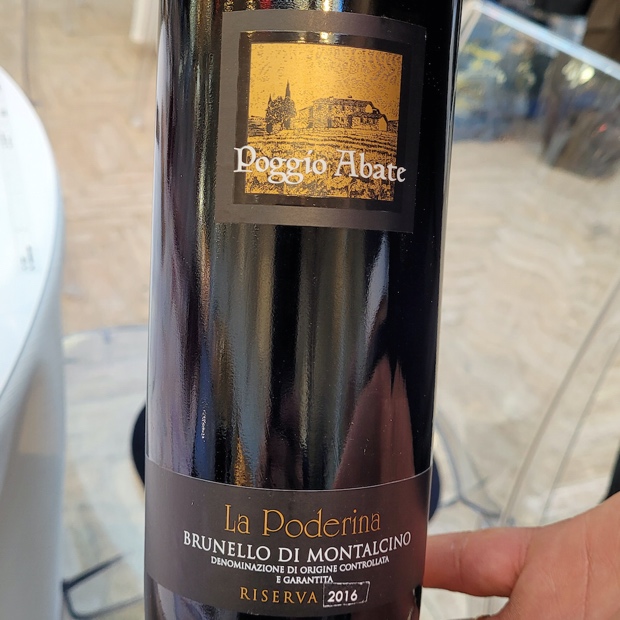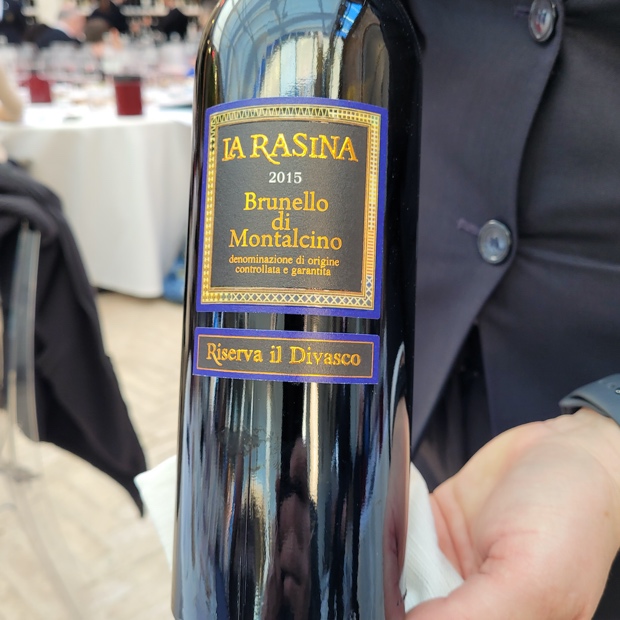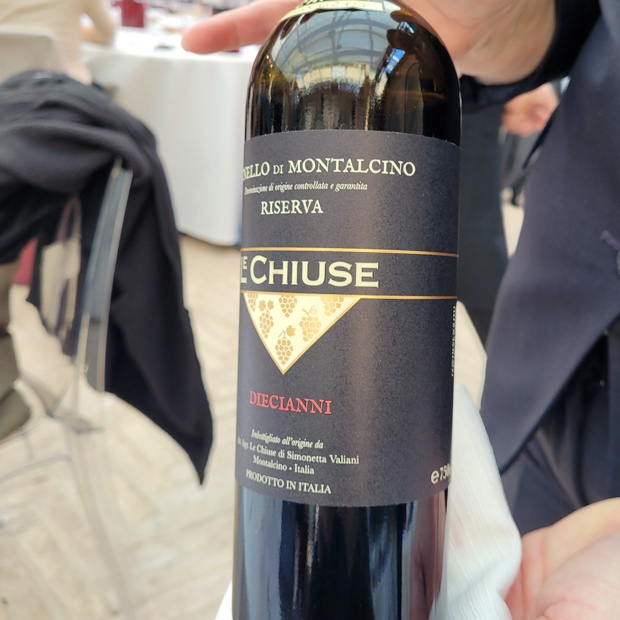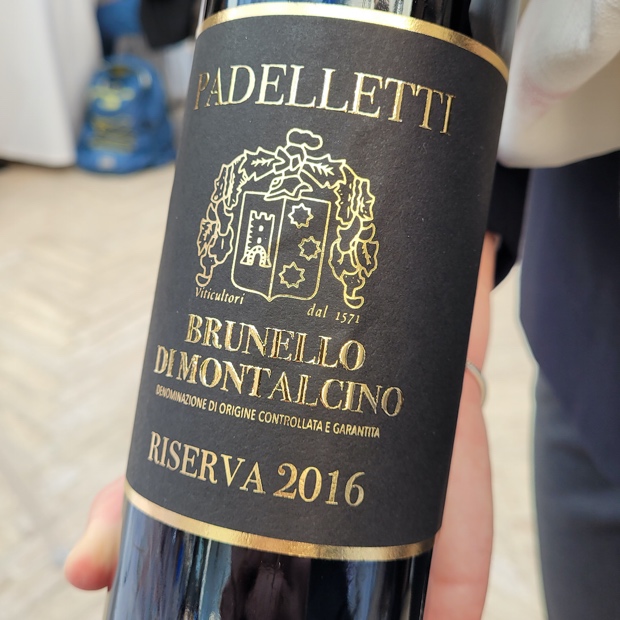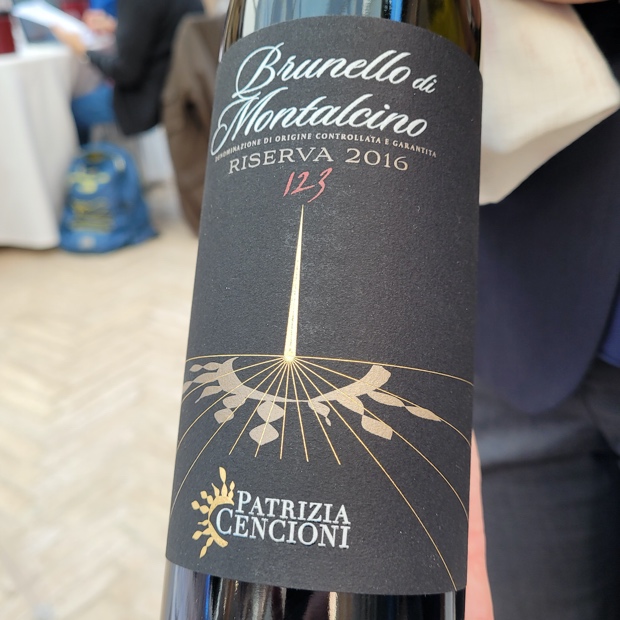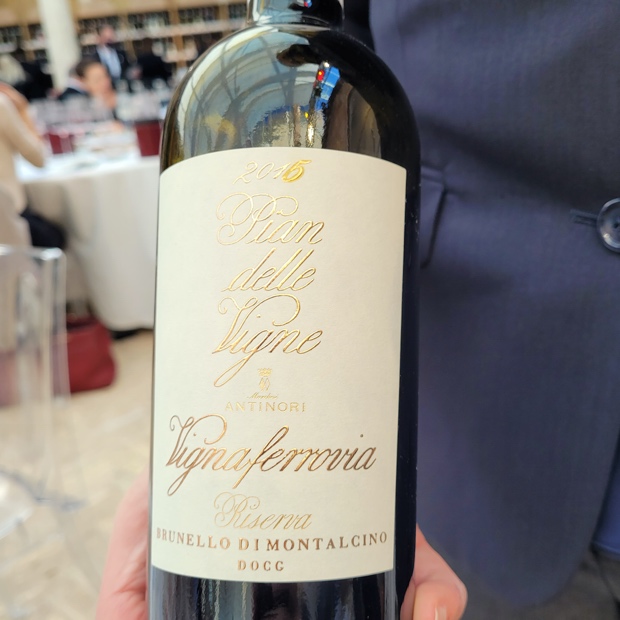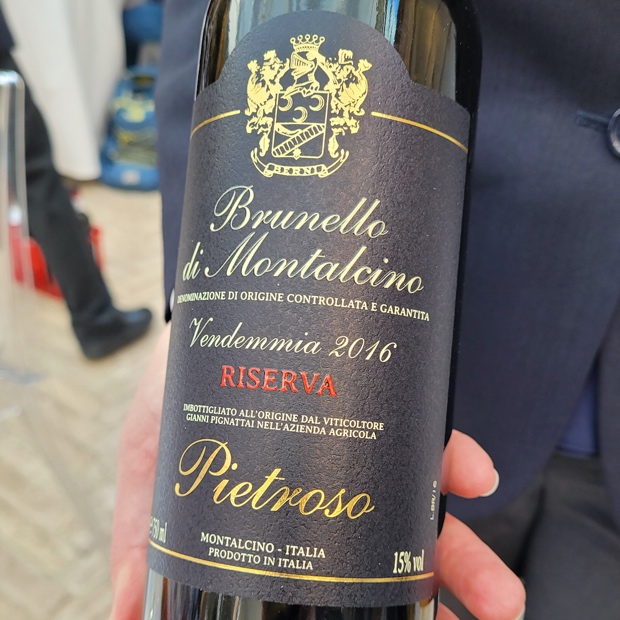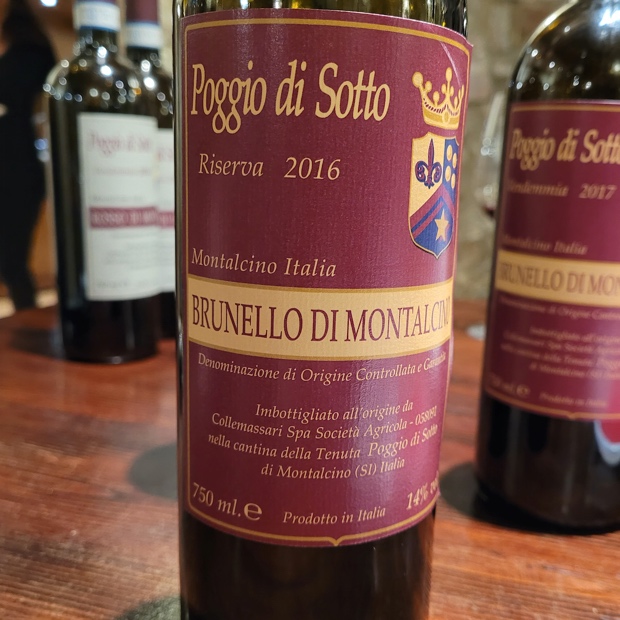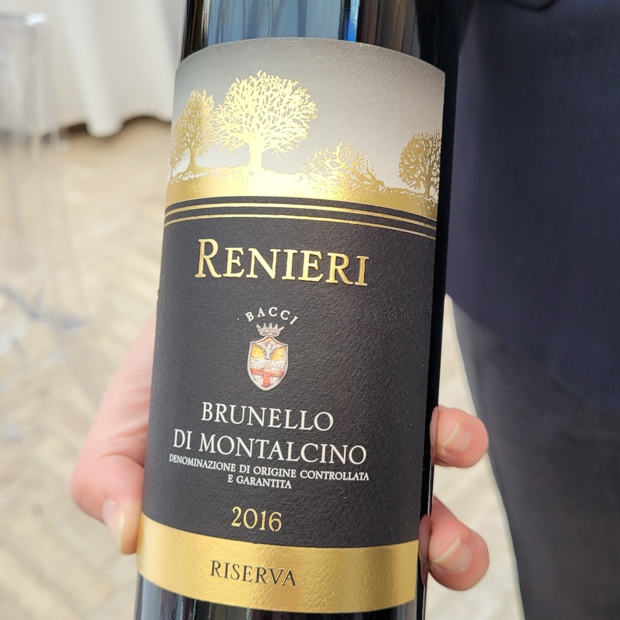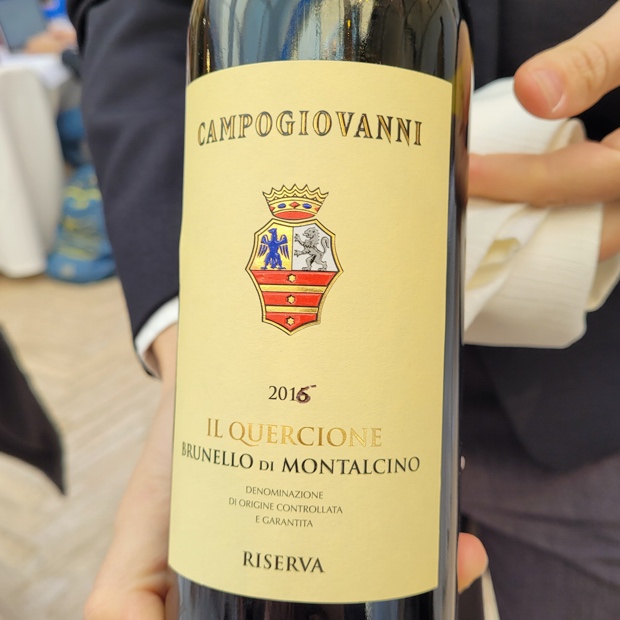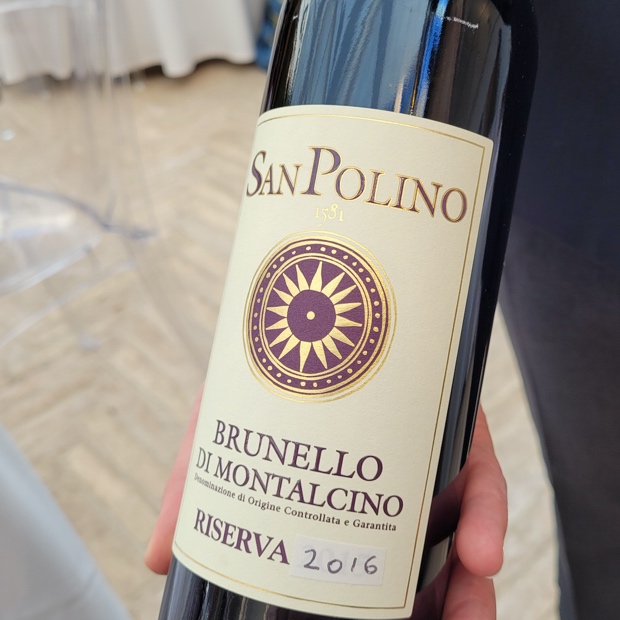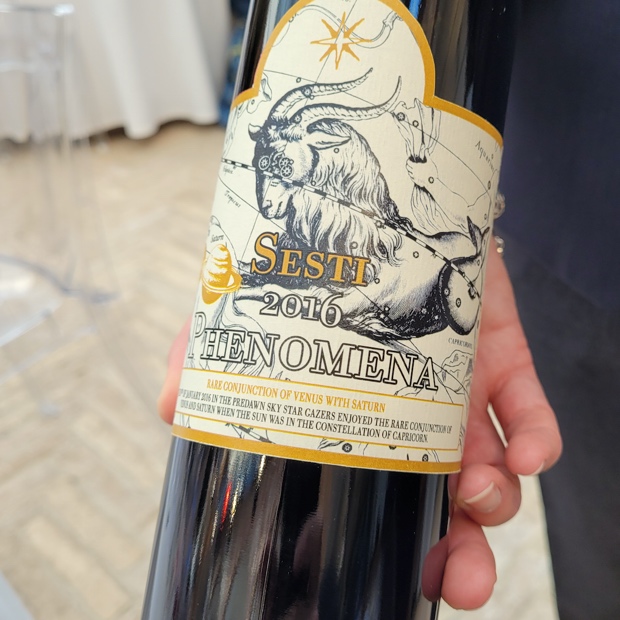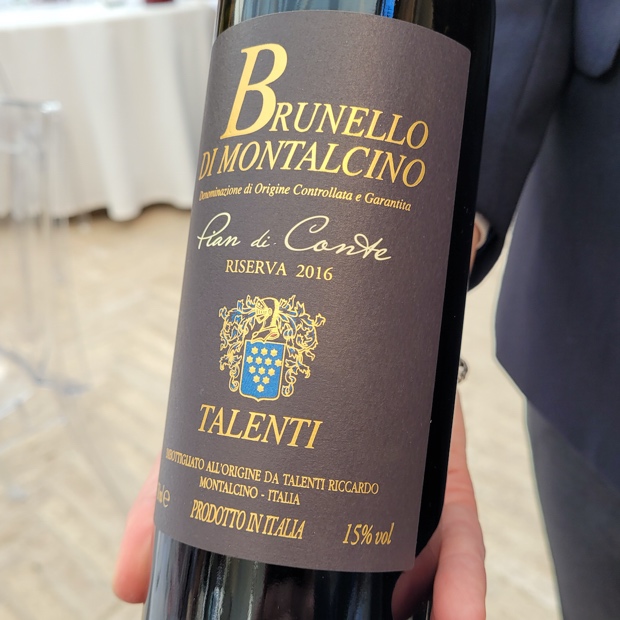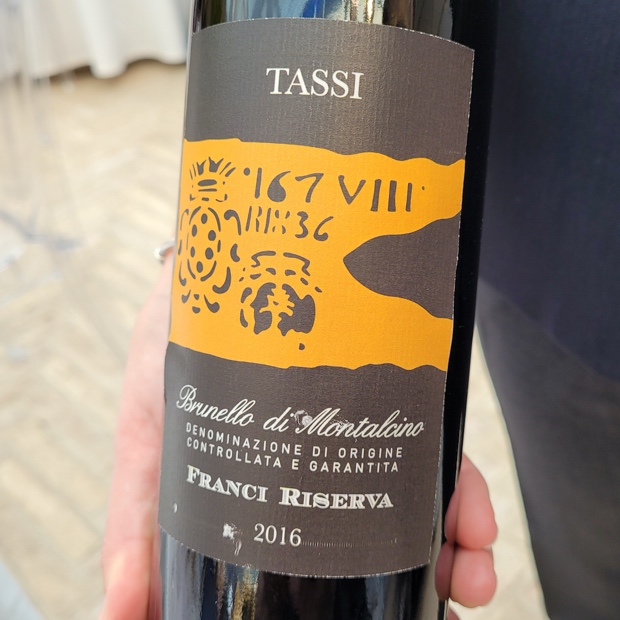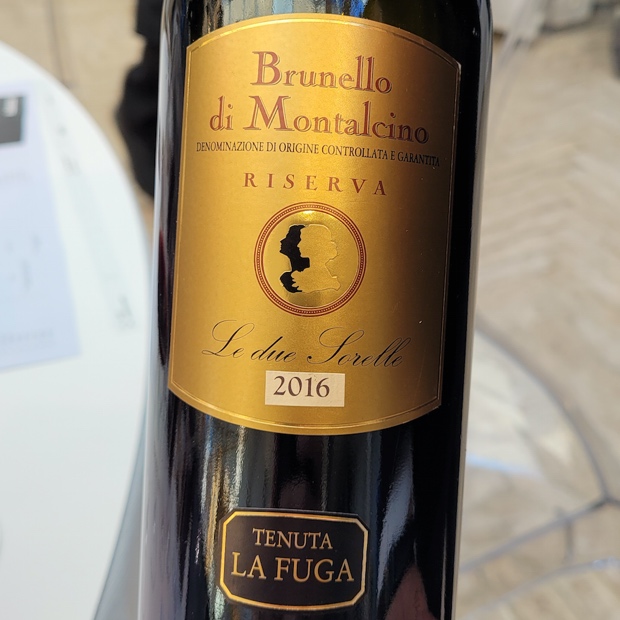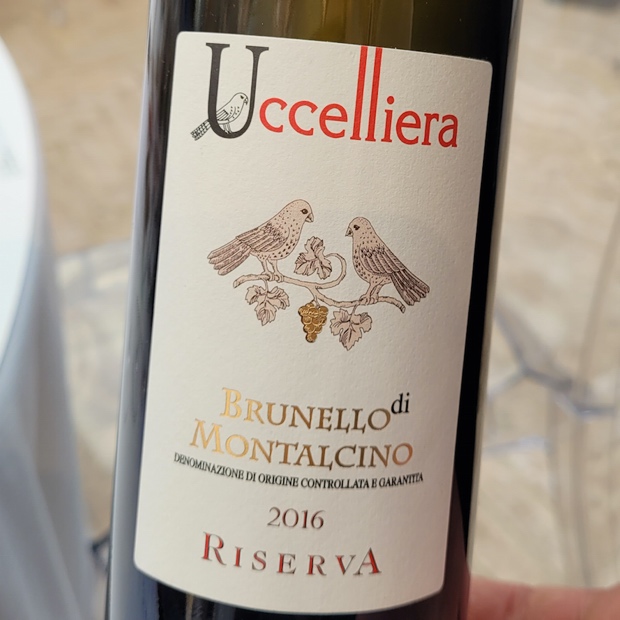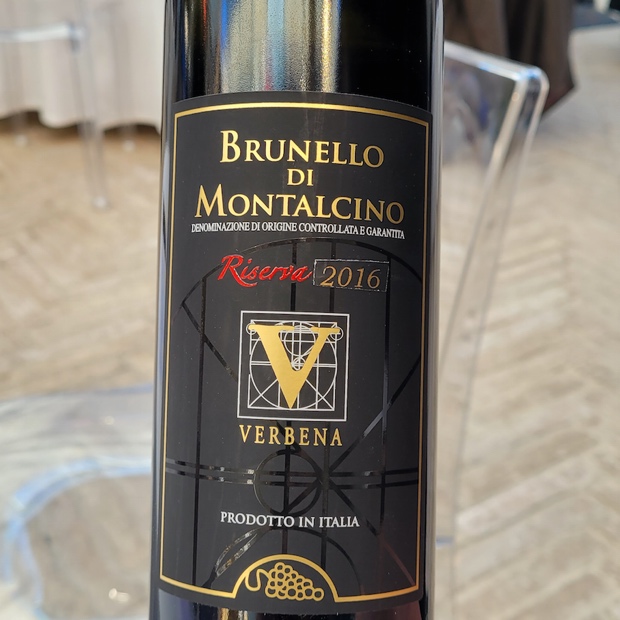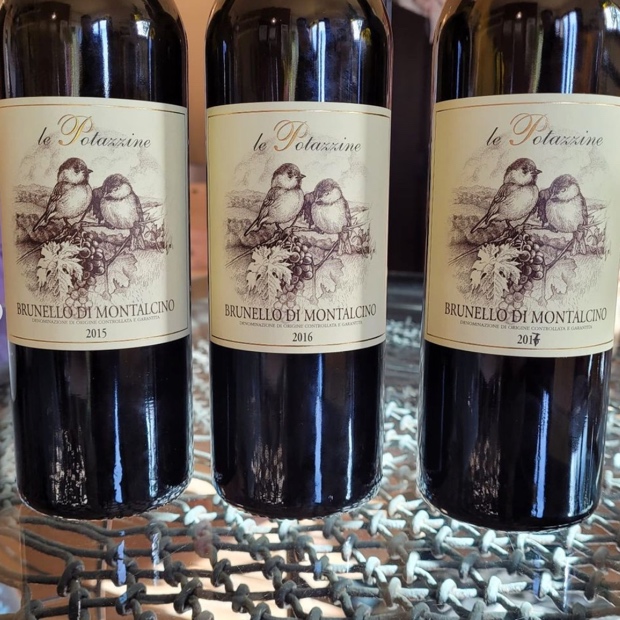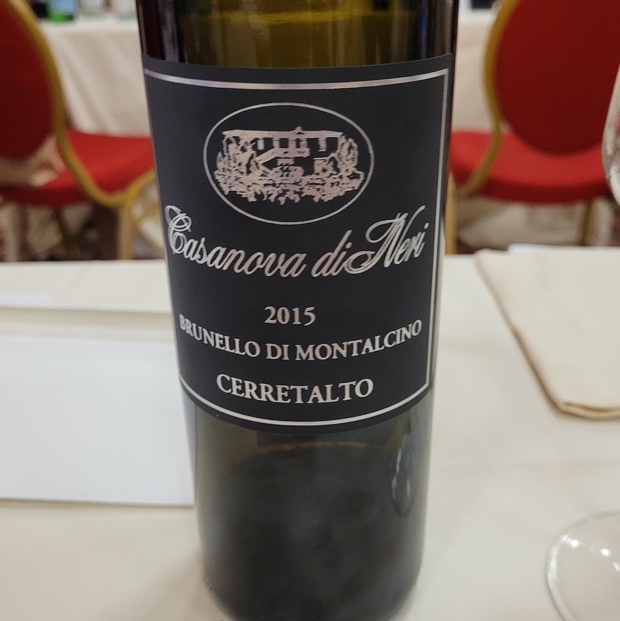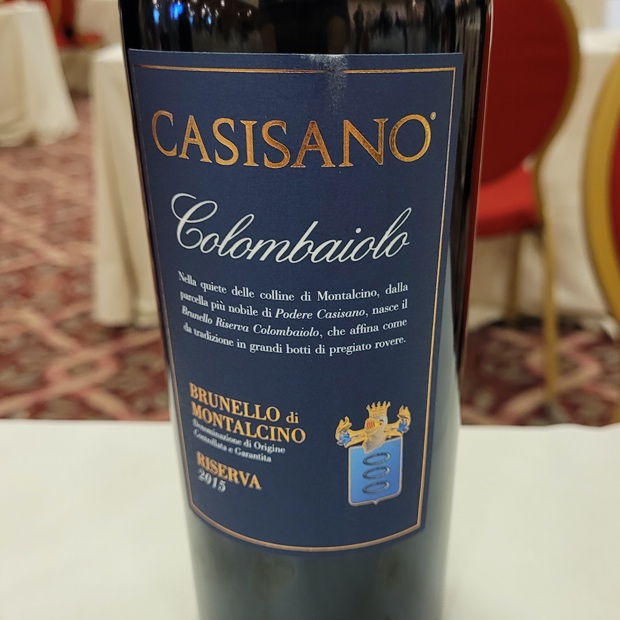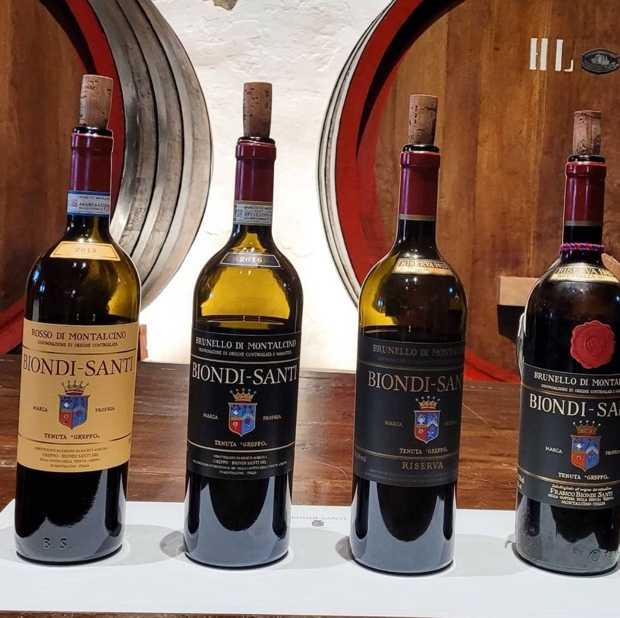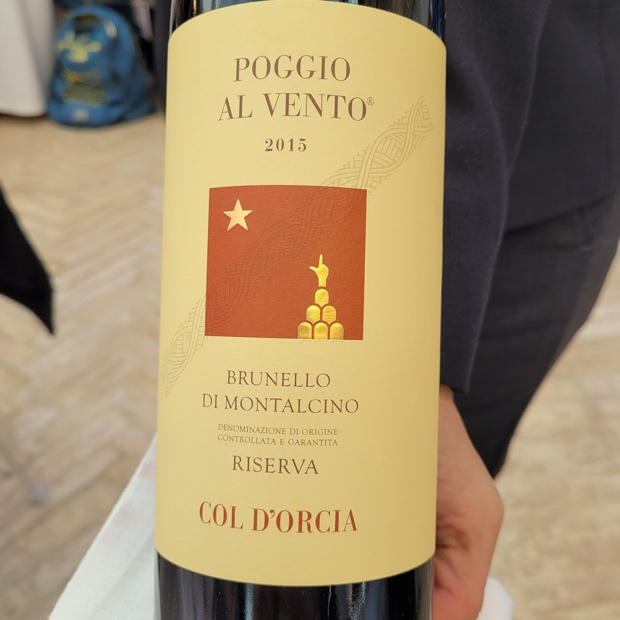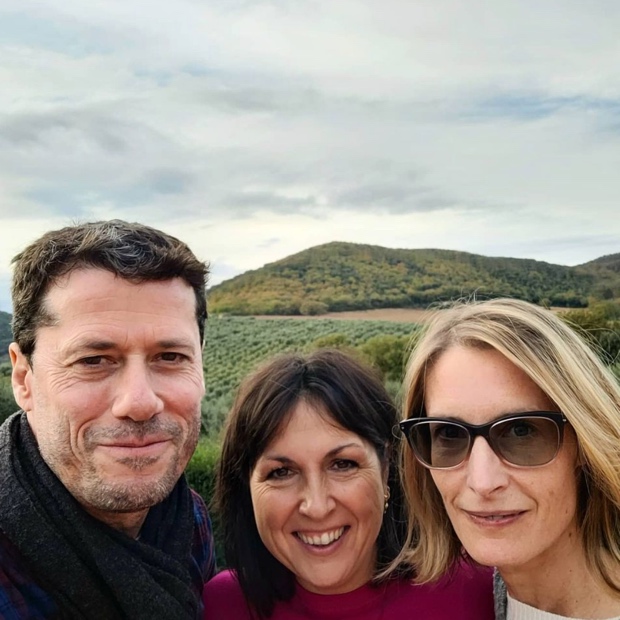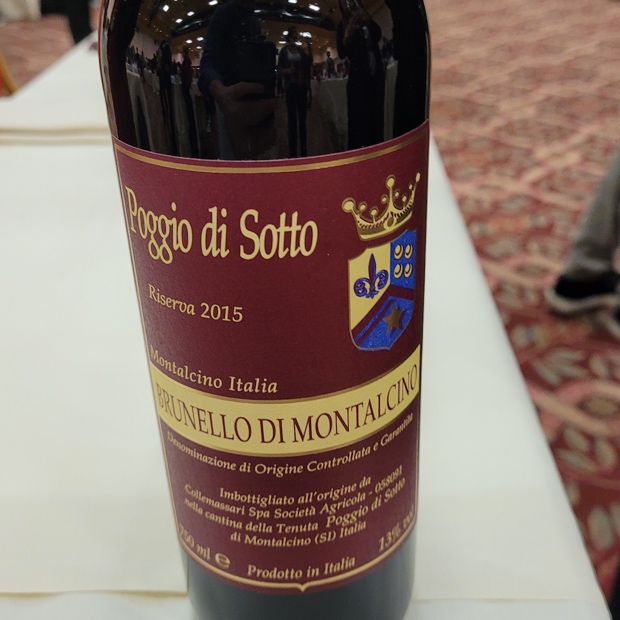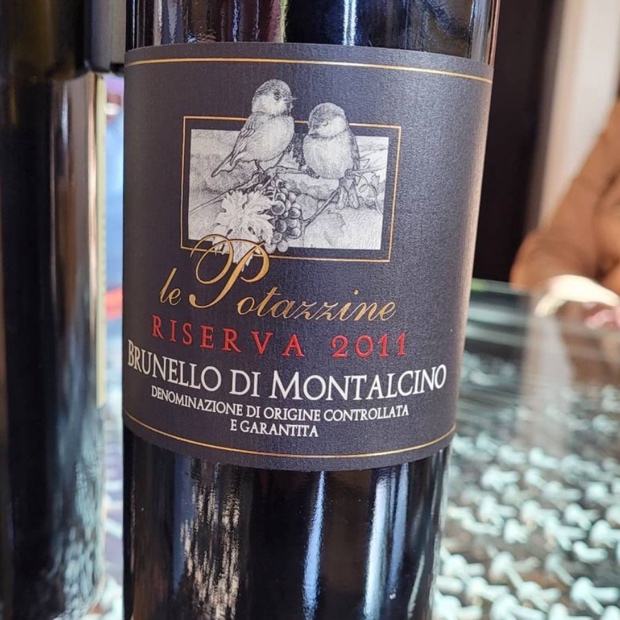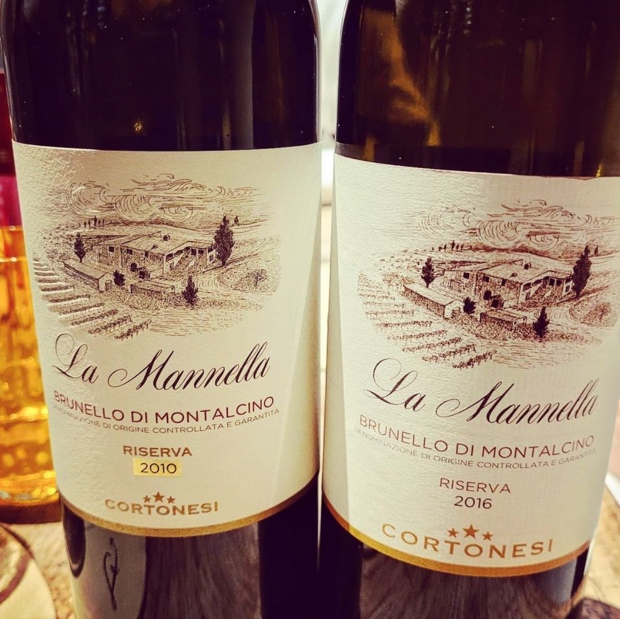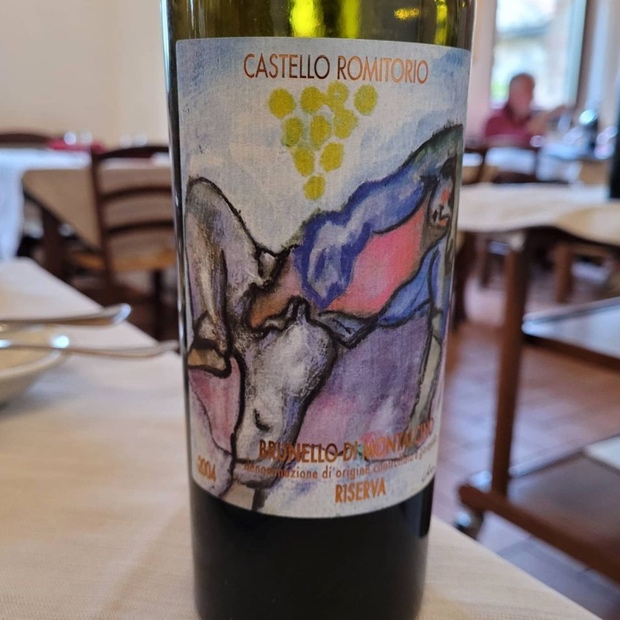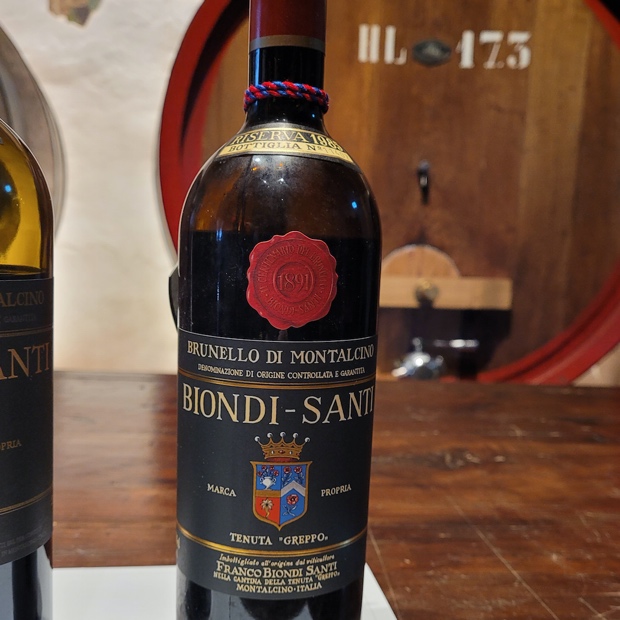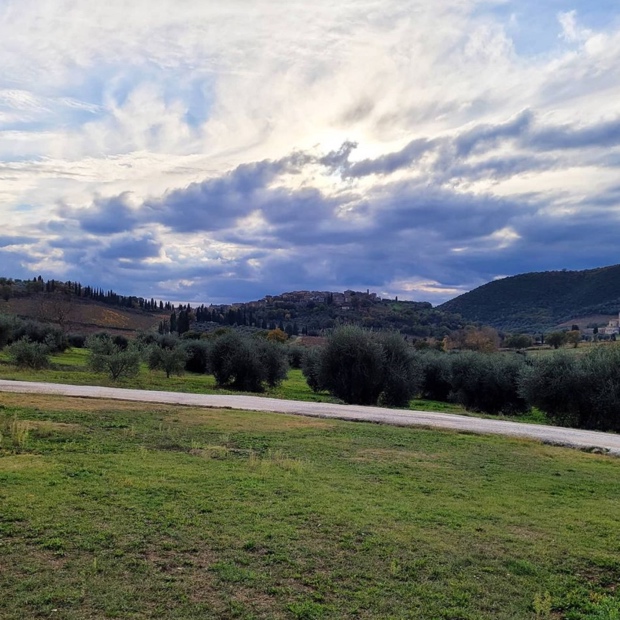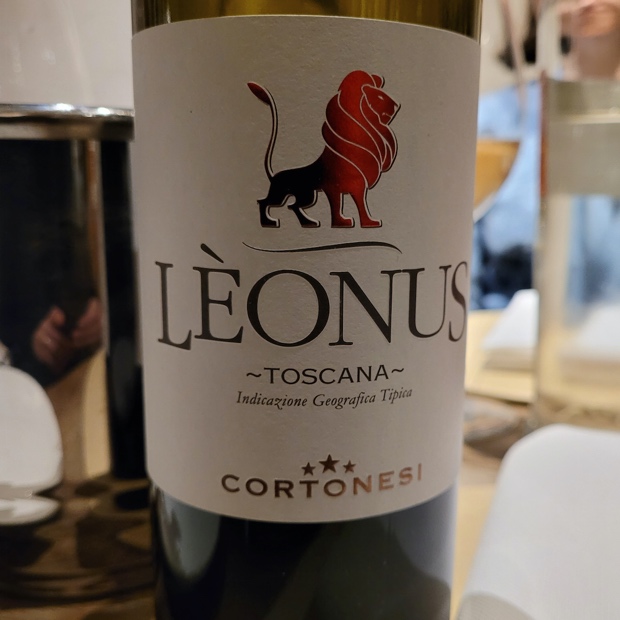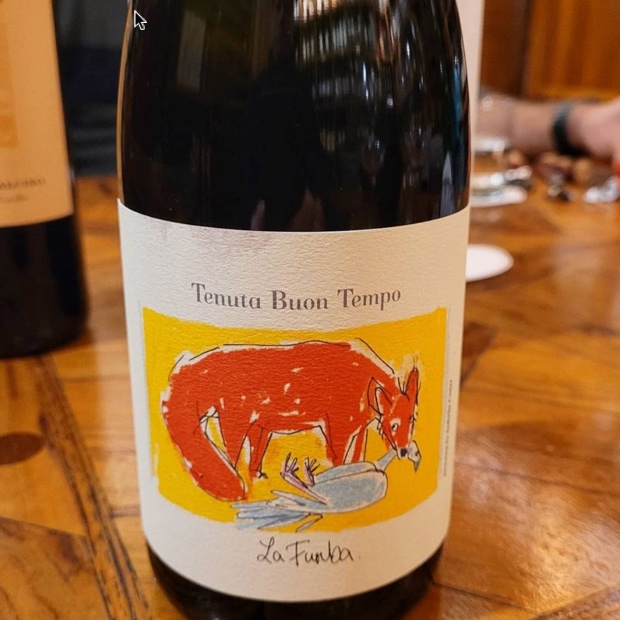Benvenuto Brunello 2023 in Montalcino and Toronto, the 2019 vintage, extreme climate events, preventative agricultural measures and 285 wines tasted
This lengthy report is Godello’s most comprehensive coverage of Montalcino to date. On November 28th, 2023 Benvenuto Brunello events took place worldwide, including in the two Canadian cities of Vancouver and Toronto. It was Godello’s honour and indeed his privilege to present the 2019 Brunello di Montalcino DOCG and 2018 Brunello di Montalcino Riserva DOCG to more than 150 sommeliers, trade, media and staff at Aria Ristorante in Toronto. The tasting was a big deal. There were many attendees in the room room who had heard Godello say this before. “No one of sound mind passes up the opportunity to taste Brunello from Montalcino.” The Toronto event received more than 350 requests for seats and those who secured a spot were afforded the opportunity to taste more than 70 Brunello di Montalcino in a very civilized way. A dozen sommeliers were on hand to pour and allow every taster to get through all the wines in the most efficient manner, to discover two vintages of these profound wines. The sangiovese available were an impressive collection from 34 archetypal producers.

Presenting at Benvenuto Brunello at Aria Ristorante in Toronto – November, 2023
Image (c) Draga – Front Row Images Inc.
Related – Montalcino Previews 2022: Brunello DOCG 2018, Brunello Riserva DOCG 2017
Godello’s presentation happened less than a week after returning from eight days spent at Benvenuto Brunello in Montalcino where he tasted more than 280 sangiovese. Of that number 60 percent were from the 2019 vintage, including the Annata split between the Classica, Vigna, Etichetta and Altra Tipologia. He also tasted two dozen 2018 Riserva along with some older vintages at estate visits to Biondi-Santi, Canalicchio di Sopra, Cortonesi, Gaja – Pieve Santa Restituta, Giodo, Il Marroneto, La Magia, Le Chiuse, Le Potazzine, Podere Le Ripi, Poggio Anitico, Salicutti, Talenti and Valdicava. At the anteprima in Montalcino 118 producers were represented with multiple wines available from each, including for the DOCs of Rosso di Montalcino and Sant’Antimo. Less than half that could have been there but there are several reasons for the absences. For some producers the quality of the wines do not arrive at peak form when the November anteprima comes around. Many bottle their Brunello in May because “that’s when the Annata are ready” but it also allows a rest period for six months in bottle ahead of Benvenuto Brunello and eight before a January release. Then there is the control factor – not being able to test each bottle yourself and to trust other professionals to make sure your wines are showing at their best. It’s tricky and is not a system or timing that works for everyone.

Benvenuto Brunello at Aria Ristorante in Toronto – November, 2023 Image (c) Draga – Front Row Images Inc.
Extreme climate events and preventative agricultural measures
Montalcino is just 73 kms to the seaside village of Marina di Grosseto and so while it may be an inland growing area it’s proximity to the sea and its protection to the immediate south from Monte Amiata do create a recognizably prominent Mediterranean climate. It will snow in the winter and it will get oppressively hot in summer. Rainfall numbers have lessened but they have not reduced to a trickle. What has changed are the extremes of climate. Consider a few recent vintages, 2017, 2021 and 2023. In 2017 there was no precipitation between January 1st and August 31st. That is full on drought. In 2021 there were April 6th and 7th frosts that wiped out vast tracts of just budded vines. The current vintage is an unmitigated disaster. Some frosts early, again in August which also experienced a heatwave that caused a significant rise in PH. From May 15th to June 15th rainfall every afternoon made the control of the Peronospera fungus almost impossible. We call this Downy Mildew, oomycete microbes that are obligate parasites of plants induced by an unrelated fungus called Plasmopara Viticola causing the powdery mildew.
The problem in ’23 was that the mildew by-passed the leaves and went straight to the flowers on the bunches, but the fungus also chooses to not discriminate between the organic and conventional producer. Some areas escaped, especially that of the Sesta Valley between Castelnuovo and Sant’Angelo. The estates in this area (Ciacci Piccolomini d’Aragona, Collosorbo, Agostina Peri and Piancornello) were very fortunate to enjoy a good quantity of healthy grapes. Nothing to do with organics mind you, perhaps specific airflow coming from the Orcia Valley, or just dumb luck. Other estates were not so lucky. Fabian Schwarz of La Magia siad he would normally spray copper and sulphur eight to 10 times per season – in that 30 day stretch alone he had to spray 20 times. Maximilian Hildebrandt of Salicutti noted that production was down 35 percent because of the Peronospera and two hailstorms in August and so no Sorgente Vineyard Brunello was made. The challenges faced made it hard to reach their aim “to create the wine on the plants” from a vintage when the usual four sulphur and copper treatments per year were increased to a staggering 22. That’s more heavy metal on the ground than Wacked Open Air. If you missed that reference it’s the most famous Heavy Metal festival held in Germany.
The combined losses of these extreme climate events has been heavy. Up to 90 percent in northeastern Montalcino and anywhere from 10-50 in most other parts. At La Magia the number was 40 percent due to the Peronospera, but also hail. The 2023 vintage was also higher in pH at 3.7, mainly due to a very hot August and the number is normally down at around 3.3. “Maybe winter will see it drop,” said a wishful Schwarz. Vincenzo Abruzzese of Valdicava shrugged off the disaster. “I’m sad of the situation, but I’m not cutting off my arms.” Resiliency is strong, the people and plants will rebound and so much has been learned. Alberello planting is on the comeback “because you are working with three dimensions and every plant is by itself,” explained Fabian Schwarz, “including how it reacts to wind and rain.” But unfortunately that does not include dealing with animals like wild boar and deer. For Abruzzese Alberello vines require less water and can improve sangiovese’s ability to combat climate change, especially at a density of 6,000 vines per hectare. Guyot is replacing Cordone Speronato in many vineyards and almost no one is shoot topping anymore. Giampiero Bertolini of Biondi-Santi elucidated the concept of how plant structure and canopies are managed in a new way, with two parts coming up and together, to have the ability to change trajectory, to open and or close depending on the needs in relation to the weather. At Salicutti they are no longer cutting off the tops of the plants. This to protect them and keep the arches down, “like having a picnic under a big tree,” explained Hildebrandt, “so your butter is not melting.”
Lorenzo Magnelli at Le Chiuse is looking at creating micro-oxygenation in the soils to promote vine root growth. Cover crops help with this. Also less passages with the tractor to avoid compaction. Fabian and others have begun a two-step pruning process, the first in winter and the second after Easter, well past the time when the first buds had already emerged. This helps to delay the total number of buds before the typically potential Easter frosts though it will not help if a freak occurrence comes in May. And the way climate is trending that will surely happen. However “when you speak about quality,” reminds Schwarz, “it is not because of training systems, it’s from soil and micro-climate.” At La Magia he is also experimenting with anti-fungal activity using Bacillus Amyloliquefaciens, a root-colonizing biocontrol bacterium. “You buy one package and replicate it with a bioreactor,” explains Fabian. He makes a solution to spray in the vineyards as an organic way to ward of odium. The machine was originally purchased to replicate indigenous yeasts for fermentations but now serves a dual purpose.
A territory of four slopes
The northwest slope of the Montalcino hill is where poderi like Cortonesi’s La Mannella, Capanna, Pertimali from Sassetti Livio and the lower side of the Montosoli hill are located. There is great interest in this quadrant because the soils are some of the most variegate from farm to farm and places where really fresh wines are made. The southwestern slope is where you will find producers like Pietroso, Il Palazzone and Le Ragnaie but also the gateway further west to Castiglion del Bosco, Le Potazzine, Corte Pavone and Romitorio. And further southwest you reach Pian delle Vigne and Pieve Santa Restituta.
The northeastern slope is a unique location with the Orcia Valley spread out to the east and the south. These are the wide-open spaces and rolling hills of Montalcino where the clays are less compact, the calcaire can be quite prevalent and the elevations relatively lower. Here you will find producers like Il Marroneto, Casanova di Neri, Le Chiuse, Ridolfi, Canalicchio di Sopra and Franco Pacenti. The southeastern slope covers everything south and southeast of Montalcino, characterized by steeper slopes, profound changes in elevation, thick forest and windswept plateaus. These are where estates leading down to the villages of Castelnuovo dell’Abate and Sant’Angelo in Colle are located. The highest concentration of farms are here, beginning with Constanti and Biondi-Santi. Then there are Talenti, Salicutti, La Magia, Poggiarelli Vineyard, Fanti and Poggio di Sotto, among many others.
Andrea Lonardi is Italy’s most recent MW and joins Montalcino’s Gabriele Gorelli with that unique distinction. Andrea is the COO of Angelini Wines and Estates and during Benvenuto Brunello week in Montalcino he led a vertical tasting of four vintages from three crus for Val di Suga Brunello. Three different locations, three micro-climates and soils. Lonardi asked “how many places in the world have such a change in landscapes around such a small area?” It tells us that Montalcino producers are focused on Cru, on Vigna and this pinpointing of how and why sangiovese comes away distinct from which place.
During the final November weekend Godello made a tour of the combined five vineyards worked by the Brunello boys: Lorenzo Magnelli of Le Chuise, Tomasso Cortonesi of La Mannella and Francesco Ripaccioli of Canalicchio di Sopra. The purpose was to join them for a look at soils and taste the wines of each place. Francesco talked about La Casaccia as a place of high (8.2-8.3) pH characterized by the clay. “For me it’s sleekness in the wines,” he says “not opulence and less heaviness than from (a vineyard) of dense clay.” Walking the vineyard of Poggiarelli and the windy landscape overlooking the Orcia Valley within the forests will tell you so much about the freshness and also power of those Brunello. Tomasso Cortonesi says “it’s very important for me that a producer has to exult the identity of each single vineyard, including the Rosso.” Montalcino does not like to talk in terns of frazione, Villages, MGA or UGA, but they do like their cru. There motto is that great wine has a secret: “Vineyard, vineyard, vineyard.”
Soils and Sangiovese
All of Montalcino is predicated on sand, clay and stone, like all of Tuscany but the sandstones are its predominant feature. These are mainly Arenaria, which is about as pure as sandstone gets and also Pietraforte, a much harder conglomerate rock that will contain other elements like schist, clay and calcium carbonate. But Montalcino has much less limestone than a region like Chianti Classico. There is some Alberese (and Palombino) stone but the sands are key. Everyone uses the term Galestro but it is not a type or epoch of soil – it’s a type of structure. The term Galestro refers to a manifestation of sedimentary soils at the surface as flakey outcroppings. Galesto mainly comes from schists but also sandstones and appears as flakes of those rocks in layers that fall to pieces, like bits of stony sand. We can say that Galestro soils have a great effect on these sangiovese – but true geological origins matter most.
The thing about sangiovese is that it loves rainfall but does not love really hot seasons. That messes with its natural acidity but Montalcino lives and dies by the variety as the only denomination where every wine is 100 percent sangiovese. There are other grapes grown around Montalcino but only sangiovese makes Rosso and Brunello di Montalcino. In Montalcino sangiovese vines don’t really produce as they once did after reaching 50-plus years of age. But there are many who care to preserve the memoria storica, that is the historical DNA and character of the vines. So they do so with massal selection. Keep in mind that Montalcino was a place where today’s producer is the grandchild of wine producers who woke up the morning, walked to the market to sell some form of goods, walked back down the hill to attend school and then worked the vineyard and the cellar for the rest of the day. Two dozen of them formed the Consorzio – both their descendants and their vines’ descendants are what make Brunello today. The village was along a Roman trading route and everyone knew Montalcino as the place where great wine was worth stopping for. Clemente Santi produced the first true commercial bottling in the 1880s, the Consorzio was formed in 1967, DOCG status awarded Brunello in 1980 and DOC to Rosso in 1984.
Rosso di Montalcino
Culturally speaking Rosso di Montalcino is the most important wine. It’s what the Montalcinese drink daily. Many winemakers will tell you that Rosso must reflect sangiovese’s character more than any other wine. In today’s Montalcino one’s Rosso is another’s Brunello. It’s now more than ever a matter of location, soil and altitude. There are many ways to skin a Rosso but these days it is always a wine treated with respect. There is enough Brunello to go around and the world needs a lot more Rosso di Montalcino. Godello was able to taste three dozen Rosso that week, covering vintages 2022 going back to 2016.
The “top” 2019 vintage
Which brings us to 2019. Ah yes, the already famous vintage and for many reasons, 99 percent of them good. Comparable to 2016 in the sense in that quality and quantity were both running high. The very famous oenologist Carlo Ferrini of Giodo described the weather as calda but not caldissima. A statement of the obvious says that the key to a great wine in Montalcino is the relationship and balance between phenolic maturity and acidity. Achieving this kind of success was challenging in the two previous vintages. The problem with climate extremes is rising pH numbers, loss of acidity and when this happens you can’t make adjustments after harvest to correct deficiencies. This vintage was a literally a breeze. All the correct winds blew through and yes it was a warm vintage, but with no heat spikes upwards of 40 degrees as there had been in 2015 and also 2016. That is why producers are very happy with and also relieved by 2019. Terms like quality and quantity, easy, uncomplicated, fresh and substantial were tossed about. Even the usage of “The Goldilocks vintage,” not too hard or too soft. Not to dry and not too wet. It was just right. Francesco Ripaccioli noted that on September 15th there was 45-50 mm of rain. “It didn’t affect the vintage,” he insisted, “but the rain cleaned the grapes before they came into the cellar. Tomasso spent three weeks at the beach.” He was joking. Mostly.

Tasting through 426 bottles of Brunello di Montalcino DOCG 2019 at Benvenuto Brunello in Toronto – November, 2023
Image (c) Draga | Front Row Images Inc.
If 2018 was the vertical vintage then 2019 was one of breadth and depth, this as far as Riccardo Talenti is concerned. What a vintage like 2019 allowed a Montalcino winemaker was the choice and the chance to make individual wines, not just good wines. To celebrate the spirit living within each vineyard and farm. To find richness from an uncontaminated place, because climate did not get in the way. To make a style of sangiovese leaning towards the oxidative and not the reductive because the fruit was so untainted. Brunello that carries the DNA of each farm and levels of acidity to see the prospect of the best examples aging for 30 years or more. Alessio Sostegni of Poggio Antico said “you should taste the freshness and concentration, especially because of the winds. The days may be have been hot, but the sea winds blew in each afternoon.” He added that “after a late August rain what followed were high daytime temperatures and nighttime lows. In fact the optical sorter at harvest eliminated almost no berries.” Higher temperatures but no major spikes and rainfall came at all the right times, first in the winter and then with that spike in mid-summer that cooled the vines but happened after the potential danger of funguses like Peronospera. A vintage that Gigliola Giannetti of Le Potazzine said was simply regolare and thank goodness because these days that is increasingly rarer and rarer. Sebastian Nasello of Podere Le Ripi said “it is also rare to find a vintage where both the western and eastern sectors performed in a positive way.” Vegetative growth was slow and steady and harvest stretched over a few weeks of time. The end result was slow and even ripening which could not be said for either 2017 or 2018.
What about Riserva 2018?
The wines are not the most concentrated, at times edgy and volatile, but their transparency makes them some of the most terroir-connected of the last 15 vintages. Twenty eighteen is a pure sangiovese vintage and there is nowhere for the wines to hide. There are many that could be referred to as sneaky structured. Many writers were and remain skeptical. Godello holds much respect for the hard work put in, the selective processes and the potential of these wines. Less Mediterranean as a vintage, lit from behind. Of course there are more impressive and also structured vintages but the guarantee here is in the consistency of farming and winemaking teams with a dedicated set of values. Today we are dealing with Riserva as a wine that only nature can decide whether or not it will become one. Alessandro Mori of Il Marroneto said that “it has a to be a monster to become a Riserva.” His might have been the outlier and not the norm for 2018. Giacomo Bartolommei of Caprili noted that the weather was the complete opposite of 2017. Winter snow, even in the southern part of Montalcino, cooler temperatures and consistent rainfall. “Lighter wines with potential for aging, not unlike 2013. They are showing well right now. We think 2018 will be the same. Even expecting greatness.”
Tommaso Cortonesi: “A vintage where you can recognize the link between the producer and the terroir. The vintage does not show potential during he first two years in bottle. The wines of 2007 were like this. I taste the real Galestro of southeast Montalcino in Poggiarelli. Usually the northern areas do this but in 2018 the southern sectors do this and in balance.” Francesco Ripaccioli of Canalicchio di Sopra: “The first harvest was September 10th – a green one, to concentrate the best bunches. Then heavy rains on September 16th, followed by strong tramontana winds to dry out the vines and keep mildew away.” Producers needed to wait a few days and so harvest began on the 20th, at first looking for what Francesco calls “dimension in the bunches.” Phenolic ripeness and acidity were not developed chronologically but in a more chaotic way. Francesco puts the average ripeness number at 7.5 or 8 out of ten. “Ten doesn’t exist and if it did I would not want it because pH levels would be way too high. Maybe 8.5 is perfect.” This is really important information. Just as picking too early in a hot year is problematic, the chase to optimum phenolic ripeness is also wrought with dangers. High pH, low acidity, over-extraction, which depending on the season can bring exaggerations, mainly astringencies. Balance, that’s the key, regardless of what that equates to in any given year. And place.
The sommeliers, consorzio and tasting notes
The success of the Benvenuto tastings would be impossible without the Italian AIS Sommeliers and in Montalcino that means the women and men of the AIS Siena division. These are the professionals who serve the wines in Montalcino. They are a tasters’ best friend because they quickly become aware of a taster’s needs even before the taster knows that their needs are needed. Being nice, patient, courteous, friendly and respectful of them is everything. They are there to help in the the best way they can.
The Consorzio del Vino Brunello di Montalcino President is Fabrizio Bindocci and the Director is Andrea Machetti. Giacomo Bartolommei, Riccardo Talenti and Enrico Viglierchio are the three Vice-Presidents. At the top of the list of those who put in the greatest amount of dedication is Carlotta Salvini who just might be the hardest working person in Montalcino today. Collectively they and their staff make Benvenuto Brunello one of the most important and best organized events on the anteprime schedule. If you would like to jump past this 40,000 word report and straight to the highest rated wines in order, please click here. The 285 wines reviewed are broken down as follows: Brunello di Montalcino 2019 (96), Brunello di Montalcino Vigna + Etichetta + Altra Tipologia 2019 (72), Brunello di Montalcino Riserva 2018 (23), Other Vintages and Campione di Botti (4), Older Vintages (45), Rosso di Montalcino (36) and Toscana IGT (9).
Brunello di Montalcino DOCG 2019
Agostina Pieri Brunello di Montalcino DOCG 2019
An Ontario mainstay over the last two decades and as of late a move into ethereal wines from Agostina Pieri. In the old days the cost was affordable and to an extent still is but these latest vintages should fetch much more. Case in point the elegant beauty of this 2019 with floral perfume that is in a Montalcino league of its own. Flavours and texture are no different or maybe they are as they move with such fluid grace. This may come as a surprise to some tasters and then there are those who already know that Pieri’s sangiovese is movement and tension together in one lovely Brunello package. Will look forward to a glass 10 years forward, much in the same way many 2013s are delivering with poise today. Drink 2026-2033. Tasted November 2023
Altesino Brunello di Montalcino DOCG 2019
Irrefutably Altesino aromatics with that extra bit of ripeness and stuffing though for 2019 a very rounded expression. Purity of fruit as sangiovese once again in the clear Altesino style. Modern and plush though neither opulent for lush. The ease of vintage makes for naturally sweet Brunello that is clearly 2019 and also Altesino. That last comment is everything you need to know. Drinking well already and will continue this way. Will be a great restaurant bottle choice for six years easy. Drink 2024-2030. Tasted November 2023
Armilla Brunello Di Montalcino DOCG 2019
In 2019 terms this from Armilla offers up as much if more fruit than many with a swirling of multifarious masala seasoning and spice, but also wood resins and extracts. Vanilla from the French component but also that which is bled from nuts – almond namely while blossoms are floral here and also there. A very promising Brunello that can actually be enjoyed in the present tense though a decant and pause will be needed to open up the grit and chalk of the tannins. Drink 2025-2030. Tasted November 2023
Argiano Brunello Di Montalcino DOCG 2019
An important sangiovese here for Argiano out of 2019 because Vigna del Suolo is once again a wine named as a Brunello of the Year and so what remains of its unsold and unallocated bottles will be the most difficult to find. Which leaves the world with this Annata in their glass, of a grounded, seasoned and fruitful Brunello that opens the door to the estate, memories in history of a castle up on another hill nearby and as a general dictionary rule, to the rest of the territory. It is a beacon and the dictionary entry for the vintage and while it may seem like hyperbole to say, also the simple existence of the appellation. Fruit, lift, perfume, tart red fruits, chalky tannin, sandstone, a Galestro feel here and there and finally balsamic. Vintage direct. Drink 2025-2031. Tasted November 2023
Belpoggio Brunello di Montalcino DOCG 2019
Cherry fruit more black cherry quite ripe and also aromatic, including the pit with some nutty bitters. A bit too much Brettanomyces unfortunately which both distracts and turns the palate with brittle to hard tannins. A bit too much I’m afraid to ever feel clean and free of itself. Tasted November 2023
Camigliano Brunello di Montalcino DOCG 2019
Quite a rich, macerated, fruit developed and well formulated Brunello from Camigliano that celebrates vintage with distinction if traditionally up and along the middle of the road. Nothing austere about this sangiovese with clean, pure and chewy red fruit. Fresh but of a leathery fruit texture, more than ample and fine acidity before allowing some tannin to take charge. A hint of green at the back end and so the contrast makes the aromatics and flavours come across as jammy in the end. More than solid and representative enough. Drink 2025-2029. Tasted November 2023
Canalicchio Di Sopra Brunello Di Montalcino DOCG 2019
The most recent plantings at Canalicchio were executed in 2009 next to the 1990 La Casaccia vineyard. These vines are maturing and will likely seek entrance into the Vigna label but for now they are picked for this classic Brunello. They may not be grapes of enigma or mystery but they are the epitome of purity and the Brunello represents a high-casted estate style to explain so much about the house of Ripaccioli and Canalicchio di Sopra. The 2019 Brunello is a wine of silkiness but not opulence. A sangiovese that is an extension of a producer’s hands and there is no separating the wine from its maker. As for place well yes because all the vineyards are close enough to one another to combine for unmistakable identity. Drink 2023-2026. Tasted November 2023
Canneta Brunello di Montalcino DOCG 2019
Wildly aromatic, fruit for the most part ripe and dripping their running juices. Mature fruit however and that is too bad because the wine will turn and move Ito secondary notes before too long. Will feel stewed and roasted within two years as noted by the drying tannins. Tasted November 2023
Carpineto Brunello Di Montalcino DOCG 2019
Carpineto is classic in every vintage because well it’s the scent of Carpineto but 2019 expresses hyperbole of all that is this estate’s Brunello. The winds and high elevation brush upwards of 500m, the herbs and plants that grow around the hill and lift, above all else it is lift that makes this sangiovese what it can never help but be. One sip and the truth is clear because here is a vintage from which Carpineto wishes to take full advantage with sour cherry at the fruit core and new leather hides everywhere on the backside and finish of the wine. More than solid and agreeable, of fullness and fine lines, as precise as it gets for the producer. This will begin its best days in 18 months or so until it begins to morph and express secondary notes five to six years ahead. Drink 2025-2032. Tasted November 2023
Capanna Brunello Di Montalcino DOCG 2019
The 2019 Annata by Capanna comes from solid reasoning and sweet seasoning with a gentle touch. A matter of the Montosoli area as iterated through a savoury liquid sangiovese in surround of a great core of fruit. Though the tannins are important what stands out in this wine is lift, elevating the wine to a place of brightness and more lightness than many of the vintage. Restrained and of subtleties to allow more complexity a chance to emerge as each of these next eight years pass by. When food is ordered and Brunello is desired this by Capanna will act accordingly and deliver super amenability. Drink 2024-2030. Tasted November 2023
Capanne Ricci – Tenimenti Ricci Brunello Di Montalcino DOCG 2019
Rich and mature 2019 from well developed sangiovese of a warm and arid place. Spicy notes are those that fill the aromas without hesitation or trying too avoid getting too hot and heavy. The volatile acidity presents high, even if it’s a factor in relative position to fruit yet it distracts from the overall experience. The heat keeps coming and peppers the palate. All in all a tiring Brunello. Drink 2024-2026. Tasted November 2023
Caparzo Brunello di Montalcino DOCG 2019
Fine and red chalky Caparzo 2019 that brings its mix of soil and climate origins to layer beautifully in fruit, for acidity (especially) and finally tannin. Trim in one sense but impressive nonetheless because of its purity, with well orchestrated pitch and motion. Delicate but that acidity is the core of the wine. Drink 2025-2030. Tasted November 2023
Caprili Brunello Di Montalcino DOCG 2019
Very curious to taste Annata 2019 by Caprili side by each with its 2018 Riserva because style matters and the matters of heart are inseparable. That ’18 Adalberto is seriously unctuous sangiovese, as is this ’19 Annata, two peas in a pod, two ripe cherries together forever. No matter when you decide to open this wine and also the other you will see their connection, feel their familial pull and intuit just what matters for this estate. Beauty above all else and fruit. Tannins are fine if unresolved, length is very good and the future surely bright. Drink 2025-2030. Tasted November 2023
Casanova Di Neri Brunello di Montalcino DOCG 2019
A major aromatic triumph from the Neri family out of 2019 with the signature, multi-plot cuvée of Casanova Di Neri standing vertically tall as the spokesperson for the estate. Actually quite traditional for Montalcino as far as that is considered in terms of bones, structure and heritage, but the flesh is all modern juiciness. More understood culture comes by way of the gentle swirl of swarthiness that gives this a most natural feel, as if the wine simply made itself. The chalky underbelly in the lower architecture tells a different story that concerns a Brunello to wait on, age for five or more years and then share with those you care deeply about. That is the dearth of this wine – it requires attention and company. Drink 2026-2034. Tasted November 2023
Casanuova Delle Cerbaie Brunello di Montalcino DOCG 2019
More than curious and singular aromatic profile from the Casanuova Delle Cerbaie Annata and location just has so much to do with the style. Quite herbal with an Amaro note, but also pencil shaving, graphite and other infiltrate smells that the botti are want to provide. There is pleasure on the palate and very good length to this wine. Feels like it may be polarizing because it is different, but with two years it should likely settle and come back to the centre where many 2019s exist. Drink 2026-2031. Tasted November 2023
Casa Raia Brunello di Montalcino DOCG 2019
A firm and dusty if very floral aromatic sangiovese with balsamic in every nook, crick and cranny of this Sant’Antimo proximate vineyard. Richer and darker than memory serves to some recent vintages. Classically styled, raised like Brunello of heritage with high rising acidity and no wavering from the mean. Drink 2026-2030. Tasted November 2023
Castello Di Banfi Brunello Di Montalcino DOCG 2019
The widest cuvée breadth of vineyard hectarage accumulation for Montalcino sangiovese is Castello Banfi. What other Brunello (along with Frescobaldi’s Castelgiocondo) over the last three decades has helped to spread the gospel and form the map? Banfi is a matter of consistency of course and said in plurality – locations, locations, locations. Of course a masters in blending with 2019 resting at the pinnacle of these kinds of machinations. There is richness and there are layers from fruit but also the many vessels involved, making sure to include the sweet emotion of wood tannins, saps and resins. This may be the most rounded Castello Banfi with the most accumulations and while it shows little austerity it will surely gain complexity with some age. Drink 2024-2028. Tasted November 2023
Castello Romitorio Brunello di Montalcino DOCG 2019
Very present Brunello from Castello di Romitorio, grippy and firm in aromatics so that it’s a bit of a tough nut to crack. Not an open book here from Filippo Chia’s 2019 but one where graces are hidden in the shadows of the wine. Very structured for the vintage and the upper reaches sector within a clear sky’s view of the village’s west side fortifications. A wine of passion and emotion, chiaroscuro and a full cupboard of spice. Not a toasty sangiovese but a meaty one, surely specific to place and also weather, as it happened at Romitorio through the course of 2019. Drink 2026-2032. Tasted November 2023
Castiglion Del Bosco Brunello di Montalcino DOCG 2019
Open, generously modern and very available aromatics of western Montalcino fruit and forest. The scent of wet and fresh Spring woods, plummy fruit and a creosopte-graphite-tobacco mix. Some austerity and verdancy on the palate, in part because of location but also because of an ambitious style that maceration and aging conspire to effect. Solid, well built with that ever so slight brittleness in the tannic profile. Drink 2025-2030. Tasted November 2023
Celestino Pecci Brunello Di Montalcino DOCG 2019
Celestino Pecci’s is a high-toned, lifted and fiery 2019, a bit acid elevated for the vintage if on par with the idea that perfume, seasoning and lighter styling is correct for very specific areas of production. Here is a Brunello that’s meant for food, aching for the right pairing and equipped with the sort of tannins that request this kind of planning. Some dusty cocoa and chocolate shavings to resolve and yet there is good promise for the next seven to 10 years of this proper vintage exploration. Drink 2024-2030. Tasted November 2023
Cerbaia Brunello di Montalcino DOCG 2019
Cerbaia is so very curious and aromatically candid though we really do have to think for a few minutes before we figure out what we have in the glass. The estate is present and accounted for, as Cerbaia, grippy and firm in the aromatics, if consciously and accurately so. Not exactly wide open as far as a 2019 goes, nor one whose graces hidden in the structure are quick to emerge. Yet another one of those structured sangiovese for the vintage, here from mid-slope Montalcino elevation within a short climb up the north facing rise up to the village. Drink 2026-2031. Tasted November 2023
Chiusa Grossa Brunello di Montalcino DOCG 2019
High toned and spirited Brunello here from Chiusa Grossa with wild strawberry and more so like than many. The acetone wins because it runs so high while the balsamic is notably hot and heavy. Crunchy Brunello, acid is everything and fruit concentration just does not keep up. Imbalanced though the length is very good. Drink 2024-2026. Tasted November 2023
Ciacci Piccolomini d’Aragona Brunello di Montalcino DOCG 2019
Will admit to a personal conundrum with the two previous vintages of Ciacci Piccolomini d’Aragona’s Brunello but 2019 comes back to connect with a carefully selected, thought out and restrained Annata. Speaks to the vintage and the estate vineyards in what is an ideally structured, thematically orchestrated and hermetically sealed nutshell. Just the right amount of salumi cure, musky fruit, earthy drama and volume. Unequivocally Ciacci that reminds so much of 2016 if just a bit more spiced and seasoned. Drink 2026-2032. Tasted November 2023
Col di Lamo di Giovanna Neri Brunello di Montalcino DOCG 2019
Col di Lamo’s is a plumb of concentration and unction from a vintage so bright and generous you may need to don shades while sipping through a glass (or three). No lack for substance or texture because the season put it out there and a Brunello like this took full advantage of weather, ripe fruit and tannin. There is some wood to resolve here but density and emotion run high for a sangiovese that is sincere, always ready to provide hospitality, enjoy the company and give of itself. There is a softness in this wine and who could not want to spend quality time with it, any time and any place. Drink 2024-2028. Tasted November 2023
Collemattoni Brunello Di Montalcino DOCG 2019
The place comes first and so one nose into Collemattoni’s 2019 is as if the strike from glass could be from Sant’Angelo in Colle itself. Rings a bell for to gain such an important initial impression leading to profound understanding. Their’s is one of aromatic vintage richness but also the kind of lift that’s not only possible but necessary to see this Brunello age for a good length of time. Collemattoni’s is the sort to make a taster feel guilty for wanting to share a bottle today because the bones are strong and the flesh well developed for a decade and a half of age worthiness. Tasting this 10 years forward will show just what all this all really means. Drink 2025-2034. Tasted November 2023
Collosorbo Brunello di Montalcino DOCG 2019
An aromatic masala of spices here with all the nutmeg, cinnamon, clove, coriander and cumin that can be imagined on the nose of a sangiovese. Plenty of fruit for those spices to pique and accent so happy we all are they are part of the mix. Sense of place for sure but also a toasting they receive from the casks. Complex Brunello no matter how you see this and one to have fun pairing with complex braised meat preparations. Guinea Fowl and also cinghiale come first to mind. Drink 2025-2030. Tasted November 2023
Corte Dei Venti Brunello Di Montalcino DOCG 2019
We often talk about distinct expressions of Brunello and few stand alone as does Corte die Venti, not for any idisosyncratic reason but just because their’s are perfumes unlike neighbours’ or other sangiovese near to far. This from 2019 stays that course and expresses south-central Montalcino proximate land just as it always has, with fragrance, roses, red fruit and lift. A crispy Brunello and that is said with great praise because the truth spoken is unchallenged in a 2019 that does not stray from what came before, nor will it likely roam too far from home. Heritage and tradition are integral to this wine and the taster who dreams of such Brunello will have come to an exact location and at a frozen moment in time. Because this is timeless Montalcino. That’s just a fact. Drink 2025-2035. Tasted November 2023
Corte Pavone Brunello Di Montalcino DOCG 2019
There are several Corte Pavone expressions of Brunello produced by the Loacker family and this is the cuvée, of fruit that does not make its way into Campo Marzio, Poggio Molino al Vento, Fior di Meliloto and Vigna Poggio Molino al Vento. This could mean lesser sangiovese quality but when all your fruit is high quality from high elevation vineyards – the standard is a relative one. The Annata is pure and if straightforward then so be it because this should be the Loacker 2019 to get at as soon as the wine will make itself ready. That said there are some tannins that could use settling, refreshening and integration. At the end of the day 2019 classico is both amenable and promising, which means the Etichetta labels should be exemplary. Drink 2024-2030. Tasted November 2023
Cupano Brunello di Montalcino DOCG 2019
Cupano’s is truly concentrated, consolidated and far from restless sangiovese with all the necessary elements of the vintage in place. A Brunello very much set up for success and one to seek because the vim, relish and vigour are all on side. The wood is a bit aggressive and in charge if only noted this way because the acid lift and energy run high alongside. Let this settle and integrate before rushing not opening your bottles. Drink 2026-2031. Tasted November 2023
Donatella Cinelli Colombini Brunello Di Montalcino DOCG 2019
Finding the Donatella Annata quite a different sort of Brunello than the Primedonne, not necessarily surprising and yet they are two sangiovese children of the same mothers. Plural because their makers are collective nurturers to prepare them for equality, equanimity and also surprise. You just never know where they will go but this much can be said. The 2019 Donatella Annata is perfectly clear, clean and handsomely beautiful in a way that may have never been noted before. The fruit is pure, managed to be ready as a tough and grippy sangiovese, but so very pure. Just that typical and knowing swarthiness lays low, gentle and subtle as a reminder of the who, where, what and why of this wine. Squadra davvero straordinaria. Drink 2025-2030. Tasted November 2023
Elia Palazzesi Brunello Di Montalcino DOCG 2019
As 2019 Brunello goes this from Elia Palazzesi is expressive of as much aromatic grip as any, with great seasoning infiltrative of the perfume. Not so much a matter of luxe et volupté but more so this masala of peppery spices that create a most frank and vivid sangiovese experience. What follows is full mouthfeel with a sappy mix of fruit and barrel but also an intensity that the acidity effects up, down and across the palate. A glaring example of sangiovese and the kind that should and likely could never be confused with any other variety. Full capture here of 2019 by Palazzesi. Drink 2024-2028. Tasted November 2023
Fanti Brunello Di Montalcino DOCG 2019
From 2019 Fanti does what Fanti does, staying a course that makes modern wines from traditional means and most importantly out of a heritage of heart. Though the fruit is admirably developed what makes this sangiovese tick is its high quality acidity, neither sweet nor savoury but one that leaves another sensory impression best described as that of umami. Clearly complex Brunello from 2019, high caste and stylish but never abandoning its profound roots. Bravo Fanti, come sempre. Drink 2025-2032. Tasted November 2023
Fattoi Brunello di Montalcino DOCG 2019
Lovely, forthright, juicy and full vintage generosity capture here from Fattoi. Hard not to see this as (and it must be said out loud) how much one will almost surely want to drink this sangiovese without waiting for it to age. It really is that perfumed and open up front so don’t feel guilty if you feel this way. There is no lack of substance and structure so keeping bottles is obviously a smart idea but my how this seduces quickly and without hesitation. It is also clearly, credibly and more than ostensibly Fattoi, a classica of red fruit liqueur, gentle lift and composure. Drink 2024-2030. Tasted November 2023
Fattoria Dei Barbi Brunello di Montalcino DOCG 2019
The first two concepts that arrive in mind for Fattoria deli Barbi’s 2019 Annata are respect and tradition because this insistent sangiovese is just what has been and should always be. Fruit and acidity straight away, together and equal which means there will almost certainly be balance in effect all the way through. That is in fact the case for a 2019 that pays duty to vintage and homage to history. The wood is a bit aggressive mind you and that too adheres to lines of necessity to see a sangiovese from a very good Montalcino vintage with the ability to age. Drink 2025-2030. Tasted November 2023
Ferrero Brunello di Montalcino DOCG 2019
Notably perfumed up front, jumping from the glass with fruit confiture like few other 2019 Brunello. Rich and unctuous in that regard without the immediacy of knowing or imagining this to be a vertical or structured sangiovese. The acidity is grand while the jammy nature continues on the palate. Quite mature when added up and not a Brunello to hold for even another two years. Make haste people. Drink 2023-2024. Tasted November 2023
Fossacolle Brunello di Montalcino DOCG 2019
Truly proper 2019 Brunello from Fossacolle, simply assembled for an uncomplicated look at and pure enjoyment of the positive vintage. Fruit is ripe and well managed, acids maintain freshness and the construct is a solid if easily accessible one. Never austere if just some drying moments late to indicate a year or two is needed before this sangiovese rises to its peak. Drink 2025-2030. Tasted November 2023
Franco Pacenti Brunello Di Montalcinio DOCG 2019
The vintage is a generous one, also easy as they come, that much we know. Some sangiovese come away clean, fruity and free, others dense and tannic. Then come the Brunello ‘19s that combine every element, or at least a plethora of possibilities to exact Annata in ways that are full, layered and balanced. Some may say the best estates are the ones that succeed in the most challenging vintages and France Pacenti is one of those, but true excellence comes from those who achieve their goals both ways. Allow to be intrigued and introduced by a Brunello di Montalcino so very whole and built for all the ways that these sangiovese are capable of expressing their territory. The past and the future connected, forged and for all the right reasons. Drink 2025-2034. Tasted November 2023
Fuligni Brunello di Montalcino DOCG 2019
Fuligni has always been, will likely continue to be but also thrive as its very own Brunello di Montacino animal. Classic, cultural and traditional as it is but finding a way to ever so slowly and incrementally sidle forward with the times. There are austere vintages and this is not one of them so come into a glass expecting some generosity – which this 2019 philanthropically provides. Crispy vintage and that is written with greatest compliment because that’s just what biting into this sangiovese feels like you are doing. Tannins are a bit grippy so time is essential towards coaxing out the best in Fuligni’s 2019. Drink 2025-2032. Tasted November 2023
Giodo Brunello di Montalcino DOCG 2019
Yes, the famous vintage, already and for many reasons, 99 percent of them good. Comparable to 2016 in the sense that quality and quantity were both high and weather “calda” but not “caldissima.” In other words no highs or lows but just what you need and when you need it. From the word nose you get the Giodo Località Casanova in Sant’Angelo in Colle spice and terroir components; herbals and herbs, all the scents, exotic and even those suspected of being exotic. “Molto profumato,” such beauty and a glass of Giodo that conjures imagery, like walking on a dusty Montalcino road as it enters onto grounds scattered with freely manicured perennials in rosemary, lavender, thyme and sage. Nor can the ripe cherry and note of liquorice be missed. Here Brunello finds itself in easy, ideal and effortless harmony while the French wood in particular needs to settle in and allow the optically perfect fruit to be the star. This will happen in two or three years. Just that hint of late balsamico adds to the reminder of what this is and where its from. Drink 2025-2035.Tasted November 2023
Il Marroneto Brunello Di Montalcino DOCG 2019
“This is the historical line of Il Marroneto,” begins Alessandro Mori. “The wine that has always been made,” beginning in 1994, originally under the tutelage of Giulio Gambelli. Each vintage should and in fact increasingly will show the evolution of Mori’s work as a pupil and winemaker now in his 28th vintage. A real life and truth for Brunello, never a participant as a designer or connected to trends but achingly out of a mix of passion, lunacy, sagacity and devilishly boyish attitude. This is what you will taste from Mori’s ’19, carried in its DNA from the farm that holds acidity at a level unparalleled and Montalcino secrets only known to this family. The sweet structure will see this sangiovese live 30 years from the deepest of vintages as good as it gets for modern times. This because its makers do right by fruit and not by what markets ask it to chase. Hard not to be moved by this sort of glaring truth but it can’t be helped. The knowledge of evolution is already there, the feeling that this Brunello has already arrived but won’t mature with any obviousness or in any way over the next 10 years. It’s true – keep some bottles for 30. Drink 2026-2040. Tasted November 2023
Il Palazzone Brunello di Montalcino DOCG 2019
Quite recognizable as Il Palazzone, in fruit and style, here a step forward in concentration but also phenolic maturity as far as sangiovese grapes are concerned. The vintage allowed for a highly traditional vinification process because such a regular, easy and stress-free growing season (so unusual these days) meant no major adjustments or reactions needed to be made in the cellar. Saw 38 months in Botti, followed by a few more in neutral or raw (“crudo”) cement tanks for refinement. A spontaneous vintage and so all the usual aromatic, flavour and textural aspects are present in the wine; brushy herbs, fennel pollen, vanilla and balsamico for a true to form and place Il Palazzone Brunello di Montalcino. Drink 2025-2030. Tasted November 2023
Il Poggione Brunello Di Montalcino DOCG 2019
Straight off the top great work from Il Poggione 2019 with all the aspects and gains of the vintage on full aromatic display. Fruit as ripe as should be, seasoning, perfume and a saltiness in the air. Fruits of labour and perfumes that indicate red drupe we recognize and also that which is a bit exotic. From plum through corbezzolo and also the musky quality of skins equally ripe and lending character to true blue sangiovese. Acids right there, some good and proper tension, plenty of energy and then finally an austerity that indicates age ability. Finest Il Poggione in quite some time. Drink 2026-2034. Tasted November 2023
La Casaccia Di Franceschi Brunello Di Montalcino DOCG 2019
Plenty of fruit concentration from this edible 2019 with a note of Ribena and roses moving from freshness to desiccation. Also a note of Brettanomyces that puts the tannins under some drying distress, turning hard and brittle so thankfully the fruit is in a good position. Will look forward to trying another bottle. Drink 2023-2025. Tasted November 2023
La Fiorita Brunello Di Montalcino DOCG 2019
A rich and developed fruit set from 2019 and one to make sure you know exactly where you are and what time of history you are tasting Brunello di Montalcino. An intensity of floral perfume, a well organized trilogy of that fruit with sweet acids and fine tannins all conspiring to make this a most generous and also promising wine. Pure and respectful sangiovese, significant of place and no gratuities taken. Brava. Drink 2025-2030. Tasted November 2023
La Fornace Brunello Di Montalcino DOCG 2019
Bright and top fruit capture for vintage without going over to put a 2019 in a light that shines demure if bright. White peppery heat on the nose so just some imbalance in that regard but stuffing is elastic and quite seamless throughout. Crispy vintage here for the furnace and in a good place, without tannins or tension too demanding. That white pepper through – it is a little distracting. Drink 2024-2027. Tasted November 2023
La Fortuna Brunello Di Montalcino DOCG 2019
Nothing shy or held back about 2019 La Fortuna in a wine of great vintage fortune because the layers are all texture and more. Some sappy and resinous wood to qualify and integrate so time will need to be the ally. Good fruit is substantial and the structural parts are supportive. Wait 18 months and keep for up to a decade more. Drink 2025-2032. Tasted November 2023
La Gerla Brunello di Montalcino DOCG 2019
A bit extreme lift and acetic tone from La Gerla, more than usual and so some air time is necessary here. A great balsamic stress, pomegranate and currants hard juiced and their levels turned up to the max. The wood here is sappy and resinous for a Brunello that arrives with high acidity if other parts also vivid, glaring and overly substantial. Drink 2024-2026. Tasted November 2023
La Lecciaia Brunello di Montalcino DOCG 2019
Quite a luxe and rich sangiovese from La Leccaia’s 2019 Classica which bodes really well for what will almost surely follow in extrapolation by way of Vigna Manapetra. In some vintages the Vigna can cannibalize the normale but when the latter is this well developed the opposite will occur. This is pure and succulent liquidity because by the grace of the vintage acids melt and lift fruit where it wants to be. There is a bit of excess “grasso” texture and wood on this sangiovese but it too will melt into the fabric of what the aromatic and flavour profiles have showed in the first. Ideal mid-term Brunello. Drink 2026-2032. Tasted November 2023
La Magia Brunello di Montalcino DOCG 2019
“It was a very easy vintage,” echoing what most producers have said but you can see in his eyes that for Fabian Schawrz this was the truth. Floral is the understatement and distillate expressive might be an over, but there is real liqueur on the nose of this 2019 Brunello. “A normal vintage” he reminds and normal sangiovese means classic, once upon a time style of wines. This includes lift, a thing that’s disappearing from Brunello and better today when purity and clarity are just as strong, but also important. Surprise is a good thing but so too is recognition and the aromatics of La Magia are just that, earth fragrant and brush savoury with fruit a willing participant in the agrarian game. The aromatic rising will surely settle because the palate is more that way and so it sure feels like everything well eventually get together. The work of Fabian Schwartz in on and in motion with this a matter of 2019 sangiovese fruit that leaves an impression. The wood is very much a part of the activity and the wine needs a few years to integrate but that it will with spices and seasoning always the accents to exact intricacy and entanglement. Fine work here, well received with a look forward two to three years. Classic 10 year Brunello if not one to lose in the cellar for 20 or more. Drink 2025-2032. Tasted November 2023
La Rasina Brunello di Montalcino DOCG 2019
Brushy and savoury Mediterranean scented sangiovese is really exactly this and La Rasina fulfills its classica 2019 course in the delivery of this sort of aromatic profile. The palate follows suit and balsamico is everywhere, infiltrating all pores and punches of this wine. Very specific style, not ancient but traditional to say the least. Drink 2025-2029. Tasted November 2023
La Serena Brunello Di Montalcino DOCG 2019
Tight and wound, tart red fruit led Annata from La Serena. High toned with acids creating the lift and a white pepperiness that also leads, if thankfully does not dominate the nose. The quality of palate mouthfeel is high though the back end of the wine shows some greenness in the extracted tannins. As a by-product of this phenolic presence this does come across as a bit of a jammy Brunello separated from its structure. Drink 2025-2028. Tasted November 2023
Le Chiuse Brunello Di Montalcino DOCG 2019
Le Chiuse separates from the pack in many ways but first and foremost by levels of precision and purity to condition its sangiovese’s profound character and concentration. Always remember and keep in mind that there is no Vigna Brunello from Le Chiuse so Riserva aside (which was made in 2019) the finest small to medium-sized berries are chosen for this classica Brunello. The top of top level substance and so much profundity packed into the body and flesh of the wine. The kind of sangiovese that will take decades to unwind and yet the sleekness but also the purity are appreciated from the very first stages. The quality and sophistication of the tannins in Le Chiuse’s 2019 are nearly unparalleled. This is the truth and finally it is time that will help this vintage to continue to show the individual identity of the zone where Le Chiuse is born and raised. Drink 2028-2043. Tasted November 2023
Le Gode Brunello Di Montalcino DOCG 2019
A corner has been turned and a next epoch for Le Gode comes into view with this Brunello 2019’s purity of fruit and a newfound clarity that makes the sangiovese sing. Feel the coolness of northerly fruit and a liqueur of really gentle maceration in such a sweet spot you feel like all is right in the world. While the acidity is right in line and well beyond the threshold of being openly lifted it is the tannins that show a sweet softness and demure nature. Most important is the fruit and how it has been coaxed with a gentle if fulsome touch. Structure is not most prescient from 2019 Annata and that seems to matter little. There should be many who seek Le Gode out in its first five years of fresh and primary life. Drink 2024-2028. Tasted November 2023
Le Macioche Famiglia Cotarella Brunello di Montalcino DOCG 2019
As spiced, spicy and exotically charged aromatic entry as any from a 2019 Brunello. Also a thickness of palate texture, wood that feels grainy and dark chocolate, yet within reason. There is a minor note of Brettanomyces that turns the tannins a bit hard. Not egregious though a bit separated from that rich textural fabric. Drink 2024-2027. Tasted November 2023
Le Potazzine Brunello di Montalcino DOCG 2019
A vintage Gigliola Giannetti says was simply regolare. Thank goodness because in these days that sort of respite is increasingly rarer and rarer. Which means that fruit and phenolic ripeness are just about as good as it gets, never a 10 out of ten because what is that, but this gets close. Also a sangiovese of concentration, full and substantial amplitude, while clearly built with some stuffing that certifies its appellative, cultural and heritage status. What you won’t quite find in ’17 and ’18 but surely will out of this ’19 is succulence as a by-product of varied fruits and acidities. This precocious Brunello will not quit, comes at the palate in waves and yet the Potazzine perfume pervades and outlasts all else. As fine as there has ever been bottled from this estate. Seems a shame to open and consume a bottle this young but how to stay away? There is no fault in wanting just a sip today. The sangiovese epitome of forbidden fruit. Drink 2025-2036. Tasted November 2023
Le Ragnaie Brunello di Montalcino DOCG 2019
Would always expect Le Ragnaie to express its conditioning through estate elevation (on par with the village itself) and that it does, regardless of vintage. Yet this is 2019 and so depth is noted from the word go even while freshness, pitch prompt acidity and fine tannins are clearly present and dutifully accounted for. Sanguine if less so than some sangiovese in vineyards a bit further south on the same road that winds down towards Sant’Angelo in Colle. Youthful as Brunello here in the sense that the perfumes have yet to fully rise and pronounce their floral-herbal-mineral mix. Some glycerol makes for a mouthfeel that is the talk of the vintage. This is so correct for a Riccardo Campinoti Classica Brunello. Drink 2025-2034. Tasted November 2023
Lisini Brunello di Montalcino DOCG 2019
Ultra fresh and aromatically juicy Brunello for 2019, not unusual though this is a particularly expressive level of pulchritude through perfume. Feels like the nose is possessive of glycerol though we know it is what follows that really delivers such a vintage sensation. Yes the repeat on the palate is an act of contiguous sensibility with more transitions seamless and very good natured. There is restraint in power and grace under pressure. Fine 2019 that should have been easy to make happen though it truly never is. Drink 2024-2030. Tasted November 2023
Mastrojanni Brunello di Montalcino DOCG 2019
Lovely adherence and respect shown here from Mastrojanni with crisp red fruit notes and herbals complimentary and sweet. Quite a modern take because the mouthfeel is quite silky and there really are no angles or unnecessary tension in the wine. Quite amenable, spiced by wood but here is nothing extraordinary or austere about this 2019 whatsoever. Early drinker in any case. Drink 2024-2027. Tasted November 2023
Máté Brunello di Montalcino DOCG 2019
A very specific sort of red fruit makes a Máté and 2019 is the epitome of that kind. It being layered and citrus scraped, of orange to blood orange, zesty and piquant with more red citrus notes arriving and joining the specificity of this sangiovese mix. The palate brings wood and more than expected quite frankly but not as cakey texture, no its just an espresso-cocoa powder that will eventually stir into the liquid and emerge as a fine cream of 2019 Brunello. Drink 2025-2031. Tasted November 2023
Molino Della Suga Brunello di Montalcino DOCG 2019
TCA. Second bottle also laden with Brett. Tasted November 2023
Padelletti Brunello di Montalcino DOCG 2019
Impressive showing for Padelletti’s 2019 with great perfumes and an airy breeze blowing through the light, bright and transparent red fruit. Just the right level of tart and acidity though not the most structured sangiovese from the vintage. No matter because there are some needed to service in the first few years after release while the bigger wines are finding their legs. Drink 2024-2027. Tasted November 2023
Patrizia Cencioni Brunello di Montalcino DOCG 2019
Darker if transparent within that notation and a deeper well of macerated red fruit is what comes from Brunello 2019 by Patrizia Cencioni. Sangiovese of really well developed ripe fruit in singular and volumetric dimension. The cask is really well integrated, the acidity well forged and one that should continue forward for a decade plus. The length on this vintage is really quite outstanding, freshness and purity as well. Improves with each moment in and out of the glass. Drink 2025-2031. Tasted November 2023
Pian Delle Querci Brunello di Montalcino DOCG 2019
Quite a tart set of red fruit scents, of pomegranate and blood orange in this very citrus forward Brunello. On the lighter side in terms of substance and concentration to speak of location in the northern and veering western side in relation to the hill. The evergreen note seems to confirm this contention and the wine never fleshes but instead stays the citrus course. Will likely develop some amaro and mint notes with age. Drink 2024-2029. Tasted November 2023
Pietra Brunello di Montalcino DOCG 2019
Higher tonalities out of a Pietra sangiovese heightened by the 2019 Brunello vintage. Dusty quality to the fruit, not deep enough to imagine plum but more so citrus in a fresh squeezed pomegranate way. There is balsamic everywhere, a piqued accent on the nose, a reduction on the palate and a richness at the finish. Speaks to the multiplicity of acidities involved which may peak to a threshold for some. It’s right there, keeping the freshness and though I believe this to be a specific kind of Brunello it will be one that remains preserved for a very long time. Drink 2026-2035. Tasted November 2023
Pietroso Brunello di Montalcino DOCG 2019
There are five vineyards from which the Pietroso Brunello cuvée can be made, they being (Casa) Pietroso, Petroso, (northerly) Montosoli, Fornello and Colombaiaolo near Castelnuovo dell’Abate. For 2019 only the older part of Montosoli and Petroso are not in here. Plenty of discussion and tastings about the hottest vintages and how the regulations for the elevation limits for growing sangiovese need to be adjusted but then along comes a vintage like 2019. A season so ideal and unassuming we might all think that everything is perfectly OK. On the contrary, but the focus is this fine 2019, half a point less alcohol (maybe more) than Rosso 2022, ebullient of perfume and so harmonic with all its voices in synch. It’s funny to say but today the perfect vintage is the one that’s just normal. Nothing out of sorts, no highs and lows, agreeable, in delivery of amenable fruit, happy acidity and tannins powerful yet in great restraint. This is Pietroso from 2019, a mix of Montalcino sectors, micro-climates and soils stacked and layered for all that could be wanted. Crispy, crunchy, a freshness incarnate, expertly judged and adjudicated. Have not tasted more than a handful of Pietroso Brunello and while all thus far have made an impression, this 2019 is in another league. Drink 2025-2036. Tasted November 2023
Pinino Brunello di Montalcino DOCG 2019
Spicy and toasty nose on Pinino’s 2019 with so much wood resin, sap and spice. Hard to see the forest through the trees here and this will not likely change. Unusually heavy handed feel, especially for the vintage which likely indicates a troublesome bottle, which is a bit of a pity. Will hope to re-taste. Tasted November 2023
Podere Brizio Brunello di Montalcino DOCG 2019
Brizio 2019 is great expectation met through a sangiovese of red fruit multiplicity, like a cuvée of citrus, currant and corbezzolo, juiced and stirred with freshness incarnate. Tart and at the maximum tang for the vintage with expensive wood working so well to nurture, raise and release the precocious fruit. Stylish and well made in every way. Drink 2025-2030. Tasted November 2023
Poggio Alle Forche Brunello di Montalcino DOCG 2019
More than what should be needed wood on this Brunello takes centre stage to shroud and cloud fruit and create a milkshake of a 2019 sangiovese. Hard to figure where in the territory this might come from because its ubiquity, make-up and made character just won’t allow it to talk freely. Seems like a yeoman try but it comes across sappy, sweet and thick textured. A work in progress perhaps and later vintages may tone it down to see the Montalcino light. Tasted November 2023
Poggio Antico Brunello di Montalcino DOCG 2019
The Annata is a blend of all estate sangiovese blocks except the lowest vineyard which goes to Rosso. The classic Poggio Antico Brunello of the past were always concentrated and substantial wines but in many vintages they softened relatively early, say after five to seven years before secondary character and creaminess would set in. This is changing for an estate possessive of vines at some of Montalcino’s higher elevation and this 2019 is proof of how increased solar radiation bathed by great technical (and also intuitional) work has equipped this sangiovese with more accumulated structure. Nothing against past vintages but we are here made privy to a wine that will not truly begin to morph in the first 10 years post harvest. The intricacies are many, the intertwine of fruit and sweet acid-tannin layers something other, or better still something next. This is a new epoch level style for Poggio Antico in the hands, minds and hearts of a team moving in a most profound but humble and well spoken direction. The attention to detail and respect for different blocks is evident. The 30cm of winter snow followed by perfectly timed quantity of rain in Spring when warm yet not too hot temperatures prevailed all added up to a near perfect start to the vintage. After a late August rain what followed were high daytime temperatures and nighttime lows. In fact the optical sorter at harvest eliminated almost no berries. “We will have to check the evolution over the next two years,” says Alessio Sostegni, but he’s quite sure it’s the best he has seen since taking the reigns full time starting back in 2012. 40,000 bottles were produced. Drink 2025-2033. Tasted November 2023
Poggio Di Sotto Brunello di Montalcino DOCG 2019
There are but a few dozen Brunello teams that show this level of restraint and respect for their properties and despite the potential for ambition it is Poggio di Sotto not straying from that ideal. The vintage is great but that does not mean extraction and aging should try to max out on weight or power. This does not and instead delivers purity, refinement and grace. Its great charm is born of details, focus and a high regard for clean, clean precision. Hits the correct località notes and processes the quality of fruit through an acid to tannin information continuum like an artist with a keen sense of science. So expertly judged and designed. Once a sketch, then a stencil, now in full animation. Drink 2026-2035. Tasted November 2023
Poggio Landi Brunello di Montalcino DOCG 2019
A bright, airy and cool Brunello for 2019, not surprising considering the northwesterly localitá. Still there is next level richness for the estate and a sign of what the future will bring when vintages are warm and fruit achieves top phenolic ripeness. As here with a red fruit scintillant but acids so fresh and ripe they really tie the sangiovese threads together. Essential style and effect if simple but all that makes this a really fine Brunello, one to relish and really want to drink. Drink 2024-2028. Tasted November 2023
Renieri Brunello di Montalcino DOCG 2019
Renieri’s is reductive of pepper and rubbery aromas above average for the vintage. The alcohol also stands out on the nose which makes for a rough and tumble experience. Time will settle and heal some wounds but as a rule 2019 Brunello should show more charm and grace. Drink 2025-2027. Tasted November 2023
Ridolfi Brunello Di Montalcino DOCG 2019
Brunello from a cooler Montalcino sector and always a savoury one, with more verdancy in brush and evergreen than many. A bit of stem sensation as well, some variegation in the fruit but also the tannin. Crunchy sangiovese, plenty of buzz and energy, then real length. That is a traditional Brunello’s strength. Drink 2026-2032. Tasted November 2023
Roberto Cipresso Brunello di Montalcino DOCG 2019
Rich but not powerful, fulsome if not exactly exploding and overall a very complete Annata sangiovese from Cipresso. The great liquidity by way of glycerol red fruit and structural components that are quite similar in potency, surely out of design. Fine and giving, steps up from the “normale” norm and a satisfying mouthful in the end. Drink 2025-2030. Tasted November 2023
Salicutti Brunello Di Montalcino DOCG 2019
Salicutti’s Annata 2019 is quite restrained, a bit closed, somewhat demure, fresh and youthful. Perhaps surprisingly so but this is no fruit bomb or Brunello of immediate gratification. I have the distinct memory of tasting this fruit in October of 2019 within two weeks of it coming off of the vines and there is little surprise that it’s showing four years later in this way. Fruit comes from the three single vineyards off of 4.5 hectares; Piaggione, Sorgente and Teatro and this is the first vintage out of which no Rosso di Montalcino was produced. Tension above all else and tightly compact structural parts that keep the freshness and fruit locked in tight. Just a touch of swarthiness and even a moment of Brett are noted on the back palate but there is no compromise to tannin. It’s austere but not drying so time will most certainly aid, abet and break the tie to see this drink well after a few years of time. Drink 2026-2033. Tasted November 2023
Salvioni – La Cerbaiola Brunello di Montalcino DOCG 2019
Not so difficult to establish the range of Brunello from a vintage like 2019, from the traditional to the ultra modern, the ambitious from the respectful. Salvioni’s is a complex matter, of the first and then the last, a sangiovese of heritage imperative and one that listens to both the vintage and also località wind. Most wines do not exhibit this kind of elastic tension but 2019 by Salvioni is exacting in its measure, focused in pliant ability and capable of eliciting a wide range of emotion. Catches the light in just the right way, makes ideal use of ripeness met by equal and supportive acidity and seeks something further than most that try to capture a vintage. This is the correct season experienced in a world where that gets harder every year. Drink 2026-2035. Tasted November 2023
San Felice Campogiovanni Brunello Di Montalcino DOCG 2019
Not so much a bright 2019 Brunello but ones that breathes quite free and easy. A wine so comfortable in its warm skin and a result for the vintage that is just what should occur from an estate moving forward with more vertical wines year after year. Wood is well managed and there is a lightness this time, a,k.a. freshness, without ambition or excess. Great result for southern Montalcino. Last tasted November 2023
An anteprima but bottled six months ago and the vintage to be shown at Benvenuto Brunello 2023 before being released in January 2024. Near to Argiano and Il Poggione below Sant’Angelo in Colle. Massive wine in ever respect with fruit that has not been seen in a few years, matched effortlessly by sweet acids and high caste tannins. Hefty throughout, sleek, silken and full throttle. Wait seven years to seek the open window of gratification. Drink 2026-2035. Tasted October 2023
San Guglielmo Brunello Di Montalcino DOCG 2019
As for Brunello by Ilaria Martini and her Transylvanian husband Michael (Mike, or Michele), well this may just be the launching point for their tenure as seriously important Montalcino producers. Ilaria’s heritage is entrenched in the founding of the Consorzio, of which her grandfather Guglielmo was an original member. Here they are three to four vintages in, at 470m at elevation in a micro-climate and terroir shaped by and contained within its own bubble, where the Galestro and Palombino litter the surface at Località il Chiesino. Where feels like the middle of nowhere the land is a local matter of “macchia mediterranea,” the brushy Mediterranean scrub that these wines can’t help but express. If the smell of schist and soil could be noted in a wine then this would be it and so San Guglielmo’s is sangiovese born of the earth. Red fruit and clarity but never a Brunello that imposes its will. No, it simply translates and transposes the vineyard. Hard not to fall in love with this dirt. Drink 2024-20230. Tasted November 2023
Sanlorenzo Brunello di Montalcino DOCG 2019
Traditional, lighter and brighter sangiovese in the Brunello idiom, tart red fruit and structure. The construction is like an immovable natural stone terrace of Pietraforte to control erosion and that is the design for where this is going. It’s not that Brunello di Montlacino as a rule is a mineral wine per se but if any were to be described as one to imitate the geological nature of this land – Sanlorenzo may just as well be one of those such wines. Top vintage for the estate. Drink 2026-2035. Tasted November 2023
San Polino Brunello di Montalcino DOCG 2019
Rich and spicy nose for San Polino, red cherry fruit so ripe, spot on and comfortable within its skin. Freshness from those skins, no musk or must and simple divinity as it pertains to sangiovese. Such a well judged and rounded Brunello with just enough tension to create elasticity between that fruit and fine tannins. Acidity is the driver to see this live longer than the average, if not a few years more than that. Drink 2026-2033. Tasted November 2023
San Polo Brunello Di Montalcino DOCG 2019
Middle range of elevation on a high plateau where winds blow softly and weather comes in great waves is the place where San Polo’s Annata get its wings. Some of the reddest cherry fruit of the appellation, swiftness of foot and smoothness of consistency put this in great, amenable and correct steading. There is also a soft sappy sapidity to the interaction and resulting texture yet it too will effect a lovely result for the consumption of this wine in its earliest years. Drink 2024-2028. Tasted November 2023
Sassetti Livio Peritamali Brunello di Montalcino DOCG 2019
Oh my what sweet and seductive perfume from Sassetti Livio’s 2019 that is simply beautiful hyperbole of the previous six vintages having arrived and culminating at this. Some will note the fact that matched against those gorgeous fruit aromas is a mild amount of Brettanomyces that to others will take away from the beauty. There is quite a bit of concentration out of extraction and tannins follow suit with confident steading. They are austere as well, drying quite measurably and so time will tell if the minor distraction will hinder or fade to allow the best of this sangiovese to shine. Drink 2025-2032. Tasted November 2023
Scopone Brunello di Montalcino DOCG 2019
Not one of the most luxe or lush fruit substantial 2019 Brunello di Montalcino but in this instance a seamlessly fluid one. Fruit is good quality though hard not to intuit some greenness extracted in the tannin. Either some of the fruit was not quite ripe or the sangiovese was pressed with a bit of force. Either way the dichotomy is noted and the wine will always play as two parts. Drink 2025-2028. Tasted November 2023
Sesta Di Sopra Brunello di Montalcino DOCG 2019
Bit of a brooder this ’19 by Sesta di Sopra, neither dense nor pressed but a matter of soil it seems. Must come from a place of compact clay and hard stone as opposed to a soil of sand and Galestro. The structure is formidable and the wine sinks into its own maceration but also its phenolic austerity. More than ripe enough and serious sangiovese, built for aging and not in any sort of comfortable place at this time. A wine of potential and a certain part of 2019 is achieved here. Drink 2026-2033. Tasted November 2023
Sesti Brunello di Montalcino DOCG 2019
Ah Sesti, demure, soft-spoken, elegant, all descriptors not used lightly or taken with any gratuity. Sesti’s Brunello, understated and sure of its place, even while it wonders and we consider about this and that. Pensive and thoughtful, not the same thing, but one that follows the other. A beautiful example of lightness and grace, fluidity as it glides across the palate, turns to smile and moves away. There really does not need to be much more said save for the idea that this will live for decades. Drink 2026-2039. Tasted November 2023
Siro Parenti Brunello di Montalcino DOCG 2019
Pacenti’s is wisdom from Montalcino with experience for Brunello that starts and finishes with sangiovese at the crux and heart of the matter. A 2019 that captures the entire history, style and function of Siro Pacenti in one bottle. These are wines of a period that do not depart from their own fashion because they are the creator of what they are. There is no chase of design or trend but just the depth and plumbing of cool, savoury liquidity for this kind of sangiovese. Pacenti’s is what you expect if you know what Pacenti is. Like the 1997 recently opened it is this 2019 that connects that wine threaded to all that were produced in between. They are all one. Drink 2025-2034. Tasted November 2023
Talenti Brunello Di Montalcino DOCG 2019
If 2018 was the vertical vintage then 2019 is one of breadth and depth, this as far as Riccardo Talenti is concerned. Specific to this Talenti vineyard cuvée which means all nine plots from every location, some obviously more than others. A mix of all five soil types and micro climates and no other recent vintage has layered, complicated and concentrated like the 2019. Variability sure but how seamless is this? Freshness and fulsome character are in synch as much as these two disparate ideas can be so that the Annata will express all that Talenti’s fruit has to offer. Good liquid peppery grip and length as long as the road from Montalcino to Amiata. Grande Riccardo. Drink 2025-2034. Tasted November 2023
Tenuta Buon Tempo Brunello di Montalcino DOCG 2019
Can’t miss the warm location result on the aromatics of Tenuta Buon Tempo’s ‘19 with a wisdom and maturity of fruit notes. Plum and pomegranate of a citrus intensity, a molasses of other juices if you will, with a drizzle of reduced balsamic. Like a sweet meets savoury plate, ying and yang, king and queen, balanced and dry as the desert despite the natural sugars that persist – even as they are not ones of residual effect. Some will find the resins and others will see the flesh. ’Tis is southern Montalcino effect from out of a warm vintage. There is no other way. Drink 2025-2029. Tasted November 2023
Tenuta La Fuga Brunello di Montalcino DOCG 2019
Plenty of up front stuffing noted straight away from La Fuga’s Annata, a heavy set of fruit and fuel to see this ’19 travel a good distance. Bing cherry and orange, a reduction of fruit with a citrus angle and the sense is of a sangiovese subjected to a long maceration. Has brought about the glycerol feel while tannins are also of a fully developed nature. There is weight and also length, some astringency as well but time should be an ally. Drink 2026-2032. Tasted November 2023
Tenute Silvio Nardi Brunello Di Montalcino DOCG 2019
Nardi’s 2019 Annata is a big and proud one, macerated long and brought into a place where it seems to be enjoying having consumers embrace this very moment of largesse. Plenty of sweet barrel flavours but also spiciness that take centre stage. Here and there the scents of roses and a return of the seasonings makes sure to remind abouth the matters of sangiovese, sense of place and ultimately what Brunello di Montalcino is all about. That wood needs to melt and disappear some and when that happens the real Nardi sangiovese should do what it was intended to do. Drink 2025-2029. Tasted November 2023
Tommasi Casisano Brunello Di Montalcino DOCG 2019
Casisano presence and perfume, big gains from 2019 and a sangiovese feeling through fruit and all the things that give it its silken texture. Glycerol and pectin for natural emulsification to coagulate all the ripenesses developed by a vintage. A bit salty this one and that is not perfectly indicative of vintage or style, but there it is to make this a most unique and also complex Annata. This must be the place. Drink 2025-2029. Tasted November 2023
Uccelliera Brunello Di Montalcino DOCG 2019
Uccelliera is wisdom and it is experience but most of all it is a Brunello of agriculture. The 2019 feels like a solid rock of sangiovese with emotions in check and this essential understanding that Brunello di Montalcino is half heritage and half longevity. Immediate gratification is not the sum of these fresh, youthful and organized parts, but long-term gains should be a great part of your purchasing and tasting goals. This is serious and expertly produced Brunello, tight and compact, lending or rather insisting on the feeling of soil, climate and human touch. All intrinsically connected and so this my people is a fine wine of terroir. It is purely and significantly Montalcino. Drink 2026-2039. Tasted November 2023
Valdicava Brunello Di Montalcino DOCG 2019
Valdicava, literally the name of the località, “valley of the cave.” Dates back to 1953 when Vincenzo Abbruzzese’s father Bramante Martini founded the podere. He would walk up the hill to sell farmed goods at the Montalcino market, return for school and work the fields in the later day. A cow breeder who sold his early grapes to Biondi-Santi. Brunello is a mix of all parts of Valdicava’s 10 parcels, “something unique and complete,” tells PierFilippo Abbruzzese. The ’19 has been in bottle six months, from a vintage of good production, doubly important because there was no ’18 and just 10 percent of ’23 produced. Refined in cement vats lined with fibreglass, for a result that is neither reductive nor oxidative and to maintain balance. Prominently profound in so many ways, magnanimous of character, substantial fruit in waves, solvent acids, brunet complexion and sombre finishing tones. Shadows of Bretty-yeasty-toasty character, complexities in and out of every pore and a specific character that is simply Valdicava’s. “We choose to make individual wines, not good wines,” insists Vincenzo. Drink 2025-2032. Tasted November 2023
Val Di Suga Brunello Di Montalcino DOCG 2019
Plenty of perfume and impressive stuffing from the classica Val di Suga 2019, a Brunello open and lifted, fulsome of fruit times acid squared. Shows these elements with great energy and then the barrels though not with tannins loading up as a result of its elévage. There are some, but they are not from the wood – only from super ripe and proper skins. Truly well composed and promising Annata – especially considering there are three more etichetta/Vigna wines to discover in the Val di Sugar portfolio. Drink 2025-2030. Tasted November 2023
Ventolaio Brunello di Montalcino DOCG 2019
Ventolaio has a lot of aromatic goings on that tease and titivate the olfactory senses as much as any Brunello from the vintage. Richly perfumed, seasoned and spiced, piquing with peppery jolts and red lightning fruit strikes. But it’s deeper than that and the palate wells with macerations, moves through machinations and delivers a full vintage effect. Some chaos here but things will eventually settle down and come together. Drink 2026-2032.Tasted November 2023
Voliero Brunello Di Montalcino DOCG 2019
Like Uccelliera there is wisdom, acumen and experience gained from Andrea Cortonesi’s Voliero. While perhaps a bit less concentration there is indeed more energy and mineral sear in this sister label. More sweetness of fruit, less but still solid tension and higher acidity thus the buzz puts this in an earlier drinking window but still there is longevity in the fire. Really solid and proper Brunello, respectful of place and vintage, expertly put together and a perfect Brunello to drink while Uccelliera readies itself for the future. Drink 2025-2033. Tasted November 2023
Brunello di Montalcino DOCG 2019 Vigna + Etichetta + Altra Tipologia
Alessandro Rossi Brunello di Montalcino DOCG Aisna 2019
Some reduction and vinyl shower curtain on the nose in what is not the most perfectly clean Brunello di Montalcino. Too bad because both fruit and acidity are right there in equal if opposing ripenesses but the distractions are at the head. Give it some time to clean itself, integrate and soften. Drink 2025-2027. Tasted November 2023
Altesino Brunello di Montalcino DOCG Vigna Montosoli 2019
Altesino’s part of the Galestro-strewn Montosoli hill is one of the bigger blocks in a very small area (of 30-plus hectares) where 10-ish producers create Brunello labels within the cru. A special northerly part of Montalcino that benefitted greatly from the vintage though truth is 2019 was good for everyone just about everywhere in the denomination. This is Altesino and the connection with the Classica is noted, but being Altesino-Montosoli there is more, something other, unnamed yet founded, underlying, streaking and trussing through. A sticking of soil and micro-activity that makes this wine and the others from this place a band of brothers and sisters. These are sangiovese and Altesino’s are included that have “been workin’ every night, travelin’ every day” to arrive at a vintage like 2019. It’s never been this calming to make a top quality wine from the hill that are not glaringly different than others in Montalcino. That’s both but not importantly good or bad because Montosoli as Altesino pleases the palate and sets up for long life. This is but one vintage that hints at the future which will brighten if perhaps tighten less and less. Drink 2025-2032. Tasted November 2023
Antinori Pian Delle Vigne Brunello di Montalcino DOCG 2019
Antinori’s foresight looked at this southwestern section of Montalcino where elevation is high and austerely savoury wines used to be the order of business in vintage after vintage. That intelligence has led to and seems to culminate at this 2019 because sweetness of fruit and acidity like never before transform Pian delle Vigne into a new epoch of the estate’s Brunello. As substantially ripe and full as never before and something so modern in construction it will attract a large audience, at least from they who can afford such wines. There are many and if marketing succeeds they will be found. Drink 2025-2030. Tasted November 2023
Antinori Pian Delle Vigne Brunello di Montalcino DOCG Vignaferrovia 2019
As for the single Vignaferrovia the exaggeration and hyperbole for modern terms in Pian Delle Vigne is wrought times two with density, thick texture and also thankfully a wild side. No estate vineyard sangiovese from Antinori has ever reached this pinnacle of luxe, not Tignanello, not Badia a Passignano, not Pian delle Vigne. It just has to be a triumph for the team and Piero Antinori’s vision. Once again those who seek the modern style and can afford such a sangiovese will be very pleased with this top 2019 result. Drink 2026-2035. Tasted November 2023
Baricci Brunello di Montalcino DOCG Montosoli 2019
Baricci’s Montosoli is indicative of the northern hill but perhaps the most singular of all the expressions from there. Their fruit darkens, feels at first aromatically baritone but then brightens and turns soprano on the palate. It’s an amazingly curious dichotomy of expression while the transition from one to the other is both seamless and appropriate. All the notes are in place, connected and complimentary but there are fills and subtly added transitions both inside and outside of the main frame. Cool, savoury and yes mineral even if those who wish this concept be eliminated from the Montalcino lexicon. The finish shows quite a bit of wood and so Baricci’s Montosoli should be held for a few years, to see expedited integration ahead of further investigation. Drink 2027-2039. Tasted November 2023
Castello Di Banfi Brunello Di Montalcino DOCG Poggio Alle Mura 2019
The scent of south by southwest Montalcino in a perfect bubble is here captured by Banfi’s storico label “Poggio alle Mura.” So intrinsically sangiovese aromatically and vintage uttered with a 2019 of high tonality and quite obvious lift. All the tart red fruits and more, especially the balsamic finish blowing in the winds of Banfi’s magnanimous vineyard holdings. A classic. Drink 2025-2030. Tasted November 2023
Banfi Brunello Di Montalcino DOCG Poggio Alle Mura Vigna Marrucheto 2019
High hopes, well actually expectations from Vigna 2019 and this is Banfi’s top iteration in that regard. Vigna Marrucheto owns itself and its perfumes open the discussion, ringing and singing of what is right and recognizable. There is clear depth and intendment from Marrucheto, of tannins so austere and unyielding yet they speak in unequivocal terms. Terms to request for time and only patience will exact any semblance of reward. Drink 2026-2033. Tasted November 2023
Canalicchio Di Sopra Brunello Di Montalcino DOCG Vigna La Casaccia 2019
La Casaccia is a brown clay with a prominence of calcium carbonate that gives this single vineyard sangiovese its colour. A place of high (8.2-8.3) pH characterized by the clay. “For me it’s sleekness,” tells Francesco Ripaccioli, “not opulence and less heaviness than from (a vineyard) of dense clay.” La Casaccia from that calcareous clay is no simple Rosso or classic Brunello for that matter and it is immediately apparent that concentration and depth of all parts manage the wine’s breadth at levels those drink earlier propositions do not. Similar grip to Riserva but not the same power although without tasting Riserva at the same time it would be hard to imagine how this could be improved or extrapolated upon. Simple but crazy complex and a most evocative elucidation to see this Brunello wooing with as much substance and intensity as it does – but these are the 2019s. A matter of deliberately annotating sangiovese and Casaccia through this interaction with a Brunello that enhances a taster’s understanding, recall and reaction to the vintage. Drink 2027-2038. Tasted November 2023
Canalicchio Di Sopra Brunello Di Montalcino DOCG Vigna Montosoli 2019
A 1959 vineyard was no longer delivering any significant production and so it was re-planted in 2009 though this fruit joins the classic Brunello. The Montosoli fruit is from 1995-1996 vines and the total quantity is usually 35-40 hL of juice. Canalicchio di Sopra shares the hill/cru with several others including Altesino, Baricci, Caparzo, Casanova della Cerbaie, Le Gode, Le Ragnaie and Pietroso. The 2019 is not the most open expression of sangiovese but it is crunchy and saline Montosoli. Admittedly so young as a Vigna Brunello so take as much time as needed to breath in the air. Montosoli is clearly exceptional out of 2019 and tasted against La Casaccia it feels much more savoury and even a bit brooding. This is the relative assessment that makes Montosoli feel a bit salty. Drink 2026-2035. Tasted November 2023
Caparzo Brunello di Montalcino DOCG La Casa 2019
La Casa is the fortunate recipient of intensely factored and woven Montosoli fruit from some of Montalcino’s greatest Galestro-strewn vineyards. The levels of red scintillate-lightning fruit and mineral acidity here are simply off the charts. Magnificence and munificence, all pertness, no pretence or gratuity, simply definition, assembly and intendment. A trenchant wine that speaks in pure, unequivocal and grippy vintage voice. Drink 2027-2036. Tasted November 2023
Casanova Di Neri Brunello Di Montalcino DOCG Tenuta Nuova 2019
Tenuta Nuova is something next level and you know this from the moment you put nose to glass. It consumes the senses straight away with its intoxicating perfume as deep as it is strong. Muscular in that regard and exponentially so at the intersection of palate and structure. The stuffing, intensity, power and layers are what we call “off the charts” and there are but a few vintages that create, instil and then leave this kind of impression. Drink 2027-2038. Tasted November 2023
Casanuova Delle Cerbaie Brunello di Montalcino DOCG Vigna Montosoli CdC 2019
A most curious and intriguing Montosoli hill sangiovese out of 2019 and one to spur the debate as to whether the northernly hill fares best in cooler, wetter, more challenging or easier vintages like this. The answer is complicated and always dependent on estate but Montosoli the cru is shared by many so most pertinent to the discussion. In this case the vintage makes for positivity because the phenolic character of this sangiovese is right there at the precipice between fruity and sapid. They can coexist so that the words adds up to flavour and that is this case in a nutshell. Acids are of a supportive quality and while wood lends just a bit too much sap and toast – these extras will dissolve and eventually become allies to the important matters of the wine. Drink 2026-2033. Tasted November 2023
Castello Romitorio Brunello di Montalcino DOCG Filo di Seta 2019
Same vintage but another matter altogether from Romitorio’s 2019 fantasy of Filo di Seta. The Annata is a meaty, darkly sanguine and almost brooding affair while FdS breathes with more marine salty air which means freshness is its introduction. An embarrassment of aromatic riches is one thing but definition and precision are another. Filo is expressive of all this and the romance on the palate plays with heartstrings but also empirically evident emotion. You could calculate a sangiovese algorithm by the numbers, exponential extrapolations and physical science of this greatly structured sangiovese. A profound sangiovese and while the classic is a very good wine its holds no candle to the Seta. Drink 2027-2038. Tasted November 2023
Celestino Pecci Brunello Di Montalcino DOCG Poggio Al Carro 2019
The single vineyard (or Vigna) Poggio al Caro is near and dear to a Celestino Pecci heart and so the name rings clear and true. A focused sangiovese as ever has been cleared for tasting from this Montalcino house. A vigna sangiovese of great perfumes and seasoned to the hilt. This is the thing about 2019 Vigna out of which producers of a sensitive focus were able to coax clarity and finesse. This example hits the high notes and plays cool chords so that the wood stays background tough its drying notes will need a few years to integrate. Should hit its stride late in 2025. Drink 2025-2032. Tasted November 2023
Castiglion Del Bosco Brunello di Montalcino DOCG Campo del Drago 2019
Heavy set fruit, sappy wood notes and plenty of forest all combine for a weighty, complex and ultra open-knit Brunello for the vintage. Nothing held back from Campo del Drago in fact it’s one of those all in 2019 Brunello that deliver up front seduction, even at the expense of long term gains. The goal here is an expression of impressive character that can be poured at tables where guests will be impressed by the size and star power nature of the wine. Drink 2024-2029. Tasted November 2023
Ciacci Piccolomini d’Aragona Brunello di Montalcino DOCG Pianrosso 2019
The single entity Pianrosso (the red plateau) is a clear and very present extension of the very classic 2019 with more grip, girth, intensity and power, though it too shows admirable restraint. This is southern Montalcino richness incarnate without heat, overarching weight or transgressions of the flesh. A very fine Etichetta labeled Brunello should be like this – confident and strong but never demanding too much from our palates. We the tasters are keenly aware of this sangiovese condition and respect what’s in this bottle. Drink 2026-2035. Tasted November 2023
Coesioni Brunello di Montalcino DOCG 2018
A three-part blend between three Montalcino producers and friends; Riccardo Talenti, Tomasso Cortonesi and Francesco Rippacioli, with the proceeds of their projects going to local hospitals. Three farmed plots in very different parts of Montalcino and so whether the fruit comes from La Mannella, I Poggiarelli, Montosoli, Canalicchio di Sopra, Sant’Angelo in Colle, Castelnuovo dell’Abate, Ciacci Piccolomini, Collemattoni or Giodo is not the point. The combinative fruit sources will change from vintage to vintage but they are always high quality fruit sources. Here from 2018 the linearity and verticality of the vintage is captured and expressed as a Brunello that is a true cuvée composed by three studious Montalcino minds. There are times when three men like this could and likely should not agree how to layer and stick their fruit to create something special, but this is the exact opposite. It is a seamless wine with three-part tannic harmony (though not yet resolved) and all parts falling along a line with one trenchant purpose. Plenty of savour, a classic balsamic finish, some resins and drying notes too. This may as well be Riserva because it carries itself in such regard. Drink 2025-2033. Tasted November 2023
Col di Lamo di Giovanna Neri Brunello di Montalcino DOCG A Diletta 2019
“A Diletta,” dedicated to Giovanna Neri’s daughter and a Brunello of one vineyard only two hectares in size. The fruit is indeed richer, deeper and in a way more vibrant than the Annata but it’s also equipped with finer tannins that stand up to the fleshiness of the sangiovese. There is also more wood involved and that aspect will need a few years to melt, settle and resolve. Could be five or more before that work is finished. This carries a feeling that is usually one from Riserva conceived Brunello so that should give you an idea of where it is and where it will go. Milk chocolate on the finish. Drink 2025-2030. Tasted November 2023
Conti Costanti Brunello Di Montalcino DOCG Colle Al Matrichese 2019
Take a moment, reflect even before this has even begun, focus the senses and prepare for a long connection with a 2019 from Andrea Costanti. A Brunello di Montalcino that graciously requests full attention paid because vineyard, experience and vintage have taken no liberties as it pertains to what is the necessary requiem. Aromatic wealth void of force and punch without gratuity comes out of the glass like an apparition gliding through the halls of a medieval edifice. They are sweet, flowing and casually swift. The palate and mouthfeel are one in the same – in most wines made everywhere around the world this is simply not the case. Acidity is right and it is bloody correct – whatever that means but in this case it’s true. Costanti tannins are always their best self but then there are 2019 tannins which elongate with elastic ease, always stretching forwards and return they will though it is hard to say when that will happen. It just does not happen on the finish, which is something impossibly so. Who would not wish to be frozen in this youth, impeccably fresh, limber and athletic? May act this way with generosity and charm for decades. Drink 2026-2040. Tasted November 2023
Corte Pavone Brunello Di Montalcino DOCG Campo Di Marzo 2019
Singular, unassailed and yet availing 2019 Vigna from Campo Marzio that may just be the most mature fruit set from a Brunello that digs deeps into sangiovese’s Montalcino depths. Fleshy yet not exactly unctuous and certainly far from cloying but this leaves an impression of red fruit aromas followed by substantial mouthfeel. Tannins are layered, variegate and in their grippiest moments severely intense. Does not mean austerity but does indicate several years are needed to untether ties, unfold creases and embolden bonds that will make this the Vigna 2019 it surely wants to be. Drink 2026-2033. Tasted November 2023
Corte Pavone Brunello di Montalcino DOCG Fiore del Vento 2019
Fiore del Vento is not Campo Marzio, nor should it be and yet their connection and bond are what put them in the same family of Vigna Brunello from vineyards that share location but also elevation and winds. As in this one where Fiore thrives and so Brunello di Montalcino is represented from a unique perspective. Fiore delivers more natural fruit sweetness and less lift, similar wood texture and in the end a softer, rounded and quicker to enjoy experience. Drink this ahead of Campo Marzio, though after the classico label. Drink 2024-2029. Tasted November 2023
Corte Pavone Brunello di Montalcino DOCG Fior di Meliloto 2019
Fior di Melioto is almost entirely unique though of course the DNA is shard with the four other ‘19s by Corte Pavone. This is expressive of the greatest aromatic perfume and lift of them all in a sangiovese of so much accumulation and concentration. It would appear that the sun and the best of the vintage shone on this parcel, not to the defect of others but this just shows more. Everything falls into place with Fior di Melioto and here is the Brunello that breaches the line to put Loacker’s deep dive into vineyard investigations into a whole new light. The next is here, the impression left one that will linger for longer than memory ever remembers and in the end we are moved by this next level of transformation. Drink 2026-2034. Tasted November 2023
Cortonesi Brunello Di Montalcino DOCG La Mannella 2019
Tomasso Cortonesi’s quip is messaged through the mouth of Francesco Ripaccioli: “When you have no space you have money. So you build a cellar and then you have space – but you have no money.” Appropriate irony from a northwestern Montalcinese winemaker whose La Mannella history has been one of Tetris – but that will soon change. The quality of his wines from this property arrive at peak form with an outstanding 2019 and going forward new cellar space will help to raise the bar. A bar set by these two Brunello boys who bottle in May because “that’s when the Annata are ready.” Also allows a rest period for six months in bottle ahead of Benvenuto Brunello and eight before a January release. Tomasso’s ’19 is fragrant but the kind at dusk on a cool November day in Montalcino, just like an hour ago. The most natural sweetness in a La Mannella sangiovese that has ever been noted and that makes for a Brunello you can find early gratification, but deeper down is the understanding concerning a sangiovese with fortified structure. Purely, expressly La Mannella, fresh and of a Brunello with great purpose. Drink 2027-2038. Tasted November 2023
Cortonesi Brunello Di Montalcino DOCG Poggiarelli 2019
The artist formerly known as I Poggiarelli dropped the “I” in 2012 because, “like Facebook,” jokes Tomasso Cortonesi. These vines were planted in 1990 by father Marco and the original block furthest northeast in the vineyard from 1972 was put in by Tomasso’s grandfather. A windy place overlooking the Orcia Valley and surrounded by heavy forest. A fresh location and from ’19 comes the uncanny scent of a just bitten into fresh peach. It’s almost unfathomable how openly aromatic Poggiarelli is, for itself and also for any that have been tasted over the years. Walk the vineyard (which we did today) and the landscape within the forests will tell you so much about what is needed to know. Worth noting this is the first vintage with 15-20 percent of whole bunches in the fermentation (lasting 15-20 days). The bunches are small and the stems come out brown and dark. This was the suggestion from consulting oenologist Paolo Caciorgna. “If we don’t try, we never know,” says Cortonesi and the purpose is to induce some more volume on the wine. A risk because Brettanomyces can creep in to munch on sugars trapped inside the whole berries, especially when you rack. The attack can occur in the blink of an eye so timing and the quickest transitions must be executed, some sulphites added, all the while keeping care of pH. These are the actions that can be done to keep the microbes away. Success in 2019 without any doubt because the clarity, purity and precision of this Vigna Brunello are all in peak form. May be the earliest accessibility of a Poggiarelli yet longevity should not be questioned. Drink 2026-2037. Tasted November 2023
Donatella Cinelli Colombini Brunello Di Montalcino DOCG Progetto Prime Donne 2019
Sidestepping away from the Annata here into the Primedonne for a Donatella sangiovese that is their vintage Brunello incarnate, rich and seasoned, vertical and expressive because it is made with reason. Lends credence for an example of what Brunello can be if more importantly become out of a gathering fixed into a moment in time. This is exactly the kind of 2019 that will act, look and taste differently each and every time because it is fickle, emotional and the most moving target in Montalcino wine. Note the acidity is never warm or cool, but always clean. For now the structure locks fruit tight and shows no sign of movement. Important for the vintage because there are many that did not find this gear, nor the potentiality of targets. Primedonne owns some and looks at many. Drink 2026-2035. Tasted November 2023
Fanti Brunello Di Montalcino DOCG Vallocchio 2019
Vallocchio the vineyard is a prized hillside block and expectation calls for excitement ahead of a taste, if also because the vintage should likely deliver top quality fruit. That it does but also supplies a structural set dubitably more serious from Valocchio for ’19. A verticality imagined as statuesque and so curious because many Brunelli of the vintage are ones of deep fruit impression, yet this is clearly not. There is austerity and trenchant intendment from Fanti, not entirely out of character but it shows that the family really wanted to make a serious sangiovese of longevity from and for the vintage. In this regard the classicism and heritage are followed so be aware, stay alert and exercise some patience. Drink 2027-2039. Tasted November 2023
Fattoria Dei Barbi Brunello di Montalcino DOCG Vigna del Fiore 2019
If the large quantity label of Annata-Classica will show youthfulness, wood and structure to need a few years further age than the single vineyard sangiovese will require two times the amount, at the very least. Vigna del Fiore fruit is deeper but also darker, richer in terms of texture and full of parts more developed. More than that are perfumes and spicing that demand attention while the interaction between fruit and structural parts are working through their motions. Having tasted the 2015 just the night before and finding it just beginning to reveal scenes two through four within act one notes tells us that 2019 VdF is likely 10 years away from that launching point. Sure it can be enjoyed to the fullest in five to seven years but the best will be a few more after that. Drink 2027-2033. Tasted November 2023
Fattoria La Magia Brunello di Montalcino DOCG Ciliegio 2019
Substantially increased concentration and suitably more depth from the canasta of Ciliegio while we understand that specific vineyard fruit is responsible for such a sangiovese excitation. If 2019 classica is youthful and not quite ready then getting a load of these sangiovese laces pulled tight in a Ciliegio is impossibly immovable. Some minutes in the glass makes a good difference but not nearly enough to coax out full grace and charm. There’s that lift once again but this time the acidity is both sweeter and dustier so that balsamic really makes a play. The style is modern that much is known and the riches luxe because ripenesses and extractions are each their partner for what is a very focused plan. Mouthfeel is exceptional, neither too silken or emulsified but somewhere elegantly hovering in the space between. Feels like air or space above and also below but also to both sides because this is not a round but rather a linear constructed wine. There is no happenstance but there is coincidence, as a La Magia Brunello and also as it connects and expands from the Annata label. An extra year would be preferred and the end point looks further ahead, as it must. More solid work from Fabian Schwarz. Should outlive the classica by five years at minimum. Only 2,000-2,500 bottles are produced, on the higher end with thanks to the vintage. Drink 2026-2038. Tasted November 2023
Franco Pacenti Brunello Di Montalcinio DOCG Rosildo 2019
The Etiquetta Rosildo is an easy and understandable transference from Franco Pacenti’s Annata label in Brunello for the 2019 vintage. What separates this sangiovese more than anything are its hyperbole of perfumes, aromatic fruits and seasoning that jump from the glass so much stronger with heightened expression. Neither peppery nor spicy but more so the effect felt from smelling the roses and opening jars to see which fragrance your intuition tells to spice what dish you are preparing. And so yes what you have here is a Brunello of gastronomy, a wine the chef has prepared and it is a complex one. The tannins here are very taut and compact, the probability for ageing much higher and potential truly serious. Impressive ’19 this Rosildo, up there with the vintage’s best. Drink 2026-2037. Tasted November 2023
Frescobaldi Brunello di Montalcino DOCG Castelgiocondo 2019
Such a lovely and forthright perfume to Castelgiocondo with fruit well extracted if judiciously so. This means balance from the get go and that is most appreciated with knowledge of there being ambitious potential from a vintage so high in quality. Yet the Frescobaldi team stays the course and delivers another consistent Brunello di Montalcino for loyal consumers and then to the budding adoration of a new generation alike. Such a solid wine of fruit, acid and tannin each equally and naturally sweet, one after another around the circumference, in perpetuity. Just a touch sappy at the finish but that is neither a distraction nor is it a crime. So well representative of the denomination and vintage. Quantity and quality. Drink 2024-2028. Tasted November 2023
Pieve Santa Restituta – Gaja Brunello di Montalcino DOCG Rennina 2019
For Angelo Gaja Rennina is akin to Barbaresco while Sugarille is like Barolo but this is Tuscany, the grape are sangiovese and so the wines are each their own entity. This Rennina is from a classic vintage when such a thing is rare these days, which means true località savour, cool herbal notes and wood that does not obfuscate Rennina’s reality. A pied de cuve alcoholic fermentation, followed by a week or two (as in 2019) of malolactic fermentation, “to fix the poly-phenolics” explains winemaker Nicola Vaglini. This happens half and half in wood and steel but the former is preferred to fix colour and stabilize the wine. Tonneaux is very much involved and bâtonnage has created an emulsified, filled in mid palate but overall the expression is from a mix that works empirically out of a sense of place. A richness and an impeccably dressed quality about this Brunello but it’s the more grounded and accessible of the two. You really do have to appreciate the freshness of the sangiovese. Feels warm on the finish which is the tannin speaking so allow two to three years for Rennina to find its calm. After that it should linger for 10 more without really changing much at all, with thanks to its terrific tension. Should also outlast Sugarille because it’s more elastic. Drink 2025-2035. Tasted November 2023
Pieve Santa Restituta – Gaja Brunello di Montalcino DOCG Sugarille 2019
Sees 24 months in wood (tonneaux and 30-60 HL botti) then six months in concrete. There are vintages however, especially warm ones when the wines need to be put back to tonneaux for a few extra aging months, given further bâtonnage and back to Botti again. This happened in 2019. The bigger, broader, more muscular and also austere of the two Brunello is Sugarille, the Barolo if you will but again Tuscan sangiovese is emphatically not nebbiolo. The truth is at first in the pudding of the aromas, sweetly herbal and floral, but then the palate is another matter altogether, built with layers upon layers of micro-oxygenated fruit and the kind of tannins that are compact, demanding and as mentioned – austere. Everything is elevated and magnified in Sugarille – you can surely see why it will age longer or more importantly once that happens it will change and move through secondary motions with greater haste then Rennina. Oxidative notes will usher in bosco, the forest floor, porcini and tartufo after 10 years or so. Drink 2026-2033. Tasted November 2023
Gianni Brunelli Brunello di Montalcino DOCG Le Chiuse di Sotto 2019
Classic perfumes from Laura at Gianni Brunelli and its Le Chuise di Sotto origins where red cherry fruit and balsamic accents coexist, heightened and fortified with 2019 fruit. A vintage of both intensity and also layering, seamless integration of all parts that can’t help but be rendered into some form of ethereal liquidity. Juicy and of a particular Montalcino twang because place and vintage come together for this tart red fruit molasses with singularly exotic spiced accents. Style and necessity are in the house for Gianni Brunelli. Drink 2025-2034. Tasted November 2023
Gorelli Giuseppe Brunello di Montalcino DOCG 2019
Gorelli’s 2019 is unlike any other and while that can be said about many Montalcino Brunello in this case the clarity of that comment makes great and knowable sense. The aromas are particular, high casted, tonal, lifted and akin to scraping hard red fruit skins, getting their citrus musk under your nails and staying with you as you work through your day. Long lasting aromas part agricultural and part gastronomical. The Gorelli 2019 is also economical with neither gratuitous nor wasted moments. There is no distraction save for some botti texture that needs to melt a bit and find union with the excellent perfumes. The balsamic note late confirms the circle of sangiovese life to say longevity will be the right kind. Drink 2026-2034. Tasted November 2023
Il Marroneto Brunello Di Montalcino DOCG Madonna Delle Grazie 2019
The label of Alessandro Mori’s Madonna Delle Grazie had not ever changed but today the name of the farm is more prominent than the denomination. This is now essential to Mori because things and times have changed. In his opinion too many Brunello di Montalcino are not representative or respectful of heritage, familial and estate culture but especially the genius loci of place. Too many that have lost the way and are brands, built by marketing and hollowness. The question here and of more importance with respect to Madonna Delle Grazie is do we like the wine? The answer is an emphatic and quite frankly epiphanic yes. The MdG’s power is not about killing you softly but instead holding onto and gripping the senses by explaining with unequivocal doubt what it means to be sangiovese grown at 420m on the northeastern slope of the Montalcino hill. This 2019 gains your full and complete attention at first with scents kicked up from underfoot on a moonless November night, but then by truth explained through differences made abundantly clear. Depth and profundity exceeding the majority of wines from this vintage, even while many of them would try to sku the mind to want to believe. You may until you taste a Brunello like this and Alessandro insists that you shouldn’t allow “50 percent of the wines make you think think the vintage is not great, because 2019 is fantastic.” He would of course be correct and his Vigna is hyper real but also generous. Acidity is essential and here dominant to help keep this sangiovese see to decades of enjoyment. What’s so incredible is how we don’t even talk about tannin in Il Marroneto’s Brunello, not because they are not there, nor are they taken for granted. They are pure and woven into the fabric, as they should be. Keep in mind this is not Riserva. “Only nature can decide what will become a Riserva. It has to be a monster.” Drink 2027-2045. Tasted November 2023
Il Palzzone Brunello di Montalcino DOCG Le Due Porte 2019
Le Due Porte is the name of the vineyard taken from the località of that name and the vineyard geology is unique, based on two variations of sandstone. One is Arenaria, ubiquitous to Tuscany and the other Pietranera, the Montalcino way of saying Pietraforte. Just like what happens from vintage to vintage with the Annata (classico) the same occurs for the “two doors.” In other words an exaggeration of Il Palazzone riches, from scents specific to these lands through silken glycerol mouthfeel and finally the knowable balsamic that is this place. More wood is felt to no surprise from truly traditional Brunello di Montalcino that sticks to its heritage in the production and refinement of sangiovese that could only come from this estate. The age abilities for Le Due Porte will indeed be long and fruitful. Drink 2026-2032. Tasted November 2023
La Fiorita Brunello Di Montalcino DOCG Fiore Di NO 2019
Notably next step up and level for 2019 sangiovese with more aromatic presence and especially seasoning which is clearly the calling of Etichetta and even more so Vigna-designated wines. Shows off more and more special parts, expresses more feelings of place and doubles down on culture with respect to heritage and tradition. This too takes nothing for granted and so Fiore di NO should and will be respected for its gentle and restrained nature. Fine sangiovese is a good thing. Drink 2026-2033. Tasted November 2023
La Fortuna Brunello Di Montalcino DOCG Giobi 2019
Etichetta labeled 2019 Giobi is a fine step forward and up for La Fortuna, fruit of a similar if surely richer ilk. You can really feel the extra levels and layers of constituent parts that form, build and mold this sangiovese into the full and substantial edifice it is. Should drink well for a decade and a half from now. Drink 2026-2035. Tasted November 2023
La Gerla Brunello di Montalcino DOCG La Pieve 2019
More settling and caution comes from La Pieve of fruit quite proper and well utilized in a dozen ways that best the Annata label for La Gerla. Still the tones and lift run high but that fruit is respected and the cask aging of much less distraction. This would be a very solid classica and as a Vigna Brunello it’s serviceable if unexceptional. Not the most ideal vintage for La Gerla where some challenges were surely faced. Drink 2025-2029. Tasted November 2023
Le Gode Brunello Di Montalcino DOCG Montosoli 2019
Single sight stage presence is Le Gode’s 2019 act, of ripeness, cooling effects, sweet savour, clarity and purity. Like the Annata but a bit more concentrated while also expressive of the place, that being the important hill just to the northern sector of the higher and more historic centre. Everyone wants a pice of Montosoli and the Ripaccioli part in the hands of precocious makers like Carlotta Ripaccioli is a big deal. It’s real responsibility and this 2019 shows just how much care, sweat, passion and especially maturity are how collective respect is being shown to these crucial Montalcino vineyards. Once again tannins are not the driver and acidity lifts fruit up higher but still within a sphere of influence, gentle touch and style. A well made and frankly volupté Montosoli if not really one to lose in the cellar. Drink 2025-2030. Tasted November 2023
La Lecciaia Brunello di Montalcino DOCG Vigna Manapetra 2019
As expected and predicted Vigna Manapetra takes up where the classica label leaves off and squares the parts for an ideal extrapolative extension that speaks so well this young. The fact that such substantial fruit comes swelling out of vineyard and into glass means that wood and tannins act calmer, sweeter, finer and more developed. Here is just lovely and full Vigna Brunelllo that will drink well as early as La Leccaia and also longer though it will be hard to avoid consuming whatever bottles are ever popped and whenever that happens. Drink 2026-2034. Tasted November 2023
La Rasina Brunello di Montalcino DOCG Persante 2019
Lovely swirl of fruit richness in Le Rasina’s Etichetta Brunello 2019 and acidity that marches along stride for stride. Gentle swarthiness as well, an effect of all kinds of soil, weather and conditions but in harmony no matter the sidestepping of subtle sauvage. Chewy wine with crispy edges, angles if not sharp ones and some proper austerity in the drying tannins. Drink 2025-2032. Tasted November 2023
Le Ragnaie Brunello di Montalcino DOCG Casanovina Montosoli 2019
There is the temptation to say that northern Montalcino vineyards are no longer cooler, even while they are surely that as compared to the south. Montosoli is still a cool place and the sangiovese may be ripe from 2019 but its structural backbone is one of austere tannins and near raging acidity. Though this is true the vintage gifts some pretty succulent and fleshy fruit with orange zest, tart peach and red citrus running amok. Bit off a wild vintage for Casonovina, not in a sauvage, funky sausage or swarthy way, but the austerity meeting juicy tang and a feeling of “animale” makes for a seriously notable act of sangiovese intensity. The potential is for the whole and the profound so exercise patience, come back in three years and then let the games begin. Drink 2026-2035. Tasted November 2023
Le Ragnaie Brunello di Montalcino DOCG Passo del Lume Spento 2019
Passo del Lume Spento is the newest addition though by now an experienced Vigna Brunello from 620m which puts it at the perch of elevation for sangiovese in Montalcino. No surprise there is more light, extreme freshness and also tightly wound sangiovese which means that of the five Brunello made by Riccardo Campinoti it is this that seems the least vintage obvious. Consistency is ingrained into this sangiovese’s nature and perfumes are what define not only its entry but its destination. That and tannin which is drying, austere and profound – this is what puts this near unicorn of of Montalcino wine in vintage light because fruit, flesh and texture will almost certainly keep up for what could be a very long and slow process on the path to maturity. This is a really ideal vintage for this wine to find its next gear with a coursing mineral mix of karst and also flesh from bone. Drink 2026-2037. Tasted November 2023
Le Ragnaie Brunello di Montalcino DOCG Petroso 2019
Petroso is the newer of vineyard plantings at the estate just to the south of Montalcino village and like Passo del Lume Spento is now coming into its own. High elevation though not quite like PDLM but still height matters in terms of solar radiation, day for night temperatures and freshness incarnate. A deeper tone here both from clay and sand but also vintage with 2019 delivering all the goods so that plenty of flesh hangs on these sangiovese bones. This has so many layers to peel away and to reveal what more there is to be discovered. It would be wise to point out how many people will likely fall in love with this most unctuous of Riccardo Campinoti’s Petroso but it currently lacks the complexity of the other Vigna wines. Just a bit of chalky bitterness at the finish suggests the tannins need to resolve to bring in the question of age. Drink 2025-2031. Tasted November 2023
Le Ragnaie Brunello di Montalcino V.V. DOCG 2019
Yes V.V. stands for Vecchie Vignes, old vines in other words and so come for the concentration, stay for the vintage party. Richness out of ripeness squared and yet acidity preserved for freshness kept no matter the Brunelllo by Le Ragnaie. There is that blood orange juiciness again, not quite 2013 sanguine but it’s there in an almost succulent and mouth-watering way. Though there is austerity there is so much to back it up and the parts are each in their correct place. Makes for a focused sangiovese with great potential. The tannins here are riper and less chalky than Petroso, the finish cleaner, again fresher and the final result quite satisfying. Drink 2025-2033. Tasted November 2023
Mastrojanni Brunello di Montalcino DOCG Vigna Loreto 2019
A similarity or thread comes into the single Loreto vineyard label though this is clearly amplified and more substantial sangiovese. Fuller and also more tannic with some tension between the fruit and its structural parts. More wood obviously and the modern sort that needs to dissolve before occupying new areas of a Brunello that shows really good length. Drink 2026-2033. Tasted November 2023
Mastrojanni Brunello di Montalcino DOCG Vigna Schiena d’Asino 2019
Top parcel for Mastrojanni on two adjacent slopes in declension from a shared ridge between with 360-390m of elevation. One faces southeast and the other southwest, planted together in 1975. Just about 45 years of age and in 2019 picking was on October the 2nd. Sees 42 months in 16hL Allier barrels though you’d never know it because the French wood is so beautifully integrated. Surely herbal, brushy and balsamic on the nose but that is just a fraction of the generosity and the complexity this Vigna (or in a sense Vigne) Brunello is wanting to give. Crunchy sangiovese is just this type and if it’s not yours then you may not be paying attention. A serious glass of Brunello here, layered with variegate stony terroir feels and fruit captured in its veritable essence. Vigna Schiena d’Asino is one of the wines that define the vintage, especially for the southern reaches of Montalcino. Those who choose to afford a bottle should purchase at least two because the temptation is real and one may just have to be sacrificed early to see what all this fuss is about. Drink 2026-2038. Tasted January 2024
Máté Brunello di Montalcino DOCG Veltha 2019
Veltha is altra tipologia as in a fantasy name for a Brunello that essentially means a “selection” of vineyards, vines or casks. Imagination kicks in because this is what Veltha (from Etruscan mythology, Voltumna or Veltha was the chthonic – relating to or inhabiting the underworld deity) who became the supreme god of the Etruscan pantheon, the deus Etruriae princeps, according to Varro. Essentially a more calm if luxe, suave and silken version of a Máté Brunello with more juiced orange and blood orange than the classica. Veltha’s structure is already softening and so the drinkability is high though agea-ability less so. Drink 2025-2032. Tasted November 2023
Patrizia Cencioni Brunello di Montalcino DOCG Ofelio 2019
Ofelio is altra tipologia as in a fantasy name for a Brunello that essentially means a “selection” of vineyards, vines or casks. Clear, present and devilishly dangerous sangiovese because like the Classica there is volume, dimension and great acidity. What takes it further is the spice component and the intoxication of fragrance. A much fuller expression but also one with great fantasy. This Ofelia will age and it may be really important to let that happen. Drink 2026-2033. Tasted November 2023
Pinino Brunello di Montalcino DOCG Vigna Pinino 2019
Vigna Pinino of an iteration that was gifted all the best vintage fruit so that the classica label is really all wood and not much else. The Vigna is a better if still spiced and toasty example. Still it’s more wood than anything else and quite lactic within the overall mix of wood and lavender paste. Drink 2025-2028. Tasted November 2023
Podere Giardino Brunello di Montalcino DOCG Le Tracce 2019
Highly unusual for a 2019 Brunello and in this case also for the declamation in general. Sappy, resinous and artificially constructed aromas indicate faults, non-traditional style and suspect winemaking practices. From southerly vines near Sant’Angelo in Colle and a long (36 month) aging time spent in French wood. Soaked up too much, clouded the fruit and in the end there is high alcohol and a lack of balance.Tasted November 2023
Podere Le Ripi Brunello di Montalcino DOCG Cielo di Ulisse 2019
A team of 33 strong manages a 100,000 total bottle production for Francesco Illy’s Podere Le Ripi. In 2016 the estate grew from 12 to 34 hectares and is today under the guidance of CEO and Winemaker Sebastian Nasello. Two terroirs for Brunello, to the east Castelnuovo and Camigliano area in the west. Cielo Di Ulisse is Brunello from the latter, bottled back in May. This alluvial terroir is shared with Antinori’s Pian delle Vigne, of lower elevation down by the river with a surround of forest. A place that struggles in rainy seasons with an average yield of 6-7 tonnes per hectare. Other estates here are Cupano and Elia Palazzesi. This is a terroir where the ancient retreating river moved and left behind sand, outcrops of Galestro, erosion and run-off down from the hill of Campo del Drago and Capanna. Some Pietraforte is also found. Has settled in with six months refinement and the vintage is one “where both the (western and eastern” sectors performed in a positive way.” No real stressors, quality and quantity, higher yields in their alluvial area where that schisty Galestro and also the Pietraforte have their place. Fine, clean and precise for Montalcino, a transparent red juiciness and succulence that shows early picked sangiovese and captured acidity, both at their ripest for the time and place. There is an underlying earthiness, neither chalky nor sous bois but something sweetly vegetal. Fine and also a beef bone marrow quality, a bit grasso” grassy and oily. Flows naturally and lingers long. Likely some this label’s better to best tannins though pH is under control and the aforementioned acidity stays strong. Drink 2024-2029. Tasted November 2023
Podere Le Ripi Brunello di Montalcino Amore e Magia DOCG 2019
At Castelnuovo in the east the challenge is in the hot vintages where the silty, sandy calcarativo terroir is not high in limestone nut more like a calcareous dust. Also a calanico of clay so the geology is quite diverse. The key overarching plan is to find balance between phenolic maturity and acidity. “We are one of the first to pick,” tells Sebastian Nasello, starting at the beginning of September, even the end of August. “I want to work on the pH as best I can and not lose the spicy acidity.” He also insists on capping alcohol at 14.5 percent, especially when working with natural ferments and low use of sulphites. “Amore E Magia” is Brunello from Le Ripi’s estate vineyards, specifically the single plot of Magia and so here is a label that combines love and the place. A warmer place and because of the easy and low stress vintage this would have been picked very early, right at the advent of September when acids ran high, pH had yet to rise and tannins were still just a bit green. Fermented in foudres, aged in grandi botti (by Bozen) for 28 months, followed by concrete for eight or nine more. Shows fuller body but also depth of fruit than the Cielo though less brightness and excitability. It’s a matter of place and it should be supposed also style though cousins are kin and these wines know one another very well. The variegate tannins express character and lend this Brunello its personality. Mixed geology at this farm has much to do with the wine’s final result. Ageing should be long. Drink 2024-2031. Tasted November 2023
Poggio Antico Brunello di Montalcino Vigna I Poggi 2019
Poggi is the cru within the cru, the vineyard at the highest point of the estate (upwards of 600m) and planted in 2005. “Ten years ago the wines that came out of this vineyard were too fresh,” admits Alessio Sostegni. The evolution of the vineyard has come to act out a meeting of concentration and acidity for a guarantee of freshness and so deserves to be a Vigna-designate Brunello. Aging includes some 23 hL Stockinger botti and this is a wine that shows the recent beneficial changes made at Poggio Antico. Speaks to climate change but also higher attention paid to organics, sustainability and the fact that the estate is an isolated one and every vintage is very different. Replaces the more ubiquitous Altero label which was a barrel selection and now Vigna is both a reflection of change but also necessity, if only because PA doesn’t need to rely on the idea of barrel selection to make a next level wine. It means the team is evolving and doing what is right today. Lots of limestone and schist derived Galestro, poor soils and the sangiovese delivers citrus, like blood orange (including zest and pith), the idea of bergamot, but also a very unique mineral chalkiness that streaks through the entirety of the wine. That is the language of soils talking and it is a taster’s imperative to pay close attention. The days of Altero were those that tried to impress but I Poggi changes the discourse and now the wine is about making an impression. This is very worth getting hands on a few bottles. There are not so many available. Approximately 7,000 bottles produced. Drink 2026-2035. Tasted November 2023
Ridolfi Brunello Di Montalcino DOCG Donna Rebecca 2019
Donna Rebecca Etichetta Brunello 2019 is a sangiovese of great hyperbole as it pertains to the Annata of the same season. More of the cooler climate perfumes, upticks in acidity and lift, uptakes of seasoning and all the green elements from low lying bushes and high arching trees. Also an element of glycerol and unctuous texture. Finding the VA and the wood resins a bit over the top in this vintage. Drink 2026-2032. Tasted November 2023
Ruffino Brunello Di Montalcino DOCG Greppone Mazzi 2019
Greppone Mazzi is in fine form from 2019 with about as much cherry red fruit capture as ever before. A haute couture of Brunello from Ruffino and their eastern Montalcino estate where warm days and nights for days on end add up to so much sun accumulation for ripe and ready Brunello. No lack of flavour and texture here, nor acidity and austere tannin neither. Needs time, food and the best situation. Drink 2026-2032. Tasted November 2023
Salicutti Brunello Di Montalcino DOCG Piaggione 2019
The estate was sold to Sabine and Felix Eichbauer in 2017 but all four Brunello (including three single vineyard labels) continue to hold great respect for the work of Francesco Leanza. Piaggione was Leanza’s Riserva and while the Eichbauers have transferred that power into Teatro, there is no loss of love for this single vineyard. Not hard to notice the extra layer of concentration and fruit layering from Piaggione and so that austerity and compactness in the Annata is lessened and forgiven through this Brunello. A finer expression that feels rounder and more natural but recent history does remind us that Piaggone’s tannins are sneaky ones waiting in the wings and shadows of the hidden meaning of the wine. Once again I am reminded of tasting the freshest pre-alcoholic fermentation fruit from the vat and with this kept in mind there is power in the knowledge of prediction. Piaggione also shows the slightest lift and Bretty moment but its tannins are sound and the sangiovese stays juicy from beginning to end. Drink 2027-2036. Tasted November 2023
Salicutti Brunello di Montalcino DOCG Sorgente 2019
The most substance and power comes from Sorgente, much more than Piaggione and clearly as compared to the classica Annata. What’s also evident is the tension between parts, all elastically tied in tether to one another, stretching, expanding and contracting on what seems like an endless or perpetual basis. Moments of acting crispy, chewy and crunchy are on the cycle and so fruit, acid and tannin all take turns, one after another, then back to the beginning again. The wheel keeps on turning and we don’t know where Sorgente will be tomorrow but the ferment, elévage, aging and now bottle time have all gone extremely well. This will age somewhat indefinitely and become a Brunello for the ages. Drink 2028-2040. Tasted November 2023
San Polino Brunello di Montalcino DOCG Helichrysum 2019
More volume and substance of course when you taste Helichrysum side by each with Katia Nussbaum’s classica but still the restraint and the stream of consciousness charm is what you seek in this fantasy of a wine. The cask is yet to fully integrate and the piques of spice fill the spaces in between, but given four years this will show its grace. At 10 it will accompany you for a memorable meal. Drink 2027-2034. Tasted November 2023
San Polo Brunello Di Montalcino Podernovi DOCG 2019
Podernovi takes perfume and aromatic seasoning to another level for a San Polo Brunello and 2019 answers the call for such effect-reward. Spiced with salt and pepper, red pepper flakes, an almost kimchi spiciness and complexities running hither, thither and amok. A fine example of Etichetta from a prized vineyard location and all the possibilities in effect for probabilities going forward. Really well made. Drink 2025-2033. Tasted November 2023
San Polo Brunello Di Montalcino DOCG Vignvecchia 2019
Next level richness and concentration from the old vines Annata, above and beyond both classica and Podernovi. That said the Vignavecchia also holds cards for things Podernovi does not and lacks parts that its sister uses to great effect. The old vineyard knows experience and makes use of that acumen for a sangiovese of depth and complexity. It misses the precocious nature and liveliness of Podernovi but truth is this wine is years away from being ready and will outlive the others for a long and generous life. The tension in this wine tells us about these matters and so put them away, forget about them and return in four or more years time. Drink 2027-2037. Tasted November 2023
Siro Parenti Brunello di Montalcino DOCG Pelagrilli 2019
There is some surprise in the higher tonality and lift out if Siro Pacenti’s Pelagrilli because as an Etichetta label the expectation might have been richerm more baritone and somber style. Not the case in fact it’s the purity and transparency that sets this sangiovese apart from the Classica bottle. There is in fact more wood that is noted on the palate and the wonder will be if more than just Botti are used. The lavender, graphite and violets suggest otherwise and while major complexities are emitted there is this sense that a grand amount of time will be needed to integrate the parts of this ’19. A full expression of Brunello indeed, oscillating and moving in circles, especially on the palate. Drink 2027-2036. Tasted November 2023
Talenti Brunello Di Montalcino DOCG Piero 2019
Always bears reminding that Piero is a single vineyard at the estate below the village of Sant’Angelo in Colle that spends 24 months in tonneaux (new, second and third passage). The finale becomes a blend of these vessels in whatever increments are necessary to invoke and cement harmony. This vineyard designate wine also delivers the greatest sweet acids that make the fruit seem as ripe as is conscionable but the truth is something different. A marriage of cherry and peach with spicy pomegranate and it is the freshness of this sangiovese that piques the nose with a peppery tickle. It’s uncanny how Piero’s concentration always seems to have this effect. Solid if ever so tantalizingly salty, micro-climate conspicuous and then you add in this omnipresent quality of near perfect grapes out of a season that gifted everything – the consensus attitude and conclusion is of a wine that speaks in the clearest Montalcinese vernacular as if it were the language itself. Hard to find any fault or letdown in its presentation and architecture. The tannins are just about 100 percent ripe and as for issues, well there are none. Drink 2026-2037. Tasted November 2023
Tassi Di Franci Franca Brunello Di Montalcino DOCG Tassi Franci 2019
Rich, spicy and developed fruit with high if cooling acidity for a full aromatic complement that does just that for the vintage. Notable wood to assimilate and resolve before Tassi’s 2019 reaches its goal. Fine work once again and a sangiovese that speaks in very correct terms for its place and time. Drink 2026-2031. Tasted November 2023
Tassi Brunello di Montalcino DOCG Vigna Colombaiolo 2019
One of a few Colombaiolo single vineyard sangiovese in Montalcino and from Tassi a high toned and mildly swarthy one with a note of Brettanoymces present. Not a large one but it does dry out the finish after what began as an aromatically gregarious sangiovese with knowable potential. Need to find the right food pairing, preferably a traditional cinghiale or coniglio braise with a rich, wine-developed sauce. Drink 2024-2027. Tasted November 2023
Tenuta San Giorgio Brunello di Montalcino DOCG Ugolforte 2019
Poggio di Sotto’s sister property lower down the hill and under the auspices of the Collemasari group has grown out of its adolescence into a southerly Montalcino adult. The 2019 Ugolforte is ripe fruit cumulate, sweet acid driven and quite structured as compared to most of its first vintages. Wood spice and also those in the cupboard are present in masala form, dried at present while slowly working their way into the rich liquidity of the sangovese. Promise and potential are high with a future that should develop some earthy baritone notes. Drink 2025-2031. Tasted November 2023
Tenute Silvio Nardi Brunello Di Montalcino DOCG Poggio Doria 2019
Magnifying classica is often what Vigna and/or Etichetta will do, as here with Nardi’s Poggio Dora. Much more profound fruit richness and layers to peel away but what matters more is how well the concentration stands up to the wood it is more than willing to receive. There is great richness here and there is one much needed tension to see this travel several years into the future. A long finish speaks to that regard. Drink 2026-2033. Tasted November 2023
Valdicava Brunello Di Montalcino DOCG Montosoli 2019
Up until the 1970s Vincenzo Abbruzzese’s maternal grandfather Bramante Martini owned most of the Montosoli hill but he sold it off and in 2008 Valdicava purchased a small piece back, later to make a first Brunello in 2015 with the cru written on the label. Full south facing 1.3 hectare plot that was originally only bottled in 1,500 magnums but the first Classica size comes with this 2019 vintage. It begins with Abbruzzese saying that all great wines have a secret. “Vineyard, vineyard, vineyard,” meaning location, location, location. Montosoli was bottled more recently than the “normale” but still at least a few months back. Considering it has not traveled anywhere (except to the next room) it is surely settled. One of Valdicava’s labels (of a character half man and half woman) is a depiction by the Sienese Renaissance painter Domenico di Pace Beccafumi who painted the Archangel Michele in that tradition. At the time the artist was at odds with his church commissioners. The Montosoli label is of Jesus in Limbo, a then blasphemous image because it was something that did not exist. Abbruzzese is passionate about horses (he owns 30 of them) and also the arts and so the allegories help explain when he says his sangiovese are made “to celebrate that spirit living in a place.” That being Montosoli which from 2019 is rich, structured and immovable, like a Beccafumi that hangs through the centuries. Seriously Galestro-Pietraforte flaky and chalky, so far away from its intended destination. Some yeasty distraction but nothing more, a Montosoli produced with respect to neighbour Elisabetta Gnudi and her holdings at Altesino. Many layers are here to unfold during what will be a long and steady climb before the true notion of sublime and ethereal can be discussed. True balance is in order. Drink 2026-2036. Tasted November 2023
Val Di Suga Brunello Di Montalcino DOCG Poggio Al Granchio 2019
In the words of Angelini Wines and Estates COO Andrea Lonardi MW, Poggio Al Granchio from the eastern side of Montalcino is all about citrus and often unripe, angry tannins. In other words a Brunello of great potential. Poggio al Granchio is clearly high level Etiichetta-Vigna Brunello though in 2019 also rounder and less tension filled than Vigna del Lago. Here the smoothness of style and richness of parts gather for full and substantial sangiovese from which wood is a much greater factor. ‘Tis quite chocolaty and while time will help integrate that wood it will also continue to soften the overall impression we will get form the wine. Goo finishing spice and complex flavours remind us of grape and place but also season. Notable gaminess that is ostensibly and veritably Granchio take over the palate. A sanguine 2019, more than any of the others. a very good Brunello to try, especially in line with the other Val di Suga 2019s. Drink 2025-2031. Tasted November 2023
Val Di Suga Brunello Di Montalcino DOCG Vigna Spuntali 2019
Crunchy Vigna Spuntali from the southwest slope, a place of Mediterranean fauna, especially olive trees and Ginestra. Sols are sandstone and harder Pietraforte that deal in grapes that are spicy, with notes of orange candy and relatively softer tannins. Spuntali exists somewhere on a line between Vigna del Lago and Poggio al Granchio or maybe it is better viewed as a Brunello that combines the best of those other two worlds. Plenty of substantial fruit, more than notable wood, spice and seasoning but also great energy and focus. This Brunello is alive with the season and the fruit it was blessed to provide. There is a bleed of sanguinity but also lift from really high acidity. A cooler collection of sangiovese selected it would seem to result in a 2019 that both rises high and then seeks patience for time. This may just be the pearl in Val di Suga’s oyster and that of its wisdom. Hard not to notice the evergreen on the finish, typical of heavily forested western Montalcino and the always present mint at the finale. Drink 2027-2037. Tasted November 2023
Val Di Suga Brunello Di Montalcino DOCG Vigna Del Lago 2019
It may be the coolest of the three vineyard locations but this 2019 Vigna del Lago is special. It is here hat fruit compounds, layers and develops great richness, like the skins of the grapes within the bunches, keeping the flesh within so fresh and ready to burst. These must have been grapes that needed almost no pressing or “svinatura” because the plumpness and exceptionally clean clarity is near the top of the echelon in Vigna-designate wines. More than ample to generous acidity and also wood takes this to another place altogether for Brunello 2019 that impresses but the next level of impression is several years away. This is as near complete a 2019 Vigna as they come – the future will be really interesting. Drink 2026-2034. Tasted November 2023
Brunello di Montalcino Riserva DOCG 2018
Capanna Brunello Di Montalcino Riserva DOCG 2018
Capanna Riserva is just that from 2018, befitting of the appellative profile having taken full advantage of the best fruit available to adhere and to fix a style. This is unctuous and also luxe sangiovese though not as tannic and unforgiving as some. Less crunchy and more silken though those tannins do express a certain expectation as a request for at least two more years of waiting. When they resolve they will do so quickly and so there will be a five year window where this wine will be at its finest before submitting to notes dominated by tartufo and “bosco.” Drink 2026-2031. Tasted November 2023
Caprili Brunello Di Montalcino Riserva DOCG Adalberto 2018
“To Alberto” is a fine ode of Riserva and while the 2019 Annata are shining bright it is important to appreciate these next year retrospective looks at a vintage of variability. Riserva from Caprili is true blue appellative sangiovese because its swirl and fruit ooze are part of the distillate liqueur style that define the operation. This is Riserva richness incarnate and anyone looking to be pleased by a style which is precisely how they see it, well ’18 Adalberto will satisfy. Unequivocally a wine that was made with the best selection in order to fulfill promise and gift reward. Drink 2025-2029. Tasted November 2023
Carpineto Brunello Di Montalcino Riserva DOCG 2018
Highly stylized sangiovese from Carpineto and clearly worthy of the Riserva calling if impossible not to notice the place at elevation with as mush southern brassiness as there is in Montalcino. Richness from fruit, sweet acids and wood resins all combine for true Riserva capability and the effort is duly noted. Lovely and stylish ’18 by Carpineto and worthy of accolades to any degree that is wished to be forthcoming. Drink 2024-2028. Tasted November 2023
Collemattoni Brunello Di Montalcino Riserva DOCG Fontelontano 2018
A healthy liqueur in this Fontelontano Riserva Brunello from Collemattoni and a sangiovese expressive of something more than Annata can provide. A Brunello of major fruit and near equal cask, swirling if also oozing with naturally sweet red fruit flavours and a complimentary sweetness that wood is want to provide. This is very specific and beautiful in its very own way, neither lifted nor austere but in a way rounded, smooth, creamy and as mentioned, highly distinct. Some are vertical and some travel the circumference of a circle, creatively and not on a strict line but with the ability to move as a pack of its parts. Such is Collemattoni and many will relish the fineness but also the softness of its style. The source may be from far away but it’s surely one of inspiration, fonte di ispirazione. Drink 2024-2032. Tasted November 2023
Collosorbo Brunello di Montalcino Riserva DOCG 2018
Like the 2019 Annata this Collosorbo Riserva from the previous vintage provides an aromatic mess of spice that dominate within the exotic perfume. Once again this combination of place and winemaking does everything to encourage such a wild masala emission. That would be a località most proximate to Castelnuovo dell’Abate and the abbey of Sant’Antimo is the southeastern part of Montalcino. A place of V-shaped valleys that might be compared to certain parts of Barolo where warm seasons are contrasted and tempered by soils that offer cool respite to vines. A crunchy Riserva here from Collosorbo that uses its spices to make sure the wine is expressed with great complexity no matter the austerity or mild astringency of tannins and the finish. Drink 2026-2036. Tasted November 2023
Corte Pavone Brunello Di Montalcino Riserva DOCG Poggio Molino Al Vento 2018
The front label does not mention Poggio Molino al Vento, a.k.a. the windmill on the hill but that and this is Riserva with 2018 as its benefactor. A high toned one at that with fruit lifted by acidity that is without compromise a product of western Montalcino elevation and very exposed vineyards. To counteract and balance that effect there is quite a lot of barrel on this 2018 PMaV that trips the switch and transfers light onto the palate. Also a sappiness and richness of wood, not quite creamy but certainly gelid or thickened. Challenging vintage to effect Riserva when several Annata (and Vigna) are produced and this does well to find its legs. Drink 2024-2028. Tasted November 2023
Elia Palazzesi Brunello Di Montalcino Riserva DOCG Collelceto 2018
A wise and by now quite settled example of 2018 Riserva that presents with just about ready to drink amenability. Softening fruit and tannins are on the same page whereby a quick decant or aeration will ready this to be poured. Softer and simpler with easy and rounded corners, a caressing texture and nurturing glass of knowable red fruit sangiovese. Drink 2024-2026. Tasted November 2023
Fattoi Brunello di Montalcino Riserva DOCG 2018
Next level fruit from 2018 Riserva but nothing out of the ordinary for Fattoi or the vintage and yet it’s hard not to see this as a most generous expression of that topsy turvy season. Just as 2019 Annata makes itself available the same can be said for 2018 Riserva. A fine wine of fluidity and brace, comfort and nurturing. Lovely swirl around and around, a round sangiovese but yet there are some tense moments because it is after all sangiovese. Fulsome and plenty of energy in the body politic to dance and please for years to come. Brava once again from the very philanthropic estate and always wine of great heritage. Drink 2024-2030. Tasted November 2023
Frescobaldi Brunello di Montalcino Riserva DOCG Ripa al Convento di Castelgiocondo 2018
Full ripeness, concentration and gravitas fills the bottles of Frescobald’s Riserva label for the historic edifice of Ripa al Convento di Castelgiocondo. Here is a Brunello di Montalcino so right and exacting for the times, full advantage of the best aspects of 2018 captured and disseminated by a team of experts. Readier than most ‘18s because of natural fruit sweetness but even more so acidity of a similar if even higher ilk. The tannins are surprisingly unaggressive which allow for access this early in a Riserva’s tenure. Drink 2024-2031. Tasted November 2023
Il Palazzone Brunello di Montalcino Riserva DOCG 2018
Not all estates produced Riserva out of 2018 and yet those who did usually made the decision because their vineyard would have reframed better than many. Il Palazzone’s oldest vineyard of 50-plus years is such a place and worthy of gifting fruit for said purpose. This 2018 is blessed of both an aromatic and also textural liqueur that speaks to experience, concentration and finally refinement. There is almost no comparison between the Annata and Vigna ‘18s and this Riserva. Things are both heightened and finer in Riserva though the wine is far from dense. The mouthfeel is silken like organza textile and the fruit beautifully resolved. Acids are quite sweet and the only distraction comes from some vanilla candle-scented, as yet unresolved four and a half years spent aging in wood. Drink 2025-2031. Tasted November 2023
La Fiorita Brunello Di Montalcino Riserva DOCG 2018
Fruit is worthy and wood is greater in Riserva from 2018 and memory says that Annata was just as expressive if more to the Montalcino point. Still there are important tenets and aspects to Riserva 2018, perhaps even some history in its shadows and things we just don’t know or understand. It’s a wine of the past, or feels like one and hard to predict when it will act more open in the future. Give it a few years to heal its tannic wounds and open up further. Drink 2026-2033. Tasted November 2023
La Lecciaia Brunello di Montalcino Riserva DOCG 2018
On a roll is how to best describe La Leccaia’s trajectory because retreating retrospectively back into Riserva 2018 there are emotions in reflections that speak about great Brunello from an estate that is doing yeoman work. Respectful work if modern and the kind of Brunello that appeal to the potential of a growing audience. If Brunello di Montalcino wishes to attract new consumers and lovers than La Leccaia’s wines are part of that plan. Riserva is beautiful, luxe and lovely. That is all. Drink 2025-2030. Tasted November 2023
La Serena Brunello Di Montalcino Riserva DOCG Gemini 2018
A much fuller and richer expression of fruit and structure for La Serena and so it is clear that Gemini is the best selection of the estate’s fruit. On top of this fine layering comes quite a bit of wood in saps and resins to make for a Brunello that shows its makers’ hands. Will live a promising life though the wood will always be front and centre and if bottles are opened too distant in the future that fruit will have faded along. Drink 2025-2030. Tasted November 2023
Patrizia Cencioni Brunello di Montalcino Riserva DOCG 1-2-3 2018
Perhaps, well in fact more fantasy from the imagination of Patrizia Cencioni and this time in Riserva from the 2018 season. One of success because extra care was surely taken to seek out and select the finest fruit available when less of that substance was available. Full with some thin or at least linear middle ground in which the wood adds weight and resinous fleshiness to make sure the whole package is delivered. Not a top vintage but one done up well and right. Drink 2025-2030. Tasted November 2023
Podere Le Ripi Brunello di Montalcino Riserva Lupi e Sirene DOCG 2018
Podere Le Ripi’s location in southeastern Montalcino is key to understanding the positive outlook for a Riserva made out of the 2018 vintage. This from a single vineyard though the vines were still a bit stressed in the year following the extremely hot and dry 2017. And yet they bounced back enough to gift high level concentration of both fruit and tannin, one succulent, the other sweet. “The problem of the climate of today,” explains Sebastian Nasello “is that acids are lost and there is nothing you can do about it.” Nasello does not care about colour or tannins that are not perfectly ripe. Concrete stabilizing and longer aging can correct these things to a certain degree. “High pH is a warning for me.” His philosophy means that in 2018 the pick happened in the middle of September and aging was just about 30 months in the Bozen casks, not much longer than the Annata. That said it was released a full year later (as per the disciplinare) and yet this does in fact show more wood, vintage related for sure as the wine is weightier, unexpected, simply what it is. Still a bit shy and closed but some fatness and roundness will set a sangiovese that drinks dutifully in fine Riserva style not much more than six months from now. Drink 2024-2030. Tasted November 2023
Poggio Antico Brunello di Montalcino DOCG Riserva 2018
I Poggi is the highest part of the vineyards while Riserva comes from the vines right in front of the cellar, south exposed and the highest concentration of fruit. “Our thinking behind the Riserva is a wine that can last over the years,” first iterated by Riccardo Bogi and oenologist Alessio Sostegni is in total accord. From the “plateau,” and half of the grapes become this volumetric and structured Riserva. Vinification in only stainless steel, four weeks of maceration and just two years in wood; small amount in tonneaux, old 25 hL Slavonian oak and one cask of 40 hL Grandi Botti. “We don’t have a recipe for every year,” says Sostegni. “It depends on the vintage.” You feel the density and the aromatic spice – you will have to be patient with this Brunello because the sauce and the alcohol on the nose are quite peppery strong. Also vanilla, graphite and mix of Amari liqueurs. Right now the lightest fruit elements are rising to the top but with time the wine will swirl, integrate and emulsify. It will come together and show much finer harmony. Approximately 5,000 bottles produced. Drink 2025-2031. Tasted November 2023
Poggio Di Sotto Brunello di Montalcino Riserva DOCG 2018
The Riserva is usually aged for 45 months in one 30 hL cask but the vintage requested that amount of time be reduced and the makers heeded the advice to leave this 2018 fruit for 30 instead. A wise choice because the wood would have almost surely given more than its share to bother and smother the fruit. Why not even less is the obvious question but this is the finest fruit in the finest casks still deserving of a good long slumber. Not to mention 30 years of experience by a team with most members having all been there together. Clearly, unequivocally and universally Poggio di Sotto Montalcino, with the most vertical sangiovese from upwards of 500m at elevation and fruit so pure it aches with reality. Restrained at 14 percent as per the vintage call and acids so precise they give off a sheen that hits when the light is just right. The balsamic is a catalyst and the tannins express as much bright succulence as both the fruit and acids, both of which linger long after the wine has gone. A top 2018 by all accounts. Last tasted January 2024
For Montalcino the 2018 Riserva, as with the Annata before, are extremely variable sangiovese. The best are those born of careful selection after ensuring farming was executed as flawlessly as possible due to the challenge of a wet vintage. Not until 2023 will these great rains repeat though in 2018 they were much later, affecting harvest for those who were unlucky, out of synch or not on time. Poggio di Sotto put in the work and so their ’18 sangiovese was top notch and this Riserva equally so. Well dressed, seasoned and cut like a fine julienne, linear and vertical as a sangiovese must enact for this very particular vintage. Not one for the ages but a fine Riserva that will drink well 10-15 years forward. Drink 2025-2035. Tasted November 2023
Poggio Landi Brunello di Montalcino Riserva DOCG 2018
Riserva 2018 is very different to Annata 2018 because of vintage obviously but also stylistic decisions. The extra level of spiciness and peppery piques on the nose indicate string cask usage and a sangiovese that has yet to cool itself before it pours as it was intended to. Still the bones are strong and the wine well structured if not entirely an example viewed as truly complex. Good Riserva with good length is always a proper thing. Drink 2025-2031. Tasted November 2023
Poggio San Polo Brunello Di Montalcino Riserva DOCG 2018
Quite the emotion to taste San Polo Riserva alongside its three Annata ‘19s and while some estate’s lose the connection or DNA – that is far from the case for San Polo. This clearly shows that 2018 fruit was spread to all of the children with equanimity but maybe just a bit more love was headed Reserva’s way. Its concentration is on par with Vignavecchia 2019 and it bones as vertical as Podernovi of that same vintage. What it really expresses is blanketing, nurturing and covering warmth. The fruit is exceptional, the length equally so and for the vintage this is a very fine example of the appellation. Drink 2026-2038. Tasted November 2023
Sesti Brunello di Montalcino Riserva DOCG Phenomena 2018
A closed phase for Siesta’s ’18 Riserva which is not entirely surprising, nor is it any great phenomenon. It is a however great Phenomena, of nature, surely once having been ready and forthcoming, now stubborn and set in its ways. This will change and things will change again. A Phenomena of heritage and tradition but always some fantasy I suppose with chalky tannins and greater structure than the pellucid character might otherwise suggest. Not sneaky because what is sneaky but shall we say a sangiovese that waits its turn. Let’s project just for fun and say three to fours years forward with six up to 10 blessed years of sipping after that. Drink 2026-2036. Tasted November 2023
Tenuta La Fuga Brunello di Montalcino Riserva DOCG Le Due Sorelle 2018
Bit of a struggle here with Riserva 2018 that’s quite lifted and unsettled. Big mess of fruit and acids, reduced if still quite intensely balsamic out of a very traditional Brunello that shows some vintage ambition. Crunchy to the nth degree, must be accompanied by cultural Montalcino (or Tuscan) cuisine and enjoyed with a group willing to pay close attention to the details in a parochial style of the local sangiovese. Drink 2026-2033. Tasted November 2023
Tenuta San Giorgio Brunello di Montalcino Riserva DOCG 2018
On the lighter and less ambitious side of the Riserva spectrum, not unusual and in fact appreciated from the vintage. A take what 2018 is want to give and pay respect to the levels of fruit concentration and structure made available. There is some sweetness to the acids and a repeat in the tannins with spices and cinnamon heart spiciness to carry fruit energetically forward. Not what some would consider proper in terms of Riserva but drinking really well nonetheless. Drink 2024-2028. Tasted November 2023
Other Vintages and Campione di Botti
Salicutti Brunello di Montalcino DOCG Piaggione 2021 (Campione)
Beautioful perfume that speaks to ’21’s gentle swarthiness. Hard to believe what a settled place in which this has already come to pass. Tells Maximilian Hildebrandt, “if it wasn’t for the frost this would have been a very balanced vintage.”
Salicutti Brunello di Montalcino DOCG Teatro 2021 (Campione)
Just so much more serious, structured and poised, not to say anything negative about Piaggione but it does not hold a vertical candle to Teatro. This is the epitome of finding succulenza reduced in a botte sample, Precision is drawn with an architectural line and if this is in fact muscular you would only know by the verticality of its tannins. A special vineyard but many people think the opposite. The question begs, is Teatro akin to Bourgogne? Perhaps – it’s depth and length are finest.
Salicutti Brunello di Montalcino DOCG Teatro Finari Alti 2021 (Campione)
From the highest (alto) reach of the vineyard, now separated unto itself, smaller berries and like the approach of Lorenzo Magnelli at Le Chiuse who directs this special fruit into Brunello and when the season is right, also Riserva. These small bits of sangiovese fruit of low juice to skin ratio will make an entirely different wine. Crunchy mineral salts and soil elements that induce a particular aftertaste but only after the palate has been fully engaged. Flavours awaken the senses and distract from the tannins, for a spell, but their attack is both delayed and less sever. The fineness here presents the string possibility for epiphanies to come later.
Canalicchio di Sopra Brunello di Montalcino Riserva DOCG 2019
Actually from a single vineyard called Vignavecchia Mercatale and the oldest vines planted in 1987 at the border with Ridolfi. Riserva 2019 will not be released for another year plus a few months so this bottled Canalicchio poetry has yet to write its next stanzas after just a few that have been put to memory. And yet the story has a beginning, is moving through its first few maneuvers, schemes and intrigues towards the delivery of much, much more before any final lines are read aloud. Does this Riserva traverse at least the same chasm as between Rosso and Brunello? The answer is emphatically yes and in fact the gap is equally doubled because the sangiovese in cask must have been a monster while it was transferring from post alcoholic fermentation through malolactic fermentation and finally into the final wine it has become. Or not because what is now will not be in a few more years and that refrain will be repeated several times before it is nosed and tasted with any real developed maturity. What we do know is that Riserva 2019 is powerful while elegant, which is the ultimate goal. Drink 2028-2042. Tasted November 2023
Older Vintages
Biondi-Santi Brunello di Montalcino DOCG Tenuta “Greppo” 2018
“We are in transition period, with new vineyards going in” explains Giampiero Bertolini. He talks about a new approach. “In the vineyard the plant structure and canopies are managed in a new way, with two parts coming up and together, to have the ability to change its trajectory, to open and or close depending on the needs in relation to the weather.” The last vintage and this one are perfect polar opposites of why this new methodology is key. Whereas 2019 is the new release for 90-plus percent of Montalcino producers the Biondi-Santi is always a year later, not because of botti time but because the entire process is measured, structured, painstaking and ultimately timeless. Not really surprising how this ’18 is quiet, demure and slow to release all there is. A cool season overall with 44 days of rain (out of 180 total) from May through to harvest. The second for the new Biondi-Santi team, with the finale postponed to the end of September, after the winds arrived from the north to dry out the vines and then what followed were warmer days and cooler nights. The result is as fresh and aromatically sapid a Biondi-Santi for many vintages as there has recently been. May have been a moody season but the wine is clean, airy, unencumbered and what is referred to as vertical. Fruit yes but not dripping from the flesh because it’s taut, quite this side of leathery and the alcohol quite low at 13.5 percent. When you talk about being careful to respect Biondi-Santi style combined with the concept of a classic vintage then this is exactly the combination of those two ideas. Not an easy vintage but the 180 plus 30 more days of work on this and this alone has made for a wine of perfect response. Will age very well. Drink 2026-2038. Tasted November 2023
Col D’orcia Brunello Di Montalcino DOCG Vigna Nastagio 2018
Not Riserva but rather a late single vineyard release from Col d’Orcia while many others are showing their 2019 Vigna Brunello at the 2023 anteprima. A full and focused sangiovese that does not so much exist between the ’19 Annata and ’18 Riserva Poggio al Vento but in its very own space because that is the nature of a proper and correct single vineyard wine. Noticing some extra stuffing out of 2018 which is notable for the vintage and this extra year has really softened the tannins which from memory are the least austere of the estate’s Brunelli. Lovely Nastagio out of 2018 and worthy of filling glasses for now to seven years forward. Drink 2024-2031. Tasted November 2023
Fattoria La Magia Brunello di Montalcino DOCG 2018
The largest vineyard faces south between 420 and 480m with Sant’Antimo and Castelnuovo dell’Abate in the valley and distance below. The vineyard was planted west to east between 2005 and 2009, with neighbours being Colombaiolo (Tassi) and Pietroso to the ooposite hill. A bit surprised by how settled the 2018 Brunello is at this stage, quite something considering how youthful it was exactly one year ago. But it has not matured or started out from home. Here a sense and even a moment of truth to prove why we should be tasting and assessing Brunello di Montalcino five years (and not four) after vintage. Breadth of mouthfeel and length on this 2018 is not on par with 2019, but this is something you are already wanting to drink – if you dare because better days do still lay ahead. The current status is very positive and also proper. Last tasted November 2023
A Brunello that clearly separates itself from the pack namely because of the place, at elevation 400-500m in the south-central part of Montalcino surrounded by so much forest, with few neighbours and a wind gap that draws in the right breezes. These are quality tannins, powdery and yet somewhat demanding of the fruit that must work to keep up. It does without suffering, showing more fortitude and punch than many to most, Will live as long as any, in part because of it swarthy swagger. Drink 2024-2032. Tasted November 2022
Fattoria La Magia Brunello di Montalcino DOCG Ciliegio 2018
No doubt about the uptick inconcentration, quality acidity and overall impression from Ciliegio in La Magia’s 2018. Even this is in a beautiful spot and drinking beautifully but the tannic grains are finer, tighter and less likely to extend into softer days. Give this another two years for that to really begin. Last tasted November 2023
Mostly Basso fruit, meaning the lower part of the old vine, most important vineyard. Quite a large part of new barrel is used, upwards of 80 per cent and the integration is nothing short of remarkable. Fabian is a different sort of winemaker for Montalcino, following his own regime, working by feel and with confidence. Fruit purity is elevated and exulted by the wood and while the barrels simply can’t be hidden there is an impressive display in this age-worthy wine. Drink 2023-2029. Tasted November 2022
Frescobaldi Brunello di Montalcino DOCG Luce 2018
Luce is the top (Annata) Brunello drop for Frescobaldi with all of its parts extrapolated and hyperbolizing Castelgiocondo in just about every way. Pure fruit gets no riper even while it is stretched, acids no sweeter and tannins are a factor of the first times the second, but also squared. Cherries macerating in their own über ripe liqueur and a fantasy of the juiciest red melon imagined, bled through this sangiovese with a squeeze of reduced blood orange for good measure but also tang. My goodness this Luce is full of light, flesh and intensity. Magnanimous in every respect, candidly seductive and built to live very long. Wood also delivers a tannic punch above and beyond the fruit. The sample is from a 2018 bottle which is labeled at 15 percent alcohol with this feeling every bit of that number. Style is everything and this is expertly made within that ideal. Drink 2025-2033. Tasted November 2023
Il Palazzone Brunello di Montalcino DOCG 2018
From an aromatic and volumetric view the 2018 Annata is quite typical for Montalcino, however as it should the aromatic profile is expressly parochial, meaning it smells like a sangiovese from Il Palazzone. This speaks to a team not trying to put their stamp too direct or with unwarranted ego on the fruit collected to create a cuvée of different vineyard plots. This is the first vintage finished by incumbent consulting oenologist Maurizio Castelli and it’s quite pure, gently evolved and mature for Brunello. Truth is the vintage is a “traditional” one, cool and elongated, regular in the ways of what most winemakers remember about yesteryear Montalcino. The flavour profile is very pomegranate, the acids high and the finish quite balsamic. Tart and angular yet nurturing if at the hands of firm parents and tannins in their rearing. Will come into drinking window in another six months to a year. Last tasted November 2023
Notable for earthy-savoury elements and grip in a righteously composed Annata of purpose and structure. Grabs attention, delivers that fennel-rosemary-garriga and cereal grain that Brunello can be, especially when location is considered. The herbaceousness and evergreen feeling persists for minutes on end. Curious and singular in every respect. Drink 2023-2026. Tasted November 2022
Il Palzzone Brunello di Montalcino DOCG Le Due Porte 2018
Up and above or perhaps better said to one side, back across and to the other is this Brunello of a località (local name for the place) to ameliorate a top selection from within a vineyard at the doorstep of the podere. Takes a step up in concentration but also stage presence with extrapolations of fruit, acids and structure. Nothing dense or overfilled about Le Due Porte but the sangiovese more clearly expresses culture and place. Ages longer than the classico Brunello, not in wood but in bottle before release. Again there is something typical here for the vintage and the finish shows the balsamic if also dried herbs and some austerity in the tannins. Highly specific to place, still holding and showing its wood, in need of an extra year above and beyond the Annata. Only produces 2,500 bottles. Drink 2025-2030. Tasted November 2023
Le Potazzine Brunello di Montalcino DOCG 2018
The 2018 Brunello is simply lovely, easy, gibbous and generous. To call it a normal vintage for Le Potazzine may be simplifying things too much but the Italian word facile and also spigliata deliver the right message from a sangoivese of the nurturing kind. With a glass one feels comfortable, at home, unstilted, never startled and present in the moment. There is also more structure than 2017 and so the wine will linger, evolve at a measured, incremental pace and drink with love for more than a decade’s further time. Such a settled wine of emotion and feeling though never too high, and definitely never too low. Have a glass and you will feel like you are in the home of a Brunello tasting with a family that cares. Drink 2024-2032. Tasted November 2023
San Guglielmo Brunello Di Montalcino DOCG 2018
They are only labels but they send a message. The Rosso depicts a dragon breathing red fire but for the Brunello the colour is gold. Like the sangiovese in this bottle, of more obvious richness as compared to 2019, or perhaps just a bit looser in combination with having aged a year further. Also a matter of picking time from a more challenging vintage with plenty of rain. “Like a race car,” says Michele, “if you have a great car you can win, but you don’t have to always win that way.” Which means you have done something right, as he and Ilaria surely have. This ’18 may not translate the vineyard as knowingly and with the same finesse as ’19, but it’s beautiful nonetheless. Drink 2023-2026. Tasted November 2023
Talenti Brunello di Montalcino DOCG 2018
In Riccardo Talenti’s estimation 2018 is a very linear and vertical vintage while 2019 shows more breadth and wide shouldered anatomy. So very true as the nose is both mature but also strict, nearing the idea of austere. Also a blood orange note and yes this is quite a sanguine vintage for the Brunello Annata that draws fruit from all nine estate plots. Even the tannins show some austerity and so while this ’18 does not approach the ripeness and generosity of the ’19 it does remind us that Brunello is in the glass, of heritage, culture and tradition. Classicists will adore this vintage of Talenti’s classico. Last tasted November 2023
One of the finer perfumes of any and all from a 2018 Annata by way of Talenti as sangiovese that draws you in with fineness from the start. That said there are aromatic and even more flavour profile notes so singular and unlike just about any other wine. Like pine and porcini, for the first time, freshly plucked needles and fungi pulled direct from the earth. Kind of wild and earthy in that regard with beauty occupying the mind. Bravo Riccardo for this snapshot of your collected vineyards in a wine so silky and of humble design. Drink 2023-2029. Tasted November 2022
Talenti Brunello Di Montalcino DOCG Piero 2018
Impressione calma, explains Riccardo Talenti. That is where this 2018 Piero exists at this time. Interesting in that shy and closed is the sensorial translation. Not such a surprise considering the timing and the quality of its elements. It was more expressive this time last year and yet the palate shows very good weight and full substance. A vertical vintage but at this point the wine is quiet, demure and we’re not certain which direction it will travel next. So fascinating and something to look forward to when we hope to have the opportunity this time next year to look at it with Talenti once again. Last tasted November 2023
Quite obviously a rich and beautiful 2018 Piero from Riccardo Talenti, so deserving of its name and ode to a grandfather. Fully resolved, here from the vintage following the heat but really it’s something other, or ulterior yet still exhibitive of intense concentration. Piero is a matter of ultimate respect to the finest and best selected berries. The ’18 is marked or indelibly stamped with Riserva quality tannins, slow developed and only ready well, when they will be ready. Hard to exercise and discover more incremental construction of structural identity than what Piero administers. Drink 2023-2032. Tasted November 2022
Le Potazzine Brunello di Montalcino DOCG 2017
Tasted side by each with 2018 and the two vintages could not be more different from one another. Here the heat is on but as with those Brunello that did the vintage well, acidity is super high and freshness therefore preserved. There is a sense of porcini broth as well to mingle with the classic fragrance only present and surely prevalent in the sangiovese of Le Potazzine. This is neither a wine of super maturation or concentration but the Giannetti-Gorelli family has found the right direction and says Gigliola, “the scent is watermelon.” How can that be, from a vintage where it did not rain for five straight months? Well it is here and it is quenching. Fine, entering its best drinking window and lovely, especially for the season. Last tasted November 2023
From the moment the Potazzine perfume comes from the glass it is known that few if any Montalcinese 2017 Brunelli will be like this. The advantages are manyfold, a northwest location, high elevation above 500m, later picking times, natural and longer fermentation, no filtration. Even in a vintage like this the women of Le Potazzine, Gigliola, Viola and Sofia can look to take risks for eventuation at reward. More herbal and savoury than ’16 and less concentrated than ’15 but still exhibits characteristics consistent with those bigger and easier vintages. As cool, fresh and salty as it can get but always with that perfume. Le Potazzine style, unassuming and bellissima. Drink 2023-2031. Tasted November 2021
San Guglielmo Brunello Di Montalcino DOCG 2017
From one extreme to another, throwing away fruit (in 2018) due to mould, then to a vintage so dry and hot you just can’t afford to toss anything in the compost. No worry about concentration, “so you play with the lees,” explains Michele, “keep the (fermentative) cap wet and macerate less.” Such a well made, composed and gift of Brunello, ample of concentration, fine acidity preserved and more focus than many. Found harmony that will clearly be a mainstay of future vintages in Brunello but also known because of tasting Rosso 2020 and 2021. Drink 2023-2027. Tasted November 2023
Talenti Brunello Di Montalcino DOCG Piero 2017
A year later and 2017 is very expressive, showing its wares and character worn on both sleeves. Rich as any 2017 was and could still be, acids better than anyone could have ever imagined and indeed predicted from the hot and dry vintage. Yet this ’17 Piero sweeps with a mess of perfectly managed Talenti fruit. The blood orange and sanguine character, the spicy palate and finally the taut chalky tannic push. There are many years of life left on Piero and this is not considered or written flippantly. Structurally speaking this wine is as permanent as they come. Last tasted November 2023
Riccardo Talenti’s Brunelli spend over two years ageing in fine Allier and Slavonian oak. Pian del Conte is a Riserva from the oldest vineyards, near the centre of the estate (400m above sea level) and only made in exceptional years. This selezione Piero comes from two of the 20 estate hectares in Castelnuovo dell’Abate dedicated to the vineyard Paretaio, planted to a sangiovese clone selected by Pierluigi Talenti. Fruit gets no more developed and carried along to this level of ripeness and while Talenti’s Piero is showing evolution so early in its tenure the purity, honesty and admonition here must be noted. Not just a remark but an opening for props, kudos and general lauding. No pretence and absolute Talenti heart worn on a Vigna sleeve to say this is the vintage, deal with it, work with it and run with it. No forevers but drinking windows open and ready as soon as anyone feels the necessity for ready. Drink 2022-2027. Tasted November 2021
Canalicchio di Sopra Brunello di Montalcino Riserva DOCG 2016
A Riserva of great depth, taut and youthful still with so much time ahead for much living yet to do. A matter of vine age at Vignavecchia Mercatale, the old rootstock and different clones mean that the mineral and elements drawn up will effect the wines differently. We can talk all we want about minerals, salts, elements, aromatics and flavours but the real transmission is tannin and the overall structure of the wine. These tannins are compact, not necessarily tight but they are not as elastic as Casaccia and surely the classica Brunello are loose by comparison. 4,200 bottles made. Last tasted November 2023
Some 2016s come out at and with great force, or speak so vividly. Riserva by Cannalicchio di Sopra is not so much quiet as it is confident, linear, upright and perfectly sturdy. A wine of great force but only willing to use that power incrementally, one essential step at a time. This is 2016 in a perfectly captured and preserved photograph, a mix of eastern and northern vineyards that gather with near perfect equanimity. Nothing left behind, all there and yet not quite ready, a preserve of Montalcino 2016 that will always persevere. Bank and bet on such a wine to pour with strength and elegance for decades. Tasted November 2021
Barrel Sample. A deeper well filled with that cherry liqueur and clearly more extract and concentration. The tannins are still fierce, intensely chalky and fine bitters are very much a part of the mix. A furthered texture Brunello with no less strength than most 16s will surely exhibit but the power is tempered by this feel and polish. Quite a potential here for 20 plus years of longevity. Drink 2024-2035. Tasted February 2020
Canalicchio di Sopra Brunello di Montalcino DOCG 2016
A wine with a mind of its own and still in what Francesco Ripaccioli calls “a preserving state” because its anything but an extrovert. Give it enough agitation so that both character and charm are encouraged to emerge from out of this hard-nosed wine’s shell. Just the faintest note of scraped orange zest signals to a place (showing some affinity with Val di Suga’s Vigna del Lago) and yet this is made in a conservative slash reductive way, and so the wine is still so fresh and youthful. A wine with so much integrity and air is the thing to coax out what the wine is willing or rather will eventually be wanting to express. Nice piques and smacks of spice on the finish. Last tasted November 2023
Canalicchio di Sopra Brunello di Montalcino DOCG La Casaccia 2016
La Cassacia on the east slope steppe below Montalcino village is brown clay wth a high percentage of calcium carbonate. Gives the earth and the wine its particular hue with high pH (between 8.2 and 8.3) that reinforces the colour contrast in the sangiovese. “For me it’s sleekness,” tells Francesco Ripaccioli. “Less heaviness than what comes from dense clay.” Still today one of the finest Cassacia’s made at Canalicchio di Sopra and one expressive of all its strengths right now. A completeness that is an extension of the original grounding that have made this La Casaccia one of the better vintages in the last couple of decades. Last tasted November 2023
Barrel Sample: Now this is something exceptional. This is what Casaccia is obviously capable of producing, The sweetest Canalicchio fruit of all, to date and with a rising low and slow angling of acidity (as opposed to straight verticality) that carries the fruit to great heights. This will be a triumph and in fact it is already tasting like a piece de Canalicchio resistance while it sings a long maestro song. A soloist that needs no accompaniment although food, company and peace would not hurt at all. Obviously this is more than just the northern side of Montalcino and more than Canalicchio. This is Casaccia. Drink 2025-2039. Tasted February 2020
Cortonesi Brunello di Montalcino DOCG Poggiarelli 2016
Poggiarelli is a magnificent tract to behold, of very wide rows so typical of Montalcino when it was planted in 1990. The clay is only 10 percent and the stone indomitably Pietraforte, a dry soil ain a dry xone of Montalcino. A windy place overlooking the Orcia Valley and a place where disease pressure, including Perenospera ia not an issue. This look black at 2016 Poggiarelli really sees a separation or more importantly a very different expression to La Mannella because less energy and more grounding puts this vineyard in great vintage light. Poggiarelli ’16 is vintage and also Cortonesi, with more brightness and spirit than so many and again, not quite but akin to what you find in La Mannella. Last tasted November 2023
It seems that Poggiarelli will always be subjected to comparison because of the contrasting style to Cortonesi’s homefront La Mannella. Here the single-vineyard sangiovese rewrites itself in every vintage from the auspices of a warmer, southeasterly Montalcino location at 420m of elevation. Galestro sandy-grey is the ante-soil structure building block whereas La Mannella’s clay gifts earlier charm and elegance. Furthered élevage is a necessity, to instigate depth and structure but not to encourage too much power. Lastly Poggiarelli is almost always picked a minimum seven days after La Mannella. In 2016 this all adds up to one important, profound and vintage defining word. Fluidity. That’s the ideal to emulate, replicate, relipucate and remunerate. Tommaso’s ’16 Vigna is a fluid mosaic of sangiovese, as if its components were composed of phospholipids, cholesterol, proteins and carbohydrates. Even if they are seen simply as fruit, acid, texture and tannin they all move seamlessly as one, within one membrane, a perfect biological model, effortlessly layered elastic and fluid. Poetic structure. La liquidità di Montalcino. Drink 2024-2036. Tasted November 2021

Tomasso Cortonesi, Lorenzo Magnelli, Francesco Ripsccioli and Michaela Morris in Poggiarelli Vineyard
Cortonesi Brunello di Montalcino DOCG La Mannella 2016
At La Mannella as you head east up the Montalcino hill the steep steppe of the northeastern slope is embedded with river stones. This makes for more energy in residual effect than the other ‘16s tasted side by each and while those wines may live longer it is this La Mannella that is drinking beautifully right now. Tomasso Cortonesi is a bit critical of it but he’s always like this and as with any passionate winemaker the expectation is higher than that of anyone else. This is a great time and place for La Mannella 2016, spirited, rich and juicy, a real Montalcino succulence and length. Says Tomasso, “our goal is to exult the character of each single vineyard. We are not a modern winery.” Last tasted November 2023
La Mannella is Cortonesi’s home estate property on the flat just northeast and below the village of Montalcino where a warm and ideal vintage like 2016 could not help but raise near perfect fruit. Almost certainly an 8.5 out of ten ripeness that comes equipped with some of Montalcino’s finest tannins of well, forever. This 2016 Brunello would have been austere and crusty up until let’s say 12-15 months ago and is just now beginning to express its sangiovese in opening bloom. The triangle is traced with ease today, from fruit through acidity and tannin, now cycling through whereas before the movements would have been up and down, linear and retraceable. There is only forward if circular motion now and in the winter of 2023 this will be absolutely singing, continuing for four to six more after that. Drink 2023-2023. Tasted December 2022
Cortonesi Brunello di Montalcino Riserva DOCG 2016
Like so many Cortonesi sangiovese there is great energy and spirit with this 2016 Riserva and today is one of those moments where you feel this way. Ebullient aromas, including chocolate mint and dark fruits of a liquid peppery kind. Still young and the tannins continue their aggressive drive so more years are needed to see this get to where it needs to go. There were 3,891 bottles made says Tomasso Cortonesi. Last tasted November 2023
Having an understanding that Tommaso Cortonesi knows how to make his wines and though Riserva is only made in what are deemed “suitable” vintages then 2016 is not an unexpected happenstance. Just so happens to emerge from that stellar growing season and if memory serves correct comes replete with a La Mannella upbringing poised and paused into the very fabric of this wine. A sangiovese of veritable home-front DNA, a torch passing from father and son with oenological consultancy aid and abetting by Paolo Caciorgna. Cortonesi’s Riserva is a linear one, firm of backbone built by later picked fruit and kept acidity. Neither dust nor agitated affectation presides as tannin over juice and in fact this is a very expressive Riserva. One of depth but also one that rises with constant upward movement. Onwards as well with 2016 a high point in the pantheon of the last 15 vintages. Tombola! Drink 2024-2032. Tasted November 2021
Le Chiuse Brunello di Montalcino DOCG 2016
Le Chiuse nothern location is of a similar micro-climate to the Montosoli hill but with very different soils. Less schist, more sandstone and the percentage decreases as you fall further and northerly away from the Montalcino hill. The first Biondi-Santi vineyard was planter here in 1946 – previous to that was wheat and olives. Ferella (a Biondi-Santi) was Lorenzo Magnelli’s grandmother and her daughter took over the winemaking. The BBS11 clone was grafted by Franco (B-S) onto the Le Chiuse vineyards., Lorenzo is looking at dreatring micro-oxygenation into the soil, to create space for vine roots, but also through cover crops. Results in less passages with the tractor. His 2016 emits the uncanny scent of fennel but more so true liquorice with mint in the background for what is truly aromatic Le Chiuse and in a most special if newly discovered way. There feels to be great wisdom and experience in this vintage of Lorenzo Magnelli’s Brunello, right, correct and important for the vintage. It’s really informative to taste this vintage alongside the current 2019s because you see just how grounded and stoically profound these wines are now, but truth is must have always been. Drink 2023-2036. Tasted November 2023
Le Potazzine Brunello di Montalcino Riserva DOCG 2016
Twice the perfume and all the concentration from Riserva, not a surprise nor should it be unusual to think such a thought because is this not the intention and perchance the goal for this level of Montalcinese appellative wine at Le Potazzine? Feel the glycerin on the palate to mix with über fresh red fruits in swaths, swirls and layers. Yet the aging is not finished, not yet and some unresolved aspects of the how and what that put this wine together need to evolve, mature and settle. Could be a few years before this all comes about but that’s part of the exercise and expectation. There are some wild and exciting flavours in Riserva to the extent that time is the action out of which beauty will become the just result. Drink 2025-2037. Tasted November 2023
Podere Salicutti Brunello Di Montalcino Riserva DOCG Teatro 2016
Though this is a Salicutti that would have been influenced by the two decades of work put in by Francesco Leanza it does define a shift in direction under the ownership of Sabine and Felix Eichbauer. In the past it was Piaggione that was destined for Riserva but today and looking back to 2015 it has become Teatro. This 2016 speaks in the current appellative language and being privy to tasting campioni from 2021 and 2022 barrels connects the dots and submits to the transfer of power. This sangiovese is in a condition of swarthy beauty, a bridge to the past and a harbinger for the future. Great acidity, tart edges, lift and danger but fruit long, strong and tall. The future shines in this Riserva’s crystal ball and thoughts of 2019 can’t help but be forecasted. Drink 2023-2029. Tasted November 2023
Col d’Orcia Brunello Di Montalcino Riserva DOCG Poggio Al Vento 2016
Col d’Orcia would not be the sort of producer to hold back all of its great fruit solely for Poggio al Vento Riserva and so with memories of the Annata and Nastagio labels (one tasted a year ago and the other 10 minutes prior) it comes to knowing equality was and still is the main focus. That will mean PaV will almost surely be a Riserva of subtlety and restraint. It is just that, with an extra two or three levels of richness by way of fruit concentration but even more so the elements of tradition, family heritage and what is yet unknown, a.k.a. the elements of surprise. Poggio al Vento 2016 will not seek immediate gratification but it will promise longevity. Anyone who has spent time tasting these wines over the years will have no doubt about the sentiment. Drink 2026-2038. Tasted November 2023
San Guglielmo Brunello Di Montalcino DOCG 2016
The 2016 sangiovese is a product of nervous energy and excitement. A matter of a resurrected estate bottling Brunello 53 years after a grandfather once made wine from this place. “You don’t know if this would have been a dream,” tells granddaughter Ilaria Martini. The fact is he can’t be here to participate and he would be very proud. Some maturity already from ’16 and tasting subsequent vintages shows just how much will have already been learned and so quickly. A sangiovese from 2016 that came out to market in 2021 to very little fanfare or even anyone knowing it was there – and yet its makers have persevered through the trepidation, fear and anxiety, to make finessed wines, in a better place and from a top terroir. These are sharp and exciting acids, precursors that will work with fruit translating soil. Fruit is persistent but getting leathery and the overall feeling is just a bit too much lift. Keep dreaming. Drink 2023-2024. Tasted November 2023
Valdicava Brunello Di Montalcino Riserva DOCG Madonna Del Piano 2016
Riserva comes from the vineyard behind the winery on the north slope of the Montalcino hill and yields are in the range of a maximum 3.0-3.5 tonnes per hectare. Madonna Del Piano is THE Brunello that speaks about a producer (Vincenzo Abbruzzese) that believes in the term genius loci, a Roman concept that predates the idea of terroir. He refers to the “richness and non-contamination of the place.” Well, if La Madonna ’16 is not in a most incredible situation at this moment in November of 2023. Juiciest of fresh red fruit but also acidity that imagines blood orange, which is quite classic for certain areas of Montalcino from that season. This northerly steppe looking west to the Montosoli hill is one of the territory’s most historic and specific, creating some of Brunello’s freshest and sturdiest sangiovese. Linearity and verticality are a given in any vintage but this 2016 hyperbolizes the dimensionality, confirms the highest level of restraint and straps the wine in for long aging. Still rising yet years away from reaching its peak and simply very, very good Riserva. Like the queen of pop, “I’m tough, I’m ambitious, and I know exactly what I want.” Drink 2025-2036. Tasted November 2023
Val di Suga Brunello di Montalcino DOCG Poggio al Granchio 2016
Nicely mature and straddling the line between fresh and developed, reductive and oxidative. From what Andrea Lonardi calls “the Saint-Éstèphe side of Montalcino.” A place where iron in the soils leads to a gamey meatiness in the sangiovese and the winemaking is of a Bordeaux approach. Soft extraction, long maceration and no intention to try and extract tannins. Showing some maturity and while the acids are quite fine the caramelization and earthy woodiness are very much ahead of the fruit which now lags behind. Drink 2023-2025. Tasted November 2023
Val di Suga Brunello di Montalcino DOCG Vigna del Lago 2016
“Our conversation was short and sweet, it nearly swept me off-a my feet. And I’m back in the rain, oh, oh, and you are on dry land.” Hard to believe 2009, 2010 and 2016 are from the same vineyard because while the change in weather is said to be extreme the emotions of the two earlier vintages are so connected. Blood on the tracks it feels, this visage a new one, fresh as the morning, cool, sweet glycerin red fruit and a sapidity of phenolic bite meeting toothsome flavour and texture. Not salty but spicy and long. Very good showing if perhaps an outlier for the location. Vigna Del Lago, “you made it there somehow. You’re a big girl now.” Drink 2023-2025. Tasted November 2023
Val di Suga Brunello di Montalcino DOCG Spuntali 2016
As for Spuntali the comparison would be pinot noir and here on the western side of Montalcino in sandy soils the structure is less and so the technique attempts to pull out some tannins. The comparative concept is not so farfetched because this is an elegant expression so from 2016 the Rhône is not really what we are looking at here. Not the most structured Brunello but surely the kind of grace, char, precision and elegance that is something we all want to see. So much appreciation for 2016 and the first vintage for the new ownership group from which they really felt they were affecting the wines in the way they wanted. Last tasted November 2023
A combination of variegated fruit, red, also some orange and then this deep rooted earthiness. Hematic and a brush with forest floor success. Up level acids foil the earthbound nature and emotions run high in a Vigna Brunello of great parochial curiosity with much moving, stirring and complex behaviour. Drink 2023-2027. Tasted October 2021
Pietroso Brunello di Montalcino DOCG 2013
Ten years old and perfectly fresh, indelibly stamped with the Pietroso perfume and as high level succulence for fruit and acids in Brunello can seemingly conspire to procure. There just seems to be no way this is a ten year-old sangiovese. It’s a what the fridge moment and while many need years to resolve their wood before opening perfumes and others are just bullies to age forever – well this tasted blind would be guessed as 2019, or younger. A testament to this cuvée of three Montalcino vineyards brought together from a vintage that shines when in the hands of a producer in total respect to climate and soil. Blown away by this showing. Even Andrea Pignattai smiles at a taste of this one. Drink 2023-2033. Tasted November 2023
Podere Salicutti Brunello Di Montalcino Riserva DOCG 2013
As with so many Brunello 13s the freshness has been quantitatively preserved. This would have been picked late at the highest available ripeness, something that previous proprietor Francesco Leanza always wanted. It was his last wine, released in 2019 (under the ownership of Sabine and Felix Eichbauer) and now it is showing top echelon citrus, site specific (Piaggione) acidity and a soft caramel slide. It too will likely come out more expressive with time in the glass. Truth spoken and a look back now is of a vintage that knew moving 10 years forward it would be a blessing. Swan song of a fine and memorable ilk. Drink 2023-2027. Tasted November 2023
San Polino Brunello di Montalcino DOCG Helichrysum 2013
Ten years forward and truth be told this ’13 has held up extremely well, if indeed as well as any Brunello from the variable vintage. A sangiovese of impressive concentration from which you feel the fluid consistency of macerated, visceral and varietal fruit with knowledge of the gentle way you know it must have been pressed. The last vestiges of primary stage are giving way to secondary elements, especially in the aromas and yet the palate is full. Silky best describes that feeling and Helichrysum is no doubt an important Montalcino Vigna institution. Still there is some persistence of drying tannin so look for the right food match, braised rabbit being a wise choice, to keep the wine lively and encouraging of sip after sip. In the end this ’13 goes down smooth and easy, clearly indicative of what the vines and maker both wanted to gift. Drink 2023-2027. Tasted November 2023
Valdicava Brunello Di Montalcino DOCG 2013
A well discussed vintage that was at times polarizing, especially within the sphere of critics during and immediately following the anteprima. There were admittedly some odd wines made in 2013, some that were disoriented or off course and then others that knew the way. As here with Valdicava’s vintage classica easily vindicated today. Secondary notes have begun, of frutta di bosco, chestnut, acacia and macadamia all toasted, a swirl of pomegranate molasses and dried fruit. The cast of characters are pretty and combine for complex wiles by design, but most importantly they celebrate the Valdicava fields. Having collectively come together this is today an elegant, elastic and refined Brunello. Not a wine to hold for ten years further but the next three or four will be grand. Drink 2023-2026. Tasted November 2023
Valdicava Brunello Di Montalcino Riserva DOCG Madonna Del Piano 2013
Tasted side by each with the classica ’13 presents a whole other matter, of richness multiplied but also secondary notes more pronounced. The stylistic and result are very different, the depth in tapestry woven, of fruit and wood treated by pressing and wood in ways no longer attempted today. This sangiovese has fully settled and moved into its next phase in ways that will please Montalcino purists because this is the epitome of full bodied Brunello. Fleshy, substantial, textured and offering the feeling of an older wine. Will impress because there is nothing light nor moderate alcohol about it, tannins have softened, the barrel creaminess in full effect and the vintage is less noticeable as a final result. Drink 2023-2028. Tasted November 2023
Podere Salicutti Brunello Di Montalcino Riserva DOCG 2011
As with the 2004 and 2008 tasted together the initial reaction is maturity but wait, watch, smell and see. Little to no flavour bursts in the first few minutes because the wine has to wake up – remains to be seen if it will. The vintage was a hot one and the Piaggione sangiovese would have been one of musculature and power but in 2023 it’s in a disjointed state. Begins to refresh itself tough dried fruit dominates, with notes of carob while acids are fine, mint-toned and persistently in support. That said they are not the catalyst for energy. Tasted November 2023
Biondi Santi Brunello Di Montalcino Riserva DOCG Tenuta Il Greppo 2010
A wine straight from the heart of Franco Biondi-Santi, opened last night (say 15 hours earlier) and a very important vintage. Created from a specific clone, the BBS11 which is a sangiovese grosso selected at Tenuta Greppo in the 1970s. A library wine from the storica cellar and just about as perfumed as it gets, not just for the estate but especially for the time. In a line-up of 50 Brunello di Montalcino this would stand out because of its originality and respect, but then again that would not be fair. There is pleasantry on the nose and yet the palate shows some austerity and cracking tannin, not because the wine is fading but because a gentle Bretty swarthiness is in the mix. A lovely look back, not the epiphany of some older estate wines but something special for sure. Drink 2023-2028. Tasted November 2023
Valdicava Brunello Di Montalcino Riserva DOCG Madonna Del Piano 2010
The 2010 Madonna del Piano is in finer condition (today) as compared to 2013, in part because of how Riserva is treated, especially in the cellar. Vintage always matters but less so for this style of wine, heavily barrel influenced, compact and concentrated. This is specific to the appellative discipline because conversely it is the ’13 Annata that is singing. This ’10 falls into line with 2001, 2004 and 2006 (reiterated confidently by Vincenzo Abbruzzese) in terms of great if also the notion of “complete” vintages, which 2016 and 2019 will also populate that list. Warm seasons that were able to deliver balance. Polite and nurturing vintages that make the wares of length and complexity ideal and this Valdicava is a mix of purity and persuasiveness showing at peak 13 years forward. There is ease and also vibrancy. Succulenza, finezza and scorrevole – the holy trinity of sangiovese incarnate. Drink 2023-2029. Tasted November 2023
Val di Suga Brunello di Montalcino DOCG Poggio al Granchio 2010
It is well known that 2009, 2010 and 2016 were the vintages with the best average rainfall and the least number of 30 degree days, which will happen again in 2023. Poggio al Granchio is in a V-shaped valley where slates predominate in layers with clay and sand. Though a warm area it is this soils that cool and create potential for sangiovese. Andrea Lonardi refers to this as the Barolo of Montalcino areas where poor soils do well with sangiovese. Cordone Speronato system predominates for pruning at Poggio Al Granchio. The 2010 Granchio is much fresher than the 2009 and so it would seem the poorer soils did well with the conditions of a warmer and wetter vintage. From 2010 the structure is impressive and the finish really long. Drink 2023-2027. Tasted November 2023
Val di Suga Brunello di Montalcino DOCG Vigna del Lago 2010
Andrea Lonardi sees Montalcino and is serious when he asks, how many places in the world have such a change in landscapes around such a small area? Val di Suga considers three of them and Vigna del Lago is very clay which means vines struggle in the extreme vintages, whether too hot and dry or wet and cold. The regular vintages are best for the clay and locally it is the Guyot system that predominates for pruning. Not a grand difference between 2009 and 2010 because the orange citrus is consistent but in 2010 there is also a caramelization, a shot of Amaro more like Spuntali and also a moment of saffron. The guess would be warmer than 2009 but also wetter – this feels like a touch of botrytis went into the fermentation. Tasted November 2023
Val di Suga Brunello di Montalcino DOCG Spuntali 2010
Vigna Spuntali in the west is closest to the seas and you have the longest hours of light. A breezy place and mostly not stressed by challenging conditions. Sandy soils, well draining and good for oxygen, even more important for than water for sangiovese. Volume without density and not a place that creates structure. The Châteauneuf du Pape of Montalcino, powdery character included. Gobelet system predominates for pruning. “Sangiovese loves rainfall and does not love really hot seasons” tells Andrea Lonardi MW. He also reminds that Galestro is not a type of soil – it’s a type of structure. “Thanks God Montalcino does not have salinity and minerality. But it does have succulence.” Earth and cheese rind, high acidity and three toned citrus – can really see the connection with the southern Rhône in a wine 10-15 years of age. There is that mint on the finish again! Tasted November 2023
Val di Suga Brunello di Montalcino DOCG Poggio al Granchio 2009
When he first arrived in Montalcino on September 17th, 2012, Tenimenti Angelini COO Andrea Lonardi MW made some observations. Lonardi noted how Granchio on the eastern side was a site that gave sangiovese citrus, unripe, angry tannins and lots of potential. Granchio is the warmest of the three climes, what Andrea Lonardi describes as “a Chianti Classico area for Montalcino,” of warm days, cool nights and lesser winds for this part of Toscana. The soils are Galestro structured from clays and the maturity here is well past prime. Quite earthy with porcini and olive tapenade, no real fruit to speak of, persistent acidity and long ago left the building tannins. Tasted November 2023
Val di Suga Brunello di Montalcino DOCG Vigna del Lago 2009
Vigna del Lago is the coolest of the three Val di Suga vineyards to the north of Montalcino and there is really no big surprise that 2009 has not only lasted but sings at this 14 year mark from just after the current 2023 harvest. The orange citrus and lavender honey scents are not only a meaning of place but also a matter of style. Val di Suga wines are of a historical character and looking back at this vintage of ample rain and no heat spikes shows off that flavour. The wine is in great condition and is a joy to drink. Drink 2023-2026. Tasted November 2023
Val di Suga Brunello di Montalcino DOCG Spuntali 2009
Andrea Lonardi introduces “crunchy Vigna Spuntali” off of the southwest slope where olive trees, the Mediterranean Ginestra, Sandstone and Pietraforte mark the terroir. In 2012 he found the grapes were spicy, tasting of orange candy, with soft tannins. The 2009 is neither fresh like Vigna del Lago nor mushroom-earthy like Poggio al Grancho and also not in between – but adjacent to both, if more so relatable to Granchio. This is because the earth, mycelium and tartufo shavings are in control with fruit having already faded. Not as muddy as PaG because there is a citrus element involved. Evolved in a real oxidative chatter now with amaro and then all mint at the finish. Drink 2023-2024. Tasted November 2023
Podere Salicutti Brunello Di Montalcino Riserva DOCG 2008
Why did Francesco Leanza choose Piaggione for his Riserva? “He was in love with the vineyard,” explains Felix Eichbauer. “It was the character of Salicutti.” Eichbauer feels (at least today) that it produces sangiovese closer to the care of an American palate. Back in 2008 is is spiced by orange and lemon zests, was late harvested, higher in pH (than today) and the ’08 was the 14th vintage. Now soft and creamy chocolate in delivery of a slice of Tiramisu. Quite evolved to little surprise. But…give 2008 some time in the glass, odd perhaps to say but it matters. The aromas begin to burst, allowing for a release of toasted, roasted vegetal notes, like eggplant and peppers, skins charred, blistered and peeling, flesh caramelized beneath. Full change of perception, pace and mind. The ’04 woos straight away while the ’08 shows greater complexity given some time. Drink 2023-2026. Tasted November 2023
Podere Salicutti Brunello Di Montalcino Riserva DOCG 2004
For Francesco Leanza Riserva was always 100 percent Piaggione Vineyard fruit. When he made the decision to make a Riserva it was usually in a vintage when no one else did and he would put one barrel aside. For one thing these 19 year-old acids are still in full active swing and fruit is nearly faded but that’s not an issue because the wine sings with the near falsetto whisper of a Pino Daniele ballad. Mint, chocolate and reduced orange liqueur. Amazing. Tasted November 2023
Biondi Santi Brunello Di Montalcino Riserva DOCG Tenuta Il Greppo 1988
It is very important to be reminded that Biondi-Santi is the original but also the estate that practiced early harvesting before just about anyone else. At the time the sangiovese grosso vines from the estate BBS11 clone (mainly intended for Riserva) would have been 25 years of age and while considered then and also now as a great vintage it is worth noting that in 1988 the final alcohol was 11 percent. When the estate style is reflected upon there is just something about the continuity which begins with the 1980s and especially the 1985 forward to the later part of that decade, all the way through to 2018 more than thirty years later. Yes there is in fact a connection despite the gap, the huge change in climate and the challenge to maintain identity. The last point is key because the contiguous teams focus on this ahead of all else. The ’88 now shows dried red fruits but also the wild strawberry and then frutta di bosco that are the hallmarks of an older Brunello that has not fallen over into the porcini and truffle zone. Not Biondi-Santi because wood was never the axis nor the focus and fruit was always carefully selected before being gently coaxed to arrive at this kind of secondary level. No matter the age the style persists as fresh red fruit, with fine acids more than alive and a specific succulence specific to place. Il Greppo the estate – which means the people abided by their charge to preserve this heritage. The original endowment of Montalcino. Respect. Drink 2023-2027. Tasted November 2023
Rosso di Montalcino DOC (36)
Altesino Rosso Di Montalcino DOC 2022
Warm vintage for sangiovese in Montalcino and as always Rosso acts as the harbinger for the Brunello that will follow when the Anteprima wines are presented in November of 2026. Consumers will find darker, concentrated and luxe fruit, some but not formidable structure and generosity matched by equal and supportive sweetness in acidity. You can drink this straight away. The overall style really works for Altesino in 2022 Rosso – eventually it is the Brunello that will dutifully follow suit. Drink 2024-2026. Tasted January 2023
Caprili Rosso di Montalcino DOC 2022
Somewhat deeper and therefore next level for Caprili while one will never forget the great 2020s and how their ferments were so sluggish before completing into high, high quality Rosso di Montalcino. This was surely quicker to the finish line and therefore also to the point but there is some structure involved. The third in a string of really well established and relayed Rosso vintages bodes well for the Brunellos to come. Drink 2024-2027. Tasted November 2023
Col d’Orcia Rosso di Montalcino DOC 2022
This Rosso may finds its way onto by the glass restaurant lists in 50 countries but know this. The scent is purely Col d’Orcia, the potential for aging guaranteed and the secret lays in the trees, bushes, riverside brush and overall Orcia Valley location. Red fruit incarnate and a Rosso that speaks as clearly as it does confidently. Will look forward to tasting it on the 2’s in 2026 along with other Rosso, Brunello and Poggio al Vento ’22, ’12, ’02, ’92, ’82 and ’72. Drink 2024-2029. Tasted November 2023
Elia Palazzesi Rosso di Montalcino DOC 2022
Very warm vintage for Rosso and so alcohols risen can mean heaviness but most producers will have surely found a way to exact balance in their wines. As here with Palazzesi’s ’22, rich and so full of fruit but neither heavy nor cloying and the result is something quite satisfying. Ready to roll with negligible tannin and acids as sweet as the fruit that precedes them. Drink 2023-2025. Tasted November 2023
Fattoria La Magia Rosso di Montalcino DOC 2022
The oldest part of La Magia’s vineyard was replanted in 2018 to Alberello – “Becasue uou are working with three dimensions in every plant,” says Fabian Schwarz. “Every one is by itself, incurring its reactions to wind and rain, but not animals.” Just released after bottling early September. Very primary still, a work in progress, not so much reductive but on hold. In part because it was fixed to settle in newly acquired concrete tanks for a month or so, but it’s not predictive or explaining about what will become its eventual character. Really primary and at least six months should be needed to see this Rosso move into a fully finished state. Very fruity and fresh, ante-fresh actually with good purity and clarity. The weight is at the finish, another reason to give this wine some time. Drink 2024-2027. Tasted November 2023
Le Potazzine Rosso di Montalcino DOC 2022, (Campione)
Talk about timing – this Rosso 2022 will be bottled tomorrow! It may be a Campione but this is as close to a finished wine without looking backwards or forwards as there can be. Nose and taste the sangiovese of Le Potazzine and you will know that their perfume is omnipresent, all-pervasive, a factor of place and necessity of style. Stylish sangiovese with a shadowy hint of Balsamico. A Rosso of fineness and finesse, grace and controlled chaos. This from the most sluggish and slow ferment on record – 57 days! How can a winemaker and a family sleep through such a time? How can their hearts survive? Well they do and the end result is beauty incarnate. Acidity and moderate structure, first one and then the other, layered and intertwined. Spot on for Le Potazzine. Drink 2024-2028. Tasted November 2023
Pietroso Rosso di Montalcino DOC 2022
A Rosso from one of the hotter vintages on record and from vineyards that heat up when this happens despite being at elevation just outside of and at an almost similar height to the Montalcino hill. Clocks in at 15 percent while in studious balance but what stands out is the silky texture with high level glycerol involved. Some of the highest levels of naturally sweet fruit and acidity rolling together as one in what is just so very drinkable if at the same time weighty Rosso di Montalcino. Big wine, some structure that shows its power and yet not a wine to lose in the cellar. 17,000 bottles produced. Drink 2023-2027. Tasted November 2023
Poggio Antico Rosso di Montalcino DOC 2022, (Campione, will be bottled in December)
Barrel sample: “In the past we used to make little Brunellos,” admits winemaker Alessio Sostegni, “but that has changed.” Now simply about freshness and a sangiovese to drink. Well if gently extracted, like an infusion with punching down only done in the earliest stage of the fermentation process. Really just to keep the cap wet. Surely in part because of the very warm vintage just 10 days maximum for Rosso. There is some wood but mostly stainless steel aging, but it is the barrel that brings the overall softness. As crisp and easy as it has ever been for Poggio Antico and yes, this is what you want to drink. Silky, smooth and pretty seductive for Rosso. Harvested by the middle of September, approximately a week ahead of 2021. Will be labeled at 14.5 percent alcohol. Approximately 20,000 bottles produced. Drink 2024-2026. Tasted November 2023
San Felice Rosso di Montalcino DOC Campogiovanni 2022
Youthful Rosso from San Felice which is key because the hot vintage was doubly so at a località ike Campogiovanni. The juicy nature of sangiovese from young vines is captured with acidity in tact for a Rosso that is fine-tuned and full of tact. Also tactile because texture is like that of emulsifications and the wine finishes with a small attack of swarthy bites. Suggest to drink this easy because that will increase as the fruit fades off. Drink 2024-2025. Tasted November 2023
San Polino Rosso di Montalcino DOC 2022
Feel the glycerin straight away from San Polino’s Rosso ’22 which is what happens to sangiovese from this località when the weather is warm and the vines work to concentrate fruit. Not hot like 2021 mind you but more than ample textural stuffing fills this glass. Solid, a bit grippy and chalky with late bite. Good complexity here. Drink 2024-2026. Tasted November 2023
Talenti Rosso di Montalcino DOC 2022
Rosso comes from the part of the azienda where the youngest vines are maturing yet deliver a remarkably rich and concentrated level of sangiovese. A Rosso of expressiveness for the vintage and also one of length. It’s about fruit for Talenti and the specialty of a season, in this instance quite warm but there is succulenza and some of Montalcino’s finest Rosso charm. Vertical as needed, persistent as desired. That’s the crux of this Rosso situation and this 2022 expertly communicates what needs and wants. Expressive while full of freshness because the acidity is so well caught and in turn preserved. Drink 2024-2028. Tasted November 2023
Tenuta Buon Tempo Rosso di Montalcino DOC 2022
Über fresh as if the wine is still working through its machinations and a carbonic maceration process is in the works. There is a gummy bear quality to the aromas to tell us the fruit has yet to fully integrate with the rest of this sangiovese’s parts. Wait six months and all will be right because there is some structure, purity and finally sweetness, as opposed to drying austerity in the tannins. Drink 2024-2026. Tasted November 2023
Val di Suga Rosso di Montalcino DOC 2022
Fine Rosso here from the warmth of 2022 but Val di Suga has the great fortune to draw fruit from three areas, micro-climates and geological terroirs of Montalcino. The layering seems so right because here the heat is cooled by grapes that infiltrate and integrate with those that matured through more humid and arid days. Makes for a well-rounded Rosso that may feel thicker in texture than some but one than maintains ample freshness for its success. Drink 2024-2026. Tasted November 2023
Ucceliera Rosso di Montalcino DOC 2022
Though so bloody young and not yet close to be ready for drinking this Rosso by Ucceliera is already telling us everything we pretty much need to know. A wise and knowing example of fruit freshness, purity and that most sought after sangiovese aspect of Montalcino; succulenza. This is so real and properly made it should be on every Rosso list that anyone who wants to understand Montalcino will compile. Drink 2024-2029. Tasted November 2023
Valdicava Rosso Di Montalcino DOC 2022
Rosso is made from the grapes that don’t qualify for Brunello and incidentally no top wines were made in both 2014 and also 2018. The first was a question of quality and the second a matter of allowing the vines to rebound and regenerate following the drought and heat of 2017. Vincenzo Abbruzzese says he “likes to think we have a very high bottom level,” a statement that could allude to both Brunello and this Rosso. The ’22 is just about to be bottled, within the coming weeks which makes it more of a finished wine than a campione. Another warm vintage for a juicy cherry red sangiovese, liquid chalky, northerly representative for the clay and Galestro landscape. Harmonious throughout, from entry through mid-palate to finish. A fine restraint and one with stuffing to travel long in the cellar. Drink 2024-2029. Tasted November 2023
Voliero Rosso di Montalcino DOC 2022
A similar Rosso to Ucceliera but more on the side of simple, correct and easy. Take a stab at a glass on repeat over a year or so before looking at the readiness of sister property Ucceliera’s Rosso 2022. This is quite settled and good to go. Drink 2023-2025. Tasted November 2023
Argiano Rosso di Montalcino DOC 2021
Easy, facile and grooving Rosso from Argiano, made from quality grapes conditioned and intended to please above all else. A simple expression of Rosso that speaks in everyday language, no matter the time or place for pop and pour activities. Very correct. Drink 2024-2026. Tasted November 2023
Castello Romitorio Rosso di Montalcino DOC Colto 2021
From go the complexities out of Romitorio’s Rosso abound and bounce around the olfactory like kernels in the kettle or balls in a lottery machine. The activity is repeated on the palate from ripe and energetic sangiovese so unsettled it falls under the adjunct of needing time. The requiem calls for nurturing and guidance to find the way to tranquility. These seem like fresh acids and also the kind that may never relent but that’s perfectly fine! With food this will already sing a song of elevation. Sleepless in love, “the morning air was crisp as a brand new bank note. He swaggered like a surfer.” Joe Ely Rosso love and danger. Drink 2024-2027. Tasted November 2023
Collemattoni Rosso di Montalcino DOC 2021
Purely and classically Collemattoni Rosso di Montalcino illumination with their ostensible sensibilities instilled into making the most dual-functional type. This means getable and put-away-able or as it is said by someone of German-Italian descent “two catches in a row,” though that is never something actually uttered in English. Nevertheless Collemattoni’s 2021 Rosso is such an ideal sangiovese we want in our glass today and will be pleased to have the same looking two, three, four and five years down the road. Drink 2023-2026. Tasted November 2023
Donatella Cinelli Colombini Rosso di Montalcino DOC 2021
Perfectly Rosso, bright and fresh with just that extra bit of substance and texture to put this in mind of drinkability but also a class of super sustenance. Crisp, crunchy, beautiful, delightful and strong. What more could you wish for from Rosso di Montalcino? Drink 2024-2027. Tasted November 2023
Fattoria dei Barbi Rosso di Montalcino DOC 2021
Barbi’s Rosso is spot on 2021 juicy, fresh and high acid to gift what is right and correct. Having tasted samples and also a finished bottle of the Stefano Cinelli Colombini’s Toscana Rosso Senza Sulfiti there is no doubt about the connection between the two wines. Puts each in good light and makes sense of their complimentary positions as kinfolk each so fine to sip. Drink 2024-2026. Tasted November 2023
Franco Pacenti Rosso di Montalcino DOC 2021
Franco Pacenti’s Rosso ’21 straddles the line, on one side there is freshness and breaths of early morning Montalcino air. On the other the architecture is Etruscan, established and immovable. Take a sip and note the sway towards the side of amenability because after all this is Rosso and FP does what is essential for a wine of this appellation. The balsamic touch at the back end is just spot on and correct to accent the concluding actions of this Rosso. Drink 2024-2027. Tasted November 2023
Giuseppe Gorelli Rosso Di Montalcino DOC 2021
That rare and favourable combination of rich and drinkable, a Rosso certifiably composed or Rosso sake. Perfectly ripened, fruit and acidity, classic if modern and clean, pure and reputable Rosso style. A mix of spice and sweetness so that all falls into place, especially for the palate. Drink 2023-2026. Tasted November 2023
Il Marroneto Rosso Di Montalcino DOC 2021
Ignaccio is one of two Il Marroneto Rosso, “the classic” tells Alessandro Mori, compliment to son Jacopo’s next gen iteration. From a 0.7 hectare block farmed specifically for Rosso di Montalcino on the northeast side of the hill. The vines are 100 metres below the cru of Madonna delle Grazie at 420m and they deliver fruit that just simply tastes of the earth, naked and strong. There are no other Rosso that unites and coalesces this level of heritage, crazy and genius. Drink 2024-2029. Tasted November 2023
Il Marroneto Rosso Di Montalcino DOC Jacopo 2021
The second Rosso, named for and now created by Alessandro Mori’s son as a next generation cultural take on Montalcino’s most important wine. It’s what the Montalcinese will open daily and Jacopo wants to make the kind you want to drink. “When I started to choose through the barrels to make the selection,” he explains, “my mind went to crunchy wines with beautiful structure and no aggressiveness. I wanted to make a red wine.” This Jacopo, is it. A red wine. Something that dares to reach out to personal taste, to what is right for the palate. The vintage hits the mark because it does exactly what the winemaker wanted. It’s what we want as well and ask that we can continue enjoying it for a while before moving on to the Brunello. Drink 2023-2026. Tasted November 2023
Le Gode Rosso di Montalcino DOC 2021
For 2021 Rosso is a rich tapestry woven of acidity through fabric for a most textured Rosso. The lift and swarthy funk are up at that line where danger lurks but Le Gode keeps things formal with as much posit tug pull as it can muster. Brett lays high and tries to infiltrate but precocious luck and structural fortune are there to save the day. There are tannins here and they are brittle. That is OK because this is not a technically sound Rosso nor does it have to be. It will be loved by any who desire vim, relish and vividness – more importantly it is a stepping stone on the road to truly great Rossos to come. Drink 2024-2026. Tasted November 2023
Le Potazzine Rosso di Montalcino DOC 2021
The fact remains that a Potazzine is a Potazzine and here is not a rare one but clearly a Rosso that stands apart, set to an aromatic standard of hypnotic grace that makes Rosso so special. That said there are levels of richness and especially glycerol in 2021 that may not have been present in the last few vintages. How anyone could not fall in love with these scents, flavours and especially textures would be inconceivable. There is a chalky underlay as well and so structure is a part of this vintage. Wait a year and then drink over the following seven, perhaps even 10. Drink 2024-2030. Tasted November 2023
Roberto Cipresso Rosso di Montalcino DOC 2021
Quite a rich, mature and fruit forward if developed Rosso with lower level acidity and roundness than a good many. Fruit is lovely and the mouthful quite creamy but also soft. Drink up what bottles you have or may soon acquire. Tasted November 2023
San Guglielmo Rosso Di Montalcino DOC 2021
Sparkling clean, tight and an intensely red citrus Rosso. Just about as tart and acid lightning struck as it gets for Montalcino. Real, deliberate and delectable. Three week maceration and very gentle extraction for sure – no pressing involved. Not a bit. Pure, unadulterated and focused as sangiovese, exacting for Rosso to seduce the modern, discriminate and wishful palate, with no density or heaviness involved. For the kind of consumer in search of simple truths and respect for heritage in the cleanest way. Imagine the possibilities when better vintages provide the source. Drink 2023-2025. Tasted November 2023
Biondi-Santi Rosso di Montalcino DOC Tenuta “Greppo” 2020
The first wine tasted inside the newly renovated aging room, a sangiovese fermented in concrete vats and aged in classic Slavonian botti. Here the vintage that will be available in 2024. “What we are looking for in a Rosso is to preserve the history of the estate,” says Giampiero Betolini. “It took nine blending sessions to arrive at what the team was happy with, to enact the style of Biondi-Santi.” The 2020 is freshness and acidity first and foremost, from five levels of selection in the vineyard. Just put your nose in the Rosso and you will know it is Biondi-Santi, lighter than 2019, reflective of a vintage, moderately low in alcohol and perfumed. The “stampa” of Tenuta Il Greppo with circulative acids, not swirling but seemingly travelling the palate in mimic of a classic hydro-biodynamic pattern. Pure, clean and piercing. The kind of impression that is warranted, especially with so much new cask involved. Length is greater than 75 percent of denominational Brunello DOCG which explains three things; selection, tireless trials and longevity. Drink 2024-2032. Tasted November 2023
San Guglielmo Rosso Di Montalcino DOC 2020
A different vintage to both 2019 and 2021 but San Guglielmo’s micro-climate is so unique to weave a constant thread in the wines from vintage to vintage. A warmer place that needs just the gentlest extractions, no pump-overs nor stirring neither, because ripeness need not be magnified and holes need not be filled. You feel the aromatic texture that seamlessly repeats on the palate. Direct, taut, lightning red fruit, finessed with the best of the area’s Rosso. In this style mind you, of clarity, intensity and focus. A sangiovese you desperately want to drink but you have to love acidity, this acidity and style. Why would you not? Drink 2023-2025. Tasted November 2023
Canalicchio di Sopra Rosso di Montalcino DOC 2019
Hard to argue against the idea that in 2019 the Rosso and the Brunello are closer together. Here there is some opulence and definitely more substance than the “average” Rosso so that some grapes could have theoretically gone either way. The difference is structure and so the Rosso vines will not deliver the kind of material for 15 years of aging. Also just slightly less acidity than the Brunello. In this vintage “the bottle makes the function of the barrel,” explains Francesco Ripaccioli. But this could trick many people because on the surface and in these first few years the identity is one of concentration and intensity. Drink 2023-2027. Tasted November 2023
Le Chiuse Rosso di Montalcino DOC 2019
“A sangiovese from Montalcino is going to learn a lot from being in the bottle,” tells Lorenzo Magnelli. “It doesn’t matter if it’s a Brunello or a Rosso.” Never has this been more prescient and true (other than perhaps dfrom 2016) as this 2019, a wine where the chasm to Brunello is lessened but you have to look at the two wines in a completely different way. Magnelli’s approach is not single vineyard but a matter of size and site. The biggest berries matched with the location. If you can find a better Rosso than Le Chiuse’s 2019 there should be trens of thousands of sangiovese lovers that would like to know. Aromatic sound and vision, fruit matched by savoury qualities in perfect synch and so bloody harmonious in every way possible. Power and beauty, grip and elasticity. The biggest of Le Chiuse’s berries make for the juiciest Rosso that delivers an effect that is sweeter than Brunello. Drink 2023-2033. Tasted November 2023
Podere Le Ripi Rosso di Montalcino DOC Sogni de Follia 2019
Rosso di Montalcino comes from Le Ripi’s vineyards to the west, a good Rosso area where the berries are bigger, the alluvial terroir gifts intendment and the sangiovese acts truly fresh. No hydric stress, plenty of q vs Q and PDQ, I’s dotted and T’s crossed. Total and also specific heat transfer for an acid-tannin relationship supportive by keeping this wine linear and it’s really quite salty. The 24 months aging in cask has equipped a Rosso with quantified structure and combined with the mineral salts puts it in a really gastronomical position. This should be poured with antipasti and primi, especially in the late fall when truffles and mushrooms are available. Sogni di Foglia, words of Francesco Illy, translated as “dreams of madness.” Up to interpretation, perhaps just words that make sense in the context of all the names of Le Ripi’s wines. Drink 2023-2027. Tasted November 2023
San Guglielmo Rosso Di Montalcino DOC 2019
The first Rosso of the new age under the guise of Ilaria and Michele at San Guglielmo. Some age and maturity showing on this ’19, but also more ripeness, phenolic presence and weight for what will follow out of the next two Rosso vintages. Good development, less red lightning fruit, ever so slightly jammy and certainly without the tension of 2020 an 2021. Drink 2023-2024. Tasted November 2023
Cortonesi Rosso di Montalcino DOC La Mannella 2016
Tomasso Cortonesi says “in my opinion from this bottle there is a little bit too much evolution on the nose” but the tasting group of producers and tasters believes to give it some air and more will come. The palate is perfectly vibrant with less maturity, acids in pique shape and fruit showing no fatigue. Tomasso is his own biggest critic and I’ve heard him say this before so he clearly tries to create and is always looking for top freshness. There is plenty here for a seven year-old Rosso and there will be a few years of very positive drinking ahead. Last tasted November 2023
Not simply freshness but unction, fruit culpability and basic perfection. The young vines of five years are just now coming into their speciality, that being quality fruit meeting and melting into more than a modicum of grip and structure. You could pour this Rosso for young Brunello seekers and old Rosso knowers. It will solicit and win over their collective hearts. Tasted October 2019
Lovely effulgent fruit in this Cortonesi family Rosso radiates to extrapolate for a 2016 Brunello future, in many ways. First it is this Rosso that benefits from the particular handling, showing in an immediately gratifying plus available sangiovese that drinks with fast-forward Rosso promise and does so on its own terms, for the right Montalcino reasons. Second, even though the producer’s approach to Brunello is another matter in which generally speaking it deals only with older vines, it is this youthful exuberance and wealth of amenability meeting attack that bodes well for the impending grandi vini. It is here that we see the present and the future of Rosso di Montalcino and the respect it is both given and deserved. Drink 2019-2025. Tasted February 2018
Toscana IGT
Fattoria Dei Barbi Senza Solfiti 2021, Toscana IGT
Stefano Cinelli Colombini’s idea has been to produce sangiovese without sulphites, not to make a natural or trendy wine but something that speaks to both heritage and the realities of today. A sangiovese made the way it once was, naked and alive but with the advantage of 2020 technology. This project had been in the works for several years and we tasted through young unfinished samples together back in October of 2021. This wine’s genesis and though ’21 is no longer the current release it makes the most sense to taste as a ready to drink wine. From concepts developed with the University of Pisa, clean as it could possibly be, a hint of carbonic pulse, extreme freshness, lightning red fruit, cracker acidity and an ideal match as an aperitivo with Barbi’s sharp cheeses coming out of the Caseificio dei Barbi. Drink 2023-2024. Tasted November 2023
Giodo La Quinta 2021, Toscana IGT
Sangiovese from Montalcino vines, “un piccolo Brunello,” smiles Carlo Ferrini if instantly insistent in terms of this not being a Rosso. Exotic in its aromatic profile, of young vines that can’t help but express a cupboard of spices but also a dusty, brushy and southern Montacino mountain tea. Translates as herbal and floral but the grace and lightness of being feed imagination like Villages or Hautes-Côtes Bourgogne. May as well be a young Brunello or whatever your fantasy may be dreamed because that just is this sangiovese. If it smells like Brunello and tastes like Brunello then it must be…well never mind. Plenty of mimicry on offer so dream away at will. Drink 2023-2027. Tasted November 2023
Il Palazzone Rosso di Palazzone Vino Rosso NV, Toscana IGT
The idea of Laura Gray who worked at Il Palazzone for more than two decades and a Rosso for “Rosso sake,” a “table wine” in the tradition of that concept, Montalcinese culture and also vernacular. To give a sangiovese credibility without appellative legality from bits and pieces of all the vineyards, including the IGT vineyard. No vintage on the label though the fruit is mainly 2021, yet there is some de-classified 2018 Brunello fruit. Amazing how primary it scents, juxtaposed by fresh rose petals, both curious considering it went to bottle in September of 2022. Lovely purity if not much complexity and just the right amount of volume, surely as intended. Drink 2023-2025. Tasted November 2023
Pietroso 2020, Toscana IGT
Only Montosoli fruit and made as an IGT though you have to figure will one day, some day become a Vigna Brunello. The vines are young and the size of the vineyard small (as per the hill) with only 1.3 hectares farmed on the typical sandy Galestro as per the way these rocks are defined and described in Montalcino. Such a different expression for Pietroso, not in terms of style but surely aromatics and mouthfeel coming across apposite to the three-vineyard Brunello. More savour, sweet herbals and what can be best described as liquoroso. Amaro, sweet in perfume yet intensely dry on the palate. The name is in ode to the patriarchal grandfather, Berni Domenico, aged in Botti and tonneaux for two years. Quite the riches but my goodness such red fruit and so in the end this could only be Pietroso, no matter the vineyard. Always reminded of Montosoli’s savour and structure and so the longevity of this wine may be without bounds. Won’t be released until June of 2024. Smart choice. Drink 2025-2035. Tasted November 2023
Podere Le Ripi Canna Torta 2021, Toscana IGT
Podere Le Ripi CEO and Winemaker Sebastian Nasello begins by saying “we have traditional Brunello but we also make wines for the next generation of wine drinkers. We have to care of them.” A mix of trebbiano and malvasia, six to eight months in vats on skins, followed by an additional six to eight in concrete. Grapes come from the western side of Montalcino, some of them purchased. A nickname meaning “a bad (or dull) shooter,” given to an employee who’s charge it is to control the deers. And so they dance on the label, as this does on the palate. Indeed this is a clean and rich example with just the right hints of tart fruits, herbs and shadows with hidden bits of umami. 2,000 bottles, more or less. Drink 2023-2026. Tasted November 2023
Podere Le Ripi Cappuccetto 2022, Toscano Rosato IGT
One night (maybe two) of skin contact, not a salasso, a Rosato at heart, salty and a veritable salsa of sangiovese. It’s really, actually, ostensibly, allegedly if truly Montalcinese, of savoury sapidity (in reference to taste) and ultimately a piquancy. This Rosé does not chase any specific or established style but just something you want to drink. It’s fucking delicious is what it is. Lovely touch of green and that’s just right. Also a bitter nectarine, not quite ripe but tart and satisfying. Who would not want to drink this?? Drink 2023-2025. Tasted November 2023
Podere Le Ripi Attenti al Lupo 2022, Toscana IGT
Sebastian Nasello is trying to create some wines that can pe poured and enjoyed at wine bars that show another side of what can be done n Montalcino. Introducing whole cluster sangiovese in its fourth vintage but the first that is fully being brought to market, of approximately 4,000 bottles. Raw and unfiltered, fine and pulsating measure of sauvage, a light and knowable amount of Brettanomyces that crept in at the end of fermentation. Lacks precision as a result but more than makes up for it with unbridled and gangly personality. The following vintage temperature was lowered during the svinato to avoid this occurrence. The texture is attractive yet the tannins are brittle and drying at the finish. Those who seek out the natural and the hands off as much as possible will want this vintage. Yet faults are faults and they happen. Drink 2023-2024. Tasted November 2023
Podere Le Ripi Attenti al Lupo (Campione) 2023, Toscana IGT
Cask sample: Sebastian Nasello is deep into machinations with whole bunch and carbonic macerations, but in the cleanest way possible, Not gratuitously natural wines. This fifth vintage of the whole cluster is no longer experimental sangiovese because this is the one where things are really figured out. The carbonic fermentation, cooling at the time of svinatura and finished without any confining or gripping of tannin puts this in cru gamay Beaujolais territory. The terroir is alluvial from the western sector of Montalcino and now we are gifted a sangiovese of precision, succulent juiciness and long, sweetly natural finish. No Brett and this lovely carbonic buzz on the finish. Nice and clean. Will be bottled around harvest in 2024. Drink 2023-2026. Tasted November 2023
Tenuta Le Potazzine Sangiovese 2021, Toscana IGT
Youngest and freshest of the sangiovese, fragrant and of a perfume as intoxicating as it is demure. It’s just everywhere in this light and understated wine. Roses and bergamot, a hidden message of balsamico, simplicity if something hidden in the shadows to hint at or tease what will be possible for Rosso (especially) out of the warm 2022 vintage. The possibilities are evident, the promise palpable. Drink 2023-2025. Tasted November 2023
Good to go!
godello
Twitter: @mgodello
Instagram: mgodello
